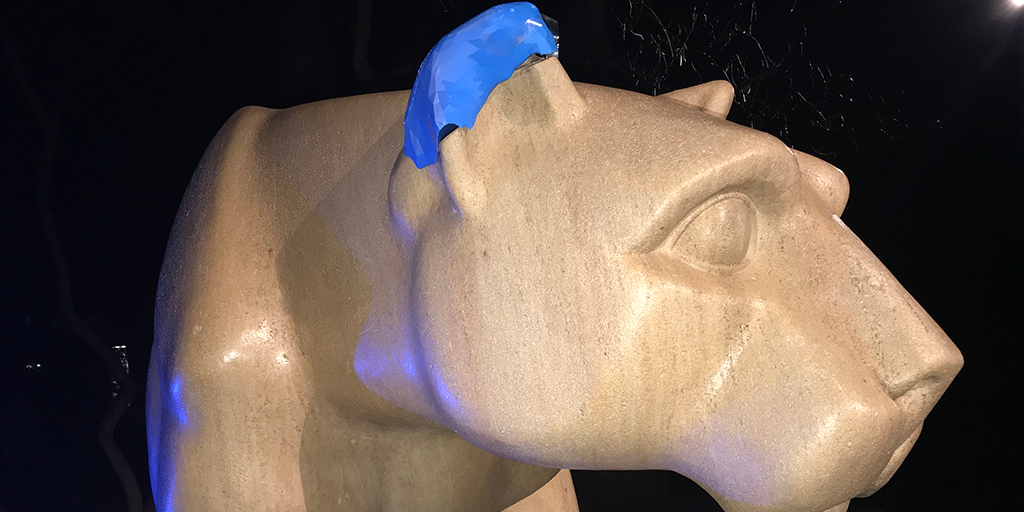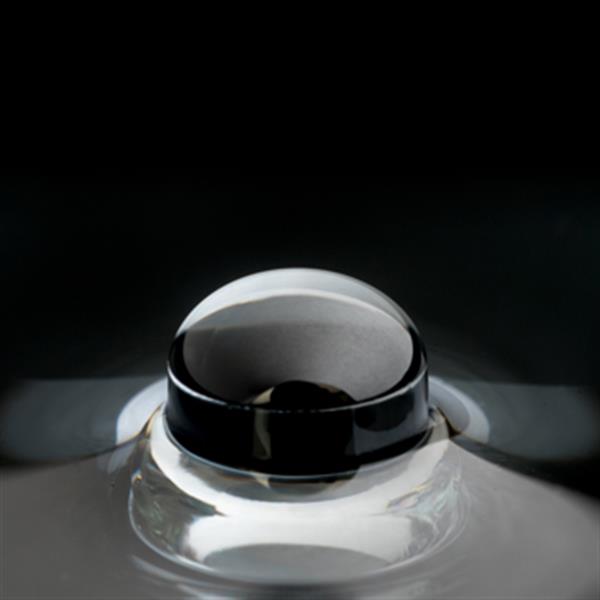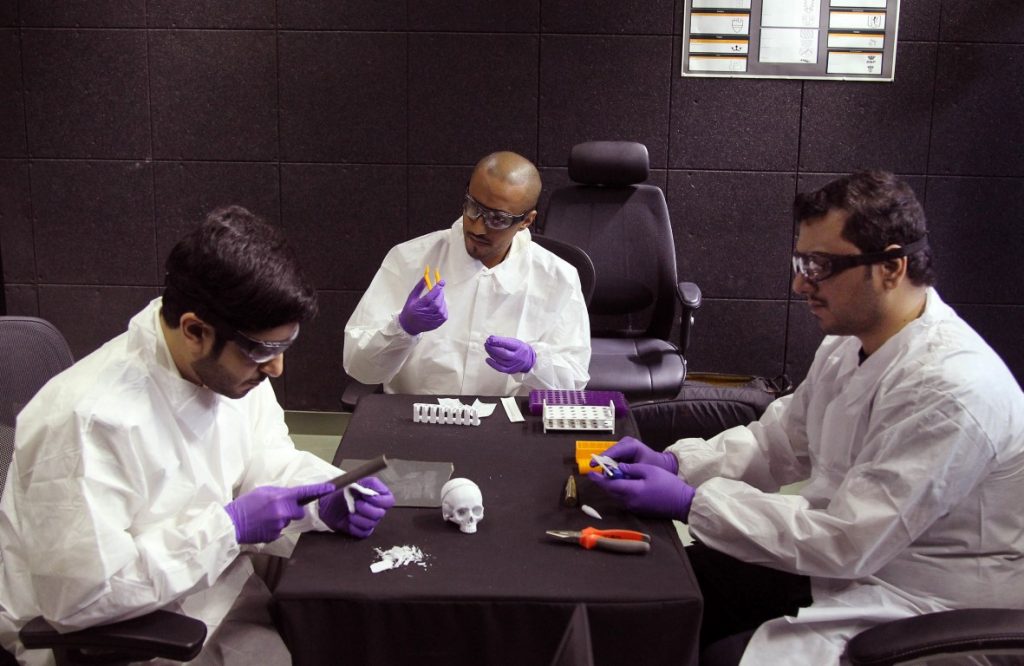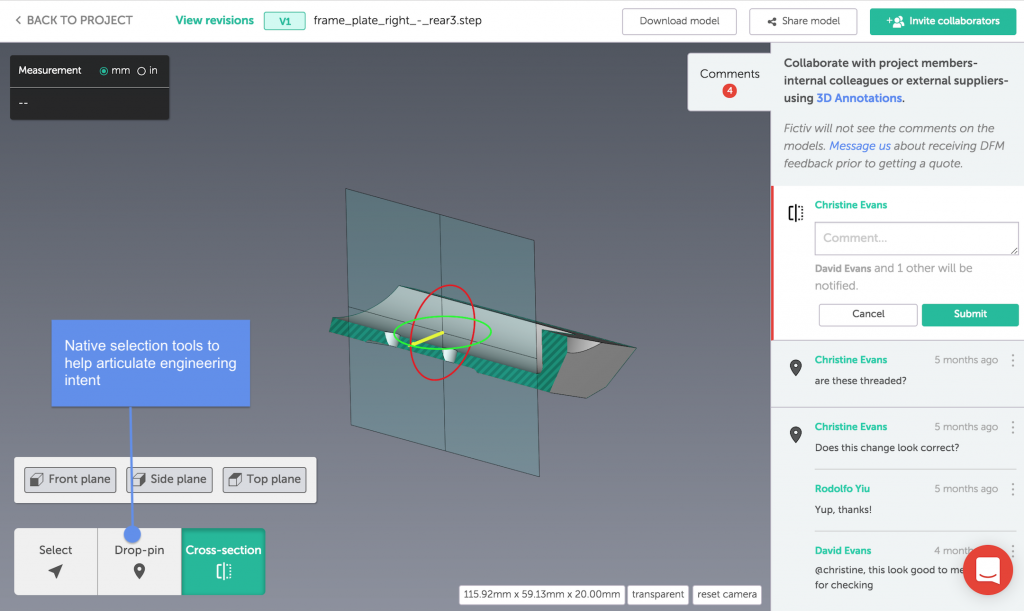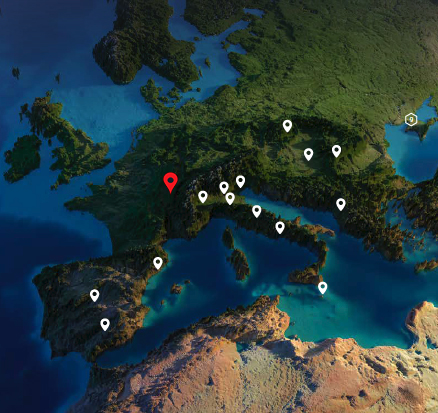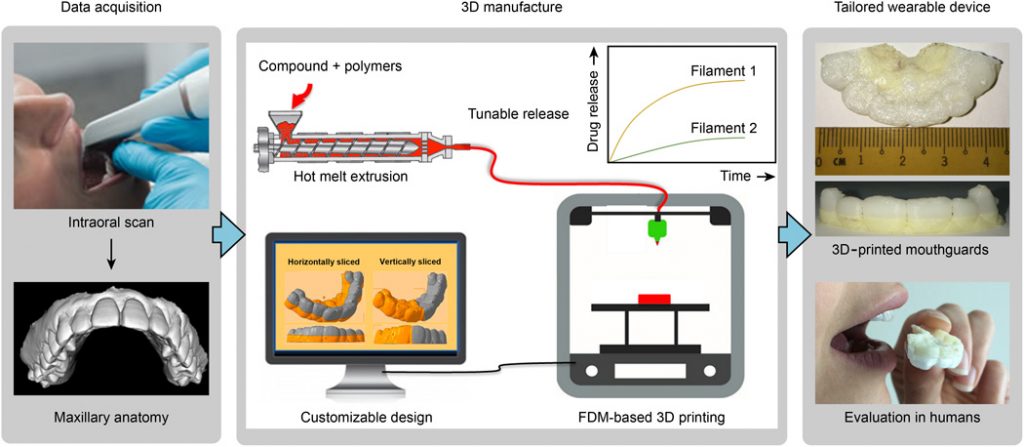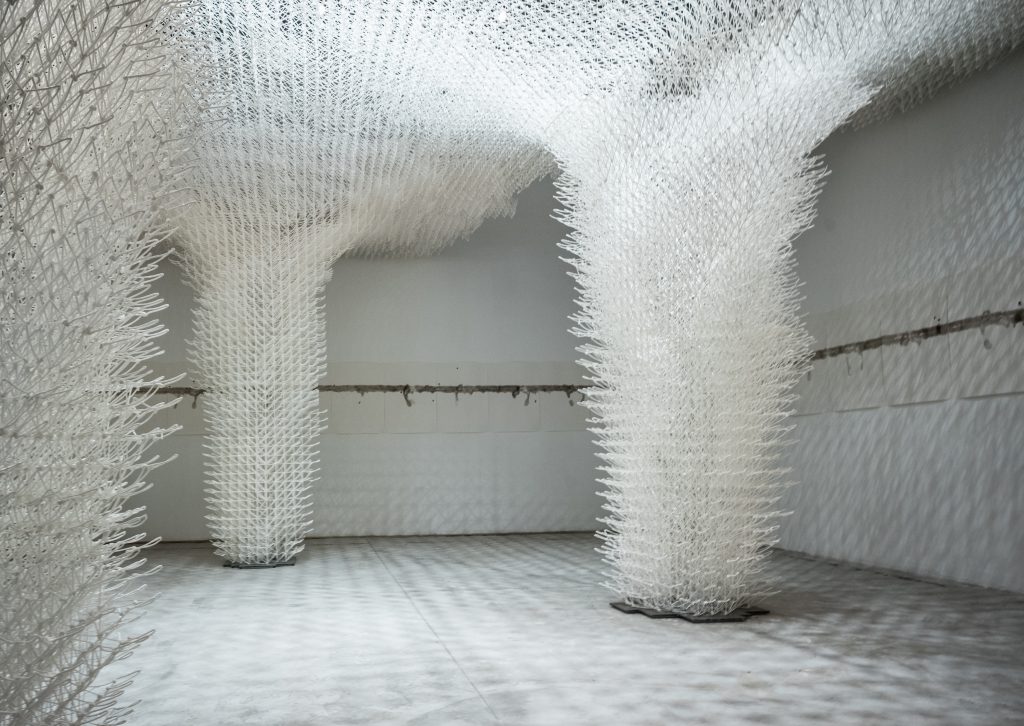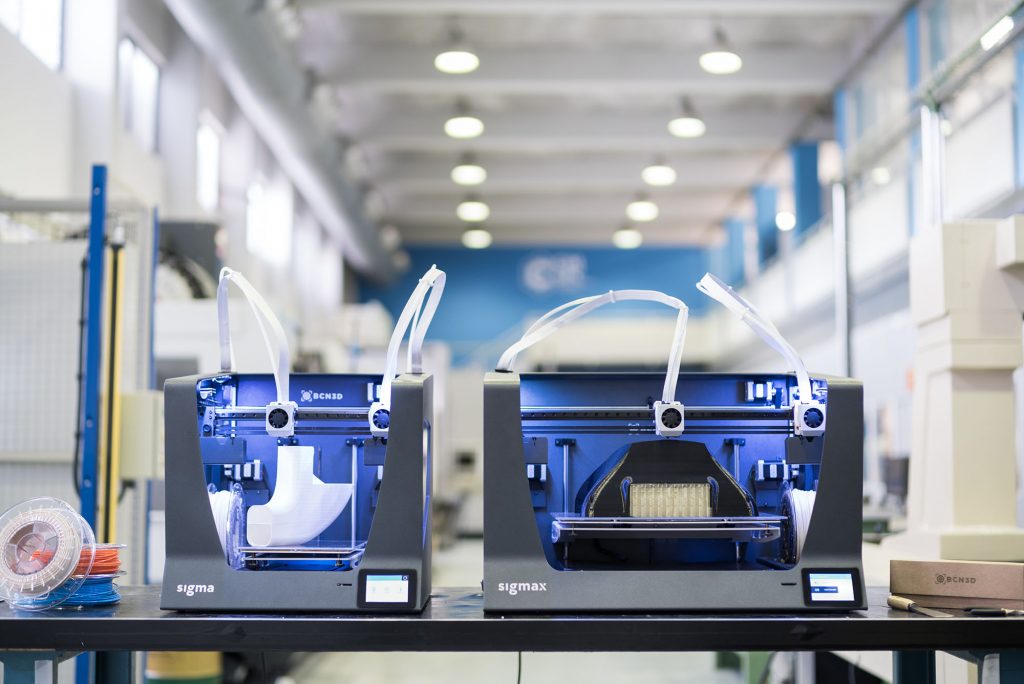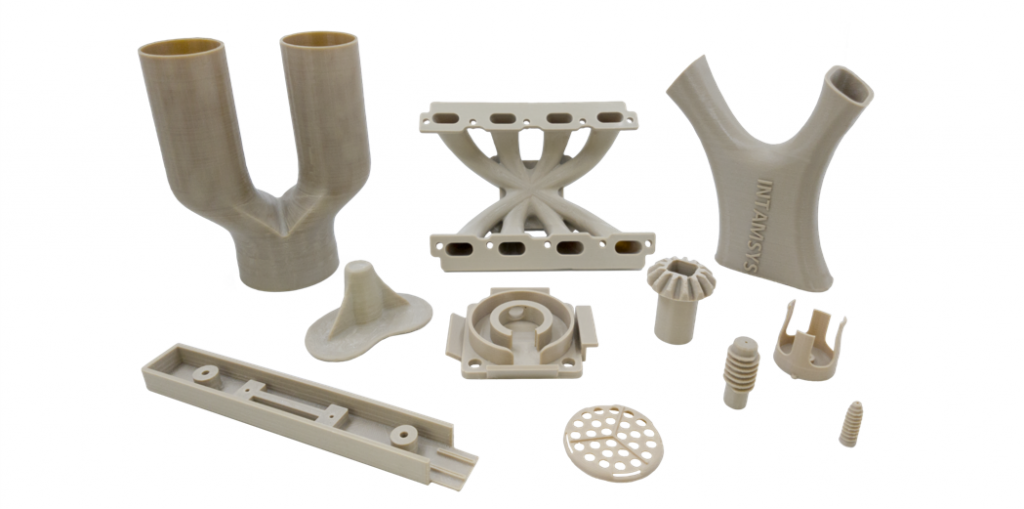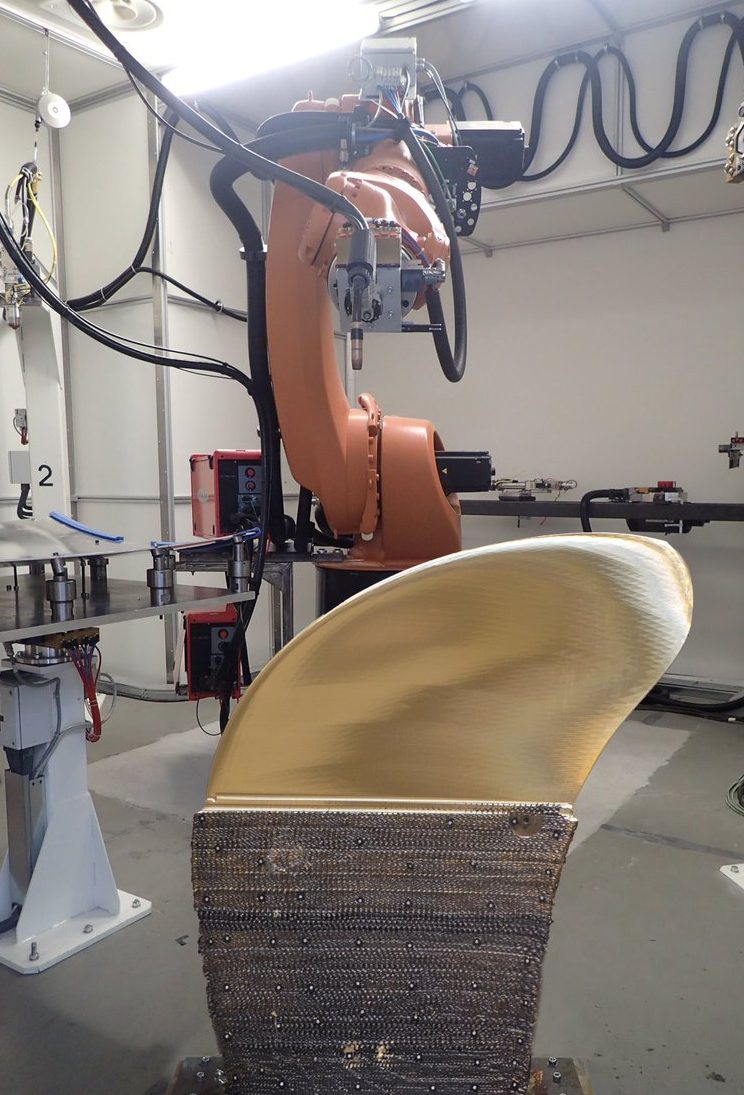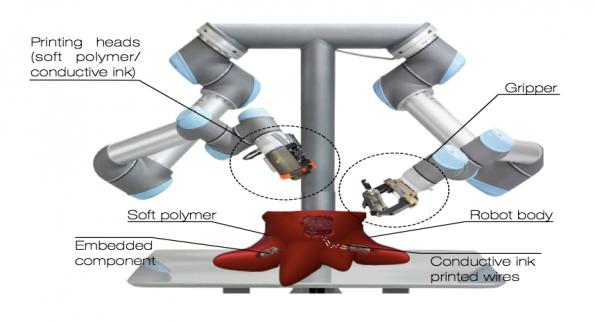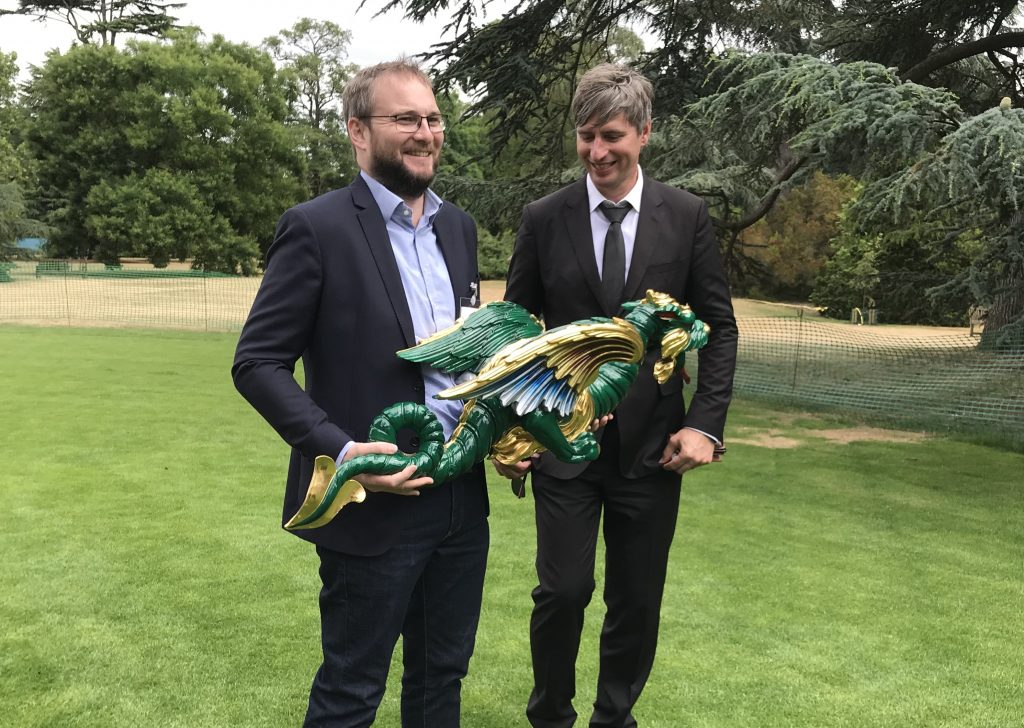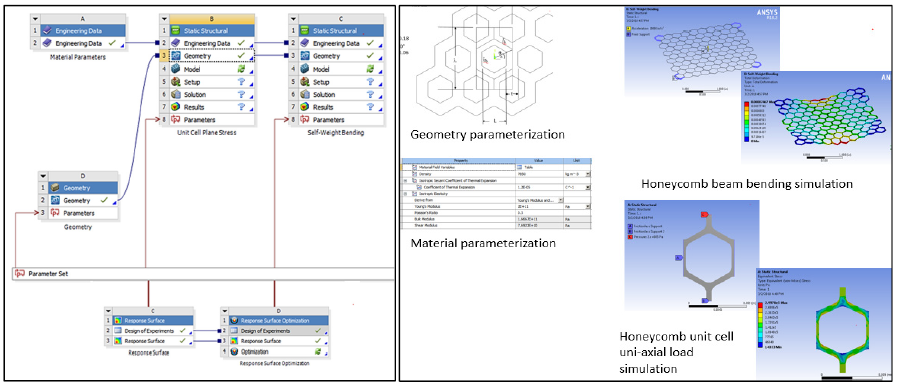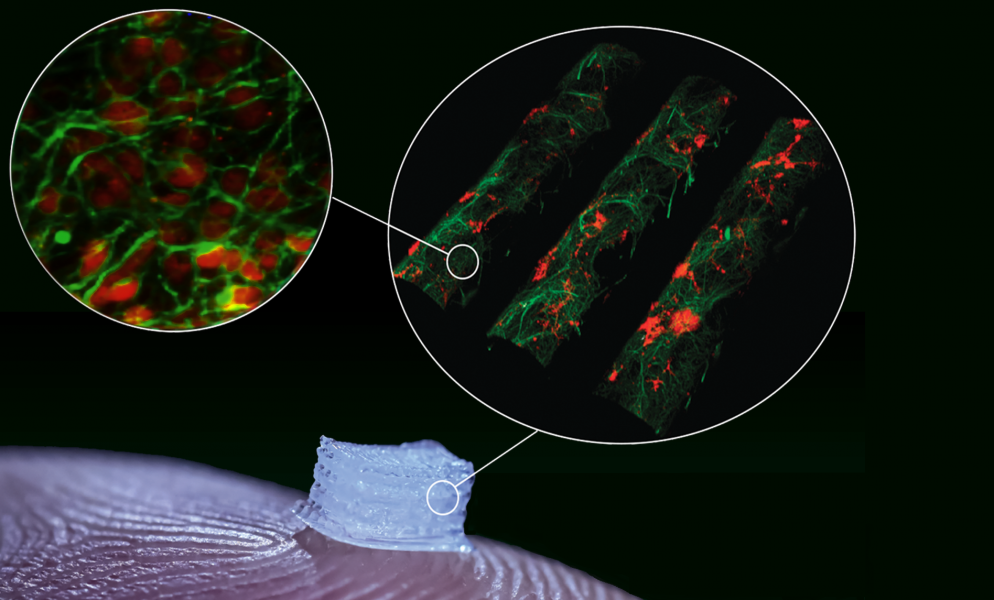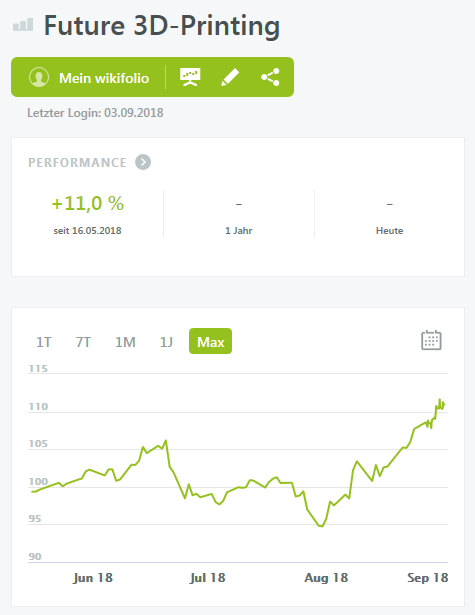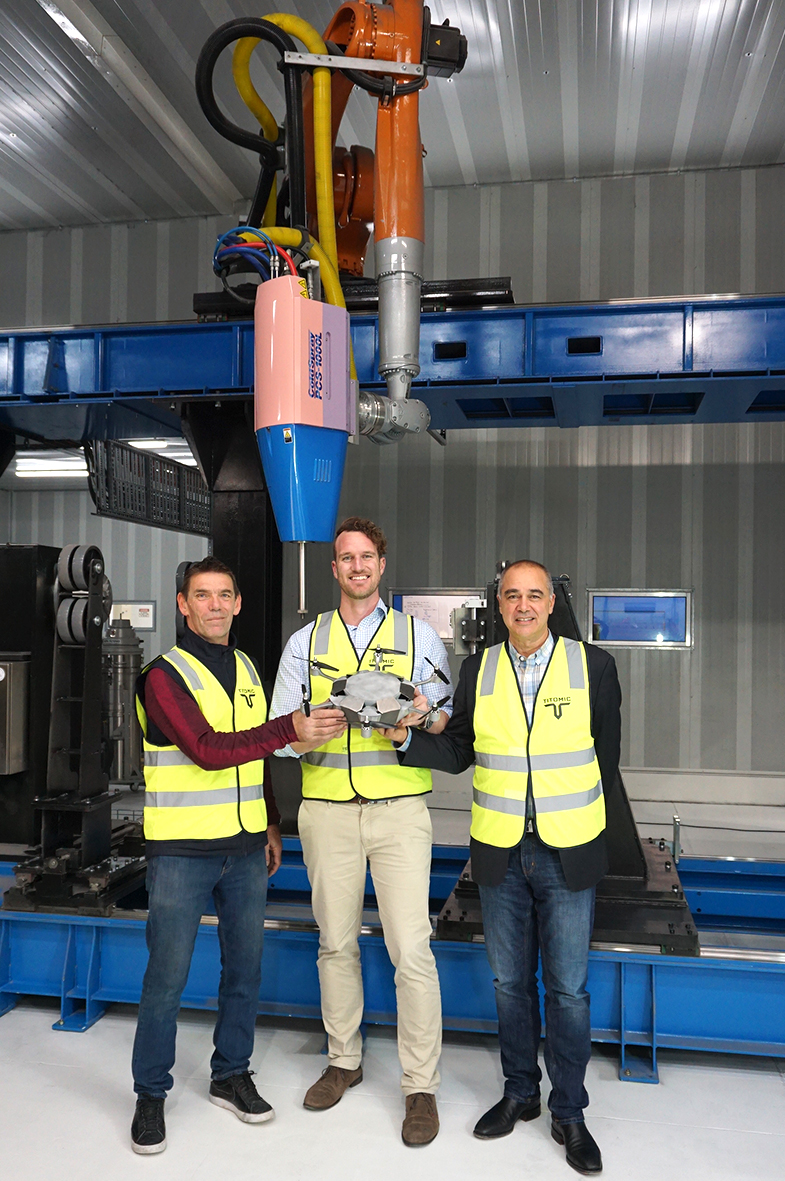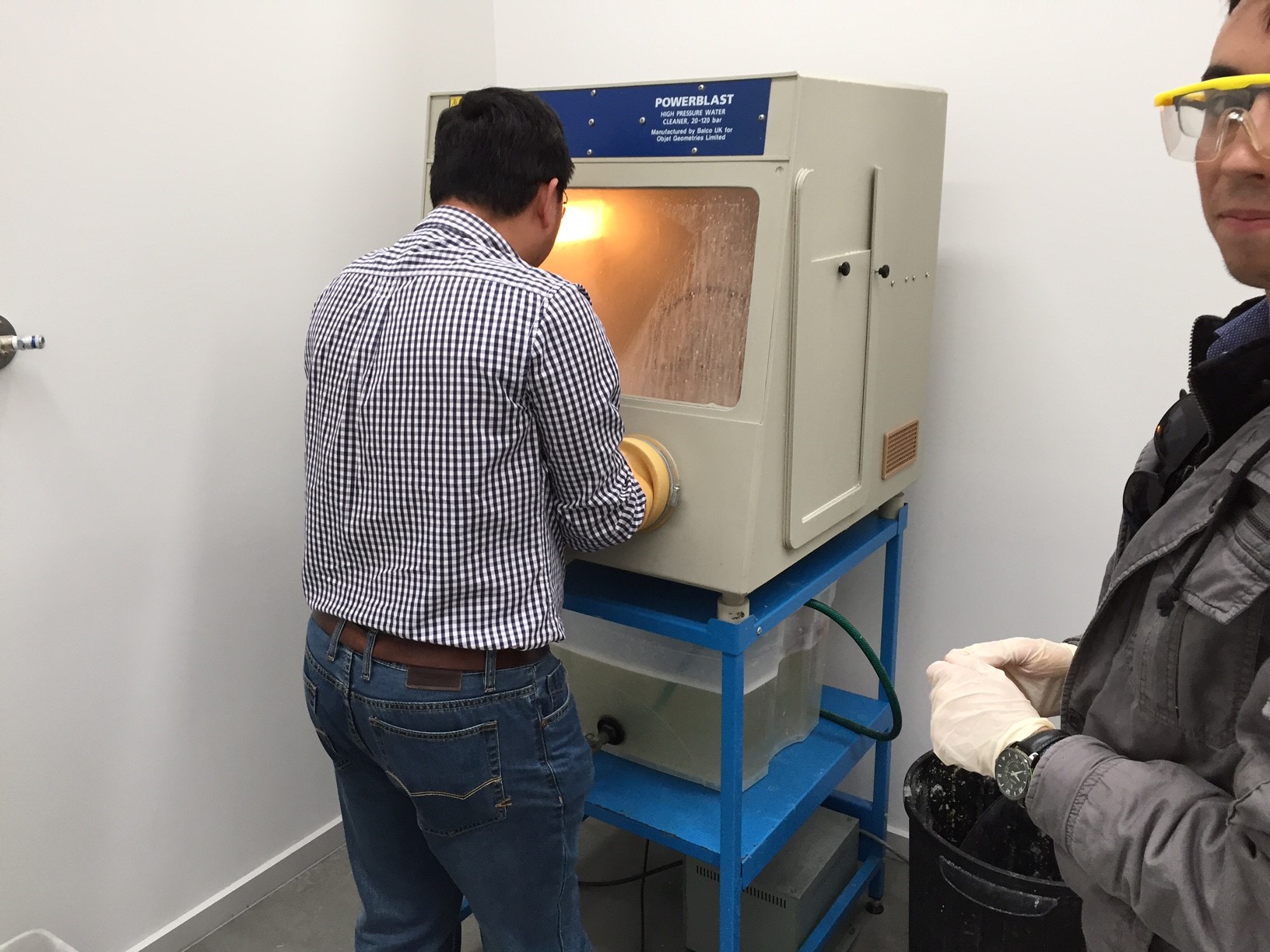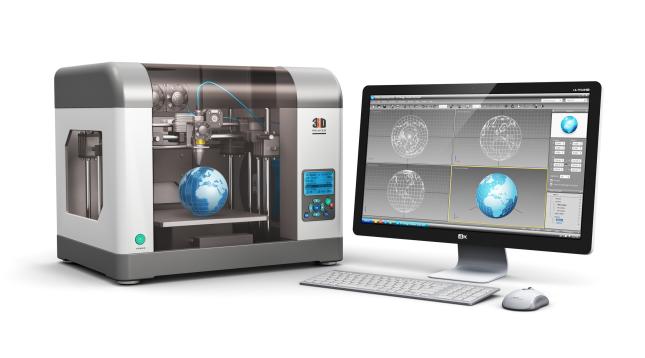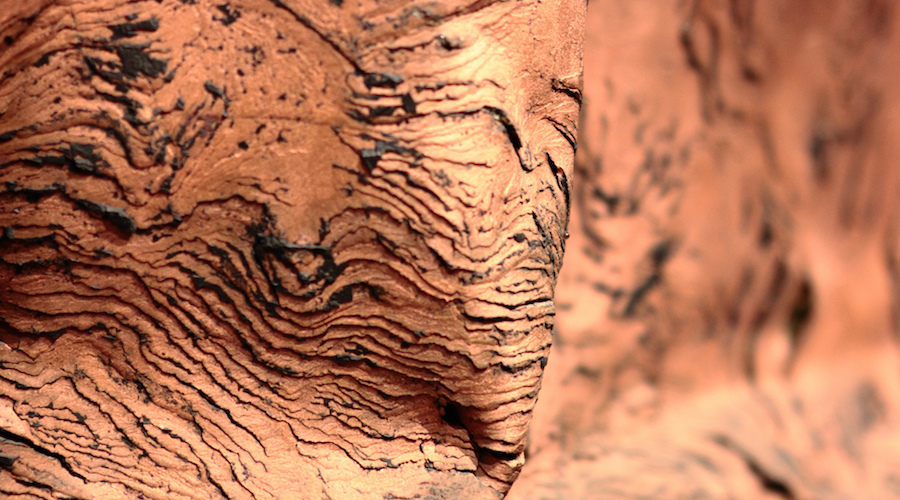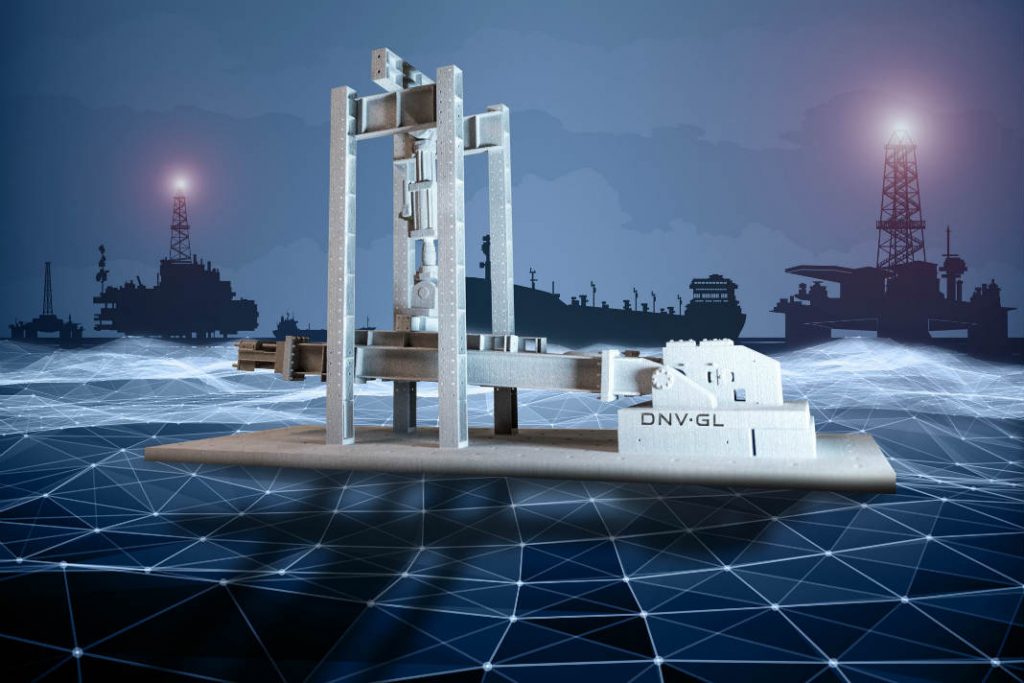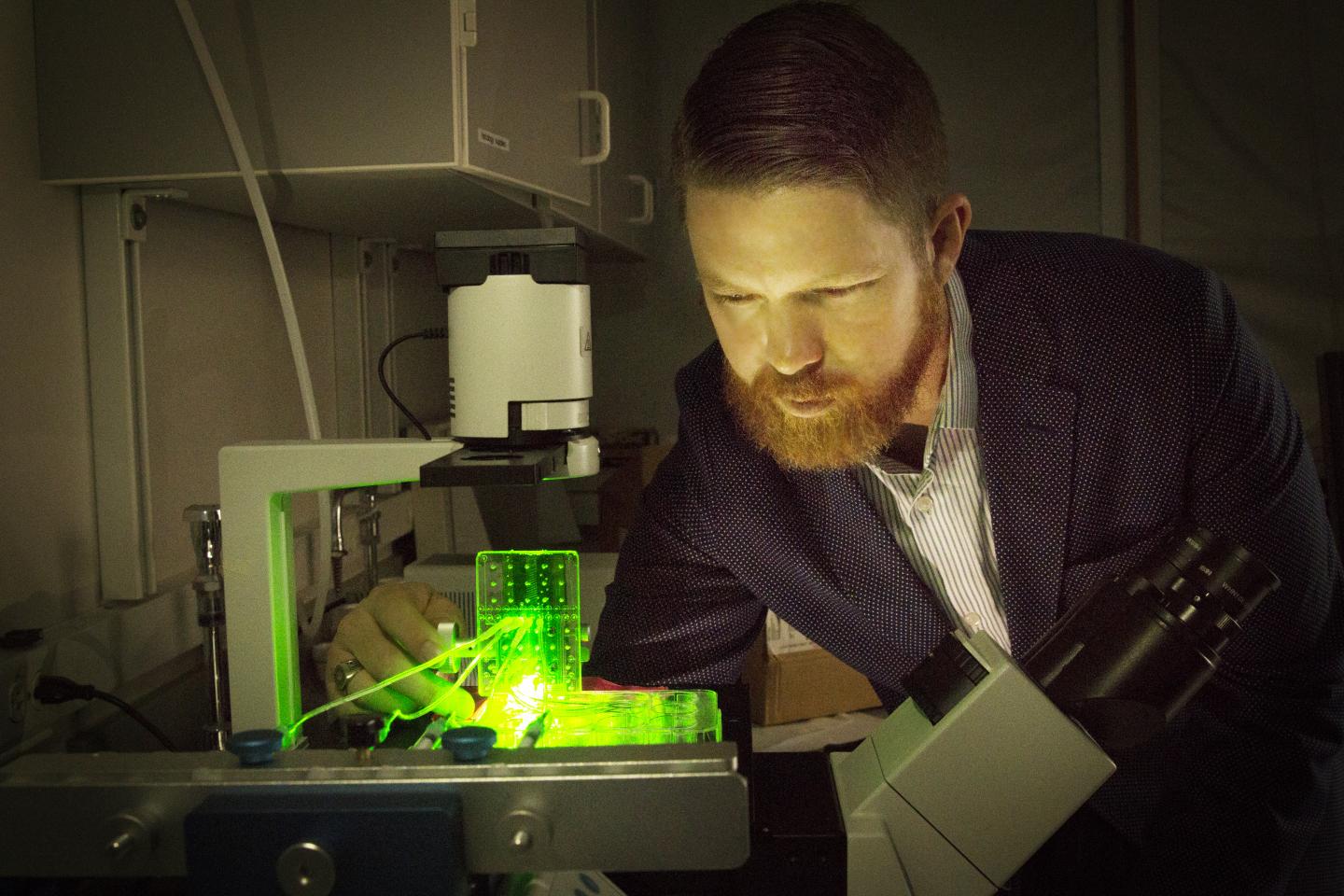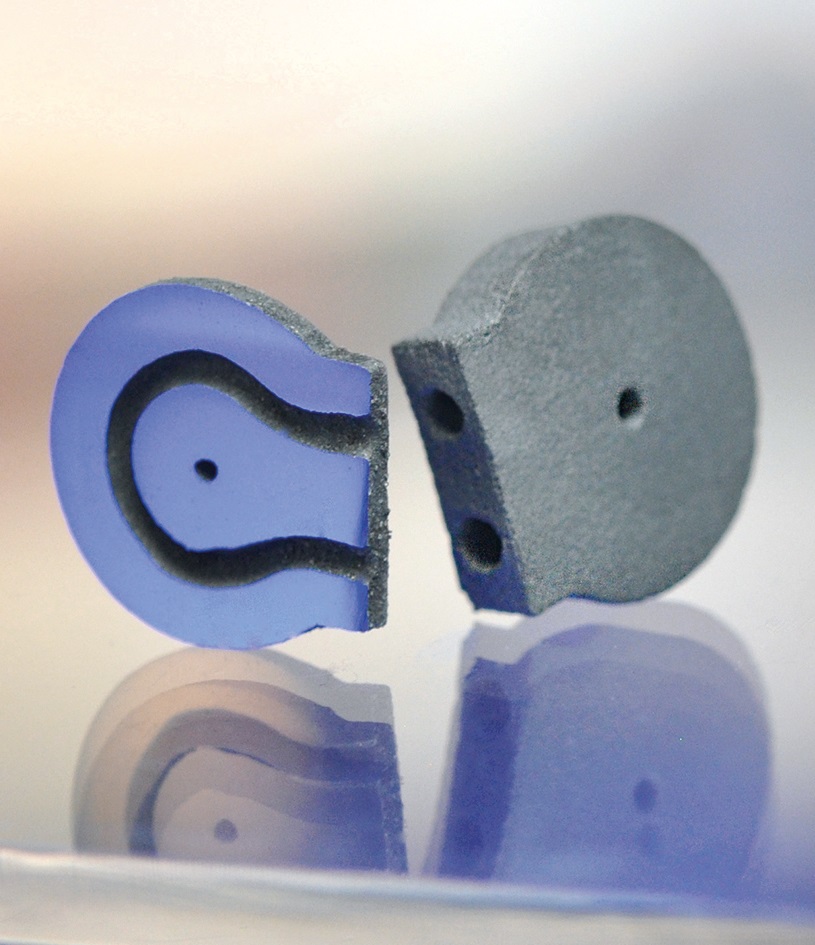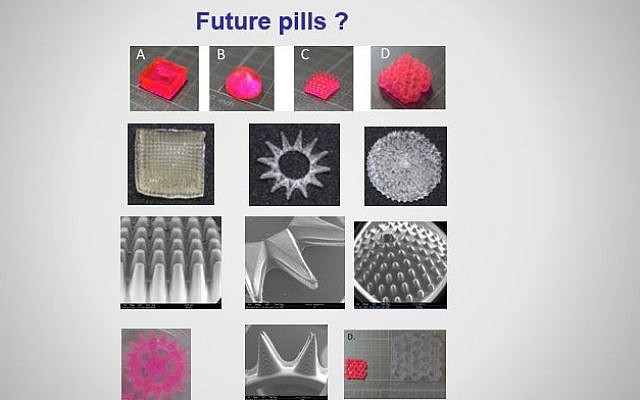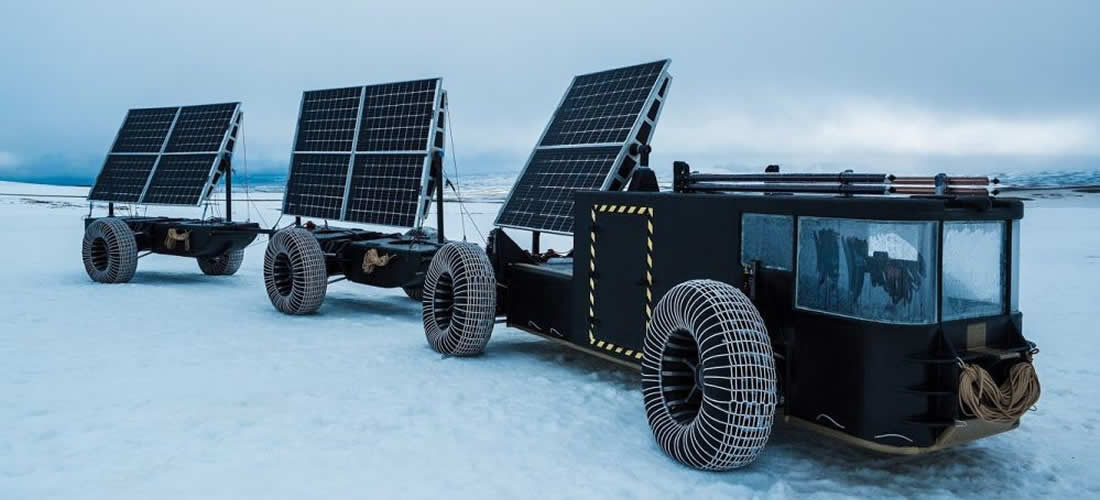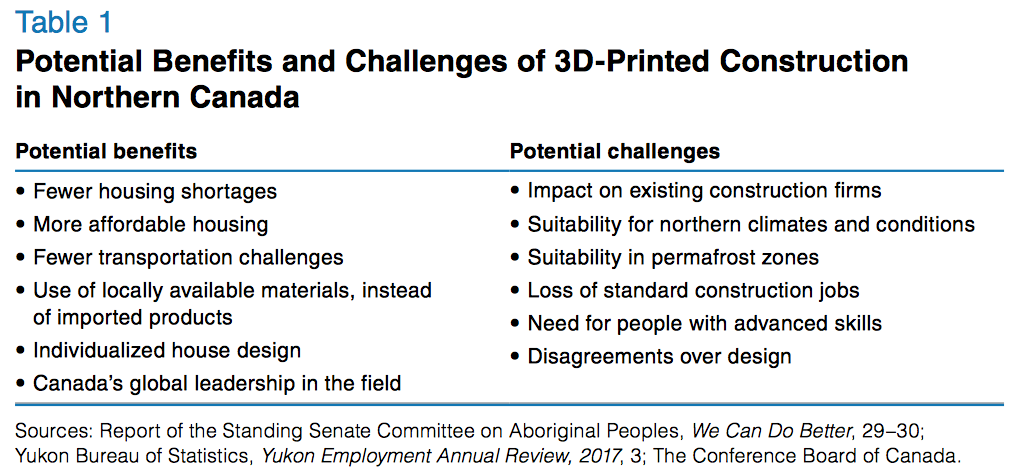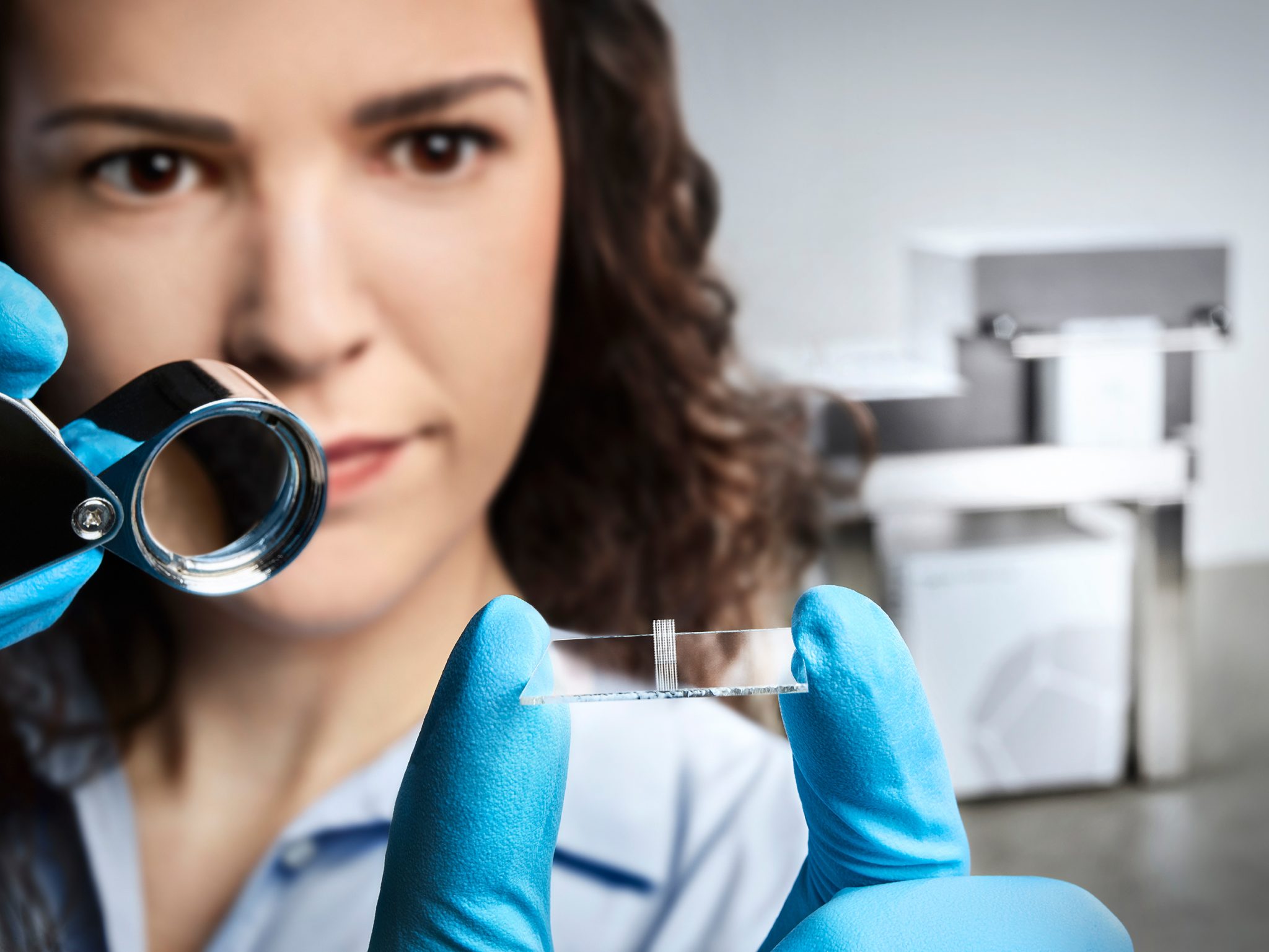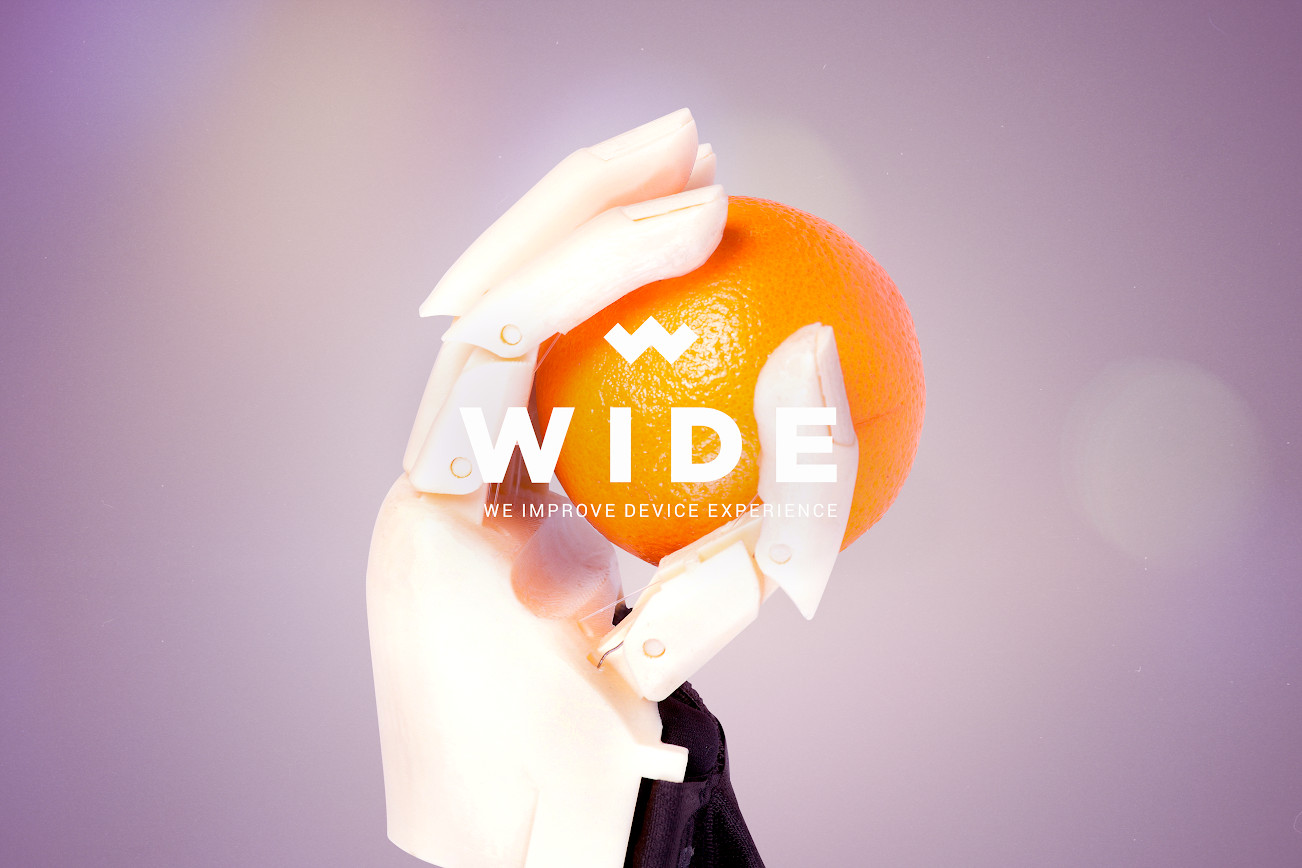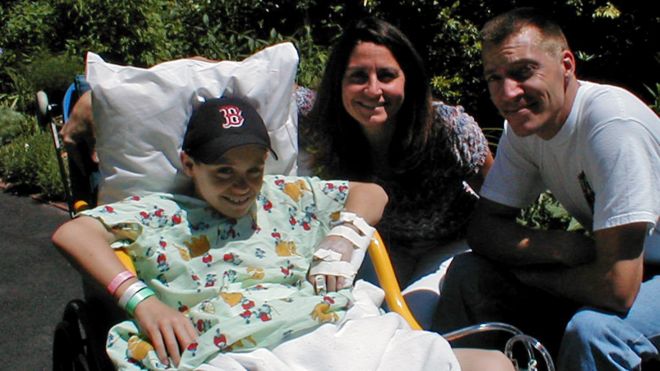3D Druck, allgemein - 500 Beiträge pro Seite
eröffnet am 14.03.15 15:42:54 von
neuester Beitrag 06.04.19 05:12:51 von
neuester Beitrag 06.04.19 05:12:51 von
Beiträge: 540
ID: 1.209.380
ID: 1.209.380
Aufrufe heute: 2
Gesamt: 14.310
Gesamt: 14.310
Aktive User: 0
Top-Diskussionen
| Titel | letzter Beitrag | Aufrufe |
|---|---|---|
| vor 1 Stunde | 5744 | |
| vor 1 Stunde | 5443 | |
| vor 1 Stunde | 4065 | |
| vor 1 Stunde | 3545 | |
| vor 1 Stunde | 2742 | |
| vor 1 Stunde | 2272 | |
| vor 1 Stunde | 1838 | |
| vor 1 Stunde | 1504 |
Meistdiskutierte Wertpapiere
| Platz | vorher | Wertpapier | Kurs | Perf. % | Anzahl | ||
|---|---|---|---|---|---|---|---|
| 1. | 1. | 18.157,53 | +1,23 | 216 | |||
| 2. | 2. | 145,62 | +2,51 | 95 | |||
| 3. | 19. | 0,1940 | +6,59 | 79 | |||
| 4. | 3. | 2.326,59 | -0,03 | 63 | |||
| 5. | 9. | 43,70 | -3,32 | 54 | |||
| 6. | 43. | 0,0313 | +95,63 | 42 | |||
| 7. | 17. | 4,7140 | +2,61 | 38 | |||
| 8. | 5. | 751,29 | +4,78 | 30 |
Umfrage: Ist der 3D Druck eine ernsthafte Branche, wird er zukünftig größeren Einfluss auf unser Leben haben?
Nehmen Sie teil und stimmen Sie ab:
24 Stimmen wurden bereits abgegeben.
- 1. Ja
- 2. Nein
- 3. werden wir sehen
- 4. wann können die endlich Hamburger machen?
- 83%
- 8%
- 4%
- 4%
hier kann alles zum 3D Druck als solches rein
im Prinzip weil ich es für wahrscheinlich halte dass der 3D Duck einen -immer- große(re)n/wichtige(re)n Anteil in unserem Leben, der Witschaft, und so weiterblabla, ausmachen wird
nicht nur im Positiven
soweit ich das sehe hat diese Fertigungsmethode 3, 4 "Dimensionen"
die je weiter sie ausgereitzt werden, desto unbequemer es für uns wird
kann also alles rein Richtung zur Branche an sich, diesem oder jener Firma, wo man Stärken und Schwächen sieht, was so alles in Entwicklung ist, wo es vielleicht hingeht
ne interessante Zahl fände ich auch -ähnlich der "Schuldenuhr"- wieviel Arbeitsplätze der Druck, schon, auf dem "Gewissen" hat, und wieviel das weiterhin werden
ffffffffffffffffffffffffffff
also von den Überlegungen ähnlich wie beim Graphene
Voxel8 'Offers Breakthrough in 3D Electronics
 Printing', the 'World’s 1st 3D Electronics Printer' - IT/VJ/NL - Jan15
Printing', the 'World’s 1st 3D Electronics Printer' - IT/VJ/NL - Jan15
www.psfk.com/2015/01/voxel8-offers-breakthrough-in-3d-electr…
www.innovationtoronto.com/2015/01/voxel8-offers-breakthrough…
www.nanalyze.com/2015/01/the-worlds-first-3d-electronics-pri…
"
- Voxel8 3D Electronic Printer -
We can already 3D print math aids, prosthetic jaws, fashion shoes and chairs…but when will we be able to print integrated electronics? According to the creators of Voxel8, late this year.
Voxel8 is the first 3D printer that allows makers to co-matrix (print together in the same batch) thermoplastics and conductive materials.
Printing basic electronics has been a reality for over a year, but the Voxel8 offers two improvements that position it as the 3D electronics printer that changed the game.
Voxel8 “Silver Ink” is 5,000 times as conductive as the next best printable conductor, conductive paste. It’s 20,000
times as conductive as the next best printable conductor, conductive paste. It’s 20,000 
 times as conductive as 3D conductive filament. Beyond that, where previous 3D printing of electronics required multiple stages, each for different materials, the Voxel8 allows whole-cloth printing of an entire device ready to work as soon as you add a power source.
times as conductive as 3D conductive filament. Beyond that, where previous 3D printing of electronics required multiple stages, each for different materials, the Voxel8 allows whole-cloth printing of an entire device ready to work as soon as you add a power source.
In theory, you could print any electronic device that fits inside the printer bed

 , and doesn’t require specialized materials. Voxel8 has made a bit of a show of flying their fully-printed quadcopters when demoing the device. ..."
, and doesn’t require specialized materials. Voxel8 has made a bit of a show of flying their fully-printed quadcopters when demoing the device. ..."
im Prinzip weil ich es für wahrscheinlich halte dass der 3D Duck einen -immer- große(re)n/wichtige(re)n Anteil in unserem Leben, der Witschaft, und so weiterblabla, ausmachen wird
nicht nur im Positiven
soweit ich das sehe hat diese Fertigungsmethode 3, 4 "Dimensionen"
die je weiter sie ausgereitzt werden, desto unbequemer es für uns wird
kann also alles rein Richtung zur Branche an sich, diesem oder jener Firma, wo man Stärken und Schwächen sieht, was so alles in Entwicklung ist, wo es vielleicht hingeht
ne interessante Zahl fände ich auch -ähnlich der "Schuldenuhr"- wieviel Arbeitsplätze der Druck, schon, auf dem "Gewissen" hat, und wieviel das weiterhin werden
ffffffffffffffffffffffffffff
also von den Überlegungen ähnlich wie beim Graphene
Voxel8 'Offers Breakthrough in 3D Electronics

 Printing', the 'World’s 1st 3D Electronics Printer' - IT/VJ/NL - Jan15
Printing', the 'World’s 1st 3D Electronics Printer' - IT/VJ/NL - Jan15www.psfk.com/2015/01/voxel8-offers-breakthrough-in-3d-electr…
www.innovationtoronto.com/2015/01/voxel8-offers-breakthrough…
www.nanalyze.com/2015/01/the-worlds-first-3d-electronics-pri…
"

- Voxel8 3D Electronic Printer -
We can already 3D print math aids, prosthetic jaws, fashion shoes and chairs…but when will we be able to print integrated electronics? According to the creators of Voxel8, late this year.
Voxel8 is the first 3D printer that allows makers to co-matrix (print together in the same batch) thermoplastics and conductive materials.
Printing basic electronics has been a reality for over a year, but the Voxel8 offers two improvements that position it as the 3D electronics printer that changed the game.
Voxel8 “Silver Ink” is 5,000
 times as conductive as the next best printable conductor, conductive paste. It’s 20,000
times as conductive as the next best printable conductor, conductive paste. It’s 20,000 
 times as conductive as 3D conductive filament. Beyond that, where previous 3D printing of electronics required multiple stages, each for different materials, the Voxel8 allows whole-cloth printing of an entire device ready to work as soon as you add a power source.
times as conductive as 3D conductive filament. Beyond that, where previous 3D printing of electronics required multiple stages, each for different materials, the Voxel8 allows whole-cloth printing of an entire device ready to work as soon as you add a power source.In theory, you could print any electronic device that fits inside the printer bed


 , and doesn’t require specialized materials. Voxel8 has made a bit of a show of flying their fully-printed quadcopters when demoing the device. ..."
, and doesn’t require specialized materials. Voxel8 has made a bit of a show of flying their fully-printed quadcopters when demoing the device. ..."
Daß die Aktien in diesem Bereich nicht in den Himmel wachsen, sieht man an der Aktie der Alphaform AG aus Deutschland. Auch die Aktie der Voxeljet AG ähnelt einem Trauerspiel.
UC Berkeley Unveils 1st-of-its-Kind, Architectural-Scale, 3D Printed Cement Structure, A University of California, Berkeley, research team led by Ronald Rael, an associate professor of architecture, will unveil today(Fri, Mar 6) the 1st +largest powder-based 3-D-printed cement structure, built to date. The debut of this 'groundbreaking project' is a demonstration of the architectural potential of 3-D printing - IT/UCB/SRI/3DS/SCG/EO/ER, CALIFORNIA - Mar 12, 2015
mcocoma@berkeley.edu
(510) 642-7722
http://ced.berkeley.edu/events-media/news/uc-berkeley-unveil…
www.innovationtoronto.com/2015/03/uc-berkeley-unveils-first-…
"
- DETAIL VIEW OF FREE STANDING BLOOM PAVILLION SHOWING CEMENT MATERIAL -
A University of California, Berkeley, research team led by Ronald Rael, an associate professor of architecture, will unveil today (Friday, March 6) the first and largest powder-based 3-D-printed cement structure built to date.
The debut of this groundbreaking project is a demonstration of the architectural potential of 3-D printing. It will close the fifth annual Berkeley Circus, which celebrates the research and accomplishments of the College of Environmental Design (CED) community.
The freestanding pavilion, “Bloom,” is 9 feet high and has a footprint that measures approximately 12 feet by 12 feet. It is composed of 840 customized blocks that were 3-D-printed using a new type of iron oxide-free Portland cement polymer formulation developed by Rael.
Bloom is a precise 3-D-printed cement polymer structure that overcomes many of the previous limitations of 3-D-printed architecture. Such limitations include the speed and cost of production as well as aesthetic and practical applications.
Rael designed and led the yearlong research project with funding and collaborative support from the Siam Research and Innovation Co. Ltd. (SRI), the research and development division of Siam Cement Group (SCG). SCG, the largest cement company in Thailand, provided the Portland cement.
Additional support and materials were provided by Emerging Objects, a startup company co-founded by Rael and Virginia San Fratello, and Entropy Resins.
Rael’s team consists of four CED graduate students: Kent Wilson, Alex Schofield, Sofia Anastassiou and Yina Dong
Fabricated using 11 printers made by 3D Systems and located in the College of Environmental Design printFARM (print Facility for Architecture, Research, and Materials), and at Emerging Objects, each enumerated brick is unique, with a variegated pattern that allows for varying amounts of light to pass through. Assembled, the bricks create an overall decorative pattern reminiscent of traditional Thai floral motifs along the structure’s undulating wall.
“While there are a handful of people currently experimenting with printing 3-D architecture, only a few are looking at 3-D printing with cement-based materials, and all are extruding wet cement through a nozzle to produce rough panels,” Rael said. “We are mixing polymers with cement and fibers to produce very strong, lightweight, high-resolution parts on readily available equipment; It’s a very precise, yet frugal technique. This project is the genesis of a realistic
of a realistic 
 , marketable process with the potential to transform the way we think about
, marketable process with the potential to transform the way we think about 

 building a structure.” "
building a structure.” "
mcocoma@berkeley.edu
(510) 642-7722
http://ced.berkeley.edu/events-media/news/uc-berkeley-unveil…
www.innovationtoronto.com/2015/03/uc-berkeley-unveils-first-…
"

- DETAIL VIEW OF FREE STANDING BLOOM PAVILLION SHOWING CEMENT MATERIAL -
A University of California, Berkeley, research team led by Ronald Rael, an associate professor of architecture, will unveil today (Friday, March 6) the first and largest powder-based 3-D-printed cement structure built to date.
The debut of this groundbreaking project is a demonstration of the architectural potential of 3-D printing. It will close the fifth annual Berkeley Circus, which celebrates the research and accomplishments of the College of Environmental Design (CED) community.
The freestanding pavilion, “Bloom,” is 9 feet high and has a footprint that measures approximately 12 feet by 12 feet. It is composed of 840 customized blocks that were 3-D-printed using a new type of iron oxide-free Portland cement polymer formulation developed by Rael.
Bloom is a precise 3-D-printed cement polymer structure that overcomes many of the previous limitations of 3-D-printed architecture. Such limitations include the speed and cost of production as well as aesthetic and practical applications.
Rael designed and led the yearlong research project with funding and collaborative support from the Siam Research and Innovation Co. Ltd. (SRI), the research and development division of Siam Cement Group (SCG). SCG, the largest cement company in Thailand, provided the Portland cement.
Additional support and materials were provided by Emerging Objects, a startup company co-founded by Rael and Virginia San Fratello, and Entropy Resins.
Rael’s team consists of four CED graduate students: Kent Wilson, Alex Schofield, Sofia Anastassiou and Yina Dong
Fabricated using 11 printers made by 3D Systems and located in the College of Environmental Design printFARM (print Facility for Architecture, Research, and Materials), and at Emerging Objects, each enumerated brick is unique, with a variegated pattern that allows for varying amounts of light to pass through. Assembled, the bricks create an overall decorative pattern reminiscent of traditional Thai floral motifs along the structure’s undulating wall.
“While there are a handful of people currently experimenting with printing 3-D architecture, only a few are looking at 3-D printing with cement-based materials, and all are extruding wet cement through a nozzle to produce rough panels,” Rael said. “We are mixing polymers with cement and fibers to produce very strong, lightweight, high-resolution parts on readily available equipment; It’s a very precise, yet frugal technique. This project is the genesis
 of a realistic
of a realistic 
 , marketable process with the potential to transform the way we think about
, marketable process with the potential to transform the way we think about 

 building a structure.” "
building a structure.” "
Ich finde diese Drucker wahnsinnig interessant, bin gespannt, ob in ein paar Jahren jeder solch einen Druckler bei sich zu hause stehen hat ;-)
3D Printing Industry Report - SC - Mar 16, 2015
- Sean Peasgood -
Sean@SophicCapital.com
416.565.2805
http://sophiccapital.com/wp-content/uploads/2015/03/Download…
- Sean Peasgood -
Sean@SophicCapital.com
416.565.2805
http://sophiccapital.com/wp-content/uploads/2015/03/Download…
3D Printing/Additive Manufacturing -A 2014 Horizonwatching Trend Summary Report - IBM, Market Development & Insights - Apr 19, 2014
- Bill Chamberlin, 'Principal Emerging Trends Analyst, @IBM' -
- ABOUT 3D PRINTING: Also called Additive Manufacturing, 3D printing has been hailed as a transformative manufacturing technology, 3D printing involves fabrication of physical objects, by depositing a material using a nozzle, print head, or any another printer technology. Though initially used for prototyping of products, 3D printing has evolved, +is currently capable of customized short-run manufacturing of industrial products, dental implants, +medical devices.
ABOUT THIS TREND REPORT: This report provide information about the 3D Printing trend, along with links to additional resources.
Table of Contents
1.Introduction to 3D Printing
2.Marketplace Opportunities, +Industry Applications
3.Materials & Technologies
4.Vendor Ecosystem
5.Drivers, Challenges, Implications, Trends to Watch
6.Summary / Recommendations
7.Appendix: Resources for further reading & understanding ...-
http://de.slideshare.net/HorizonWatching/s12-3-d-printing-20…
- Bill Chamberlin, 'Principal Emerging Trends Analyst, @IBM' -
- ABOUT 3D PRINTING: Also called Additive Manufacturing, 3D printing has been hailed as a transformative manufacturing technology, 3D printing involves fabrication of physical objects, by depositing a material using a nozzle, print head, or any another printer technology. Though initially used for prototyping of products, 3D printing has evolved, +is currently capable of customized short-run manufacturing of industrial products, dental implants, +medical devices.
ABOUT THIS TREND REPORT: This report provide information about the 3D Printing trend, along with links to additional resources.
Table of Contents
1.Introduction to 3D Printing
2.Marketplace Opportunities, +Industry Applications
3.Materials & Technologies
4.Vendor Ecosystem
5.Drivers, Challenges, Implications, Trends to Watch
6.Summary / Recommendations
7.Appendix: Resources for further reading & understanding ...-
http://de.slideshare.net/HorizonWatching/s12-3-d-printing-20…
'World Record, in Nano 3D Printing Technology' - NW/T - Mar 9, 2015
www.nanowerk.com/nanotechnology-news/newsid=39311.php
"For the first time, the nano printer developed by TETRA prints three-dimensional objects on nano scale with dimensions of centimeters by two-photon-polymerization (2PP).
TETRA's new approach in machine design breaks the previously existing limit of a few millimeters height of monolithic 2PP structures. Thus dimensions up to three times three centimeter are possible. This is current world record!
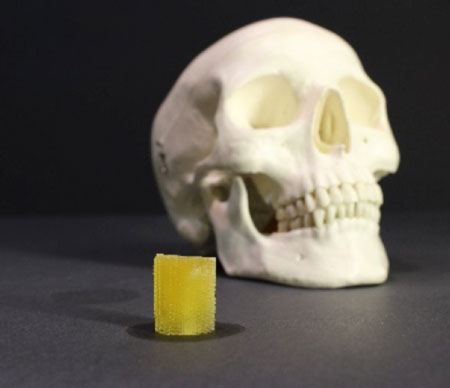
- 2PP-Scaffold for bone cell cultivating. -
Two-Photon-Polymerization is a lithographic process in which photo-sensitive, polymerizable, liquid materials (e.g. hydrogels) are cross-linked by an ultra-short-pulse-laser. The material cures in the focal area of the laser beam.
Due to this technology, the resolution of the structures can be lower than 100 nm. The structures are used for example in medical technologies and tissue engineering.
Visit TETRA: http://www.tetra-ilmenau.de/
Source: TETRA "
www.nanowerk.com/nanotechnology-news/newsid=39311.php
"For the first time, the nano printer developed by TETRA prints three-dimensional objects on nano scale with dimensions of centimeters by two-photon-polymerization (2PP).
TETRA's new approach in machine design breaks the previously existing limit of a few millimeters height of monolithic 2PP structures. Thus dimensions up to three times three centimeter are possible. This is current world record!

- 2PP-Scaffold for bone cell cultivating. -
Two-Photon-Polymerization is a lithographic process in which photo-sensitive, polymerizable, liquid materials (e.g. hydrogels) are cross-linked by an ultra-short-pulse-laser. The material cures in the focal area of the laser beam.
Due to this technology, the resolution of the structures can be lower than 100 nm. The structures are used for example in medical technologies and tissue engineering.
Visit TETRA: http://www.tetra-ilmenau.de/
Source: TETRA "
Antwort auf Beitrag Nr.: 49.346.783 von Popeye82 am 17.03.15 01:00:19
'The Inside Story, from the Inside 3D Printing +3D Printshow Conferences', 2nd 3D Printing report - SC - Apr 23, 2015
Sean@SophicCapital.com
416.565.2805
http://sophiccapital.com/wp-content/uploads/2015/04/Download…
http://sophiccapital.com/the-inside-story-from-the-inside-3d…
'The Inside Story, from the Inside 3D Printing +3D Printshow Conferences', 2nd 3D Printing report - SC - Apr 23, 2015
Sean@SophicCapital.com
416.565.2805
http://sophiccapital.com/wp-content/uploads/2015/04/Download…
http://sophiccapital.com/the-inside-story-from-the-inside-3d…
Thank 3D Printing, for a Painless Flu Shot, Rice University undergraduates develop a quick, +easy, way to numb the skin, making shots virtually pain-free - IT/RU - Apr , 2015
www.psfk.com/2015/04/3d-printing-painless-flu-shot-comfortab…
www.innovationtoronto.com/2015/04/thank-3d-printing-for-a-pa…
"
- via PSFK.com -
Rice University undergraduates develop a quick and easy way to numb the skin, making shots virtually pain-free
Getting the flu shot is one of the many rituals that comes once a year, inoculating the population against a potentially life-threatening disease. However, for some, especially children, the experience can be frightening and painful. However, that may soon change thanks to a Rice University students’s 3D-printed invention.
The Comfortably Numb is a simple device that numbs the skin to decrease the sensation of the injection. The team of three freshmen, include Andy Zhang, Mika Hua, and Greg Allison, developed this easy-to-produce mechanism to create a portable and ready to use ice pack. The small device is composed of a 3D printed cylinder containing two chambers, one with water and the other with ammonium nitrate, and a metal plate attached at one end. When the device is activated by twisting the top, the two chambers open and the chemical reaction that occurs cools the metal plate, just like a cold pack.
From there, a physician or other medical worker places the plate against the skin to numb the are and then inject the vaccine.
While ice packs serve the same purpose and are more readily available, the Comfortably Numb is just the beginning of a bigger project. Eventually, the team hopes to develop a device that will numb and inject with one go, making vaccinations, shots, and injections of any kind painless and quick. After all, as Allison says in a statement released by Rice University, they are still just freshman engineering students: ..."
www.psfk.com/2015/04/3d-printing-painless-flu-shot-comfortab…
www.innovationtoronto.com/2015/04/thank-3d-printing-for-a-pa…
"

- via PSFK.com -
Rice University undergraduates develop a quick and easy way to numb the skin, making shots virtually pain-free
Getting the flu shot is one of the many rituals that comes once a year, inoculating the population against a potentially life-threatening disease. However, for some, especially children, the experience can be frightening and painful. However, that may soon change thanks to a Rice University students’s 3D-printed invention.
The Comfortably Numb is a simple device that numbs the skin to decrease the sensation of the injection. The team of three freshmen, include Andy Zhang, Mika Hua, and Greg Allison, developed this easy-to-produce mechanism to create a portable and ready to use ice pack. The small device is composed of a 3D printed cylinder containing two chambers, one with water and the other with ammonium nitrate, and a metal plate attached at one end. When the device is activated by twisting the top, the two chambers open and the chemical reaction that occurs cools the metal plate, just like a cold pack.
From there, a physician or other medical worker places the plate against the skin to numb the are and then inject the vaccine.
While ice packs serve the same purpose and are more readily available, the Comfortably Numb is just the beginning of a bigger project. Eventually, the team hopes to develop a device that will numb and inject with one go, making vaccinations, shots, and injections of any kind painless and quick. After all, as Allison says in a statement released by Rice University, they are still just freshman engineering students: ..."
4D Printing, to Rewrite Book on Cool Tech, Four-dimensional printing is unfolding as technology that takes 3D printing to an entirely new level - IT/ACES/UoW, WOLLONGONG - Apr 22, 2015
nfoxon@uow.edu.au
+61 2 4221 3239
http://media.uow.edu.au/releases/UOW191978.html?ssSourceSite…
www.innovationtoronto.com/2015/04/4d-printing-to-rewrite-boo…
www.electromaterials.edu.au
"
- Another dimension: Professor Marc in het Panhuis (left) and PhD student Shannon Bakarich are building objects using 4D printing, where time is the fourth dimension. -
Four-dimensional printing is unfolding as technology that takes 3D printing to an entirely new level.
The fourth dimension is time, shape shifting in fact, and the ARC Centre of Excellence for Electromaterials Science (ACES) at the University of Wollongong (UOW) is helping to set the pace in the next revolution in additive manufacturing.
Just as the extraordinary capabilities of 3D printing have begun to infiltrate industry and the family home, researchers have started to develop 3D printed materials that morph into new structures, post production, under the influence of external stimuli such as water or heat – hence the name, 4D printing.
So, as in 3D printing, a structure is built up layer by layer into the desired shape, but these new materials are able to transform themselves from one shape into another, much like a child’s Transformer toy.
This ground-breaking science promises advancement in myriad fields – medicine, construction, automation and robotics to name a few.
ACES researchers have turned their attention to the medical field of soft robotics, manufacturing a valve that actuates in response to its surrounding water’s temperature.
ACES Professor Marc in het Panhuis said it was the cleverness of the valve’s creation that was remarkable.
“The cool thing about it is, is it’s a working functioning device that you just pick up from the printer,” he said. “There’s no other assembly required.”
The materials scientist said the valve, a 3D printed structure, possessed actuators that are activated solely by water.
“So it’s an autonomous valve, there’s no input necessary other than water; it closes itself when it detects hot water,” he said. ..."
nfoxon@uow.edu.au
+61 2 4221 3239
http://media.uow.edu.au/releases/UOW191978.html?ssSourceSite…
www.innovationtoronto.com/2015/04/4d-printing-to-rewrite-boo…
www.electromaterials.edu.au
"

- Another dimension: Professor Marc in het Panhuis (left) and PhD student Shannon Bakarich are building objects using 4D printing, where time is the fourth dimension. -
Four-dimensional printing is unfolding as technology that takes 3D printing to an entirely new level.
The fourth dimension is time, shape shifting in fact, and the ARC Centre of Excellence for Electromaterials Science (ACES) at the University of Wollongong (UOW) is helping to set the pace in the next revolution in additive manufacturing.
Just as the extraordinary capabilities of 3D printing have begun to infiltrate industry and the family home, researchers have started to develop 3D printed materials that morph into new structures, post production, under the influence of external stimuli such as water or heat – hence the name, 4D printing.
So, as in 3D printing, a structure is built up layer by layer into the desired shape, but these new materials are able to transform themselves from one shape into another, much like a child’s Transformer toy.
This ground-breaking science promises advancement in myriad fields – medicine, construction, automation and robotics to name a few.
ACES researchers have turned their attention to the medical field of soft robotics, manufacturing a valve that actuates in response to its surrounding water’s temperature.
ACES Professor Marc in het Panhuis said it was the cleverness of the valve’s creation that was remarkable.
“The cool thing about it is, is it’s a working functioning device that you just pick up from the printer,” he said. “There’s no other assembly required.”
The materials scientist said the valve, a 3D printed structure, possessed actuators that are activated solely by water.
“So it’s an autonomous valve, there’s no input necessary other than water; it closes itself when it detects hot water,” he said. ..."
Wearable Strain Sensors, via 3D Printing, A multiple core–shell 3D printing method has been developed to fabricate soft, stretchable, fibre-based, capacitive strain sensors. The sensors can be readily integrated into conventional clothing +used in gait monitoring - MV - May 8, 2015
- Adam Brotchie -
www.materialsviews.com/wearable-strain-sensors-via-3d-printi…
"Advances in materials science over the past decade have opened the door to an exciting new class of electronic materials – stretchable electronics. From flexible displays that will revolutionise the smartphone and tablet market, wallpaper lighting removing the need for conventional light globes to a new generation of medical tools and energy storage devices, stretchable electronics is set to be a game-changing technology. One particularly burgeoning application area is wearable electronic systems; for example, soft strain sensors that can be worn and used to study biomechanics and kinesiology.
Strain sensors are devices that quantify strain based on changes in the electrical properties of the sensor in response to deformation. Traditionally the electrical property of interest for wearable strain sensors is resistance (resistive sensing). Resistive sensors are typically composed of a deformable conducting material attached to, or encapsulated in a stretchable matrix, and can be either skin-mounted (i.e. in an artificial skin system) or textile-integrated. Various materials have been used as the conductive component in resistive sensors, including carbon inks, ionic fluids and liquid metals. However, there are serious drawbacks associated with each of these materials; for instance, carbon inks and ionic fluids suffer from hysteresis at high strains and liquid metals require complex fabrication protocols.

To overcome these limitations, Jennifer Lewis, Conor Walsh and colleagues at Harvard University have created a capacitive, fibre-based soft sensor that can detect elongational strains. Capacitive sensors, which have predominantly been used in pressure and shear sensing, typically consist of a dielectric layer sandwiched between two conductive layers, the thickness of which changes under an applied strain. Using a core–shell 3D printing method developed by Lewis for producing optical waveguides in 2011, their team produced core–shell fibres composed of four concentric, alternating layers of an ionically conductive fluid (a non-volatile blend of glycerol, sodium chloride and polyethylene glycol) and a silicone elastomer that serve as the conductor and dielectric, respectively (see Fig. 1). Fibre-based materials offer the advantage of being easily integrated with clothing, while the capacitive sensing motif eliminates the material shortcomings prevalent in resistive sensors.

Fabrication of the sensors involves printing and post-printing steps. The conductive and elastomeric inks are loaded into separate reservoirs and co-printed through a custom-made printhead with four co-axial cylindrical nozzles to produce the core–shell fibres. The dimensions of the fibres are controlled by adjusting the nozzle size, printing speed and flow rates of the ink. To make the electrical connections, the fibre tips are subsequently cut, exposing the inner filament layers and allowing a silver wire (for electrical connection) to be inserted into the inner core. The ionic fluid surrounding the wire is then displaced by injecting a stiff silicone elastomer. After curing, a second wire is inserted in the outer conductive layer and the sensors are attached to endcaps, completing the assembly.
The mechanical and electrical properties of the fabricated sensors were tested, and the results compared favourably to model predictions. The sensors were demonstrated to be highly stretchable under longitudinal strains up to 700%, possessed a very high signal-to-noise ratio, and importantly, were hysteresis-free – a clear advantage over existing resistive-sensing based motifs. To demonstrate the suitability of the sensor for wearable applications, human gaits were monitored by integrating the sensor in the fabric at the knee as shown in Fig. 2. Owing to their easy integration into textiles and superior performance, these capacitive sensors have great potential in wearable electronics, human/machine interfaces, soft robotics and exosuits. "
- Adam Brotchie -
www.materialsviews.com/wearable-strain-sensors-via-3d-printi…
"Advances in materials science over the past decade have opened the door to an exciting new class of electronic materials – stretchable electronics. From flexible displays that will revolutionise the smartphone and tablet market, wallpaper lighting removing the need for conventional light globes to a new generation of medical tools and energy storage devices, stretchable electronics is set to be a game-changing technology. One particularly burgeoning application area is wearable electronic systems; for example, soft strain sensors that can be worn and used to study biomechanics and kinesiology.
Strain sensors are devices that quantify strain based on changes in the electrical properties of the sensor in response to deformation. Traditionally the electrical property of interest for wearable strain sensors is resistance (resistive sensing). Resistive sensors are typically composed of a deformable conducting material attached to, or encapsulated in a stretchable matrix, and can be either skin-mounted (i.e. in an artificial skin system) or textile-integrated. Various materials have been used as the conductive component in resistive sensors, including carbon inks, ionic fluids and liquid metals. However, there are serious drawbacks associated with each of these materials; for instance, carbon inks and ionic fluids suffer from hysteresis at high strains and liquid metals require complex fabrication protocols.

To overcome these limitations, Jennifer Lewis, Conor Walsh and colleagues at Harvard University have created a capacitive, fibre-based soft sensor that can detect elongational strains. Capacitive sensors, which have predominantly been used in pressure and shear sensing, typically consist of a dielectric layer sandwiched between two conductive layers, the thickness of which changes under an applied strain. Using a core–shell 3D printing method developed by Lewis for producing optical waveguides in 2011, their team produced core–shell fibres composed of four concentric, alternating layers of an ionically conductive fluid (a non-volatile blend of glycerol, sodium chloride and polyethylene glycol) and a silicone elastomer that serve as the conductor and dielectric, respectively (see Fig. 1). Fibre-based materials offer the advantage of being easily integrated with clothing, while the capacitive sensing motif eliminates the material shortcomings prevalent in resistive sensors.

Fabrication of the sensors involves printing and post-printing steps. The conductive and elastomeric inks are loaded into separate reservoirs and co-printed through a custom-made printhead with four co-axial cylindrical nozzles to produce the core–shell fibres. The dimensions of the fibres are controlled by adjusting the nozzle size, printing speed and flow rates of the ink. To make the electrical connections, the fibre tips are subsequently cut, exposing the inner filament layers and allowing a silver wire (for electrical connection) to be inserted into the inner core. The ionic fluid surrounding the wire is then displaced by injecting a stiff silicone elastomer. After curing, a second wire is inserted in the outer conductive layer and the sensors are attached to endcaps, completing the assembly.
The mechanical and electrical properties of the fabricated sensors were tested, and the results compared favourably to model predictions. The sensors were demonstrated to be highly stretchable under longitudinal strains up to 700%, possessed a very high signal-to-noise ratio, and importantly, were hysteresis-free – a clear advantage over existing resistive-sensing based motifs. To demonstrate the suitability of the sensor for wearable applications, human gaits were monitored by integrating the sensor in the fabric at the knee as shown in Fig. 2. Owing to their easy integration into textiles and superior performance, these capacitive sensors have great potential in wearable electronics, human/machine interfaces, soft robotics and exosuits. "
Printed Energy Technologies, A new special issue of Energy Technology addresses areas where advanced energy technology can be printed - MV - May 6, 2015
www.materialsviews.com/printed-energy-technologies/?utm_sour…
http://onlinelibrary.wiley.com/doi/10.1002/ente.v3.4/issueto…
"Energy conversion defines humankind and in our ever-increasing capacity as “energy converters” we have invented, devised and constructed a near endless list of contraptions for the purpose. The intensity and also the efficiency with which we convert energy have increased and a relatively large research effort is dedicated to the purpose of both inventing new means and making existing means more efficient.
Efficiency is the preferred yardstick used to compare and measure energy technologies up against each other, but with the increased focus on sustainability and increased environmental awareness, the impact on the planet is also becoming an important measure and has gained a special status, where in some cases it has the decisive vote on a new energy technology.

In our quest for better efficiency and low impact, new qualifiers have emerged that answer to what happens when scaling up to a large volume to suit the demand, in terms of not only environmental impact but also the availability of resources, the speed of manufacture, and the energy consumed in the process of manufacturing. When these parameters enter the equation, a high nominal efficiency is suddenly not enough to come out on top.
Printed energy technologies have attracted a great deal of attention because of the manufacturing avenue that becomes available upon choosing this approach. Printing enables fast roll-to-roll manufacturing, which can imply that the energy invested in the product is reduced, thus significantly shortening the energy payback time. This implies that a printed energy technology can pay for itself (in terms of capital and up-front costs) more quickly and with lower environmental impact, even if the nominal efficiency is lower than a comparatively more efficient technology that requires a large initial investment. This also has the significant advantage that constraints on operational lifetime can become more relaxed.
A new special issue of Energy Technology addresses areas where the energy technology can be printed, thus taking advantage of the fast mode of manufacturing that the printing and coating approach grants access to, by bringing together experts that highlight some of the key efforts in printed energy technologies, including solar cells, batteries, light-emitting diodes, and others.
The work of Hösel et al. gives an overview of the printing machinery that is available for the manufacture of printed energy technologies and also highlights how the availability of differently sized equipment is central in the process of scaling any given energy technology up from needle-point-sized lab discovery devices to industrial size, which covers many orders of magnitude in terms of device area and the device area produced per unit time.
Several energy technologies are highlighted in this issue with the majority having focus on printing methods for solar cells or sub-components, however other interesting technologies are also presented, including novel low-impact printable light sources, printable heaters, printable piezoelectrics for harvesting mechanical energy, and printable batteries for power storage.
Printable batteries are reviewed by Gaikwad et al. where the mechanical properties are especially addressed in great detail with an overview of device architectures, manufacturing methods, and an insightful outlook.
Light-emitting technologies manufactured using printing are described in two accounts using two different device technologies. The light-emitting electrochemical cells are described by Sandström and Edman where a detailed account of the rapid development is given along with a strong coupling to manufacturing methods. Youn et al. give an insightful account of recent developments on more traditional polymer light-emitting devices based on approaches that employ nanostructuring.
Mechanical energy can also be harvested and converted into electrical energy using printed piezoelectric materials as described by Ding et al. using in situ poled nanofibers. Thin printed conductors that can be used as infrared disposable heating elements are described by Walia et al.
Solar cells are extensively addressed from the textured antireflective hard coatings described by González Lazo et al. through a series of overview and Review manuscripts that address the closure of the efficiency gap between hero devices and scaled devices by Lucera et al.. An overview of specific techniques such as spray coating for preparation of organic photovoltaics (OPV) by Reale et al., a study on the use of roll-to-roll gravure printing for preparation of zinc-oxide-based electron selective contacts by Vilkman et al., and an article on methods for realization of graded bulk heterojunctions by Bottenfield et al. significantly add to the discussion. Finally there are device-specific stability studies presented in a round-robin study for fully coated flexible polymer tandem solar cells and modules presented by Livi et al. and a series of manuscripts presenting roll-to-roll manufacture of polymer solar cells using a particular philosophy or layer type such as roll-to-roll evaporated back electrodes as presented by Griffith et al. and the use of slot–die coating alone to create the solar cell stack using roll-to-roll methods as described by Andersson.
With this special issue a few good hours of reading is provided giving the reader detailed insight into manufacturing methods and examples of printable energy technologies to highlight the state of the art, how to get there, and who is currently active in the field. Printable energy technologies make up a research field and a technical field in rapid development, and we will almost certainly see the outcome of these efforts enter society in the coming years for the storage and harvest of energy as well as the energy-efficient use of light and energy management.
Frederik C. Krebs

is currently head of section for solar energy and professor at the Technical University of Denmark (DTU) with research focus on foil-based energy systems (thermoelectrics, PEMFCs, photocatalysts, light-emitting devices, solar cells) and organic electronics (LECs, LEDs, OTFTs, electrochromics, OPV, perovskite solar cells). Roll-to-roll processing is the central manufacturing method, which enables high speed and low environmental impact. His research group has demonstrated use of roll-to-roll processing for: electrochromics, new materials for devices with increased stability, advanced device structures (tandem polymer solar cells), large-scale manufacture, product integration, lifecycle analysis, recycling, installation, and operation. "
www.materialsviews.com/printed-energy-technologies/?utm_sour…
http://onlinelibrary.wiley.com/doi/10.1002/ente.v3.4/issueto…
"Energy conversion defines humankind and in our ever-increasing capacity as “energy converters” we have invented, devised and constructed a near endless list of contraptions for the purpose. The intensity and also the efficiency with which we convert energy have increased and a relatively large research effort is dedicated to the purpose of both inventing new means and making existing means more efficient.
Efficiency is the preferred yardstick used to compare and measure energy technologies up against each other, but with the increased focus on sustainability and increased environmental awareness, the impact on the planet is also becoming an important measure and has gained a special status, where in some cases it has the decisive vote on a new energy technology.

In our quest for better efficiency and low impact, new qualifiers have emerged that answer to what happens when scaling up to a large volume to suit the demand, in terms of not only environmental impact but also the availability of resources, the speed of manufacture, and the energy consumed in the process of manufacturing. When these parameters enter the equation, a high nominal efficiency is suddenly not enough to come out on top.
Printed energy technologies have attracted a great deal of attention because of the manufacturing avenue that becomes available upon choosing this approach. Printing enables fast roll-to-roll manufacturing, which can imply that the energy invested in the product is reduced, thus significantly shortening the energy payback time. This implies that a printed energy technology can pay for itself (in terms of capital and up-front costs) more quickly and with lower environmental impact, even if the nominal efficiency is lower than a comparatively more efficient technology that requires a large initial investment. This also has the significant advantage that constraints on operational lifetime can become more relaxed.
A new special issue of Energy Technology addresses areas where the energy technology can be printed, thus taking advantage of the fast mode of manufacturing that the printing and coating approach grants access to, by bringing together experts that highlight some of the key efforts in printed energy technologies, including solar cells, batteries, light-emitting diodes, and others.
The work of Hösel et al. gives an overview of the printing machinery that is available for the manufacture of printed energy technologies and also highlights how the availability of differently sized equipment is central in the process of scaling any given energy technology up from needle-point-sized lab discovery devices to industrial size, which covers many orders of magnitude in terms of device area and the device area produced per unit time.
Several energy technologies are highlighted in this issue with the majority having focus on printing methods for solar cells or sub-components, however other interesting technologies are also presented, including novel low-impact printable light sources, printable heaters, printable piezoelectrics for harvesting mechanical energy, and printable batteries for power storage.
Printable batteries are reviewed by Gaikwad et al. where the mechanical properties are especially addressed in great detail with an overview of device architectures, manufacturing methods, and an insightful outlook.
Light-emitting technologies manufactured using printing are described in two accounts using two different device technologies. The light-emitting electrochemical cells are described by Sandström and Edman where a detailed account of the rapid development is given along with a strong coupling to manufacturing methods. Youn et al. give an insightful account of recent developments on more traditional polymer light-emitting devices based on approaches that employ nanostructuring.
Mechanical energy can also be harvested and converted into electrical energy using printed piezoelectric materials as described by Ding et al. using in situ poled nanofibers. Thin printed conductors that can be used as infrared disposable heating elements are described by Walia et al.
Solar cells are extensively addressed from the textured antireflective hard coatings described by González Lazo et al. through a series of overview and Review manuscripts that address the closure of the efficiency gap between hero devices and scaled devices by Lucera et al.. An overview of specific techniques such as spray coating for preparation of organic photovoltaics (OPV) by Reale et al., a study on the use of roll-to-roll gravure printing for preparation of zinc-oxide-based electron selective contacts by Vilkman et al., and an article on methods for realization of graded bulk heterojunctions by Bottenfield et al. significantly add to the discussion. Finally there are device-specific stability studies presented in a round-robin study for fully coated flexible polymer tandem solar cells and modules presented by Livi et al. and a series of manuscripts presenting roll-to-roll manufacture of polymer solar cells using a particular philosophy or layer type such as roll-to-roll evaporated back electrodes as presented by Griffith et al. and the use of slot–die coating alone to create the solar cell stack using roll-to-roll methods as described by Andersson.
With this special issue a few good hours of reading is provided giving the reader detailed insight into manufacturing methods and examples of printable energy technologies to highlight the state of the art, how to get there, and who is currently active in the field. Printable energy technologies make up a research field and a technical field in rapid development, and we will almost certainly see the outcome of these efforts enter society in the coming years for the storage and harvest of energy as well as the energy-efficient use of light and energy management.
Frederik C. Krebs

is currently head of section for solar energy and professor at the Technical University of Denmark (DTU) with research focus on foil-based energy systems (thermoelectrics, PEMFCs, photocatalysts, light-emitting devices, solar cells) and organic electronics (LECs, LEDs, OTFTs, electrochromics, OPV, perovskite solar cells). Roll-to-roll processing is the central manufacturing method, which enables high speed and low environmental impact. His research group has demonstrated use of roll-to-roll processing for: electrochromics, new materials for devices with increased stability, advanced device structures (tandem polymer solar cells), large-scale manufacture, product integration, lifecycle analysis, recycling, installation, and operation. "
werden mehr werden, kann man denk ich zuversichtlich sein
The 'Only Pure Play Printed Electronics Stock' - NL - Jun 3, 2015
www.nanalyze.com/2015/06/the-only-pure-play-printed-electron…
The 'Only Pure Play Printed Electronics Stock' - NL - Jun 3, 2015
www.nanalyze.com/2015/06/the-only-pure-play-printed-electron…
3D Printing 'the Future of Personalized Healthcare, with the Materialise Hospital Solution'
abbey.delaney@materialise.com
734.259-7030
Cell: 989.860.8210
http://biomedical.materialise.com/press/3d-printing-future-p…
"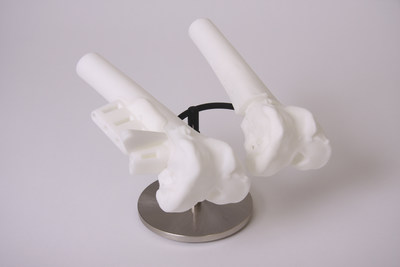
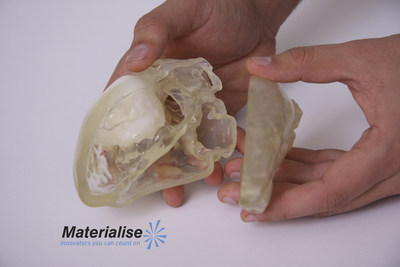
- Clinical Engineering Services offered by Materialise allow surgeons to create a custom surgical plan with 3D printed patient specific guides. Starting with CT images of Koen's leg, Materialise was able to generate a 3D model of Koen's leg that ... -
CHICAGO, Dec. 2, 2014 /PRNewswire/ -- Materialise NV (NASDAQ: MTLS), a pioneer in 3D Printing, is proud to announce at RSNA the introduction of the Materialise Hospital Solution, incorporating the Mimics® Innovation Suite software, 3D Printing services, training and consultation. Materialise's Hospital Solution will assist with making 3D Printing in hospitals safe and accessible. Their 3D Printing services for anatomical models offers hospitals access to the latest technologies for 3D Printing backed by a comprehensive quality control system to ensure accuracy. To hospitals interested in printing educational models in-house, Materialise can provide everything needed from cleared software for medical image processing to consultation on the available technologies and training for each step of the process.
With the Materialise Hospital solution, clinicians are able to address the unique needs of each individual patient. 3D software and models can be used to explain a patient's condition to families, assist in diagnosing complex pathologies, enable the review of a plan with a surgical team and even support testing a procedure on the bench before going to the bedside. The ability to translate patient-specific data into an accurate and tangible model can revolutionize the way the medical community is addressing the challenges of the modern healthcare system.

"Hospitals are excited about 3D Printing and we want the technology to benefit as many patients as possible. With nearly 25 years of experience in medical 3D Printing, we are the trusted partner who can help hospitals navigate the opportunities and the best way to achieve their goals in a safe, economical and sustainable way. We're confident that our Hospital Solution of software, services, consultation and training will achieve this," commented Peter Verschueren, Materialise Business Development Manager.
3D Printing is perfectly positioned to be a game changer as it can assist in improving clinical outcomes, provide evidence and reduce costs. With regards to clinical outcomes, working in the 3D space opens the doors for treating a patient for their lifestyle and not just their disease. A great example is Koen, a surfer who feared he'd never ride a wave again after an unsuccessful ACL reconstruction and lateral meniscectomy. Thanks to the clinical services offered by Materialise for specialized surgical planning and 3D printed patient specific guides, Koen was able to make a full recovery and get back to the sport he loved.
Though 3D imaging is a powerful resource to assist in the diagnosis of patients, clinicians are collaborating with their radiology departments to take imaging to the next level with 3D Printing by providing additional evidence for determining treatment plans. In the case of a 16-year old named Bradley, the cardiologist and surgeon gained a better understanding of the complex situation of his tumor. Having the 3D printed model enabled the team to confidently proceed with an electrophysiology study and catheter ablation over a risky surgical resection of the tumor. Bradley was relieved to avoid another open heart surgery and continues to enjoy his teenage years.

Though these outcomes are exciting from the clinical perspective alone, they may also reduce costs. Minimizing expenses while improving outcomes is an area where 3D Printing can play a role. Recently a baby in New York was born with complex congenital heart disease. Thanks to a 3D printed model of his tiny heart, the surgical team was able to repair his heart in one surgery rather than three or four. Holding the model in their hands made it easier to visualize this unique approach.
"It's hard to imagine entering an operating room for another complex case without the aid of a 3D printed model. It's definitely going to be standard of care in the future and we're happy to be leading the way," said Dr. Emile Bacha, a congenital heart surgeon and Director of Congenital and Pediatric Cardiac Surgery at NewYork-Presbyterian/Morgan Stanley Children's Hospital.
Partnering with Materialise allows hospitals to immediately benefit from 3D Printing and contribute to a better and healthier world.
For more information on the Materialise Hospital Solution, visit Materialise at RSNA in Booth – #8521 in North - Hall B or www.hospital3Dprinting.com. "
abbey.delaney@materialise.com
734.259-7030
Cell: 989.860.8210
http://biomedical.materialise.com/press/3d-printing-future-p…
"


- Clinical Engineering Services offered by Materialise allow surgeons to create a custom surgical plan with 3D printed patient specific guides. Starting with CT images of Koen's leg, Materialise was able to generate a 3D model of Koen's leg that ... -
CHICAGO, Dec. 2, 2014 /PRNewswire/ -- Materialise NV (NASDAQ: MTLS), a pioneer in 3D Printing, is proud to announce at RSNA the introduction of the Materialise Hospital Solution, incorporating the Mimics® Innovation Suite software, 3D Printing services, training and consultation. Materialise's Hospital Solution will assist with making 3D Printing in hospitals safe and accessible. Their 3D Printing services for anatomical models offers hospitals access to the latest technologies for 3D Printing backed by a comprehensive quality control system to ensure accuracy. To hospitals interested in printing educational models in-house, Materialise can provide everything needed from cleared software for medical image processing to consultation on the available technologies and training for each step of the process.
With the Materialise Hospital solution, clinicians are able to address the unique needs of each individual patient. 3D software and models can be used to explain a patient's condition to families, assist in diagnosing complex pathologies, enable the review of a plan with a surgical team and even support testing a procedure on the bench before going to the bedside. The ability to translate patient-specific data into an accurate and tangible model can revolutionize the way the medical community is addressing the challenges of the modern healthcare system.

"Hospitals are excited about 3D Printing and we want the technology to benefit as many patients as possible. With nearly 25 years of experience in medical 3D Printing, we are the trusted partner who can help hospitals navigate the opportunities and the best way to achieve their goals in a safe, economical and sustainable way. We're confident that our Hospital Solution of software, services, consultation and training will achieve this," commented Peter Verschueren, Materialise Business Development Manager.
3D Printing is perfectly positioned to be a game changer as it can assist in improving clinical outcomes, provide evidence and reduce costs. With regards to clinical outcomes, working in the 3D space opens the doors for treating a patient for their lifestyle and not just their disease. A great example is Koen, a surfer who feared he'd never ride a wave again after an unsuccessful ACL reconstruction and lateral meniscectomy. Thanks to the clinical services offered by Materialise for specialized surgical planning and 3D printed patient specific guides, Koen was able to make a full recovery and get back to the sport he loved.
Though 3D imaging is a powerful resource to assist in the diagnosis of patients, clinicians are collaborating with their radiology departments to take imaging to the next level with 3D Printing by providing additional evidence for determining treatment plans. In the case of a 16-year old named Bradley, the cardiologist and surgeon gained a better understanding of the complex situation of his tumor. Having the 3D printed model enabled the team to confidently proceed with an electrophysiology study and catheter ablation over a risky surgical resection of the tumor. Bradley was relieved to avoid another open heart surgery and continues to enjoy his teenage years.

Though these outcomes are exciting from the clinical perspective alone, they may also reduce costs. Minimizing expenses while improving outcomes is an area where 3D Printing can play a role. Recently a baby in New York was born with complex congenital heart disease. Thanks to a 3D printed model of his tiny heart, the surgical team was able to repair his heart in one surgery rather than three or four. Holding the model in their hands made it easier to visualize this unique approach.
"It's hard to imagine entering an operating room for another complex case without the aid of a 3D printed model. It's definitely going to be standard of care in the future and we're happy to be leading the way," said Dr. Emile Bacha, a congenital heart surgeon and Director of Congenital and Pediatric Cardiac Surgery at NewYork-Presbyterian/Morgan Stanley Children's Hospital.
Partnering with Materialise allows hospitals to immediately benefit from 3D Printing and contribute to a better and healthier world.
For more information on the Materialise Hospital Solution, visit Materialise at RSNA in Booth – #8521 in North - Hall B or www.hospital3Dprinting.com. "
Amsterdam canal house built  , with 3-D printer - R&DM/AP, AMSTERDAM - Mar 14, 2014
, with 3-D printer - R&DM/AP, AMSTERDAM - Mar 14, 2014
- Toby Sterling -
www.rdmag.com/news/2014/03/amsterdam-canal-house-built-3-d-p…
http://3dprintcanalhouse.com
"Hundreds of years after wealthy merchants began building the tall, narrow brick houses that have come to define Amsterdam's skyline, Dutch architects are updating the process for the 21st century: fabricating pieces of a canal house out of plastic with a giant 3-D printer and slotting them together like oversized Lego blocks.
Hedwig Heinsman of architect bureau Dus says the goal of the demonstration project launched this month is not so much to print a functioning house—in fact, parts of the house will likely be built and re-built several times over the course of three years as 3-D printing technology develops.
Rather, it is to discover and share the potential uses of 3-D printing in construction by creating new materials, trying out designs and testing building techniques to see what works.
"There's only one way to find out," she says. "By doing it."

- A 3-D printer, rear, and part of a printed canal house, foreground, are lit by the sunlight in Amsterdam, Netherlands. Dutch architecture firm Dus has embarked on a project to build a 21st-century version of a classic Amsterdam canal house, printing it out piece by piece with an oversized 3-D printer, and then slotting them together like oversized Lego blocks. AP Photo/Peter Dejong -
She envisions a future in which personalized architecture may be custom-crafted on the spot, or perhaps selected from an online store for architectural designs, downloaded and tweaked.
At the core of the project is a 6-m (20-foot) -tall printer dubbed the Kamermaker, or "room-builder." It's a scaled-up version of the open-source home 3-D printer made by Ultimaker, popular with hobbyists.
It takes the Kamermaker about a week to print each massive, unique, honeycomb-structured block, layer by layer. The first block, which forms one corner of the house and part of a stairway, weighed around 180 kg (400 lbs).
The blocks will later be filled with a foam material, still under development, that will harden like concrete to add additional weight and bind the blocks together.
Dus expects to add more printers and change designs along the way, with help from Dutch construction company Heijmans, German chemicals manufacturer Henkel, and anybody else who wants to participate and can make useful contributions.
The construction site in northern Amsterdam is also an exhibition, open to the public for 2.50 euros ($3.00). "
 , with 3-D printer - R&DM/AP, AMSTERDAM - Mar 14, 2014
, with 3-D printer - R&DM/AP, AMSTERDAM - Mar 14, 2014- Toby Sterling -
www.rdmag.com/news/2014/03/amsterdam-canal-house-built-3-d-p…
http://3dprintcanalhouse.com
"Hundreds of years after wealthy merchants began building the tall, narrow brick houses that have come to define Amsterdam's skyline, Dutch architects are updating the process for the 21st century: fabricating pieces of a canal house out of plastic with a giant 3-D printer and slotting them together like oversized Lego blocks.
Hedwig Heinsman of architect bureau Dus says the goal of the demonstration project launched this month is not so much to print a functioning house—in fact, parts of the house will likely be built and re-built several times over the course of three years as 3-D printing technology develops.
Rather, it is to discover and share the potential uses of 3-D printing in construction by creating new materials, trying out designs and testing building techniques to see what works.
"There's only one way to find out," she says. "By doing it."

- A 3-D printer, rear, and part of a printed canal house, foreground, are lit by the sunlight in Amsterdam, Netherlands. Dutch architecture firm Dus has embarked on a project to build a 21st-century version of a classic Amsterdam canal house, printing it out piece by piece with an oversized 3-D printer, and then slotting them together like oversized Lego blocks. AP Photo/Peter Dejong -
She envisions a future in which personalized architecture may be custom-crafted on the spot, or perhaps selected from an online store for architectural designs, downloaded and tweaked.
At the core of the project is a 6-m (20-foot) -tall printer dubbed the Kamermaker, or "room-builder." It's a scaled-up version of the open-source home 3-D printer made by Ultimaker, popular with hobbyists.
It takes the Kamermaker about a week to print each massive, unique, honeycomb-structured block, layer by layer. The first block, which forms one corner of the house and part of a stairway, weighed around 180 kg (400 lbs).
The blocks will later be filled with a foam material, still under development, that will harden like concrete to add additional weight and bind the blocks together.
Dus expects to add more printers and change designs along the way, with help from Dutch construction company Heijmans, German chemicals manufacturer Henkel, and anybody else who wants to participate and can make useful contributions.
The construction site in northern Amsterdam is also an exhibition, open to the public for 2.50 euros ($3.00). "
Interlocking segments "might be 3-D printed, assembled into parts" - R&DM/PU/USARL, WEST LAFAYETTE - Nov 9, 2013
www.rdmag.com/news/2013/09/interlocking-segments-might-be-3-…
www.purdue.edu/newsroom/releases/2013/Q3/interlocking-segmen…
www.army.mil/article/109144/Army_Research_Lab__Purdue_explor…
"Purdue Univ. researchers are working with the U.S. Army Research Laboratory to develop a technology for creating parts out of interlocking segments produced using 3-D printing to repair vehicles and other equipment in the field.
The Purdue portion of the research focuses on building blocks called "topologically interlocking structures" said Thomas Siegmund, a professor of mechanical engineering.
"You could think of it as clever Legos," said Siegmund, currently on leave from Purdue to serve as program director of the Mechanics of Materials Division at the National Science Foundation. "We create a shape from individual pieces or building blocks.”
The building blocks could be in the shape of cubes, faceted tetrahedral or other geometries, and might be created layer-by-layer using a 3-D printer. Then, these components might be assembled into parts for vehicles or other equipment.

- Purdue postdoctoral research associate Yuezhong Feng creates an interlocking structure using a 3-D printer. Purdue researchers are working with the U.S. Army Research Laboratory to develop a technology for creating parts out of interlocking segments produced using 3-D printing to repair vehicles and other equipment in the field. Image: Purdue Univ. photo/Steven Yang -
The surface topology is important because these building blocks have to be arranged relative to each other in an appropriate fashion that functions," said Siegmund, working with postdoctoral research associate Yuezhong Feng. "You could make a brick wall in the classical sense, one brick on top of another. But then they can easily be knocked out of place. However, if you take the same bricks and tilt them so the edges are facing you, you get this topological interlocking structure, one inclined face interlocking with the next inclined face, and so on."
Such interlocking structures might be able to absorb vibration and withstand shock better than conventional structures. The researchers are developing computational models and conducting experiments in a laboratory in the Mechanical Engineering Building.
Parts might be created from layers or particles, an approach called "additive manufacturing," Siegmund said.
"In our case we create each geometrical building block and then go to the next dimension by layering these building blocks into parts," Siegmund said. "So it's a multidimensional additive manufacturing."
Purdue is collaborating with the Army Research Laboratory, and the Army Research Office funds the work.

- Purdue's part of the research focuses on building blocks called "topologically interlocking structures" shaped like cubes, faceted tetrahedral or other geometries, and created layer-by-layer using a 3-D printer. Purdue researcher Thomas Siegmund likens the interlocking structures to "clever Legos." Image: Purdue Univ. photo/Steven Yang -
Siegmund also is leading related work funded by the Air Force Office of Scientific Research and the Defense University Research Instrumentation Program that has been supported by the Indiana 21st Century Research and Technology fund and Purdue's Center for Advanced Manufacturing.
The research focuses on developing "metamaterials" possessing new mechanical and acoustical properties.
"These materials obtain their properties not from composition but structure, and have the potential to possess properties not found in natural materials," he said. "The materials possess ideal damage tolerance and can be hybridized by changing both composition and structure." "
www.rdmag.com/news/2013/09/interlocking-segments-might-be-3-…
www.purdue.edu/newsroom/releases/2013/Q3/interlocking-segmen…
www.army.mil/article/109144/Army_Research_Lab__Purdue_explor…
"Purdue Univ. researchers are working with the U.S. Army Research Laboratory to develop a technology for creating parts out of interlocking segments produced using 3-D printing to repair vehicles and other equipment in the field.
The Purdue portion of the research focuses on building blocks called "topologically interlocking structures" said Thomas Siegmund, a professor of mechanical engineering.
"You could think of it as clever Legos," said Siegmund, currently on leave from Purdue to serve as program director of the Mechanics of Materials Division at the National Science Foundation. "We create a shape from individual pieces or building blocks.”
The building blocks could be in the shape of cubes, faceted tetrahedral or other geometries, and might be created layer-by-layer using a 3-D printer. Then, these components might be assembled into parts for vehicles or other equipment.

- Purdue postdoctoral research associate Yuezhong Feng creates an interlocking structure using a 3-D printer. Purdue researchers are working with the U.S. Army Research Laboratory to develop a technology for creating parts out of interlocking segments produced using 3-D printing to repair vehicles and other equipment in the field. Image: Purdue Univ. photo/Steven Yang -
The surface topology is important because these building blocks have to be arranged relative to each other in an appropriate fashion that functions," said Siegmund, working with postdoctoral research associate Yuezhong Feng. "You could make a brick wall in the classical sense, one brick on top of another. But then they can easily be knocked out of place. However, if you take the same bricks and tilt them so the edges are facing you, you get this topological interlocking structure, one inclined face interlocking with the next inclined face, and so on."
Such interlocking structures might be able to absorb vibration and withstand shock better than conventional structures. The researchers are developing computational models and conducting experiments in a laboratory in the Mechanical Engineering Building.
Parts might be created from layers or particles, an approach called "additive manufacturing," Siegmund said.
"In our case we create each geometrical building block and then go to the next dimension by layering these building blocks into parts," Siegmund said. "So it's a multidimensional additive manufacturing."
Purdue is collaborating with the Army Research Laboratory, and the Army Research Office funds the work.

- Purdue's part of the research focuses on building blocks called "topologically interlocking structures" shaped like cubes, faceted tetrahedral or other geometries, and created layer-by-layer using a 3-D printer. Purdue researcher Thomas Siegmund likens the interlocking structures to "clever Legos." Image: Purdue Univ. photo/Steven Yang -
Siegmund also is leading related work funded by the Air Force Office of Scientific Research and the Defense University Research Instrumentation Program that has been supported by the Indiana 21st Century Research and Technology fund and Purdue's Center for Advanced Manufacturing.
The research focuses on developing "metamaterials" possessing new mechanical and acoustical properties.
"These materials obtain their properties not from composition but structure, and have the potential to possess properties not found in natural materials," he said. "The materials possess ideal damage tolerance and can be hybridized by changing both composition and structure." "
Solicore Prints Thin Flexible Lithium Batteries
www.nanalyze.com/2014/10/solicore-prints-thin-flexible-lithi…
www.solicore.com/newsdetail.asp?newsid=81
www.nanalyze.com/2014/10/solicore-prints-thin-flexible-lithi…
www.solicore.com/newsdetail.asp?newsid=81
auch hier nochmal eingestellt
1st 3-D printed drug, for epilepsy, approved by the FDA - SA - Aug 5, 2015
- Kanak Kanti De -
http://seekingalpha.com/article/3400475-premarket-biotech-di…
1st 3-D printed drug, for epilepsy, approved by the FDA - SA - Aug 5, 2015
- Kanak Kanti De -
http://seekingalpha.com/article/3400475-premarket-biotech-di…
Australian-1st 3D-printed Metal Jaw Joint
- 'Pioneering corrective surgery, using a 3D-printed implant'
- Implant development, +project delivery, managed by 3DM
- Surgery undertaken @Melbourne’s Epworth-Freemason Hospital, by 'leading Oral & Maxillofacial Surgeon, Dr George Dimitroulis' ...
http://3dmedical.com.au/wp-content/uploads/2015/06/3DM-15062…
http://3dmedical.com.au/wp-content/uploads/2015/06/3DM-Inves…
- 'Pioneering corrective surgery, using a 3D-printed implant'
- Implant development, +project delivery, managed by 3DM
- Surgery undertaken @Melbourne’s Epworth-Freemason Hospital, by 'leading Oral & Maxillofacial Surgeon, Dr George Dimitroulis' ...
http://3dmedical.com.au/wp-content/uploads/2015/06/3DM-15062…
http://3dmedical.com.au/wp-content/uploads/2015/06/3DM-Inves…
Antwort auf Beitrag Nr.: 50.466.912 von Popeye82 am 24.08.15 02:11:06
doppelschreiben
3D-printed swimming microrobots can sense, +remove, toxins, Nanoparticles enable them to be self-propelled, chemically powered, +magnetically steered; could also be used for targeted drug delivery - kurzweilai.net/AM/UoC, CALIFORNIA/SAN DIEGO - Aug 27, 2015
www.kurzweilai.net/3d-printed-smimming-microrobots-can-sense…
"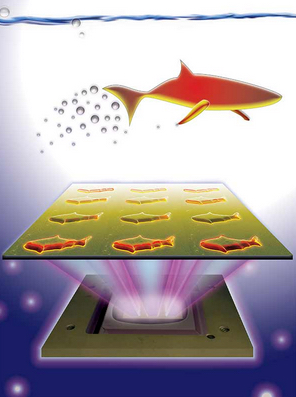
- 3D-printed microfish contain functional nanoparticles that enable them to be self-propelled, chemically powered and magnetically steered. The microfish are also capable of removing and sensing toxins. (credit: J. Warner, UC San Diego Jacobs School of Engineering) -
A new kind of fish-shaped microrobots called “microfish” can swim around efficiently in liquids, are chemically powered by hydrogen peroxide, and magnetically controlled. They will inspire a new generation of “smart” microrobots that have diverse capabilities such as detoxification, sensing, and directed drug delivery, said nanoengineers at the University of California, San Diego.
To manufacture the microfish, the researchers used an innovative 3D printing technology they developed, with numerous improvements over other methods traditionally employed to create microrobots, such as microjet engines, microdrillers, and microrockets.
Most of these microrobots are incapable of performing more sophisticated tasks because they feature simple mechanical designs — such as spherical or cylindrical structures — and are made of homogeneous inorganic materials.
The research, led by Professors Shaochen Chen and Joseph Wang of the NanoEngineering Department at the UC San Diego, was published in the Aug. 12 issue of the journal Advanced Materials.
A microrobotic toxin scavenger
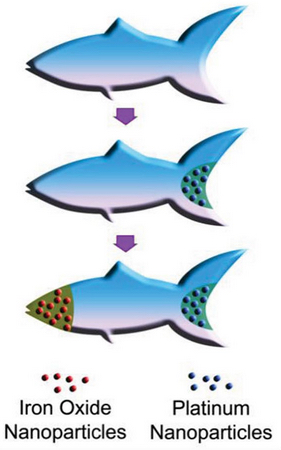
- Platinum nanoparticles in the tail of the fish achieve propulsion via reaction with hydrogen peroxide; iron oxide nanoparticles are loaded into the head of the fish for magnetic control (credit: W. Zhu and J. Li, UC San Diego Jacobs School of Engineering) -
The nanoengineers were able to easily add functional nanoparticles into certain parts of the microfish bodies.
They installed platinum nanoparticles in the tails, which react with hydrogen peroxide to propel the microfish forward, and magnetic iron oxide nanoparticles in the heads, which allowed them to be steered with magnets.
“We have developed an entirely new method to engineer nature-inspired microscopic swimmers that have complex geometric structures and are smaller than the width of a human hair.
With this method, we can easily integrate different functions inside these tiny robotic swimmers for a broad spectrum of applications,” said the co-first author Wei Zhu, a nanoengineering Ph.D. student in Chen’s research group at the Jacobs School of Engineering at UC San Diego.
As a proof-of-concept demonstration, the researchers incorporated toxin-neutralizing polydiacetylene (PDA) nanoparticles throughout the bodies of the microfish to neutralize harmful pore-forming toxins such as the ones found in bee venom.
The researchers noted that the powerful swimming of the microfish in solution greatly enhanced their ability to clean up toxins.
When the PDA nanoparticles bind with toxin molecules, they become fluorescent and emit red-colored light. The team was able to monitor the detoxification ability of the microfish by the intensity of their red glow. “The neat thing about this experiment is that it shows how the microfish can doubly serve as detoxification systems and as toxin sensors,” said Zhu.
“Another exciting possibility we could explore is to encapsulate medicines inside the microfish and use them for directed drug delivery,” said Jinxing Li, the other co-first author of the study and a nanoengineering Ph.D. student in Wang’s research group.
3D-printing microrobots
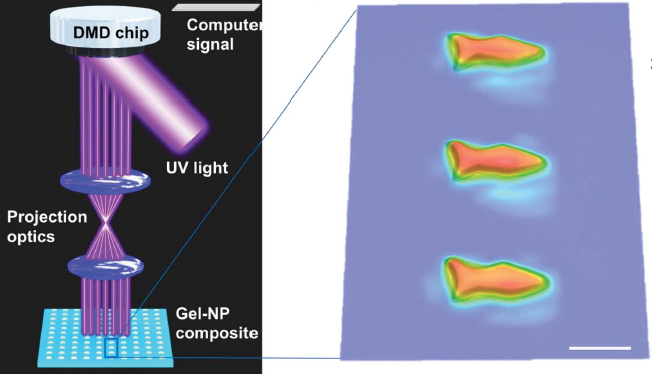
- Schematic illustration of the μCOP method to fabricate microfish. (Left) UV light illuminates mirrors, generating an optical pattern specified by the control computer. The pattern is projected through optics onto the photosensitive monomer solution to fabricate the fish layer-by-layer. (Right) 3D microscopy image of an array of printed microfish. Scale bar, 100 micrometers. (credit: Wei Zhu et al./Advanced Materials) -
The new microfish fabrication method is based on a rapid, high-resolution 3D printing technology called microscale continuous optical printing (μCOP) developed in Chen’s lab, offering speed, scalability, precision, and flexibility.
The key component of the μCOP technology is a digital micromirror array device (DMD) chip, which contains approximately two million micromirrors. Each micromirror is individually controlled to project UV light in the desired pattern (in this case, a fish shape) onto a photosensitive material, which solidifies upon exposure to UV light. The microfish are constructed one layer at a time, allowing each set of functional nanoparticles to be “printed” into specific parts of the fish bodies.
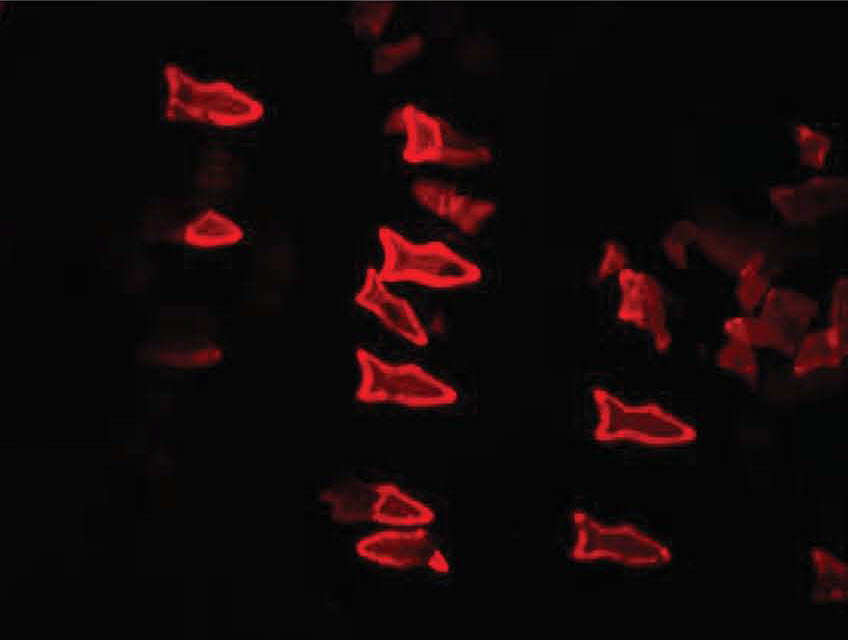
- Fluorescent images demonstrating the detoxification capability of microfish containing encapsulated PDA nanoparticles (credit: Wei Zhu et al./Advanced Materials) -
Within seconds, the researchers can print an array containing hundreds of microfish, each measuring 120 microns long and 30 microns thick. This process also does not require the use of harsh chemicals. Because the μCOP technology is digitized, the researchers could easily experiment with different designs for their microfish, including shark and manta ray shapes. They could also build microrobots in based on other biological organisms, such as birds, said Zhu.
“This method has made it easier for us to test different designs for these microrobots and to test different nanoparticles to insert new functional elements into these tiny structures. It’s my personal hope to further this research to eventually develop surgical microrobots that operate safer and with more precision,” said Li.
Abstract of 3D-Printed Artificial Microfish
Hydrogel microfish featuring biomimetic structures, locomotive capabilities, and functionalized nanoparticles are engineered using a rapid 3D printing platform: microscale continuous optical printing (μCOP). The 3D-printed microfish exhibit chemically powered and magnetically guided propulsion, as well as highly efficient detoxification capabilities that highlight the technical versatility of this platform for engineering advanced functional microswimmers for diverse biomedical applications.
References:
Wei Zhu, Jinxing Li, Yew J. Leong, Isaac Rozen, Xin Qu, Renfeng Dong, Zhiguang Wu, Wei Gao, Peter H. Chung, Joseph Wang andShaochen Chen. 3D-Printed Artificial Microfish. Advanced Materials, Volume 27, Issue 30, pages 4411–4417, August 12, 2015; DOI: 10.1002/adma.201501372
Related:
These microscopic fish are 3-D-printed to do more than swim "
doppelschreiben
3D-printed swimming microrobots can sense, +remove, toxins, Nanoparticles enable them to be self-propelled, chemically powered, +magnetically steered; could also be used for targeted drug delivery - kurzweilai.net/AM/UoC, CALIFORNIA/SAN DIEGO - Aug 27, 2015
www.kurzweilai.net/3d-printed-smimming-microrobots-can-sense…
"

- 3D-printed microfish contain functional nanoparticles that enable them to be self-propelled, chemically powered and magnetically steered. The microfish are also capable of removing and sensing toxins. (credit: J. Warner, UC San Diego Jacobs School of Engineering) -
A new kind of fish-shaped microrobots called “microfish” can swim around efficiently in liquids, are chemically powered by hydrogen peroxide, and magnetically controlled. They will inspire a new generation of “smart” microrobots that have diverse capabilities such as detoxification, sensing, and directed drug delivery, said nanoengineers at the University of California, San Diego.
To manufacture the microfish, the researchers used an innovative 3D printing technology they developed, with numerous improvements over other methods traditionally employed to create microrobots, such as microjet engines, microdrillers, and microrockets.
Most of these microrobots are incapable of performing more sophisticated tasks because they feature simple mechanical designs — such as spherical or cylindrical structures — and are made of homogeneous inorganic materials.
The research, led by Professors Shaochen Chen and Joseph Wang of the NanoEngineering Department at the UC San Diego, was published in the Aug. 12 issue of the journal Advanced Materials.
A microrobotic toxin scavenger

- Platinum nanoparticles in the tail of the fish achieve propulsion via reaction with hydrogen peroxide; iron oxide nanoparticles are loaded into the head of the fish for magnetic control (credit: W. Zhu and J. Li, UC San Diego Jacobs School of Engineering) -
The nanoengineers were able to easily add functional nanoparticles into certain parts of the microfish bodies.
They installed platinum nanoparticles in the tails, which react with hydrogen peroxide to propel the microfish forward, and magnetic iron oxide nanoparticles in the heads, which allowed them to be steered with magnets.
“We have developed an entirely new method to engineer nature-inspired microscopic swimmers that have complex geometric structures and are smaller than the width of a human hair.
With this method, we can easily integrate different functions inside these tiny robotic swimmers for a broad spectrum of applications,” said the co-first author Wei Zhu, a nanoengineering Ph.D. student in Chen’s research group at the Jacobs School of Engineering at UC San Diego.
As a proof-of-concept demonstration, the researchers incorporated toxin-neutralizing polydiacetylene (PDA) nanoparticles throughout the bodies of the microfish to neutralize harmful pore-forming toxins such as the ones found in bee venom.
The researchers noted that the powerful swimming of the microfish in solution greatly enhanced their ability to clean up toxins.
When the PDA nanoparticles bind with toxin molecules, they become fluorescent and emit red-colored light. The team was able to monitor the detoxification ability of the microfish by the intensity of their red glow. “The neat thing about this experiment is that it shows how the microfish can doubly serve as detoxification systems and as toxin sensors,” said Zhu.
“Another exciting possibility we could explore is to encapsulate medicines inside the microfish and use them for directed drug delivery,” said Jinxing Li, the other co-first author of the study and a nanoengineering Ph.D. student in Wang’s research group.
3D-printing microrobots

- Schematic illustration of the μCOP method to fabricate microfish. (Left) UV light illuminates mirrors, generating an optical pattern specified by the control computer. The pattern is projected through optics onto the photosensitive monomer solution to fabricate the fish layer-by-layer. (Right) 3D microscopy image of an array of printed microfish. Scale bar, 100 micrometers. (credit: Wei Zhu et al./Advanced Materials) -
The new microfish fabrication method is based on a rapid, high-resolution 3D printing technology called microscale continuous optical printing (μCOP) developed in Chen’s lab, offering speed, scalability, precision, and flexibility.
The key component of the μCOP technology is a digital micromirror array device (DMD) chip, which contains approximately two million micromirrors. Each micromirror is individually controlled to project UV light in the desired pattern (in this case, a fish shape) onto a photosensitive material, which solidifies upon exposure to UV light. The microfish are constructed one layer at a time, allowing each set of functional nanoparticles to be “printed” into specific parts of the fish bodies.

- Fluorescent images demonstrating the detoxification capability of microfish containing encapsulated PDA nanoparticles (credit: Wei Zhu et al./Advanced Materials) -
Within seconds, the researchers can print an array containing hundreds of microfish, each measuring 120 microns long and 30 microns thick. This process also does not require the use of harsh chemicals. Because the μCOP technology is digitized, the researchers could easily experiment with different designs for their microfish, including shark and manta ray shapes. They could also build microrobots in based on other biological organisms, such as birds, said Zhu.
“This method has made it easier for us to test different designs for these microrobots and to test different nanoparticles to insert new functional elements into these tiny structures. It’s my personal hope to further this research to eventually develop surgical microrobots that operate safer and with more precision,” said Li.
Abstract of 3D-Printed Artificial Microfish
Hydrogel microfish featuring biomimetic structures, locomotive capabilities, and functionalized nanoparticles are engineered using a rapid 3D printing platform: microscale continuous optical printing (μCOP). The 3D-printed microfish exhibit chemically powered and magnetically guided propulsion, as well as highly efficient detoxification capabilities that highlight the technical versatility of this platform for engineering advanced functional microswimmers for diverse biomedical applications.
References:
Wei Zhu, Jinxing Li, Yew J. Leong, Isaac Rozen, Xin Qu, Renfeng Dong, Zhiguang Wu, Wei Gao, Peter H. Chung, Joseph Wang andShaochen Chen. 3D-Printed Artificial Microfish. Advanced Materials, Volume 27, Issue 30, pages 4411–4417, August 12, 2015; DOI: 10.1002/adma.201501372
Related:
These microscopic fish are 3-D-printed to do more than swim "
Cancer patient 'receives 3D printed ribs in world-1st surgery', Spanish cancer patient has received a 3D printed titanium sternum +rib cage designed +manufactured right here in Australia. Suffering from a chest wall sarcoma(a type of cancerous tumour that grows, in this instance, around the rib cage), the 54 year old man needed his sternum +a portion of his rib cage replaced
www.innovationtoronto.com/2015/09/cancer-patient-receives-3d…
http://csironewsblog.com/2015/09/11/cancer-patient-receives-…
"
- Here’s how the 3D printed sternum and rib cage fit inside the patient’s body -
Spanish cancer patient has received a 3D printed titanium sternum and rib cage designed and manufactured right here in Australia.
Suffering from a chest wall sarcoma (a type of cancerous tumour that grows, in this instance, around the rib cage), the 54 year old man needed his sternum and a portion of his rib cage replaced. This part of the chest is notoriously tricky to recreate with prosthetics, due to the complex geometry and design required for each patient. So the patient’s surgical team determined that a fully customisable 3D printed sternum and rib cage was the best option.
That’s when they turned to Melbourne-based medical device company Anatomics, who designed and manufactured the implant utilising our 3D printing facility, Lab 22.
The news was announced by Industry and Science Minister Ian Macfarlane today. And the news is good, 12 days after the surgery the patient was discharged and has recovered well.
This isn’t the first time surgeons have turned the human body into a titanium masterpiece. Thoracic surgeons typically use flat and plate implants for the chest. However, these can come loose over time and increase the risk of complications. The patient’s surgical team at the Salamanca University Hospital thought a fully customised 3D printed implant could replicate the intricate structures of the sternum and ribs, providing a safer option for the patient.
Using high resolution CT data, the Anatomics team was able to create a 3D reconstruction of the chest wall and tumour, allowing the surgeons to plan and accurately define resection margins. We were then called on to print the sternum and rib cage at Lab 22.
As you could imagine, the 3D printer at Officeworks wasn’t quite up to this challenge. Instead, we relied on our $1.3 million Arcam printer to build up the implant layer-by-layer with its electron beam, resulting in a brand new implant which was promptly couriered to Spain.
The advantage of 3D printing is its rapid prototyping. When you’re waiting for life-saving surgery this is the definitely the order of the day. ..."

- 3D printed sternum: The ‘chest’ story you’ll hear all week. Image credit: Anatomics -

- The sternum (the central piece) and the rib cages emanating from it, have been designed using precise scans to perfectly fit in the patient’s chest after he had sections removed. Image credit: Anatomics -
www.innovationtoronto.com/2015/09/cancer-patient-receives-3d…
http://csironewsblog.com/2015/09/11/cancer-patient-receives-…
"

- Here’s how the 3D printed sternum and rib cage fit inside the patient’s body -
Spanish cancer patient has received a 3D printed titanium sternum and rib cage designed and manufactured right here in Australia.
Suffering from a chest wall sarcoma (a type of cancerous tumour that grows, in this instance, around the rib cage), the 54 year old man needed his sternum and a portion of his rib cage replaced. This part of the chest is notoriously tricky to recreate with prosthetics, due to the complex geometry and design required for each patient. So the patient’s surgical team determined that a fully customisable 3D printed sternum and rib cage was the best option.
That’s when they turned to Melbourne-based medical device company Anatomics, who designed and manufactured the implant utilising our 3D printing facility, Lab 22.
The news was announced by Industry and Science Minister Ian Macfarlane today. And the news is good, 12 days after the surgery the patient was discharged and has recovered well.
This isn’t the first time surgeons have turned the human body into a titanium masterpiece. Thoracic surgeons typically use flat and plate implants for the chest. However, these can come loose over time and increase the risk of complications. The patient’s surgical team at the Salamanca University Hospital thought a fully customised 3D printed implant could replicate the intricate structures of the sternum and ribs, providing a safer option for the patient.
Using high resolution CT data, the Anatomics team was able to create a 3D reconstruction of the chest wall and tumour, allowing the surgeons to plan and accurately define resection margins. We were then called on to print the sternum and rib cage at Lab 22.
As you could imagine, the 3D printer at Officeworks wasn’t quite up to this challenge. Instead, we relied on our $1.3 million Arcam printer to build up the implant layer-by-layer with its electron beam, resulting in a brand new implant which was promptly couriered to Spain.
The advantage of 3D printing is its rapid prototyping. When you’re waiting for life-saving surgery this is the definitely the order of the day. ..."

- 3D printed sternum: The ‘chest’ story you’ll hear all week. Image credit: Anatomics -

- The sternum (the central piece) and the rib cages emanating from it, have been designed using precise scans to perfectly fit in the patient’s chest after he had sections removed. Image credit: Anatomics -
Antwort auf Beitrag Nr.: 50.615.798 von Popeye82 am 13.09.15 18:50:38
University of Michigan will test 3D-printed, autonomous ‘SmartCarts’ - IT/UoM/LM, MICHIGAN - Jul 9, 2015
http://ns.umich.edu/new/releases/23006-u-m-will-test-3d-prin…
www.innovationtoronto.com/2015/07/university-of-michigan-wil…
"
- Researchers at the University of Michigan will develop autonomous capabilities for this 3-D printed low-speed electric vehicle that’s manufactured by Arizona technology company Local Motors. The screen in the background shows a laser scan of the room. Image credit: Local Motors -
A fleet of autonomous “SmartCarts”—high-tech, 3D-printed, low-speed electric vehicles—could one day zip around the University of Michigan’s North Campus, taking students, professors and staff to class, labs and offices while also serving as one of the first test beds for on-demand autonomous transit.
“Think Uber, but with low-speed, autonomous cars,” said Edwin Olson, an associate professor of electrical engineering and computer science who leads the project. “The goal of SmartCarts is for us to begin understanding the challenges of a transportation-on-demand system built around autonomous cars.”
In an early step toward that goal, U-M researchers today received a custom, 3D-printed vehicle from technology company Local Motors. The company unveiled both the low-speed vehicle and its first 3D-printed road-ready car at a press conference in Tempe, Ariz.
U-M’s vehicle—one of three being built for university research—will arrive on U-M’s campus next week. Over the next year, U-M researchers will develop autonomy capabilities and build a mobile phone interface users can use to request a ride. They’ll test the vehicle at Mcity, the autonomous and connected vehicle test site that’s operated by the Mobility Transformation Center, a public/private partnership headquartered at U-M.
“On this project, we’re deliberately ‘cheating’ on the autonomy as much as we can—not because we can’t build autonomous cars, but because we need a working test bed now so that we can begin to look at all of the other challenges of an on-demand system” Olson said.
Those other challenges include understanding passengers’ preferences and expectations, coordinating the routes of a fleet of vehicles, and figuring out how to balance supply and demand.
“These factors—not just the self-driving technology—are critical to the economic viability and social acceptance of a full-scale transportation service,” Olson said.
At Mcity and later on North Campus, researchers will experiment with methods to simplify the autonomy challenges that take advantage of the smaller scale of a campus. They could add landmarks to help the vehicles navigate, for example, or even paint a blue line on the asphalt for the carts to follow. These steps help make autonomy safe and cheap, but they’re difficult to accomplish on a national scale, Olson said. Beyond college campuses, low-speed autonomous transit systems could be useful in places like corporate campuses, amusement parks, airports, assisted living communities and city centers.
U-M’s new vehicle has a power train derived from a traditional golf cart, but by working with Local Motors, the rest of the vehicle has been re-invented for this project. The body is 3D printed out of Lego brick plastic reinforced with fiber for strength. The unique manufacturing process means if the U-M researchers decide they need a bracket to hold a sensor, for example, or a more innovative dashboard without a steering wheel, Local Motors can print a new component in a matter of hours.
“The advantage is speed of design and manufacturing. The 3D printing process and our co-creation process lets us and our partners be creative fast,” said Corey Clothier, Local Motors’ autonomous vehicle lead. “We’re excited to partner with the University of Michigan on this. They’re real leaders in autonomous systems and their approach on this is brilliantly simple. We look forward to seeing it unfold.” ..."
http://ns.umich.edu/new/releases/23006-u-m-will-test-3d-prin…
www.innovationtoronto.com/2015/07/university-of-michigan-wil…
"

- Researchers at the University of Michigan will develop autonomous capabilities for this 3-D printed low-speed electric vehicle that’s manufactured by Arizona technology company Local Motors. The screen in the background shows a laser scan of the room. Image credit: Local Motors -
A fleet of autonomous “SmartCarts”—high-tech, 3D-printed, low-speed electric vehicles—could one day zip around the University of Michigan’s North Campus, taking students, professors and staff to class, labs and offices while also serving as one of the first test beds for on-demand autonomous transit.
“Think Uber, but with low-speed, autonomous cars,” said Edwin Olson, an associate professor of electrical engineering and computer science who leads the project. “The goal of SmartCarts is for us to begin understanding the challenges of a transportation-on-demand system built around autonomous cars.”
In an early step toward that goal, U-M researchers today received a custom, 3D-printed vehicle from technology company Local Motors. The company unveiled both the low-speed vehicle and its first 3D-printed road-ready car at a press conference in Tempe, Ariz.
U-M’s vehicle—one of three being built for university research—will arrive on U-M’s campus next week. Over the next year, U-M researchers will develop autonomy capabilities and build a mobile phone interface users can use to request a ride. They’ll test the vehicle at Mcity, the autonomous and connected vehicle test site that’s operated by the Mobility Transformation Center, a public/private partnership headquartered at U-M.
“On this project, we’re deliberately ‘cheating’ on the autonomy as much as we can—not because we can’t build autonomous cars, but because we need a working test bed now so that we can begin to look at all of the other challenges of an on-demand system” Olson said.
Those other challenges include understanding passengers’ preferences and expectations, coordinating the routes of a fleet of vehicles, and figuring out how to balance supply and demand.
“These factors—not just the self-driving technology—are critical to the economic viability and social acceptance of a full-scale transportation service,” Olson said.
At Mcity and later on North Campus, researchers will experiment with methods to simplify the autonomy challenges that take advantage of the smaller scale of a campus. They could add landmarks to help the vehicles navigate, for example, or even paint a blue line on the asphalt for the carts to follow. These steps help make autonomy safe and cheap, but they’re difficult to accomplish on a national scale, Olson said. Beyond college campuses, low-speed autonomous transit systems could be useful in places like corporate campuses, amusement parks, airports, assisted living communities and city centers.
U-M’s new vehicle has a power train derived from a traditional golf cart, but by working with Local Motors, the rest of the vehicle has been re-invented for this project. The body is 3D printed out of Lego brick plastic reinforced with fiber for strength. The unique manufacturing process means if the U-M researchers decide they need a bracket to hold a sensor, for example, or a more innovative dashboard without a steering wheel, Local Motors can print a new component in a matter of hours.
“The advantage is speed of design and manufacturing. The 3D printing process and our co-creation process lets us and our partners be creative fast,” said Corey Clothier, Local Motors’ autonomous vehicle lead. “We’re excited to partner with the University of Michigan on this. They’re real leaders in autonomous systems and their approach on this is brilliantly simple. We look forward to seeing it unfold.” ..."

3D-printed Cortex concept 'scratches the itch, of healing broken bones'
www.gizmag.com/cortex-concept-3d-printed-casts/28123/
www.innovationtoronto.com/2013/07/3d-printed-cortex-concept-…
"The concept would be ready-to-fit directly off of the 3D printer, with built-in fasteners added for the final enclosure.
The only thing worse than breaking a bone is waiting for it to heal. During the healing process itself, wearing a fiberglass and plaster cast can be a stinky, itchy endeavor that is uncomfortable and inconvenient; all for an injury that is completely internal. Enter Jake Evill’s Cortex concept. Beyond having an awesome last name, Jake Evill, a media design graduate of the Victoria University of Wellington in New Zealand, has managed to modernize the ancient concept of a splint using 3D printing technology.
Utilizing X-ray technology, paired with 3D printing and scanning, the Cortex exoskeletal cast provides a fully-ventilated structure to heal broken bones. The system uses the scanning technologies to provide a “trauma zone localized” support structure. This scanning technique, combined with a software system, would create the optimum bespoke structure that allows denser support to be focused around the fracture.
The structure would then be 3D printed, providing an ultra-light, recyclable, and (probably most importantly) shower-friendly cast. Though a plaster or fiberglass cast would take tens of minutes to create and a 3D-printed cast of this caliber would take a few hours to print, the customization, convenience, and intuitive flexibility of Evill’s design can’t be denied.

The concept would be ready-to-fit directly off of the 3D printer, with built-in fasteners added for the final enclosure. These fasteners would then be removed by a special tool when healing is complete. ..."
find´s eigentlich ein bischen schade dass du den thread nicht weiterführst.
ich glaaaaaaaaaaaaube nämlich schon, daß man mit dem thema gewinnen kann.
ich rätsle nur ein bischen wer der sieger ist.
3 D Systems bislang nicht.
also wer macht oder mit was macht man das geld
- hardware ... glaub ich weniger..
auch wenn´s spektakulär ausschaut, es ist auch "nur" ein drucker
- software
soweit ich weiss nach stand vor 1-2 jahren hauptsächlich freie software
- oder doch mit ausgefeilter spezialtechik worauf x, y das patent hat
(hilft nur augen weit weit offen halten)
- der nutzer, bzw die unternehmen
hauptchancen sehe ich eigentlich in der orthopädie oder auch zahntechnik... und überall da wo individualisierung sehr viel bringt. der hersteller an sich hat vielleicht weniger davon da preise fallen. evtl. sind die betroffenen (einschl. krankenkassen) "nur" die gewinner (was sehr erfreulich wäre). oder auch in anderen industrien die produktkäufer.
fällt mir schwer, wenn ich daran denke wo genau die chance als anleger ist.
weiterer punkt:
welche materialien/rohstoffe könnte das bewegen
ich glaaaaaaaaaaaaube nämlich schon, daß man mit dem thema gewinnen kann.
ich rätsle nur ein bischen wer der sieger ist.
3 D Systems bislang nicht.
also wer macht oder mit was macht man das geld
- hardware ... glaub ich weniger..
auch wenn´s spektakulär ausschaut, es ist auch "nur" ein drucker
- software
soweit ich weiss nach stand vor 1-2 jahren hauptsächlich freie software
- oder doch mit ausgefeilter spezialtechik worauf x, y das patent hat
(hilft nur augen weit weit offen halten)
- der nutzer, bzw die unternehmen
hauptchancen sehe ich eigentlich in der orthopädie oder auch zahntechnik... und überall da wo individualisierung sehr viel bringt. der hersteller an sich hat vielleicht weniger davon da preise fallen. evtl. sind die betroffenen (einschl. krankenkassen) "nur" die gewinner (was sehr erfreulich wäre). oder auch in anderen industrien die produktkäufer.
fällt mir schwer, wenn ich daran denke wo genau die chance als anleger ist.
weiterer punkt:
welche materialien/rohstoffe könnte das bewegen
Antwort auf Beitrag Nr.: 51.439.881 von Boersiback am 07.01.16 22:32:03
der threadist überhaupt nicht aufgegeben,
nur man muss auch ein bisschen portionieren
halte inzwischen einiges von vorrats-lagerhaltung(im übrigen auch die antwort auf deine frage der "blöden postings", da stecken -die anderen, schlauen-noch einige in der tastatur)
meine meinung ist schon ein tickl diffenrenziert, zudem 3D druck zeug
ich hatte vorlängherem schon geschrieben ich finde diese branche/AGs interessant, aber von mir aus sollen die erstmal noch SO RICHTIG ABSCHMIEREN
war schon eine weile her, dieser kommentar
wenn Du willst kann Du Dir mal Folgendes zu SLM Solutions ansehen
wäre bis dato(neben ONVO)-kann sich noch ändern-meine wahrscheinlichste wahl,
aber mit einem wichtigen punkt des timings
wenn bitte profen ob im linkalles "safe"ist
(ich hatte dazuletzt einige probleme)
www.file-upload.net/download-11064118/SLMSolutionsGroupAG-Ca…
www.file-upload.net/download-11064112/SLMSolutionsGroupAG-Ca…
wenn Du Dir initial komplett durchliest garantiere ich Dir hast Du danach ein bild
der threadist überhaupt nicht aufgegeben,
nur man muss auch ein bisschen portionieren
halte inzwischen einiges von vorrats-lagerhaltung(im übrigen auch die antwort auf deine frage der "blöden postings", da stecken -die anderen, schlauen-noch einige in der tastatur)
meine meinung ist schon ein tickl diffenrenziert, zudem 3D druck zeug
ich hatte vorlängherem schon geschrieben ich finde diese branche/AGs interessant, aber von mir aus sollen die erstmal noch SO RICHTIG ABSCHMIEREN
war schon eine weile her, dieser kommentar
wenn Du willst kann Du Dir mal Folgendes zu SLM Solutions ansehen
wäre bis dato(neben ONVO)-kann sich noch ändern-meine wahrscheinlichste wahl,
aber mit einem wichtigen punkt des timings
wenn bitte profen ob im linkalles "safe"ist
(ich hatte dazuletzt einige probleme)
www.file-upload.net/download-11064118/SLMSolutionsGroupAG-Ca…
www.file-upload.net/download-11064112/SLMSolutionsGroupAG-Ca…
wenn Du Dir initial komplett durchliest garantiere ich Dir hast Du danach ein bild
Antwort auf Beitrag Nr.: 51.440.100 von Popeye82 am 07.01.16 23:02:29danke dir, werde ich machen... mit dem thema muss man sich auf jeden fall intensiver beschäftigen.
ich wer auch mal 3 D Systems wieder neu beleuchten. damals ja bei 90 USD rum nach dem riesenanstieg... bei 8 USD ist das jetzt wieder was anderes.
solche big stories hypen nunmal ja immer auf mehrere phasen wie IT 2000 crash und dann wieder, oder solar 2000 crash 2007 hype und so langsam wieder.
(das ist dann halt auch mal das chartdingens psychodinges wo ich meine)
nur muss man recht raffiniert sein und die glocken in der richtigen reihenfolge läuten sozusagen . zudem gibts dann vor allem die randideen dazu die nicht so im fokus sind und oft gibts da dann den joker.
. zudem gibts dann vor allem die randideen dazu die nicht so im fokus sind und oft gibts da dann den joker.
mal sehen ob ich da ne meinung und überzeugung zusammenbekomme
ich wer auch mal 3 D Systems wieder neu beleuchten. damals ja bei 90 USD rum nach dem riesenanstieg... bei 8 USD ist das jetzt wieder was anderes.
solche big stories hypen nunmal ja immer auf mehrere phasen wie IT 2000 crash und dann wieder, oder solar 2000 crash 2007 hype und so langsam wieder.
(das ist dann halt auch mal das chartdingens psychodinges wo ich meine)
nur muss man recht raffiniert sein und die glocken in der richtigen reihenfolge läuten sozusagen
 . zudem gibts dann vor allem die randideen dazu die nicht so im fokus sind und oft gibts da dann den joker.
. zudem gibts dann vor allem die randideen dazu die nicht so im fokus sind und oft gibts da dann den joker.mal sehen ob ich da ne meinung und überzeugung zusammenbekomme

1st ever 3D printed object made from meteorite dust, Asteroid mining company Planetary Resources +3D Systems have displayed an additively manufactured object, made out of metal sourced from a meteorite

www.australianmining.com.au/news/first-ever-3d-printed-objec…
www.engadget.com/2016/01/07/planetary-resources-meteorite-pr…
"Asteroid mining company Planetary Resources and 3D Systems have displayed an additively manufactured object made out of metal sourced from a meteorite.
Endgadget reports that the metal used as a feedstock was taken from an asteroid that landed in Argentina in prehistoric times. It was extracted using a plasma that condenses metallic powder from the meteorite, which is then extracted from a vacuum system.
This is a major step forward for making space mining operations a real possibility.
Planetary Resources aims to “develop cost-effective space exploration technologies, mine near-earth asteroids and expand humanity's resource base.”
CEO Nick Lewicki believes that if space exploration is going to progress in a meaningful way, then manufacturing and building in space need to be mastered.
"There are billions and billions of tons of this material in space," Lewicki said, according to Endgadget.
"Everyone has probably seen an iron meteorite in a museum, now we have the tech to take that material and print it in a metal printer using high energy laser. Imagine if we could do that in space."
Previously speaking to Australian Mining, Lewicki explainedoOne of the major advantages of mining in space is that once you are in space it is cheaper to produce materials as opposed to facing the higher costs associated with lifting materials out of earth orbit.
“The common argument is that it costs about US$20,000 per kilogram to launch to deep space from Earth, so if you can produce that kilogram in space for less than $20,000, you’re ahead,” director of the Australian Centre for Space Engineering Research, professor Andrew Dempster said.
“In fact, SpaceX publishes its launch costs on its website; currently, for its Falcon 9, that figure is about US$12,600.”
This new technological breakthrough now removes much of this cost.
The object displayed was made using a 3D Systems ProX DMP 320 printer, and is modeled on the Arkyd spacecraft. It was displayed at this week's CES show in Las Vegas."

www.australianmining.com.au/news/first-ever-3d-printed-objec…
www.engadget.com/2016/01/07/planetary-resources-meteorite-pr…
"Asteroid mining company Planetary Resources and 3D Systems have displayed an additively manufactured object made out of metal sourced from a meteorite.
Endgadget reports that the metal used as a feedstock was taken from an asteroid that landed in Argentina in prehistoric times. It was extracted using a plasma that condenses metallic powder from the meteorite, which is then extracted from a vacuum system.
This is a major step forward for making space mining operations a real possibility.
Planetary Resources aims to “develop cost-effective space exploration technologies, mine near-earth asteroids and expand humanity's resource base.”
CEO Nick Lewicki believes that if space exploration is going to progress in a meaningful way, then manufacturing and building in space need to be mastered.
"There are billions and billions of tons of this material in space," Lewicki said, according to Endgadget.
"Everyone has probably seen an iron meteorite in a museum, now we have the tech to take that material and print it in a metal printer using high energy laser. Imagine if we could do that in space."
Previously speaking to Australian Mining, Lewicki explainedoOne of the major advantages of mining in space is that once you are in space it is cheaper to produce materials as opposed to facing the higher costs associated with lifting materials out of earth orbit.
“The common argument is that it costs about US$20,000 per kilogram to launch to deep space from Earth, so if you can produce that kilogram in space for less than $20,000, you’re ahead,” director of the Australian Centre for Space Engineering Research, professor Andrew Dempster said.
“In fact, SpaceX publishes its launch costs on its website; currently, for its Falcon 9, that figure is about US$12,600.”
This new technological breakthrough now removes much of this cost.
The object displayed was made using a 3D Systems ProX DMP 320 printer, and is modeled on the Arkyd spacecraft. It was displayed at this week's CES show in Las Vegas."







3D MakerJet Inc. Strives to Shorten the Supply Chain, with Portable Powderless Metal 3D Printing
www.manufacturingtomorrow.com/news/2016/02/29/3d-makerjet-in…
"ORLANDO, Fla.--(BUSINESS WIRE)--3D MakerJet Inc. (OTCPK: MRJT) is preparing to introduce a wire-feed powderless metal 3D printer to the market later this year, 3D MakerJet Inc. is exploring the product's industrial applications.
"Portable wire-feed metal printers will prove to be an indispensable tool on the job—as in mining, where downtime can be extremely costly. The ability to mount a metal printer on a truck could transform multiple industries, such as electrical repairs and construction."
Tweet this
Powderless metal 3D printing allows for components to be made rapidly and affordably with strength and durability. As many prolific industrial sectors are becoming early adopters, 3D MakerJet is working to craft unique solutions for each of them.
"Cutting costs and lead times is a driving force behind our product's industrial uses," said 3D MakerJet President John Crippen. "Portable wire-feed metal printers will prove to be an indispensable tool on the job—as in mining, where downtime can be extremely costly. The ability to mount a metal printer on a truck could transform multiple industries, such as electrical repairs and construction."
Powderless metal printing can resolve issues like equipment failure quickly and inexpensively. Operations could have access to a digital parts library featuring any piece required for production—storing spares digitally, decreasing inventory costs and eliminating the lengthy and expensive process of transporting parts.
Similar to other additive manufacturing techniques, powderless metal printing is created by digital data from computer-aided design (CAD) software. Compared to powder-feed methods, the powderless process, using fused filament fabrications (FFF) behaves much like traditional welding and allows for better efficiency of material usage.
For more details please call 3D MakerJet Inc. at (407) 930-0807 or email info@3dmakerjet.com.
About 3D MakerJet
3D MakerJet, Inc. is committed to the development, production and sales of plastic, medical, culinary and powderless metal 3D printers for the consumer, professional and small business markets. 3D MakerJet is supplied by one of the largest 3D printing Research, Development and Manufacturing entities in the world, ZBOT/Guangzhou DNSPOWER Design Co. LTD. A cutting-edge developer, ZBOT was awarded the CDA National Design Award for its ZBOT 3D Printer, the platform of the 3D MakerJet line and the only CDA winner at the Civilian level, reflecting the product's superior quality, as well as the manufacturer's comprehensive strength, commitment and capabilities. Please visit www.3dmakerjet.com for more information. "
www.manufacturingtomorrow.com/news/2016/02/29/3d-makerjet-in…
"ORLANDO, Fla.--(BUSINESS WIRE)--3D MakerJet Inc. (OTCPK: MRJT) is preparing to introduce a wire-feed powderless metal 3D printer to the market later this year, 3D MakerJet Inc. is exploring the product's industrial applications.
"Portable wire-feed metal printers will prove to be an indispensable tool on the job—as in mining, where downtime can be extremely costly. The ability to mount a metal printer on a truck could transform multiple industries, such as electrical repairs and construction."
Tweet this
Powderless metal 3D printing allows for components to be made rapidly and affordably with strength and durability. As many prolific industrial sectors are becoming early adopters, 3D MakerJet is working to craft unique solutions for each of them.
"Cutting costs and lead times is a driving force behind our product's industrial uses," said 3D MakerJet President John Crippen. "Portable wire-feed metal printers will prove to be an indispensable tool on the job—as in mining, where downtime can be extremely costly. The ability to mount a metal printer on a truck could transform multiple industries, such as electrical repairs and construction."
Powderless metal printing can resolve issues like equipment failure quickly and inexpensively. Operations could have access to a digital parts library featuring any piece required for production—storing spares digitally, decreasing inventory costs and eliminating the lengthy and expensive process of transporting parts.
Similar to other additive manufacturing techniques, powderless metal printing is created by digital data from computer-aided design (CAD) software. Compared to powder-feed methods, the powderless process, using fused filament fabrications (FFF) behaves much like traditional welding and allows for better efficiency of material usage.
For more details please call 3D MakerJet Inc. at (407) 930-0807 or email info@3dmakerjet.com.
About 3D MakerJet
3D MakerJet, Inc. is committed to the development, production and sales of plastic, medical, culinary and powderless metal 3D printers for the consumer, professional and small business markets. 3D MakerJet is supplied by one of the largest 3D printing Research, Development and Manufacturing entities in the world, ZBOT/Guangzhou DNSPOWER Design Co. LTD. A cutting-edge developer, ZBOT was awarded the CDA National Design Award for its ZBOT 3D Printer, the platform of the 3D MakerJet line and the only CDA winner at the Civilian level, reflecting the product's superior quality, as well as the manufacturer's comprehensive strength, commitment and capabilities. Please visit www.3dmakerjet.com for more information. "
A New Boeing Patent Describes Levitating 3D Printing, watching a 3D printer work can sometimes seem like magic--thin filaments slowly build up on top of a platform, turning into parts +figurines. Now, apatent published by aerospace company Boeing introduces an even more futuristic element: levitation
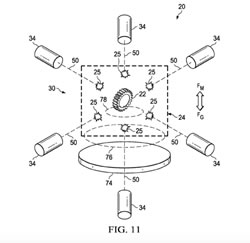
- Figure showing Boeing's process for magnetically levitating a 3D printed object -
www.popsci.com/new-boeing-patent-describes-levitating-3d-pri…
"Watching a 3D printer work can sometimes seem like magic--thin filaments slowly build up on top of a platform, turning into parts and figurines. Now, a patent published by aerospace company Boeing introduces an even more futuristic element: levitation.
With this method, the object prints while floating in midair thanks to magnets or acoustic waves. A "nugget" or base gets printed first out into space, and then a cadre of 3D printers add more and more of the printing material.
But why? Levitation is cool, yes, but it turns out there is also a practical purpose for a floating 3D printed object, at least according to Boeing's patent. The levitating object can be manipulated and turned more so than an object stuck to a platform can be, and using many printheads at the same time would ostensibly speed up the process.
3D printing, also known as additive manufacturing is important to the aerospace industry and one estimate from 2015 suggests that Boeing itself is using 20,000 3D-printed parts. But that doesn't necessarily mean that all the future factories will be filled with floating in-progress plane parts. As TechCrunch warns, the real-life version of this method may not exactly match what the patent lays out.
PatentYogi made a video to explain how it all works and you can watch it below:"

- Figure showing Boeing's process for magnetically levitating a 3D printed object -
www.popsci.com/new-boeing-patent-describes-levitating-3d-pri…
"Watching a 3D printer work can sometimes seem like magic--thin filaments slowly build up on top of a platform, turning into parts and figurines. Now, a patent published by aerospace company Boeing introduces an even more futuristic element: levitation.
With this method, the object prints while floating in midair thanks to magnets or acoustic waves. A "nugget" or base gets printed first out into space, and then a cadre of 3D printers add more and more of the printing material.
But why? Levitation is cool, yes, but it turns out there is also a practical purpose for a floating 3D printed object, at least according to Boeing's patent. The levitating object can be manipulated and turned more so than an object stuck to a platform can be, and using many printheads at the same time would ostensibly speed up the process.
3D printing, also known as additive manufacturing is important to the aerospace industry and one estimate from 2015 suggests that Boeing itself is using 20,000 3D-printed parts. But that doesn't necessarily mean that all the future factories will be filled with floating in-progress plane parts. As TechCrunch warns, the real-life version of this method may not exactly match what the patent lays out.
PatentYogi made a video to explain how it all works and you can watch it below:"
Antwort auf Beitrag Nr.: 51.926.190 von Popeye82 am 08.03.16 02:45:33interessanter Artikel
"What if 3D Printing was 1000x Faster?"
--> dann wäre es meiner meinung nach der megadurchbruch...
"What if 3D Printing was 1000x Faster?"
--> dann wäre es meiner meinung nach der megadurchbruch...

Antwort auf Beitrag Nr.: 51.935.526 von Boersiback am 09.03.16 00:12:49
möchte mal so sagen
Ich sehe es so(halte es für sehr wahrscheinlich) der SEKTOR wird über die Zeit schon ordentlich kommen, sehr stark wahrscheinlich sogar(wobei ich da nicht soviel auf die Privathaushalte geben würde, als vielmehr den industriellen Einsatz)
aber
"einfach ein paar 3Ddruckler kaufen"das wird denke ich eher schwierig
weil das ist, wieder mal(ich sehe viele Sachen(Branchen/"Trends" etc) ähnlich), die Ersten können nochmal ordentlich am Kuchen abbeissen, aber dann kommen immer, immer mehr Teilnehmer, die Torte super finden.
Gewissermassen wird mMn die "Burg gestürmt"
d.h. denk ich auf jeden Fall dass es nicht so einfach ist auf "die Richtigen" zu setzen,
aber unmöglich auch keinesfalls
(auch deswegen)interessieren mich diese "Massenanbieter"nicht sonderlich,
sondern die spezialisierten(SLM Solution hast Du ja sicher gelesen (
(  ))
))
zu Deinem Gesagten wahrs. nochmal 2,3andere Punkte
möchte mal so sagen
Ich sehe es so(halte es für sehr wahrscheinlich) der SEKTOR wird über die Zeit schon ordentlich kommen, sehr stark wahrscheinlich sogar(wobei ich da nicht soviel auf die Privathaushalte geben würde, als vielmehr den industriellen Einsatz)
aber
"einfach ein paar 3Ddruckler kaufen"das wird denke ich eher schwierig
weil das ist, wieder mal(ich sehe viele Sachen(Branchen/"Trends" etc) ähnlich), die Ersten können nochmal ordentlich am Kuchen abbeissen, aber dann kommen immer, immer mehr Teilnehmer, die Torte super finden.
Gewissermassen wird mMn die "Burg gestürmt"
d.h. denk ich auf jeden Fall dass es nicht so einfach ist auf "die Richtigen" zu setzen,
aber unmöglich auch keinesfalls
(auch deswegen)interessieren mich diese "Massenanbieter"nicht sonderlich,
sondern die spezialisierten(SLM Solution hast Du ja sicher gelesen
 (
(  ))
))zu Deinem Gesagten wahrs. nochmal 2,3andere Punkte
Antwort auf Beitrag Nr.: 51.935.583 von Popeye82 am 09.03.16 01:02:21das mit den 3-d-druckern kaufen haben wir ja schon... kenne da nen rentner der isch vor nem jahr spasshalber sowas gekauft hat.
der margenkampf hat dann 3-d-systems soweit ich das mitbekommen habe wohl mehr zu schaffen gemacht.
für eine echte industrierevolution sind sie zu langsam. aber in der medizin (orthopädie, zahntechnik) oder prototyping, individualiserung... gibt genug bereiche.
wären sie tatsächlic hextrem schnell könnte das eine komplettrevolution werden. was ich denke auf lange sicht kommen dürfte zumindest in vielen bereichen.
der margenkampf hat dann 3-d-systems soweit ich das mitbekommen habe wohl mehr zu schaffen gemacht.
für eine echte industrierevolution sind sie zu langsam. aber in der medizin (orthopädie, zahntechnik) oder prototyping, individualiserung... gibt genug bereiche.
wären sie tatsächlic hextrem schnell könnte das eine komplettrevolution werden. was ich denke auf lange sicht kommen dürfte zumindest in vielen bereichen.
Antwort auf Beitrag Nr.: 51.935.526 von Boersiback am 09.03.16 00:12:49
das hat was mit den "2,3 anderen" Sachen zu tun
das hat was mit den "2,3 anderen" Sachen zu tun
- 3D printing has grown in sophistication since the late 1970s; TED Fellow Skylar Tibbits is shaping the next development, which he calls 4D printing, where the fourth dimension is time. This emerging technology will allow us to print objects that then reshape themselves or self-assemble over time. Think: a printed cube that folds before your eyes, or a printed pipe able to sense the need to expand or contract -
Das auch
- http://www.ted.com Surgeon Anthony Atala demonstrates an early-stage experiment that could someday solve the organ-donor problem: a 3D printer that uses living cells to output a transplantable kidney. Using similar technology, Dr. Atala's young patient Luke Massella received an engineered bladder 10 years ago; we meet him onstage.
TEDTalks is a daily video podcast of the best talks and performances from the TED Conference, where the world's leading thinkers and doers give the talk of their lives in 18 minutes. TED stands for Technology, Entertainment, Design, and TEDTalks cover these topics as well as science, business, development and the arts. Closed captions and translated subtitles in a variety of languages are now available on TED.com, at http://www.ted.com/translate. -
BMW celebrates 100 years with 4D printed VISION NEXT 100 concept car , with Alive Geometry, BMW has tapped into the extremely forward-thinking concept of 4D printing, where 3D printed objects are able to re-shape or re-assemble themselves over time, leading to exciting applications in soft robotics or biomimetic devices
www.3ders.org/articles/20160308-bmw-celebrates-100-years-wit…
"What will we be driving in the year 2116? According to BMW, 4D printed self-driving cars with augmented reality windshields and shape-shifting fenders might be the answer. To celebrate its centennial anniversary, the German car giant today unveiled the VISION NEXT 100, the first in a series of highly conceptual car designs that invite us into BMW’s vision for the next 100 years of driving.

From the outside, the VISION NEXT 100 is a compact, copper-colored sedan with wide-set wheels and an undeniably sleek and sporty personality. It’s true innovation, however, comes from within. Namely, BMW’s Alive Geometry Technology, a physical 3D sculpture spread over the instrument panel, seats, and other car parts, that consists of nearly 800 ‘moving triangles’ that can shape-shift and communicate with the driver.
With Alive Geometry, BMW has tapped into the extremely forward-thinking concept of 4D printing, where 3D printed objects are able to re-shape or re-assemble themselves over time, leading to exciting applications in soft robotics or biomimetic devices. The system thus integrates novel materials, intelligent sensors, and interactivity to enhance every possible aspect of the driving experience.


First of all, BMW’s concept car offers two driving modes: In Boost Mode, the driver is still in full control, but is assisted by a variety of interactive tech features designed to heighten both the experience, and the driver’s safety. For example, an augmented reality display projected across the entire windshield highlights optimal line steering and speeds, and can even project hidden hazards, such as a cyclist approaching from behind a truck, before they are visible to the naked eye.


In Ease Mode, the car’s interior physically adjusts to enhance the driver’s comfort. As the autonomous driving sensors kick in, the steering wheel and center console retract, giving the driver and passengers more space, and creating a relaxing, ‘lounge-like’ setting. In order to achieve this flexible physical space, much of the BMW VISION NEXT 100 is made from fabric-like materials and 4D printing concepts.
The Alive Geometry 4D printed structure also appears on the car’s exterior: as the wheels swivel, the 4D printed fenders smoothly adapt to keep them covered at all times. It’s a slightly disconcerting effect, one that makes the car seem almost snake-like and alive. It also helps the VISION NEXT 100 achieve a low drag coefficient of just 0.18.


Besides these innovative and responsive driving modes, BMW put quite a bit of focus on using lightweight and innovative materials in this new concept car, which it a envisions to be 100% emissions-free. In addition to using cast-off residue from carbon-fiber components for non-structural components, BMW also highlighted the use of more recycled or renewable materials, reflecting the present-day move towards more sustainable manufacturing, which will only intensify in the coming years.



Additional features include BMW’s Companion, a ‘digital intelligence’ tool that sits in the center console, learning about the driver and constantly adjusting the features, displays, and modes to provide the most comfortable and personalized driving experience possible.
While BMW’s vision of a 4D printed car that is able to shape-shift both inside and out may seem completely unrealistic today, 100, or even 50 years from now, that probably won’t be the case. Consider that advanced materials and 3D printing technology are already being used in the automobile industry, from Local Motors entirely 3D printed car to Audi’s metal 3D printed car parts—BMW itself recently celebrated 25 years of 3D printing technology. By the same token, 4D printing is one of the hottest new areas of research, with exciting new applications from space exploration to soft robots, and now, potentially futuristic cars.
BMW’s VISION NEXT 100 concept car was unveiled today in Munich, and will soon be brought to Beijing, London, and Los Angeles. BMW will also be unveiling similarly futuristic concepts for Mini, Rolls Royce, and the BMW Motorrad. Check out the videos below to see BMW's vision for 4D printed car technology in action: "
www.3ders.org/articles/20160308-bmw-celebrates-100-years-wit…
"What will we be driving in the year 2116? According to BMW, 4D printed self-driving cars with augmented reality windshields and shape-shifting fenders might be the answer. To celebrate its centennial anniversary, the German car giant today unveiled the VISION NEXT 100, the first in a series of highly conceptual car designs that invite us into BMW’s vision for the next 100 years of driving.

From the outside, the VISION NEXT 100 is a compact, copper-colored sedan with wide-set wheels and an undeniably sleek and sporty personality. It’s true innovation, however, comes from within. Namely, BMW’s Alive Geometry Technology, a physical 3D sculpture spread over the instrument panel, seats, and other car parts, that consists of nearly 800 ‘moving triangles’ that can shape-shift and communicate with the driver.
With Alive Geometry, BMW has tapped into the extremely forward-thinking concept of 4D printing, where 3D printed objects are able to re-shape or re-assemble themselves over time, leading to exciting applications in soft robotics or biomimetic devices. The system thus integrates novel materials, intelligent sensors, and interactivity to enhance every possible aspect of the driving experience.


First of all, BMW’s concept car offers two driving modes: In Boost Mode, the driver is still in full control, but is assisted by a variety of interactive tech features designed to heighten both the experience, and the driver’s safety. For example, an augmented reality display projected across the entire windshield highlights optimal line steering and speeds, and can even project hidden hazards, such as a cyclist approaching from behind a truck, before they are visible to the naked eye.


In Ease Mode, the car’s interior physically adjusts to enhance the driver’s comfort. As the autonomous driving sensors kick in, the steering wheel and center console retract, giving the driver and passengers more space, and creating a relaxing, ‘lounge-like’ setting. In order to achieve this flexible physical space, much of the BMW VISION NEXT 100 is made from fabric-like materials and 4D printing concepts.
The Alive Geometry 4D printed structure also appears on the car’s exterior: as the wheels swivel, the 4D printed fenders smoothly adapt to keep them covered at all times. It’s a slightly disconcerting effect, one that makes the car seem almost snake-like and alive. It also helps the VISION NEXT 100 achieve a low drag coefficient of just 0.18.


Besides these innovative and responsive driving modes, BMW put quite a bit of focus on using lightweight and innovative materials in this new concept car, which it a envisions to be 100% emissions-free. In addition to using cast-off residue from carbon-fiber components for non-structural components, BMW also highlighted the use of more recycled or renewable materials, reflecting the present-day move towards more sustainable manufacturing, which will only intensify in the coming years.



Additional features include BMW’s Companion, a ‘digital intelligence’ tool that sits in the center console, learning about the driver and constantly adjusting the features, displays, and modes to provide the most comfortable and personalized driving experience possible.
While BMW’s vision of a 4D printed car that is able to shape-shift both inside and out may seem completely unrealistic today, 100, or even 50 years from now, that probably won’t be the case. Consider that advanced materials and 3D printing technology are already being used in the automobile industry, from Local Motors entirely 3D printed car to Audi’s metal 3D printed car parts—BMW itself recently celebrated 25 years of 3D printing technology. By the same token, 4D printing is one of the hottest new areas of research, with exciting new applications from space exploration to soft robots, and now, potentially futuristic cars.
BMW’s VISION NEXT 100 concept car was unveiled today in Munich, and will soon be brought to Beijing, London, and Los Angeles. BMW will also be unveiling similarly futuristic concepts for Mini, Rolls Royce, and the BMW Motorrad. Check out the videos below to see BMW's vision for 4D printed car technology in action: "
Antwort auf Beitrag Nr.: 51.945.522 von Popeye82 am 10.03.16 07:29:31
- The BMW VISION NEXT 100 -Visoionsfahrzeiug. Mischung aus sportlichem Coupé und dynamisch-eleganter Limousine steigt der Fahrer nicht in ein anonymes Transportmittel ein – sondern in ein persönliches, komplett auf ihn ausgerichtetes Fahrzeug.
Eine Alive Geometry schafft die Interaktion zwischen Fahrer und Fahrzeug, die Fahrmodi Boost und Ease ermöglichen sowohl Selbst- als auch pilotiertes Fahren und verändern den Innenraum des Autos: Im Boost Modus fokussiert sich das gesamte Fahrzeug auf den Piloten und unterstützt ihn für ein maximales Fahrerlebnis, zeigt ihm Ideallinie, Einlenkpunkte und optimale Geschwindigkeit.
Im Ease Modus verändert sich der Innenraum: Lenkrad und Mittelkonsole ziehen sich zurück, die Kopfstützen schwenken zur Seite, Sitze und Türverkleidung bilden eine Einheit, damit Fahrer und Mitfahrer sich einander zuwenden können. Mehr infos zur Vorstellung des BMW Vision Next 100 in der Münchner Olympiahalle ... http://www.ganz-muenchen.de/shopping/... -
- The BMW VISION NEXT 100 -Visoionsfahrzeiug. Mischung aus sportlichem Coupé und dynamisch-eleganter Limousine steigt der Fahrer nicht in ein anonymes Transportmittel ein – sondern in ein persönliches, komplett auf ihn ausgerichtetes Fahrzeug.
Eine Alive Geometry schafft die Interaktion zwischen Fahrer und Fahrzeug, die Fahrmodi Boost und Ease ermöglichen sowohl Selbst- als auch pilotiertes Fahren und verändern den Innenraum des Autos: Im Boost Modus fokussiert sich das gesamte Fahrzeug auf den Piloten und unterstützt ihn für ein maximales Fahrerlebnis, zeigt ihm Ideallinie, Einlenkpunkte und optimale Geschwindigkeit.
Im Ease Modus verändert sich der Innenraum: Lenkrad und Mittelkonsole ziehen sich zurück, die Kopfstützen schwenken zur Seite, Sitze und Türverkleidung bilden eine Einheit, damit Fahrer und Mitfahrer sich einander zuwenden können. Mehr infos zur Vorstellung des BMW Vision Next 100 in der Münchner Olympiahalle ... http://www.ganz-muenchen.de/shopping/... -
Danke Dir.. die videos schau ich mir am WE mal alle an.
ein bischen mehr einblick und vorstellung in dieser thematik kann nicht schaden.
grad jetzt wo ich auch wieder auch eher alternativen suche.
ein bischen mehr einblick und vorstellung in dieser thematik kann nicht schaden.
grad jetzt wo ich auch wieder auch eher alternativen suche.
- Athletes, the elderly and others who suffer from injuries and arthritis can lose cartilage and experience a lot of pain. Researchers are now reporting, however, that they have found a way to produce cartilage tissue by 3-D bioprinting an ink containing human cells, and they have successfully tested it in an in vivo mouse model. The development could one day lead to precisely printed implants to heal damaged noses, ears and knees. A brand-new video on the research is available at http://bit.ly/ACS3DPrint.
Paul Gatenholm, Ph.D.
Wallenberg Wood Science
Center at Chalmers, Sweden -
1 Jahr alt
- #3DRockStars
Only 30% of companies have begun the move to 3D Printing, which could be a disaster for those companies that haven’t! Experts agree, 3D printing will be established as one of the truly disruptive technologies of our generation, but what are the hottest trends and the challenges? At the Rock Stars of 3D Printing Hangout our experts will answer these questions and any others you have:
• Is 2015 the year 3D printing moves from hype to reality?
• Will 3D printed cars be hot in 2015 or will we be focused on low-cost printers?
• Will counterfeiting be an issue, and what can we do about it?
• What kind of shakeout will there be for existing companies who are not on the 3D printing track
• Will 3D printing restore onshore manufacturing?
• 3D printing is an opportunity for many news industries. Is yours one of them?
No one can afford to sit out the 3D printing revolution. The 3D Rock Star speakers are the same visionaries and innovators who will headline Rock Stars of 3D Printing, the unique, one-day live event to be held March 17 in San Jose. On that day, paradigms will shift and sacred cows fall. They’ll give you an exciting preview at the hangout. Here are the speakers you’ll meet at the hangout:
• Brian David Johnson, Futurist and Director, Future Casting and Experience Research | Intel
• Cliff Waldman, Director of Economic Studies | Manufacturers Alliance for Productivity and Innovation (MAPI)
• Brian Gaff, Partner | McDermott Will & Emery, LLP
• Joshua Greenbaum, Analyst | Enterprise Applications Consulting (Moderator)
For more information on the IEEE Computer Society's Rock Stars event series, visit www.computer.org/rockstars
Hosted by IEEE Computer Society -
- #3DRockStars
Only 30% of companies have begun the move to 3D Printing, which could be a disaster for those companies that haven’t! Experts agree, 3D printing will be established as one of the truly disruptive technologies of our generation, but what are the hottest trends and the challenges? At the Rock Stars of 3D Printing Hangout our experts will answer these questions and any others you have:
• Is 2015 the year 3D printing moves from hype to reality?
• Will 3D printed cars be hot in 2015 or will we be focused on low-cost printers?
• Will counterfeiting be an issue, and what can we do about it?
• What kind of shakeout will there be for existing companies who are not on the 3D printing track
• Will 3D printing restore onshore manufacturing?
• 3D printing is an opportunity for many news industries. Is yours one of them?
No one can afford to sit out the 3D printing revolution. The 3D Rock Star speakers are the same visionaries and innovators who will headline Rock Stars of 3D Printing, the unique, one-day live event to be held March 17 in San Jose. On that day, paradigms will shift and sacred cows fall. They’ll give you an exciting preview at the hangout. Here are the speakers you’ll meet at the hangout:
• Brian David Johnson, Futurist and Director, Future Casting and Experience Research | Intel
• Cliff Waldman, Director of Economic Studies | Manufacturers Alliance for Productivity and Innovation (MAPI)
• Brian Gaff, Partner | McDermott Will & Emery, LLP
• Joshua Greenbaum, Analyst | Enterprise Applications Consulting (Moderator)
For more information on the IEEE Computer Society's Rock Stars event series, visit www.computer.org/rockstars
Hosted by IEEE Computer Society -
'Stranger than fiction'; the world's first 3D printed house, Zero waste, fractional transportation costs +constructed with bio-based, sustainable +recyclable materials -this is the 'building of the future'

www.biobasedworldnews.com/discover-the-worlds-first-3d-print…

www.biobasedworldnews.com/discover-the-worlds-first-3d-print…
Antwort auf Beitrag Nr.: 52.036.022 von Popeye82 am 22.03.16 16:39:27
- One of the first houses to be printed in Amsterdam. Short documentary about the 3D Print Canal House (c) DUS Architects.
Eines der ersten Häuser frisch aus dem Drucker. Eine kurze Dokumentation über das 3D Print Canal House in Amsterdam (c) DUS Architects -
- Like Lego just bigger: A piece for the 3D Print Canal House is made by the KamerMaker, a 20 feet tall 3D Printer. (c) DUS Architects
Wie Lego nur größer: Ein Bauteil des 3D Print Canal House in Amsterdam wird gedruckt. Der "Kamermaker" ist ein ca. sechs Meter hoher 3D-Drucker und soll eines der ersten Häuser in Amsterdam drucken. (c) DUS Architects -
- One of the first houses to be printed in Amsterdam. Short documentary about the 3D Print Canal House (c) DUS Architects.
Eines der ersten Häuser frisch aus dem Drucker. Eine kurze Dokumentation über das 3D Print Canal House in Amsterdam (c) DUS Architects -
- Like Lego just bigger: A piece for the 3D Print Canal House is made by the KamerMaker, a 20 feet tall 3D Printer. (c) DUS Architects
Wie Lego nur größer: Ein Bauteil des 3D Print Canal House in Amsterdam wird gedruckt. Der "Kamermaker" ist ein ca. sechs Meter hoher 3D-Drucker und soll eines der ersten Häuser in Amsterdam drucken. (c) DUS Architects -
zu dieser AG wollte ich schon seit einiger zeit etwas mehr einstellen
Einiges davon auch im Link, unter "highlights", zu sehen
kommt dann irgendwann
-In this episode of the CEOLIVE.TV Investor Update Series we are joined again by Amit Dror, CEO and Co-founder of Nano Dimension (NASDAQ: NNDM).
Nano Dimension has start trading on the NASDAQ under the ticker NNDM. They have also picked up research coverage from Maxim Group and Rodman & Renshaw who each initiated their coverage with a Buy rating.
About Nano Dimension
the 1st 3D Printer Company to combine professional electronics with 3D printing
Nano Dimension, founded in 2012, focuses on development of advanced 3D printed electronics systems and advanced additive manufacturing. Nano Dimension's unique products combine three advanced technologies: 3D inkjet, 3D software and nanomaterials. The company's primary products include the first 3D printer dedicated to printing multi-layer PCBs (printed circuit boards) and advanced nanotechnology-based conductive and dielectric inks.
In addition to the upcoming trading on the NASDAQ, the Company's shares are also traded on the TASE in Israel. The Bank of New York Mellon serves as the depositary for Nano Dimension. -
http://ceolive.tv/nndm-nano-dimension-starts-trading-on-nasd…
Einiges davon auch im Link, unter "highlights", zu sehen
kommt dann irgendwann
-In this episode of the CEOLIVE.TV Investor Update Series we are joined again by Amit Dror, CEO and Co-founder of Nano Dimension (NASDAQ: NNDM).
Nano Dimension has start trading on the NASDAQ under the ticker NNDM. They have also picked up research coverage from Maxim Group and Rodman & Renshaw who each initiated their coverage with a Buy rating.
About Nano Dimension
the 1st 3D Printer Company to combine professional electronics with 3D printing
Nano Dimension, founded in 2012, focuses on development of advanced 3D printed electronics systems and advanced additive manufacturing. Nano Dimension's unique products combine three advanced technologies: 3D inkjet, 3D software and nanomaterials. The company's primary products include the first 3D printer dedicated to printing multi-layer PCBs (printed circuit boards) and advanced nanotechnology-based conductive and dielectric inks.
In addition to the upcoming trading on the NASDAQ, the Company's shares are also traded on the TASE in Israel. The Bank of New York Mellon serves as the depositary for Nano Dimension. -
http://ceolive.tv/nndm-nano-dimension-starts-trading-on-nasd…
Antwort auf Beitrag Nr.: 52.044.371 von Popeye82 am 23.03.16 14:27:17
dier eports gibtzs natürlich nicht, schöner mist
aber Das
http://wsw.com/webcast/roth30/register.aspx?conf=roth30&page…
dier eports gibtzs natürlich nicht, schöner mist
aber Das
http://wsw.com/webcast/roth30/register.aspx?conf=roth30&page…
Amedica First to 3D Print Silicon Nitride for Medical Applications, Company Plans to Use 3D Printing Technology for Its Proprietary Silicon Nitride Devices
http://files.shareholder.com/downloads/AMDA-2JBRND/175374089…
"SALT LAKE CITY, UT--(Marketwired - Mar 23, 2016) - Amedica Corporation (NASDAQ: AMDA), a company that develops and commercializes silicon nitride ceramics as a biomaterial platform, is pleased to announce its first fabrication of complex, three-dimensional structures by a 3D printing process called robotic deposition, or robocasting. The final products have been examined under scanning electron microscopy to confirm the integrity and validity of the 3D printing method, and have been shown to achieve similar theoretical density and microstructure attributes to the traditionally manufactured silicon nitride fusion devices currently in use.
"This innovation speaks to the unique art and science related to our manufacturing strength," said Dr. Sonny Bal, Chairman and Chief Executive Officer. "3D printing of a complex ceramic material opens future doors, especially in terms of cost advantages, and addressing a variety of OEM partner needs. Custom additive manufacturing is a modern advancement, and we are proud to lead the way in 3D printing of our silicon nitride formulation, with its advantages in bone fusion, antibacterial behavior, and superior strength."
Robocasting is a freeform fabrication technique for dense ceramics and composites that is based on layered deposition of highly colloidal slurries. The process is essentially binder-less and a device can be completely sintered in less than 24 hours. With this advancement, Amedica can now progress toward commercializing 3D printed silicon nitride implants, with controllable porosity levels to address specific clinical needs. This unique manufacturing method is promising for the production of anatomically relevant shaped silicon nitride implants, while also allowing custom fabrication of bone scaffolds suited for cellular differentiation and neovascularization.
About Amedica Corporation
Amedica is focused on the development and application of interbody implants manufactured with medical-grade silicon nitride ceramic. Amedica markets spinal fusion products and is developing a new generation of wear- and corrosion-resistant implant components for hip and knee arthroplasty as well as dental applications. The Company's products are manufactured in its ISO 13485 certified manufacturing facility and through its partnership with Kyocera, one of the world's largest ceramic manufacturers. Amedica's spine products are FDA-cleared, CE-marked, and are currently marketed in the U.S. and select markets in Europe and South America through its distributor network and its growing OEM and private label partnerships.
For more information on Amedica or its silicon nitride material platform, please visit www.amedica.com. "
http://files.shareholder.com/downloads/AMDA-2JBRND/175374089…
"SALT LAKE CITY, UT--(Marketwired - Mar 23, 2016) - Amedica Corporation (NASDAQ: AMDA), a company that develops and commercializes silicon nitride ceramics as a biomaterial platform, is pleased to announce its first fabrication of complex, three-dimensional structures by a 3D printing process called robotic deposition, or robocasting. The final products have been examined under scanning electron microscopy to confirm the integrity and validity of the 3D printing method, and have been shown to achieve similar theoretical density and microstructure attributes to the traditionally manufactured silicon nitride fusion devices currently in use.
"This innovation speaks to the unique art and science related to our manufacturing strength," said Dr. Sonny Bal, Chairman and Chief Executive Officer. "3D printing of a complex ceramic material opens future doors, especially in terms of cost advantages, and addressing a variety of OEM partner needs. Custom additive manufacturing is a modern advancement, and we are proud to lead the way in 3D printing of our silicon nitride formulation, with its advantages in bone fusion, antibacterial behavior, and superior strength."
Robocasting is a freeform fabrication technique for dense ceramics and composites that is based on layered deposition of highly colloidal slurries. The process is essentially binder-less and a device can be completely sintered in less than 24 hours. With this advancement, Amedica can now progress toward commercializing 3D printed silicon nitride implants, with controllable porosity levels to address specific clinical needs. This unique manufacturing method is promising for the production of anatomically relevant shaped silicon nitride implants, while also allowing custom fabrication of bone scaffolds suited for cellular differentiation and neovascularization.
About Amedica Corporation
Amedica is focused on the development and application of interbody implants manufactured with medical-grade silicon nitride ceramic. Amedica markets spinal fusion products and is developing a new generation of wear- and corrosion-resistant implant components for hip and knee arthroplasty as well as dental applications. The Company's products are manufactured in its ISO 13485 certified manufacturing facility and through its partnership with Kyocera, one of the world's largest ceramic manufacturers. Amedica's spine products are FDA-cleared, CE-marked, and are currently marketed in the U.S. and select markets in Europe and South America through its distributor network and its growing OEM and private label partnerships.
For more information on Amedica or its silicon nitride material platform, please visit www.amedica.com. "
Bavarian medical ‘breakthrough’, with 3D printed spider silk 
 , Liquified spider silk extruded in a gel via a three-dimensional printer could soon be regenerating damaged human heart muscle +nerve cells, according to German researchers
, Liquified spider silk extruded in a gel via a three-dimensional printer could soon be regenerating damaged human heart muscle +nerve cells, according to German researchers
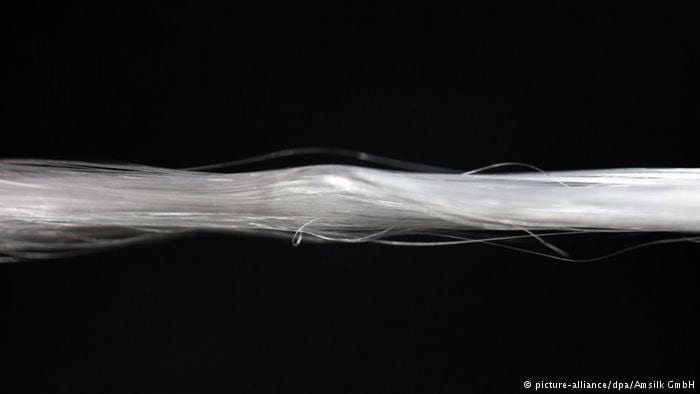
- Could spider silk lead to enhanced cell repair? -

www.dw.com/en/bavarian-medical-breakthrough-with-spider-silk…
www.innovationtoronto.com/2015/01/bavarian-medical-breakthro…
"Liquified spider silk extruded in a gel via a three-dimensional printer could soon be regenerating damaged human heart muscle and nerve cells, according to German researchers
Biomaterial experts at Germany’s Bayreuth and Würzburg universities claimed a breakthrough in cultivating living cells while holding them in place with liquified spider silk.
The research method mixed spider silk with connective fibroblast cells from mice to generate a so-called “bio ink” or gel. Fibroblasts typically begin wound repairs.
When extruded from a 3-D printer, the silk molecules quickly wrapped those cells, giving them a porous matrix in which to flourish, the team said.
‘New possibilities’, for regenerative medicine?
Lead researchers, Bayreuth’s professor Thomas Scheibel and Würzburg’s professor Jürgen Groll said the method opened “completely new possibilities” for the regeneration of heart muscles as well as skin and nerve tissues.
During the development of a new bio ink based on spider silk the research team in Bayreuth and Würzburg achieved a “decisive breakthrough,” they told the Pressetext news agency.
The gel flowed through the 3-D device’s print head onto an extrusion surface, changing rapidly from its fluid into a firm state. ..."

 , Liquified spider silk extruded in a gel via a three-dimensional printer could soon be regenerating damaged human heart muscle +nerve cells, according to German researchers
, Liquified spider silk extruded in a gel via a three-dimensional printer could soon be regenerating damaged human heart muscle +nerve cells, according to German researchers
- Could spider silk lead to enhanced cell repair? -

www.dw.com/en/bavarian-medical-breakthrough-with-spider-silk…
www.innovationtoronto.com/2015/01/bavarian-medical-breakthro…
"Liquified spider silk extruded in a gel via a three-dimensional printer could soon be regenerating damaged human heart muscle and nerve cells, according to German researchers
Biomaterial experts at Germany’s Bayreuth and Würzburg universities claimed a breakthrough in cultivating living cells while holding them in place with liquified spider silk.
The research method mixed spider silk with connective fibroblast cells from mice to generate a so-called “bio ink” or gel. Fibroblasts typically begin wound repairs.
When extruded from a 3-D printer, the silk molecules quickly wrapped those cells, giving them a porous matrix in which to flourish, the team said.
‘New possibilities’, for regenerative medicine?
Lead researchers, Bayreuth’s professor Thomas Scheibel and Würzburg’s professor Jürgen Groll said the method opened “completely new possibilities” for the regeneration of heart muscles as well as skin and nerve tissues.
During the development of a new bio ink based on spider silk the research team in Bayreuth and Würzburg achieved a “decisive breakthrough,” they told the Pressetext news agency.
The gel flowed through the 3-D device’s print head onto an extrusion surface, changing rapidly from its fluid into a firm state. ..."
Plastics News Now: Thermoplastic 3-D printed parts blast into space
www.plasticsnews.com/article/20160331/MULTIMEDIA01/160339950…
www.plasticsnews.com/article/20160331/MULTIMEDIA01/160339950…
Focus on innovation: new episodes of NBC Learn update, on batteries built using viruses +explore biomedical applications of 3D printing
http://tmrplus.iop.org/2016/02/19/focus-on-innovation-new-ep…
http://tmrplus.iop.org/2016/02/19/focus-on-innovation-new-ep…
Erstes Gebäude aus dem 3D-Druckker , in Dubai
http://web.de/magazine/wissen/erstes-gebaeude-3d-drucker-dub…
http://web.de/magazine/wissen/erstes-gebaeude-3d-drucker-dub…
Antwort auf Beitrag Nr.: 52.044.578 von Popeye82 am 23.03.16 14:44:22
- In this episode of the CEOLIVE Investor Update Series we talk to Nano Dimension (NASDAQ: NNDM) CBO and Co-founder, Simon Fried about Nano's latest initiative to build a 3D Printer for stem cells and human tissue as well as the release of their "Switch" 3D Printing software.
The company, through a collaboration with Accelta, is developing a new 3D printer and bio-inks capable of using stems cells to print bio-organic material, specifically tissues and organs from MRI's and CT scans.
About Nano Dimension
Nano Dimension, founded in 2012, focuses on development of advanced 3D printed electronics systems and advanced additive manufacturing. Nano Dimension's unique products combine three advanced technologies: 3D inkjet, 3D software and nanomaterials. The company's primary products include the first 3D printer dedicated to printing multi-layer PCBs (printed circuit boards) and advanced nanotechnology-based conductive and dielectric inks.
Forward Looking Statements
This CEOLIVE.TV video interview contains forward-looking statements within the meaning of the Securities Litigation Reform Act. The statements reflect the Company's current views with respect to future events that involve risks and uncertainties. Among others, these risks include failure to meet schedule or performance requirements of the Company's contracts, the Company's ability to raise sufficient development and working capital, the Company's liquidity position, the Company's ability to obtain new contracts, the emergence of competitors with greater financial resources, and the impact of competitive pricing. In the light of these uncertainties, the forward-looking events referred to in this release might not occur as planned or at all.
Contact CEOLIVE.TV
Mike Elliott
newsdesk@ceolive.tv
Disclaimer
Neither CEOLIVE.TV or any of its principals currently owns or plan to own within 72 hours of publication any shares of the stocks mentioned in this video. For a full disclaimer please visit, ceolive.tv/disclaimer.
CEOLIVE content and productions are based on data obtained from sources we believe to be reliable but are not guaranteed as to accuracy and are not purported to be complete. As such, the information should not be construed as advice designed to meet the particular investment needs of any investor. Any opinions expressed in CEOLIVE content and productions, or other investor relations materials and presentations are subject to change. Neither CEOLIVE nor any of its data or content providers shall be liable for any errors or delays in the content, or for any actions taken in reliance thereon. All data and information is provided for informational or entertainment purposes only. CEOLIVE is not a registered broker-dealer or a registered investment advisor. -
- In this episode of the CEOLIVE Investor Update Series we talk to Nano Dimension (NASDAQ: NNDM) CBO and Co-founder, Simon Fried about Nano's latest initiative to build a 3D Printer for stem cells and human tissue as well as the release of their "Switch" 3D Printing software.
The company, through a collaboration with Accelta, is developing a new 3D printer and bio-inks capable of using stems cells to print bio-organic material, specifically tissues and organs from MRI's and CT scans.
About Nano Dimension
Nano Dimension, founded in 2012, focuses on development of advanced 3D printed electronics systems and advanced additive manufacturing. Nano Dimension's unique products combine three advanced technologies: 3D inkjet, 3D software and nanomaterials. The company's primary products include the first 3D printer dedicated to printing multi-layer PCBs (printed circuit boards) and advanced nanotechnology-based conductive and dielectric inks.
Forward Looking Statements
This CEOLIVE.TV video interview contains forward-looking statements within the meaning of the Securities Litigation Reform Act. The statements reflect the Company's current views with respect to future events that involve risks and uncertainties. Among others, these risks include failure to meet schedule or performance requirements of the Company's contracts, the Company's ability to raise sufficient development and working capital, the Company's liquidity position, the Company's ability to obtain new contracts, the emergence of competitors with greater financial resources, and the impact of competitive pricing. In the light of these uncertainties, the forward-looking events referred to in this release might not occur as planned or at all.
Contact CEOLIVE.TV
Mike Elliott
newsdesk@ceolive.tv
Disclaimer
Neither CEOLIVE.TV or any of its principals currently owns or plan to own within 72 hours of publication any shares of the stocks mentioned in this video. For a full disclaimer please visit, ceolive.tv/disclaimer.
CEOLIVE content and productions are based on data obtained from sources we believe to be reliable but are not guaranteed as to accuracy and are not purported to be complete. As such, the information should not be construed as advice designed to meet the particular investment needs of any investor. Any opinions expressed in CEOLIVE content and productions, or other investor relations materials and presentations are subject to change. Neither CEOLIVE nor any of its data or content providers shall be liable for any errors or delays in the content, or for any actions taken in reliance thereon. All data and information is provided for informational or entertainment purposes only. CEOLIVE is not a registered broker-dealer or a registered investment advisor. -
Barclays brings 3D printing to the British masses
http://3dprintingindustry.com/news/barclays-brings-3d-printi…
http://3dprintingindustry.com/news/barclays-brings-3d-printi…
Can we really grow aircraft?; BAE systems +a professor, @Glasgow University, have revealed a way to really grow drones, with an advanced form of chemical 3D printing

http://3dprintingindustry.com/news/can-really-grow-aircraft-…
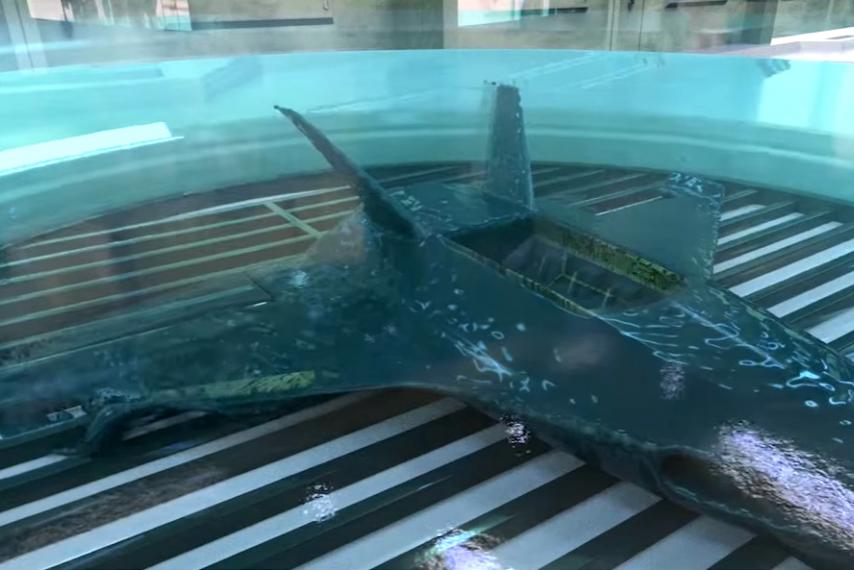

http://3dprintingindustry.com/news/can-really-grow-aircraft-…

Antwort auf Beitrag Nr.: 52.802.104 von Popeye82 am 10.07.16 14:53:06
- During this century, scientists and engineers from BAE Systems and The University of Glasgow envisage that small Unmanned Air Vehicles (UAVs) bespoke to military operations, could be 'grown' in large-scale labs through chemistry, speeding up evolutionary processes and creating bespoke aircraft in WEEKS
and creating bespoke aircraft in WEEKS 
 , RATHER THAN YEARS
, RATHER THAN YEARS 

 . -
. -
- During this century, scientists and engineers from BAE Systems and The University of Glasgow envisage that small Unmanned Air Vehicles (UAVs) bespoke to military operations, could be 'grown' in large-scale labs through chemistry, speeding up evolutionary processes
 and creating bespoke aircraft in WEEKS
and creating bespoke aircraft in WEEKS 
 , RATHER THAN YEARS
, RATHER THAN YEARS 

 . -
. -
platform hört sich interessant an,
" the only fast melt formulation of levetiracetam and the first pharmaceutical product formulated using 3DP that is approved by the U.S. Food and Drug Administration",
HTGC kenne ich bisschen

http://3dprintingindustry.com/news/aprecia-pharmaceuticals-e…
" the only fast melt formulation of levetiracetam and the first pharmaceutical product formulated using 3DP that is approved by the U.S. Food and Drug Administration",
HTGC kenne ich bisschen

http://3dprintingindustry.com/news/aprecia-pharmaceuticals-e…
Antwort auf Beitrag Nr.: 52.802.956 von Popeye82 am 10.07.16 19:34:06
- Digital manufacturing could "reshape the jewellery industry," says designer Lionel T Dean, who has created a collection that is 3D printed in 18 carat gold.
Dean designed the pieces as part of a project called Precious, a collaboration between five companies including software provider Delcam and precious metal supplier Cooksongold, which is aiming to modernise the UK jewellery industry.
The first range, which includes items by Dean and other designers, was unveiled in August at Birmingham City University's School of Jewellery.
"We're here today to launch our collection of 3D-printed gold artefacts to demonstrate to the UK jewellery industry the potential of 3D printing," Dean explains in the movie. "Additive manufacturing with metal allows you to create forms that would be almost impossible to create by conventional means."
While the jewellery industry has used 3D printing to create moulds for a long time, Dean says it has been much slower to take up printing directly with metal.
"The jewellery industry was one of the early adopters of additive technology, using it in an indirect sense," he says. "So printing waxes and casting from those waxes. It's been more reluctant to adopt direct metal processes."
One of the reasons for this is the high value of the raw materials. Initially, Dean tried using a regular laser-sintering machine to produce his jewellery, but the wastage was too high. Cooksongold provided a laser-sintering machine called the Precious M080, which it developed together with 3D printer manufacturer EOS specifically for use with precious metals.
Read more on Dezeen: http://www.dezeen.com/?p=762340 -
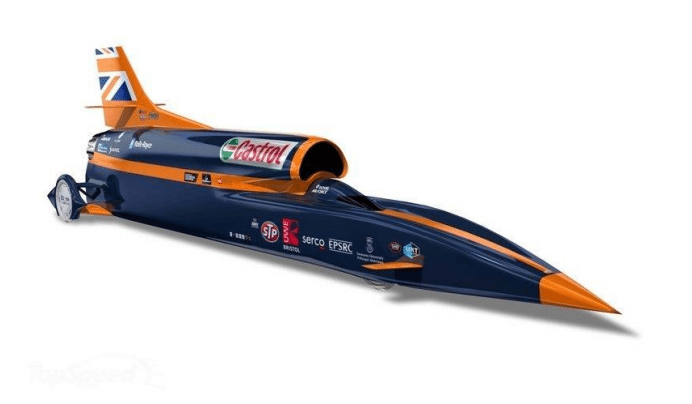
- Digital manufacturing could "reshape the jewellery industry," says designer Lionel T Dean, who has created a collection that is 3D printed in 18 carat gold.
Dean designed the pieces as part of a project called Precious, a collaboration between five companies including software provider Delcam and precious metal supplier Cooksongold, which is aiming to modernise the UK jewellery industry.
The first range, which includes items by Dean and other designers, was unveiled in August at Birmingham City University's School of Jewellery.
"We're here today to launch our collection of 3D-printed gold artefacts to demonstrate to the UK jewellery industry the potential of 3D printing," Dean explains in the movie. "Additive manufacturing with metal allows you to create forms that would be almost impossible to create by conventional means."
While the jewellery industry has used 3D printing to create moulds for a long time, Dean says it has been much slower to take up printing directly with metal.
"The jewellery industry was one of the early adopters of additive technology, using it in an indirect sense," he says. "So printing waxes and casting from those waxes. It's been more reluctant to adopt direct metal processes."
One of the reasons for this is the high value of the raw materials. Initially, Dean tried using a regular laser-sintering machine to produce his jewellery, but the wastage was too high. Cooksongold provided a laser-sintering machine called the Precious M080, which it developed together with 3D printer manufacturer EOS specifically for use with precious metals.
Read more on Dezeen: http://www.dezeen.com/?p=762340 -

Try 3D Printed food in a restaurant today!; Ribalta restaurant chain in New York +Atlanta will install a Beehex 3D printer in its restaurants as the new pizza chef 


http://3dprintingindustry.com/news/pizza-legend-turns-3d-pri…



http://3dprintingindustry.com/news/pizza-legend-turns-3d-pri…
Antwort auf Beitrag Nr.: 52.803.025 von Popeye82 am 10.07.16 19:49:18
- BeeHex, Inc., is led by tech celebrity and CEO, Anjan Contractor, who introduced a state-of-the-art 3D printer that prints pizza fit for NASA’s deep-space missions.
In 2013, BeeHex's technology fascinated the entire world by demonstrating 3D-printed pizza. Now everyone can taste the product of BeeHex's state-of-the-art technology that was first designed for aerospace missions through its Kickstarter.
In 2015, Contractor assembled a world-class team to launch BeeHex. BeeHex’s goal is a 3D printer in every home. It started with the oven range. Then came the microwave. The next product you'll take for granted in your kitchen is the 3D printer.
BeeHex Hex Series 3D printers’ patent-pending pneumatic technology extrudes viscous material from a replaceable cartridge in a clean and efficient process. Hex Series 3D printers have solved problematic dripping and leakage that plague other 3D printers. The result of its technology is visually appealing and representative food. -
- BeeHex, Inc., is led by tech celebrity and CEO, Anjan Contractor, who introduced a state-of-the-art 3D printer that prints pizza fit for NASA’s deep-space missions.
In 2013, BeeHex's technology fascinated the entire world by demonstrating 3D-printed pizza. Now everyone can taste the product of BeeHex's state-of-the-art technology that was first designed for aerospace missions through its Kickstarter.
In 2015, Contractor assembled a world-class team to launch BeeHex. BeeHex’s goal is a 3D printer in every home. It started with the oven range. Then came the microwave. The next product you'll take for granted in your kitchen is the 3D printer.
BeeHex Hex Series 3D printers’ patent-pending pneumatic technology extrudes viscous material from a replaceable cartridge in a clean and efficient process. Hex Series 3D printers have solved problematic dripping and leakage that plague other 3D printers. The result of its technology is visually appealing and representative food. -
Feetz Announces a Strategic Partnership with DSW Inc., to Bring Custom Fit 3D Printed Shoes to the Masses
www.wallstreet-online.de/nachricht/8668034-feetz-announces-a…
"SAN DIEGO, June 8, 2016 /PRNewswire/ -- Feetz, the first company to use 3D printing technology to make custom fit, sustainably made shoes for every pair of feet, announced today that it has entered into a strategic partnership with leading footwear retailer DSW Inc. (NYSE: DSW). Together the two companies plan to use Feetz' technology and DSW Inc.'s considerable retail footprint and customer base to bring affordable custom fit, sustainably made shoes to consumers.
As part of this relationship, DSW Inc. led Feetz's Series A funding which also included participation from existing investors Khosla Ventures and The Jump Fund. Erin Kelly, Senior Director of Innovation at DSW, Inc will join Uli Becker previously CEO of Reebok and Vijit Sabnis of Khosla Ventures on the Feetz board.
"DSW is excited at the possibility of bringing Feetz's innovative technology to our customers. The Feetz model will allow our customers to purchase true custom fit shoes at a fraction of what traditional bespoke shoes cost. We believe that giving customers the ability to purchase on-demand, affordable, custom fit shoes has the potential to disrupt the footwear market as we know it today," said Simon Nankervis Chief Commercial Officer of DSW Inc.
"We've been amazed with the demand and the positive feedback we've received from our early Feetz customers. We've been perfecting and protecting our technology for the last 18 months so every customer gets what they deserve - a shoe that fits. Our new 3D printing manufacturing facility in San Diego, the first of its kind, will fulfill thousands of orders per month. DSW's impressive reach and customer centricity makes them the perfect partner for Feetz," said Lucy Beard, Founder and CEO of Feetz.
About Feetz Feetz is transforming the way people buy — and wear — shoes by using 3D printing technology to create shoes that truly fit your feet. No more breaking in, just stylish, comfortable, custom fit shoes made sustainably in the USA. For more information, visit http://feetz.com/
About DSW Inc. DSW Inc. is a leading branded footwear and accessories retailer that offers a wide selection of brand name and designer dress, casual and athletic footwear and accessories for women, men and kids. As of June 6, 2016, DSW operates 481 stores in 42 states, the District of Columbia and Puerto Rico, and operates an e-commerce site, http://www.dsw.com, and a mobile website http://m.dsw.com. DSW also supplies footwear to 385 locations in the United States under the Affiliated Business Group. For store locations and additional information about DSW, visit http://www.dswinc.com. Press Contacts For more information about Feetz please contact info@feetz.com For more information about DSW Inc please contact investorrelations@dswinc.com Photo - http://photos.prnewswire.com/prnh/20160607/376711 "
www.wallstreet-online.de/nachricht/8668034-feetz-announces-a…
"SAN DIEGO, June 8, 2016 /PRNewswire/ -- Feetz, the first company to use 3D printing technology to make custom fit, sustainably made shoes for every pair of feet, announced today that it has entered into a strategic partnership with leading footwear retailer DSW Inc. (NYSE: DSW). Together the two companies plan to use Feetz' technology and DSW Inc.'s considerable retail footprint and customer base to bring affordable custom fit, sustainably made shoes to consumers.
As part of this relationship, DSW Inc. led Feetz's Series A funding which also included participation from existing investors Khosla Ventures and The Jump Fund. Erin Kelly, Senior Director of Innovation at DSW, Inc will join Uli Becker previously CEO of Reebok and Vijit Sabnis of Khosla Ventures on the Feetz board.
"DSW is excited at the possibility of bringing Feetz's innovative technology to our customers. The Feetz model will allow our customers to purchase true custom fit shoes at a fraction of what traditional bespoke shoes cost. We believe that giving customers the ability to purchase on-demand, affordable, custom fit shoes has the potential to disrupt the footwear market as we know it today," said Simon Nankervis Chief Commercial Officer of DSW Inc.
"We've been amazed with the demand and the positive feedback we've received from our early Feetz customers. We've been perfecting and protecting our technology for the last 18 months so every customer gets what they deserve - a shoe that fits. Our new 3D printing manufacturing facility in San Diego, the first of its kind, will fulfill thousands of orders per month. DSW's impressive reach and customer centricity makes them the perfect partner for Feetz," said Lucy Beard, Founder and CEO of Feetz.
About Feetz Feetz is transforming the way people buy — and wear — shoes by using 3D printing technology to create shoes that truly fit your feet. No more breaking in, just stylish, comfortable, custom fit shoes made sustainably in the USA. For more information, visit http://feetz.com/
About DSW Inc. DSW Inc. is a leading branded footwear and accessories retailer that offers a wide selection of brand name and designer dress, casual and athletic footwear and accessories for women, men and kids. As of June 6, 2016, DSW operates 481 stores in 42 states, the District of Columbia and Puerto Rico, and operates an e-commerce site, http://www.dsw.com, and a mobile website http://m.dsw.com. DSW also supplies footwear to 385 locations in the United States under the Affiliated Business Group. For store locations and additional information about DSW, visit http://www.dswinc.com. Press Contacts For more information about Feetz please contact info@feetz.com For more information about DSW Inc please contact investorrelations@dswinc.com Photo - http://photos.prnewswire.com/prnh/20160607/376711 "
interessant
Oventus will soon stop sleep apnea, globally; Oventus, an Australian company that invented a 3D printed device that stops sleep apnea will be listed on the Australian market, today, after raising $12,000,000

http://3dprintingindustry.com/news/oventus-will-soon-stop-sl…
"Oventus, an Australian company that invented a 3D printed device that stops sleep apnea will be listed on the Australian market today after raising $12m. The funds from the listing will be used to finish commercialisation of the device and to support a global rollout.
Obstructive sleep apnea is a condition where the air passage in the throat becomes obstructed during sleep and causes people to stop breathing.
The founder of Oventus Chris Hart (who has put more than $1 million of his own money into the business), suffers from sleep apnea and had failed to find anything that helped his condition. A former dentist, Hart partnered with the CSIRO. Together they turned his initial device based on an idea developed in his dental surgery, using saliva injector tubes, into a mouth-guard shaped device 3D printed with titanium.
“The first time I trialled the device at home my wife thought I had died because she couldn’t hear me snoring, so she poked me to make sure I was still alive,” Hart says.
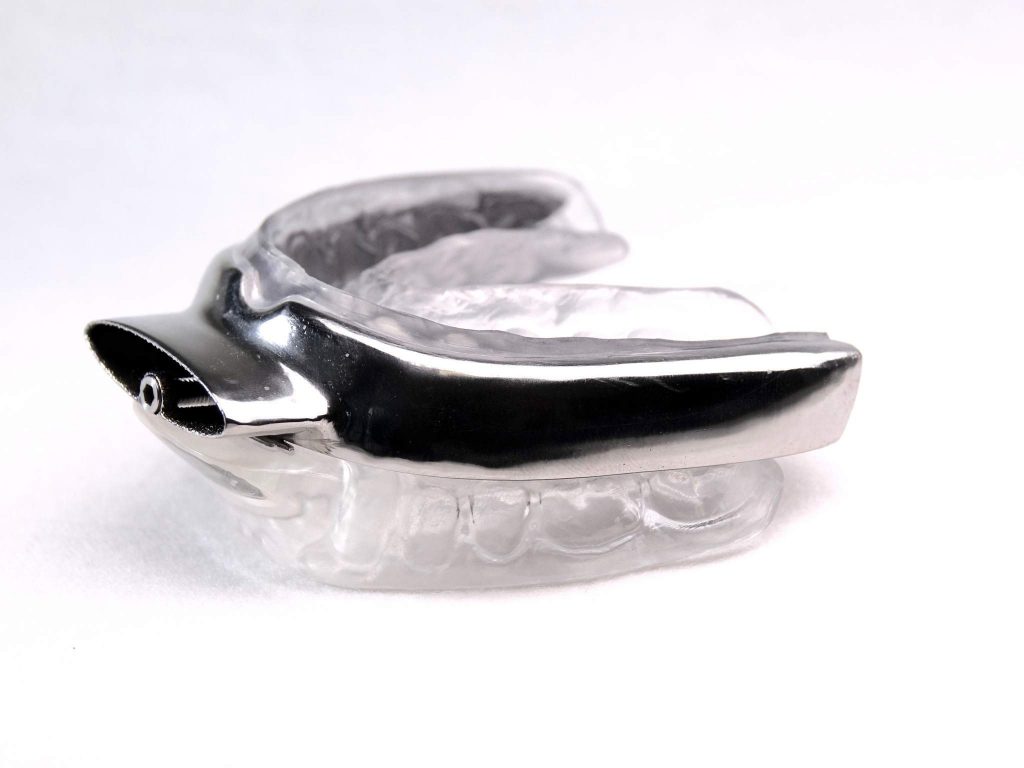
Hart, who took on the role of clinical director at the company, says a US pilot launch of the device is planned for October.
He says the company’s commercialization plans were accelerated at the end of last year after it raised $4m from private investors. Hart says that because of the pace Oventus was running at, it was a logical conclusion to do a market listing for its next round of funding to raise significantly more money to allow it to execute its strategic plan.
“We have done a hell of a lot with not much money up to this point,” he says. “With the money we have raised (before listing) we have made a lot of progress and now we are really running fast to enter the market as quickly as we can.”
“Half of the sleep apnea market suffers from nasal related issues; they are patients we can treat unchallenged at this point in time, which is an unmet need worth billions of dollars globally,” Hart says.

As a sufferer of nasal congestion issues, Hart struggled with other appliances available on the market, such as Inspirate Medical’s 3D printed CPAP mask. So he created the O2Vent, which allows air to flow through to the back of the throat and bypasses nasal and soft palate obstructions and preventing tongue obstructions.
“I saw the saliva injector tubes sitting there and thought if I can get some air down the back of the throat and not have to struggle through my nose and mouth all night that will be a huge benefit,” he says.
“When I worked it out I knew it would be an idea that would create significant value. I walked out of the surgery and said to one of my staff, ‘look at this’, and joked it would be my pension fund.
“I knew it was a good idea, I knew it had legs, I knew I could turn it into a product and a business and it would create a lot of value, but it has certainly gone well past my expectations.”
The O2Vent currently retails for $1,700 AUD, with rebates available from private health insurers in Australia. This covers the cost from start to finish: 3D scanning and printing a custom sized mouth-guard with hand made plastic moulds that fit your teeth.
You can read more about Oventus HERE.
Inspirate Medical’s CPAP Masks
Another company, previously mentioned Inspirate Medical, are also using additive manufacturing to help sleep apnea sufferers. The Singaporean based startup are printing CPAP masks, customizing each patients’ to their face shape and size. Around 50% of CPAP users stop using the masks due to poor fit, but as each mask can be printed to perfectly adapt to the facial contours of the user, this number can be expected to drop.
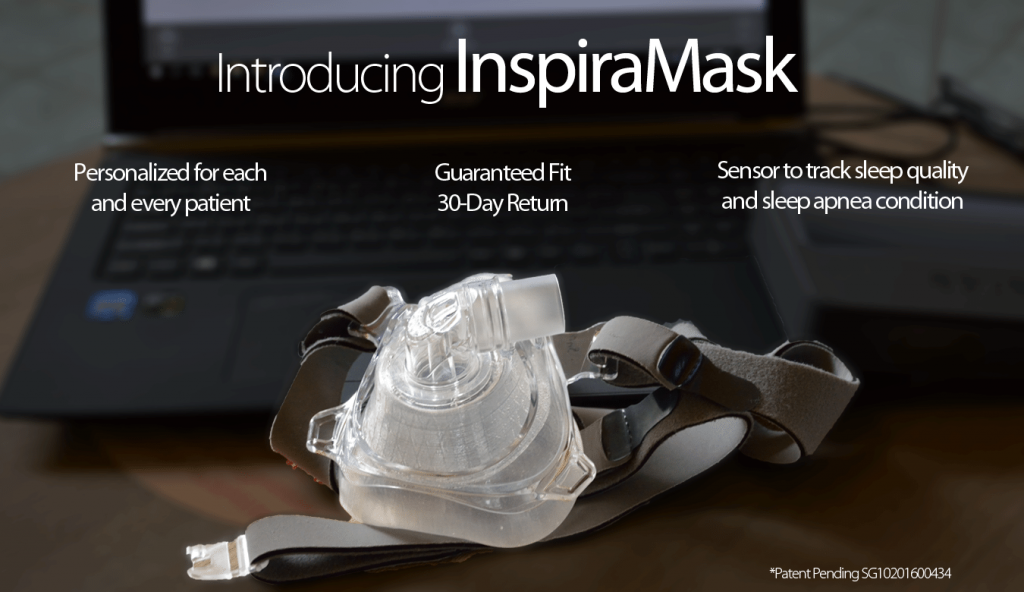
The company is currently looking for around $1 million in investment to scale up production and assist growth in the Singapore, Australian and European markets. At the moment their product looks to be available in Singapore in 2017. You can read more about them, here. "
Oventus will soon stop sleep apnea, globally; Oventus, an Australian company that invented a 3D printed device that stops sleep apnea will be listed on the Australian market, today, after raising $12,000,000

http://3dprintingindustry.com/news/oventus-will-soon-stop-sl…
"Oventus, an Australian company that invented a 3D printed device that stops sleep apnea will be listed on the Australian market today after raising $12m. The funds from the listing will be used to finish commercialisation of the device and to support a global rollout.
Obstructive sleep apnea is a condition where the air passage in the throat becomes obstructed during sleep and causes people to stop breathing.
The founder of Oventus Chris Hart (who has put more than $1 million of his own money into the business), suffers from sleep apnea and had failed to find anything that helped his condition. A former dentist, Hart partnered with the CSIRO. Together they turned his initial device based on an idea developed in his dental surgery, using saliva injector tubes, into a mouth-guard shaped device 3D printed with titanium.
“The first time I trialled the device at home my wife thought I had died because she couldn’t hear me snoring, so she poked me to make sure I was still alive,” Hart says.

Hart, who took on the role of clinical director at the company, says a US pilot launch of the device is planned for October.
He says the company’s commercialization plans were accelerated at the end of last year after it raised $4m from private investors. Hart says that because of the pace Oventus was running at, it was a logical conclusion to do a market listing for its next round of funding to raise significantly more money to allow it to execute its strategic plan.
“We have done a hell of a lot with not much money up to this point,” he says. “With the money we have raised (before listing) we have made a lot of progress and now we are really running fast to enter the market as quickly as we can.”
“Half of the sleep apnea market suffers from nasal related issues; they are patients we can treat unchallenged at this point in time, which is an unmet need worth billions of dollars globally,” Hart says.

As a sufferer of nasal congestion issues, Hart struggled with other appliances available on the market, such as Inspirate Medical’s 3D printed CPAP mask. So he created the O2Vent, which allows air to flow through to the back of the throat and bypasses nasal and soft palate obstructions and preventing tongue obstructions.
“I saw the saliva injector tubes sitting there and thought if I can get some air down the back of the throat and not have to struggle through my nose and mouth all night that will be a huge benefit,” he says.
“When I worked it out I knew it would be an idea that would create significant value. I walked out of the surgery and said to one of my staff, ‘look at this’, and joked it would be my pension fund.
“I knew it was a good idea, I knew it had legs, I knew I could turn it into a product and a business and it would create a lot of value, but it has certainly gone well past my expectations.”
The O2Vent currently retails for $1,700 AUD, with rebates available from private health insurers in Australia. This covers the cost from start to finish: 3D scanning and printing a custom sized mouth-guard with hand made plastic moulds that fit your teeth.
You can read more about Oventus HERE.
Inspirate Medical’s CPAP Masks
Another company, previously mentioned Inspirate Medical, are also using additive manufacturing to help sleep apnea sufferers. The Singaporean based startup are printing CPAP masks, customizing each patients’ to their face shape and size. Around 50% of CPAP users stop using the masks due to poor fit, but as each mask can be printed to perfectly adapt to the facial contours of the user, this number can be expected to drop.

The company is currently looking for around $1 million in investment to scale up production and assist growth in the Singapore, Australian and European markets. At the moment their product looks to be available in Singapore in 2017. You can read more about them, here. "
Antwort auf Beitrag Nr.: 52.868.194 von Popeye82 am 19.07.16 19:57:45
- Maurice Hrovat is the recipient of one of the first Clearway Devices from Oventus, which is designed to prevent sleep apnoea.
After having the device for two weeks, Maurice has found that it's having a fantastic impact on his life by stopping his snoring, which helps his wife sleep better, as well as giving him more energy throughout the day to get up earlier and fit in more exercise.
We partnered with medical device firm Oventus to develop a solution for sleep apnoea, which is a condition that affects a reported one million Australians.
The Clearway Device is 3D printed with titanium and coated with medical grade plastic and uses a 'duckbill' that extends from the mouth like a whistle and divides into two separate airways to allow air to flow through to the back of the throat.
Video transcript available here: http://www.csiro.au/news/transcripts/... -
- Maurice Hrovat is the recipient of one of the first Clearway Devices from Oventus, which is designed to prevent sleep apnoea.
After having the device for two weeks, Maurice has found that it's having a fantastic impact on his life by stopping his snoring, which helps his wife sleep better, as well as giving him more energy throughout the day to get up earlier and fit in more exercise.
We partnered with medical device firm Oventus to develop a solution for sleep apnoea, which is a condition that affects a reported one million Australians.
The Clearway Device is 3D printed with titanium and coated with medical grade plastic and uses a 'duckbill' that extends from the mouth like a whistle and divides into two separate airways to allow air to flow through to the back of the throat.
Video transcript available here: http://www.csiro.au/news/transcripts/... -
Antwort auf Beitrag Nr.: 52.868.194 von Popeye82 am 19.07.16 19:57:45
www.asx.com.au/asxpdf/20160719/pdf/438ndsgypjd8nv.pdf
www.asx.com.au/asxpdf/20160719/pdf/438ndsgypjd8nv.pdf
Antwort auf Beitrag Nr.: 52.902.667 von Popeye82 am 24.07.16 18:08:31
3D Printed In Space! NASA's Unboxing Video
www.space.com/29052-3d-printed-in-space-nasas-unboxing-video…
3D Printed Food Development, Funded By NASA
www.space.com/21254-3d-printed-food-development-funded-by-na…
3D Printed In Space! NASA's Unboxing Video
www.space.com/29052-3d-printed-in-space-nasas-unboxing-video…
3D Printed Food Development, Funded By NASA
www.space.com/21254-3d-printed-food-development-funded-by-na…
Antwort auf Beitrag Nr.: 52.965.313 von Popeye82 am 01.08.16 20:28:51
naja
ich habe 3D Systems und bin leider enttäuscht vom bisherigen Verlauf.......Arcam hat auch erst vor Kurzem enttäuscht mit Zahlen glaube ich...
Antwort auf Beitrag Nr.: 52.965.322 von 232355 am 01.08.16 20:31:46
Dieser Schreiben beabsichtigte keinerlei Wertung,
mehr was man alles für Firmen -"mehr "oder weniger" "-dazuzählen kann.
Dieser Schreiben beabsichtigte keinerlei Wertung,
mehr was man alles für Firmen -"mehr "oder weniger" "-dazuzählen kann.
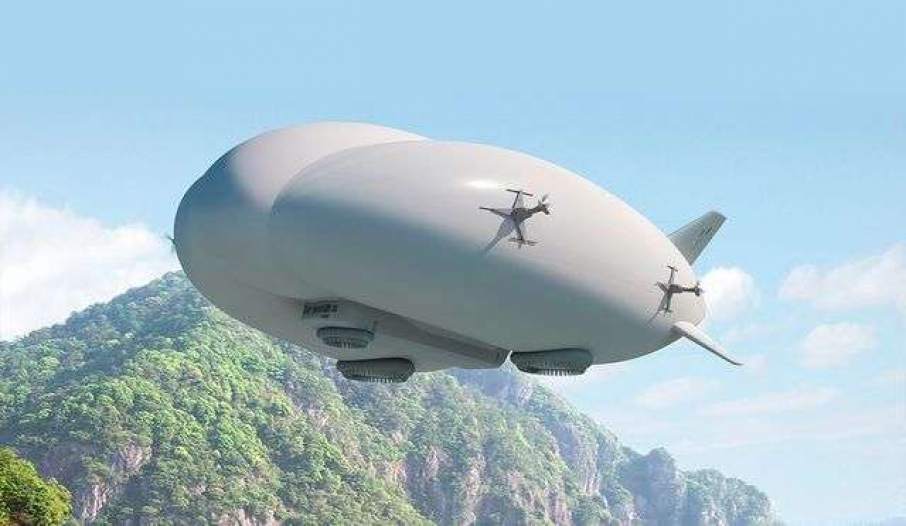
http://3dprintingindustry.com/news/spider-checks-leaks-lockh…
- See how Lockheed Martin Skunk Works’ patented SPIDER (Self-Propelled Instrument for Damage Evaluation and Repair) solves one of the greatest challenges faced by the airship industry. For information about our Hybrid Airship, visit lockheedmartin.com/hybridairship . -
Antwort auf Beitrag Nr.: 53.002.387 von Popeye82 am 05.08.16 23:23:22
- The Lockheed Martin Skunkworks is famous for creating spy planes like the SR71 Blackbird. The Skunkworks engineers are now working on a new kind of airship. And they have also designed a novel solution for repairing the skin of their airship, robots.
Subscribe HERE http://bit.ly/1uNQEWR
Find us online at www.bbc.com/click
Twitter: @bbcclick
Facebook: www.facebook.com/BBCClick -
- The Lockheed Martin Skunkworks is famous for creating spy planes like the SR71 Blackbird. The Skunkworks engineers are now working on a new kind of airship. And they have also designed a novel solution for repairing the skin of their airship, robots.
Subscribe HERE http://bit.ly/1uNQEWR
Find us online at www.bbc.com/click
Twitter: @bbcclick
Facebook: www.facebook.com/BBCClick -
Antwort auf Beitrag Nr.: 52.965.322 von 232355 am 01.08.16 20:31:46naja das war halt der hype und eine absurde bewertung.. dachte damals schon dass da preisdruck aufkommt und da keine gewinne sprudeln werden...
ich denke die sammlung hier ist interessant. man kann sich immer mal wieder überlegen wie man mit dem thema umgeht und womit man geld verdient... kann auch über branchen sein die profitieren oder materialen die mehr benötigt werden als früher.
muss nicht immer der direkte weg sein... ich hab zu dem thema keine große (investment-)idee bisher
ich denke die sammlung hier ist interessant. man kann sich immer mal wieder überlegen wie man mit dem thema umgeht und womit man geld verdient... kann auch über branchen sein die profitieren oder materialen die mehr benötigt werden als früher.
muss nicht immer der direkte weg sein... ich hab zu dem thema keine große (investment-)idee bisher
Doppelschreiben
A magnetic 3D bioprinter, in space!; Russian scientists are working together with the country’s national space agency to create a magnetic 3D bioprinter, that will create actual tissue in the International Space Station. The United Rocket +Space Corporation, which is based in the Skolkovo Innovation Centre, will focus on producing tissue +organ samples, that are highly sensitive to the type of radiation, that is only on offer in space. The effects on the likes of thyroid gland tissue, as well as its subsequent reaction to treatments, could give the scientists an insight into potential cures for a variety of conditions +diseases

http://3dprintingindustry.com/news/a-3d-bioprinter-in-space-…
"Russian scientists are working together with the country’s national space agency to create a magnetic 3D bioprinter that will create actual tissue in the International Space Station.
The United Rocket and Space Corporation, which is based in the Skolkovo Innovation Centre, will focus on producing tissue and organ samples that are highly sensitive to the type of radiation that is only on offer in space.
The effects on the likes of thyroid gland tissue, as well as its subsequent reaction to treatments, could give the scientists an insight into potential cures for a variety of conditions and diseases.
Printing in zero gravity needs magnets
Details of the bioprinter are thin on the ground, but we do know that it is going to be magnetic. Of course, printing tissue in zero gravity comes with its own unique set of challenges, so the magnetic aspect should provide the answer.
The scientists also hope that working in zero gravity will provide new answers that can help speed up the whole bioprinting process and give us new solutions for producing experimental tissues for drug testing.
“The development of a magnetic bioprinter will allow printing tissue and organ constructs which are hypersensitive to the effects of space radiation – sentinel-bodies (eg, thyroid gland) – for biomonitoring of the negative effect of cosmic radiation in the conditions of a prolonged stay in space and for the development of the preventive countermeasures,” said 3D Bioprinting Solutions in a press release.
Bioprinting will be on the ISS, in 2018
The deal was signed on August 1st and the company hopes to be up and running on the ISS by 2018. It will join the Made in Space printer that is already operational and taking on client jobs.
As well as studying problems that have confounded medical science back on Earth, the study will focus on the effects of long-haul space travel on a variety of human tissues. That could provide invaluable insights into the toll that space travel will take on our bodies.
We’re on the verge of a new dawn in space travel and the European Space Agency is now looking at a 3D printed lunar village
 that will serve as a springboard for the rest of the galaxy
that will serve as a springboard for the rest of the galaxy 

 . Inevitably, people will have to endure long periods in space.
. Inevitably, people will have to endure long periods in space.

We cannot rotate back, to Earth, from Mars
The journeys we’re looking at, including trips to Mars, mean they will not be able to rotate and come back to Earth as they can when they are stationed on the ISS or when they are involved in a short-range mission.
Inevitably, that will take its toll on the human body and we’re simply not sure how that will manifest itself as yet. This long-term study could prove invaluable, then, for the whole future of space exploration. It could also help us tackle a number of debilitating conditions and cure diseases back on Earth thanks to a different approach by the Russian scientists working well above our heads.
Russia is working hard, on its space program
The United Rocket and Space Corporation was formed in 2013 as a joint operation and is part of a plan to renationalize the Russian aerospace effort after years in the privately funded wilderness.
In 2015 it began the lengthy process of joining forces with the Russian Federal Space Agency to form a new Roscosmos State Corporation.
Now, with the strong arm of the Russian government overseeing its affairs, Russia’s space program is slowly picking up speed again. President Vladimir Putin personally intervened after a planned launch was delayed at the last minute earlier this year. Now, there’s a big push to get the space program back on track and to put Russia at the forefront of space exploration and other high tech industries. "
A magnetic 3D bioprinter, in space!; Russian scientists are working together with the country’s national space agency to create a magnetic 3D bioprinter, that will create actual tissue in the International Space Station. The United Rocket +Space Corporation, which is based in the Skolkovo Innovation Centre, will focus on producing tissue +organ samples, that are highly sensitive to the type of radiation, that is only on offer in space. The effects on the likes of thyroid gland tissue, as well as its subsequent reaction to treatments, could give the scientists an insight into potential cures for a variety of conditions +diseases

http://3dprintingindustry.com/news/a-3d-bioprinter-in-space-…
"Russian scientists are working together with the country’s national space agency to create a magnetic 3D bioprinter that will create actual tissue in the International Space Station.
The United Rocket and Space Corporation, which is based in the Skolkovo Innovation Centre, will focus on producing tissue and organ samples that are highly sensitive to the type of radiation that is only on offer in space.
The effects on the likes of thyroid gland tissue, as well as its subsequent reaction to treatments, could give the scientists an insight into potential cures for a variety of conditions and diseases.
Printing in zero gravity needs magnets
Details of the bioprinter are thin on the ground, but we do know that it is going to be magnetic. Of course, printing tissue in zero gravity comes with its own unique set of challenges, so the magnetic aspect should provide the answer.
The scientists also hope that working in zero gravity will provide new answers that can help speed up the whole bioprinting process and give us new solutions for producing experimental tissues for drug testing.
“The development of a magnetic bioprinter will allow printing tissue and organ constructs which are hypersensitive to the effects of space radiation – sentinel-bodies (eg, thyroid gland) – for biomonitoring of the negative effect of cosmic radiation in the conditions of a prolonged stay in space and for the development of the preventive countermeasures,” said 3D Bioprinting Solutions in a press release.
Bioprinting will be on the ISS, in 2018
The deal was signed on August 1st and the company hopes to be up and running on the ISS by 2018. It will join the Made in Space printer that is already operational and taking on client jobs.
As well as studying problems that have confounded medical science back on Earth, the study will focus on the effects of long-haul space travel on a variety of human tissues. That could provide invaluable insights into the toll that space travel will take on our bodies.
We’re on the verge of a new dawn in space travel and the European Space Agency is now looking at a 3D printed lunar village

 that will serve as a springboard for the rest of the galaxy
that will serve as a springboard for the rest of the galaxy 

 . Inevitably, people will have to endure long periods in space.
. Inevitably, people will have to endure long periods in space.
We cannot rotate back, to Earth, from Mars
The journeys we’re looking at, including trips to Mars, mean they will not be able to rotate and come back to Earth as they can when they are stationed on the ISS or when they are involved in a short-range mission.
Inevitably, that will take its toll on the human body and we’re simply not sure how that will manifest itself as yet. This long-term study could prove invaluable, then, for the whole future of space exploration. It could also help us tackle a number of debilitating conditions and cure diseases back on Earth thanks to a different approach by the Russian scientists working well above our heads.
Russia is working hard, on its space program
The United Rocket and Space Corporation was formed in 2013 as a joint operation and is part of a plan to renationalize the Russian aerospace effort after years in the privately funded wilderness.
In 2015 it began the lengthy process of joining forces with the Russian Federal Space Agency to form a new Roscosmos State Corporation.
Now, with the strong arm of the Russian government overseeing its affairs, Russia’s space program is slowly picking up speed again. President Vladimir Putin personally intervened after a planned launch was delayed at the last minute earlier this year. Now, there’s a big push to get the space program back on track and to put Russia at the forefront of space exploration and other high tech industries. "
Antwort auf Beitrag Nr.: 53.002.510 von Boersiback am 06.08.16 00:12:14
Ich hab Organovo,
SLM Solutions(bis Du ja schon "voll informiert" (
( 
 )) hatte ich ja schon erwähnt, habe Sie aber nicht,
)) hatte ich ja schon erwähnt, habe Sie aber nicht,
Nano Dimension täte mich noch interessieren mal einen Recherchebericht in die Finger zu bekommen,
was aber vermutlich auf absehbare Zeit nicht drin sein dürfte
Ich hab Organovo,
SLM Solutions(bis Du ja schon "voll informiert"
 (
( 
 )) hatte ich ja schon erwähnt, habe Sie aber nicht,
)) hatte ich ja schon erwähnt, habe Sie aber nicht,Nano Dimension täte mich noch interessieren mal einen Recherchebericht in die Finger zu bekommen,
was aber vermutlich auf absehbare Zeit nicht drin sein dürfte
weiteres Doppeschreiben
3D printed cells could cut animal drug testing

http://3dprintingindustry.com/news/3d-printed-cells-cut-anim…
"Nano3D Biosciences has revealed a technique to reduce animal testing by using its 3D printed cell cultures and magnetic bioprinting as a test for a drug’s effect on vasoactivity.
The contraction and dilation of blood vessels is a critical area of medicine. If we can control these actions with new compounds then we can find new ways to manage heart conditions, prevent a variety of cardiovascular diseases turning into life threatening conditions and make the next generation of Viagra.
Animal testing is inhumane, +inefficient
Currently, these compounds are largely tested on animals. That is inhumane, time-consuming, expensive and the subsequent results with human test subjects often don’t correlate. So a streamlined test procedure with 3D printed tissue cultures could save time, money and help medical researchers focus their efforts on compounds that actually work.
Working together with LC Sciences and AstraZeneca, n3D has come up with a cell-based assay system that allows them to screen cultures quickly. “It demonstrates the vasoactive effect for a panel of vasodilating and vasoconstricting compounds,” said Hubert Tseng, the Senior R&D Scientist and lead author on the study that was published in Scientific Reports. “We validated this assay with bioprinted animal and human cells, and by doing so, we have an alternative to animal testing to screen vasoactivity.”
n3D President and CSO Dr. Glauco Souza added: “The speed and throughput of our vasoactivity assay sets us apart from other 3D cell culturing and 3D bioprinting techniques, such as the ones from Insphero and Organovo. We are looking forward to this assay becoming the standard in compound toxicity testing and in the development of new vasoactive drugs.”

Farming the technique out, to big pharma
The Texas-based company will now look to market the technique to Contract Research Organisations and pharmaceutical companies that want to develop cardiovascular drugs.
“This assay is the only one of its kind on the market that can replace animal testing for vasoactivity studies. This assay not only addresses an unmet need in this space, but also highlights our versatility and innovation of n3D’s magnetic 3D bioprinting technology,” said n3D Director of Sales & Marketing Carl Froberg. “Speed and throughput will greatly assist in controlling cost and enabling better screening of drug candidates earlier in the drug discovery pipeline.”
Animal testing is a controversial subject in the modern age and anything we can do to reduce the amount of drugs tested on them has to be a good thing. As well as the fact that many of the tests simply cannot be replicated with human testing, the regulations regarding animal care and testing mean that it is more expensive than ever.
Animals need proper care
An animal has to be kept in reasonable conditions and there are only so many tests you can run at a time. Printed cell cultures simply need to be stored correctly and the R&D teams can run continuous tests on fresh cultures. That could speed up drug development.
Then there is the goodwill factor. The general public simply does not approve of animal testing in the modern age, it’s a controversial subject and if the R&D companies could avoid it altogether it would be a win-win.
Medical testing is set to be serious business. for 3D printing
3D printing is an integral part of medical development already and it is set to become even more important in the years ahead. A recent study suggested that medical 3D printing would generate $3.89 billion a year by 2022.
While 3D printed prosthetics and implants may grab the headlines, printed cell cultures for rapid drug development could prove to be even more important in the long run. "
3D printed cells could cut animal drug testing

http://3dprintingindustry.com/news/3d-printed-cells-cut-anim…
"Nano3D Biosciences has revealed a technique to reduce animal testing by using its 3D printed cell cultures and magnetic bioprinting as a test for a drug’s effect on vasoactivity.
The contraction and dilation of blood vessels is a critical area of medicine. If we can control these actions with new compounds then we can find new ways to manage heart conditions, prevent a variety of cardiovascular diseases turning into life threatening conditions and make the next generation of Viagra.
Animal testing is inhumane, +inefficient
Currently, these compounds are largely tested on animals. That is inhumane, time-consuming, expensive and the subsequent results with human test subjects often don’t correlate. So a streamlined test procedure with 3D printed tissue cultures could save time, money and help medical researchers focus their efforts on compounds that actually work.
Working together with LC Sciences and AstraZeneca, n3D has come up with a cell-based assay system that allows them to screen cultures quickly. “It demonstrates the vasoactive effect for a panel of vasodilating and vasoconstricting compounds,” said Hubert Tseng, the Senior R&D Scientist and lead author on the study that was published in Scientific Reports. “We validated this assay with bioprinted animal and human cells, and by doing so, we have an alternative to animal testing to screen vasoactivity.”
n3D President and CSO Dr. Glauco Souza added: “The speed and throughput of our vasoactivity assay sets us apart from other 3D cell culturing and 3D bioprinting techniques, such as the ones from Insphero and Organovo. We are looking forward to this assay becoming the standard in compound toxicity testing and in the development of new vasoactive drugs.”

Farming the technique out, to big pharma
The Texas-based company will now look to market the technique to Contract Research Organisations and pharmaceutical companies that want to develop cardiovascular drugs.
“This assay is the only one of its kind on the market that can replace animal testing for vasoactivity studies. This assay not only addresses an unmet need in this space, but also highlights our versatility and innovation of n3D’s magnetic 3D bioprinting technology,” said n3D Director of Sales & Marketing Carl Froberg. “Speed and throughput will greatly assist in controlling cost and enabling better screening of drug candidates earlier in the drug discovery pipeline.”
Animal testing is a controversial subject in the modern age and anything we can do to reduce the amount of drugs tested on them has to be a good thing. As well as the fact that many of the tests simply cannot be replicated with human testing, the regulations regarding animal care and testing mean that it is more expensive than ever.
Animals need proper care
An animal has to be kept in reasonable conditions and there are only so many tests you can run at a time. Printed cell cultures simply need to be stored correctly and the R&D teams can run continuous tests on fresh cultures. That could speed up drug development.
Then there is the goodwill factor. The general public simply does not approve of animal testing in the modern age, it’s a controversial subject and if the R&D companies could avoid it altogether it would be a win-win.
Medical testing is set to be serious business. for 3D printing
3D printing is an integral part of medical development already and it is set to become even more important in the years ahead. A recent study suggested that medical 3D printing would generate $3.89 billion a year by 2022.
While 3D printed prosthetics and implants may grab the headlines, printed cell cultures for rapid drug development could prove to be even more important in the long run. "
Antwort auf Beitrag Nr.: 52.794.130 von Popeye82 am 08.07.16 15:22:09
- The global market for Printed Circuit Boards or PCBs, which totalled nearly $61 ½ billion in 2015, should reach almost $74 billion by 2021.
PCBs are everywhere.
They’re found in all electronic devices and demand is growing fast with the emergence of advanced technologies, such as the Internet-of-Things and wearable tech.
At the same time, the rise in the use of 3D printers is causing massive growth in that market for both hardware, software and specialized inks – and that market is predicted to grow upwards of $8 billion by 2025.
So what do 3D printing and PCBs have to do with each other?
If Israeli tech start-up, Nano Dimension has anything to say about it – the answer may soon be – “A lot”.
Nano Dimension, ticker NNDM, is revolutionizing the way electronics are made with 3D printing.
They’ve built a 3D printer, the Dragonfly 2020, for multi-layer PCBs and they’re developing advanced nanotechnology-based conductive and dielectric inks.
They have a veteran management team and a world-class science team and they’re rolling out one of the most anticipated technologies in the industry that will help engineers and electronics companies radically improve the way they produce PCB prototypes.
The Dragonfly 2020 beats out competing technologies in 4 ways:
1. The PCBs Work – The proprietary dielectric ink is conductive so prototypes coming out of their printer are fully functioning.
2. They print multiple layers – Smaller, more complex devices is driving the demand for PCBs with higher layer counts.
3. They’re faster – With Nano Dimension’s Dragonfly printer the time to get a PCB prototype back for testing is reduced from weeks to hours.
4. They’re more secure – Complex PCB designs are incredibly valuable. When outsourcing production, there’s always a risk of intellectual property theft. Producing prototypes in-house keeps them safe from prying eyes.
More demand for PCB’s means companies need to get prototypes turned around quickly and securely to beat the competition to market and therefore a growing need for innovative solutions like the Dragonfly 2020 3D printer.
With an overall PCB market projected to be worth $74 Billion by 2021, no direct competition and sales expected to begin by the end of 2016 – Nano’s patented 3D printing technology is well positioned to grab market share and build value for shareholders.
So check them out at www.nano-di.com ticker NNDM.
About Nano Dimension
Nano Dimension, founded in 2012, focuses on development of advanced 3D printed electronics systems and advanced additive manufacturing. Nano Dimension’s unique products combine three advanced technologies: 3D inkjet, 3D software and nanomaterials. The company’s primary products include the first 3D printer dedicated to printing multi-layer PCBs (printed circuit boards) and advanced nanotechnology-based conductive and dielectric inks.
Forward Looking Statements
This CEOLIVE.TV video interview contains forward-looking statements within the meaning of the Securities Litigation Reform Act. The statements reflect the Company’s current views with respect to future events that involve risks and uncertainties. Among others, these risks include failure to meet schedule or performance requirements of the Company’s contracts, the Company’s ability to raise sufficient development and working capital, the Company’s liquidity position, the Company’s ability to obtain new contracts, the emergence of competitors with greater financial resources, and the impact of competitive pricing. In the light of these uncertainties, the forward-looking events referred to in this release might not occur as planned or at all.
Contact CEOLIVE.TV
Mike Elliott
newsdesk@ceolive.tv
Disclaimer
Neither CEOLIVE.TV or any of its principals currently owns or plan to own within 72 hours of publication any shares of the stocks mentioned in this video. For a full disclaimer please visit, ceolive.tv/disclaimer.
CEOLIVE content and productions are based on data obtained from sources we believe to be reliable but are not guaranteed as to accuracy and are not purported to be complete. As such, the information should not be construed as advice designed to meet the particular investment needs of any investor. Any opinions expressed in CEOLIVE content and productions, or other investor relations materials and presentations are subject to change. Neither CEOLIVE nor any of its data or content providers shall be liable for any errors or delays in the content, or for any actions taken in reliance thereon. All data and information is provided for informational or entertainment purposes only. CEOLIVE is not a registered broker-dealer or a registered investment advisor. -
- The global market for Printed Circuit Boards or PCBs, which totalled nearly $61 ½ billion in 2015, should reach almost $74 billion by 2021.
PCBs are everywhere.
They’re found in all electronic devices and demand is growing fast with the emergence of advanced technologies, such as the Internet-of-Things and wearable tech.
At the same time, the rise in the use of 3D printers is causing massive growth in that market for both hardware, software and specialized inks – and that market is predicted to grow upwards of $8 billion by 2025.
So what do 3D printing and PCBs have to do with each other?
If Israeli tech start-up, Nano Dimension has anything to say about it – the answer may soon be – “A lot”.
Nano Dimension, ticker NNDM, is revolutionizing the way electronics are made with 3D printing.
They’ve built a 3D printer, the Dragonfly 2020, for multi-layer PCBs and they’re developing advanced nanotechnology-based conductive and dielectric inks.
They have a veteran management team and a world-class science team and they’re rolling out one of the most anticipated technologies in the industry that will help engineers and electronics companies radically improve the way they produce PCB prototypes.
The Dragonfly 2020 beats out competing technologies in 4 ways:
1. The PCBs Work – The proprietary dielectric ink is conductive so prototypes coming out of their printer are fully functioning.
2. They print multiple layers – Smaller, more complex devices is driving the demand for PCBs with higher layer counts.
3. They’re faster – With Nano Dimension’s Dragonfly printer the time to get a PCB prototype back for testing is reduced from weeks to hours.
4. They’re more secure – Complex PCB designs are incredibly valuable. When outsourcing production, there’s always a risk of intellectual property theft. Producing prototypes in-house keeps them safe from prying eyes.
More demand for PCB’s means companies need to get prototypes turned around quickly and securely to beat the competition to market and therefore a growing need for innovative solutions like the Dragonfly 2020 3D printer.
With an overall PCB market projected to be worth $74 Billion by 2021, no direct competition and sales expected to begin by the end of 2016 – Nano’s patented 3D printing technology is well positioned to grab market share and build value for shareholders.
So check them out at www.nano-di.com ticker NNDM.
About Nano Dimension
Nano Dimension, founded in 2012, focuses on development of advanced 3D printed electronics systems and advanced additive manufacturing. Nano Dimension’s unique products combine three advanced technologies: 3D inkjet, 3D software and nanomaterials. The company’s primary products include the first 3D printer dedicated to printing multi-layer PCBs (printed circuit boards) and advanced nanotechnology-based conductive and dielectric inks.
Forward Looking Statements
This CEOLIVE.TV video interview contains forward-looking statements within the meaning of the Securities Litigation Reform Act. The statements reflect the Company’s current views with respect to future events that involve risks and uncertainties. Among others, these risks include failure to meet schedule or performance requirements of the Company’s contracts, the Company’s ability to raise sufficient development and working capital, the Company’s liquidity position, the Company’s ability to obtain new contracts, the emergence of competitors with greater financial resources, and the impact of competitive pricing. In the light of these uncertainties, the forward-looking events referred to in this release might not occur as planned or at all.
Contact CEOLIVE.TV
Mike Elliott
newsdesk@ceolive.tv
Disclaimer
Neither CEOLIVE.TV or any of its principals currently owns or plan to own within 72 hours of publication any shares of the stocks mentioned in this video. For a full disclaimer please visit, ceolive.tv/disclaimer.
CEOLIVE content and productions are based on data obtained from sources we believe to be reliable but are not guaranteed as to accuracy and are not purported to be complete. As such, the information should not be construed as advice designed to meet the particular investment needs of any investor. Any opinions expressed in CEOLIVE content and productions, or other investor relations materials and presentations are subject to change. Neither CEOLIVE nor any of its data or content providers shall be liable for any errors or delays in the content, or for any actions taken in reliance thereon. All data and information is provided for informational or entertainment purposes only. CEOLIVE is not a registered broker-dealer or a registered investment advisor. -
Antwort auf Beitrag Nr.: 52.494.502 von Popeye82 am 28.05.16 16:46:34
- The world’s first fully functional 3D printed building was inaugurated in Dubai by His Highness Shaikh Mohammad Bin Rashid Al Maktoum, Vice-President and Prime Minister of the UAE and Ruler of Dubai,
The unique building on the Emirates Towers premises will house the temporary office of the Dubai Future Foundation.
The first 3D printed office building of its kind in the world prepared for actual use has taken into account the integration of a unique building design and 3D printing technology to offer key services within the building, such as electricity, water, telecommunications and air-conditioning.
Universal innovative design
The world’s first 3D printed office space covers up to 250 square metres, while the exterior design reflects the most innovative forms of the future workplace. The design has been conceived to achieve a shift from the traditional form of work environments and provide greater opportunities to stimulate innovation and communication between workplace teams. It also offers the possibilities for joint work with experts and innovators from around the world, and a platform to inspire ideas and develop relations between employees by establishing new methods for brainstorming sessions and creating a healthy and happy environment. The design also offers space for exhibitions and workshops as well as other events.
The 3D printed office was constructed using a special mixture of cement and a set of building materials designed and made in the UAE and the United States. These materials have undergone a range of tests in both China and the United Kingdom to ensure their reliability. An arc shape was adopted for the building for safety purposes and to ensure the stability of the building.
Innovative features have been adopted in the office building to reduce energy consumption such as window shades to offer protection from direct sunlight and keep the building cool. Latest technology has been used in the management of information systems within the building.
A 3D printer measuring 20 feet high, 120 feet long and 40 feet wide was used to print the building. The printer features an automated robotic arm to implement the printing process. -
- The world’s first fully functional 3D printed building was inaugurated in Dubai by His Highness Shaikh Mohammad Bin Rashid Al Maktoum, Vice-President and Prime Minister of the UAE and Ruler of Dubai,
The unique building on the Emirates Towers premises will house the temporary office of the Dubai Future Foundation.
The first 3D printed office building of its kind in the world prepared for actual use has taken into account the integration of a unique building design and 3D printing technology to offer key services within the building, such as electricity, water, telecommunications and air-conditioning.
Universal innovative design
The world’s first 3D printed office space covers up to 250 square metres, while the exterior design reflects the most innovative forms of the future workplace. The design has been conceived to achieve a shift from the traditional form of work environments and provide greater opportunities to stimulate innovation and communication between workplace teams. It also offers the possibilities for joint work with experts and innovators from around the world, and a platform to inspire ideas and develop relations between employees by establishing new methods for brainstorming sessions and creating a healthy and happy environment. The design also offers space for exhibitions and workshops as well as other events.
The 3D printed office was constructed using a special mixture of cement and a set of building materials designed and made in the UAE and the United States. These materials have undergone a range of tests in both China and the United Kingdom to ensure their reliability. An arc shape was adopted for the building for safety purposes and to ensure the stability of the building.
Innovative features have been adopted in the office building to reduce energy consumption such as window shades to offer protection from direct sunlight and keep the building cool. Latest technology has been used in the management of information systems within the building.
A 3D printer measuring 20 feet high, 120 feet long and 40 feet wide was used to print the building. The printer features an automated robotic arm to implement the printing process. -
Antwort auf Beitrag Nr.: 52.849.687 von Popeye82 am 17.07.16 02:59:05
- At New York Fashion Week 2016, Stratasys has made fashion history with two new spectacular 3D printed dresses. Created by breakthrough fashion designers threeASFOUR and Travis Fitch, the ‘Pangolin’ and ‘Harmonograph’ 3D printed dresses form part of threeASFOUR’s Biomimicry collection. Both were produced with the Stratasys’ Objet500 Connex3 3D Printer.
The 3D printed dresses were created with a special nano enhanced elastomeric 3D printing material, commercially available later in 2016, which essentially forms a brand new textile that stretches 6 different ways - up and down, left and right, forwards and backwards - “creating a whole new type of movement,” according to Gabi Asfour from threeASFOUR.
The collaboration with threeASFOUR is the latest in a series of high-profile fashion and design collaborations for Stratasys, which have included Prof. Neri Oxman, Iris van Herpen, Francis Bitonti, Julia Koerner, Eyal Gever, Nick Ervinck, Zaha Hadid Architects and more.
Watch this inspiring video to hear how threeASFOUR’s Gabi Asfour, Adi Gil and Angela Donhauser, as well as NY-based designer Travis Fitch, are using Stratasys 3D printing to redefine possible in fashion and design. Don’t miss seeing the 3D printed dresses on the runway at the end of the video! -
- At New York Fashion Week 2016, Stratasys has made fashion history with two new spectacular 3D printed dresses. Created by breakthrough fashion designers threeASFOUR and Travis Fitch, the ‘Pangolin’ and ‘Harmonograph’ 3D printed dresses form part of threeASFOUR’s Biomimicry collection. Both were produced with the Stratasys’ Objet500 Connex3 3D Printer.
The 3D printed dresses were created with a special nano enhanced elastomeric 3D printing material, commercially available later in 2016, which essentially forms a brand new textile that stretches 6 different ways - up and down, left and right, forwards and backwards - “creating a whole new type of movement,” according to Gabi Asfour from threeASFOUR.
The collaboration with threeASFOUR is the latest in a series of high-profile fashion and design collaborations for Stratasys, which have included Prof. Neri Oxman, Iris van Herpen, Francis Bitonti, Julia Koerner, Eyal Gever, Nick Ervinck, Zaha Hadid Architects and more.
Watch this inspiring video to hear how threeASFOUR’s Gabi Asfour, Adi Gil and Angela Donhauser, as well as NY-based designer Travis Fitch, are using Stratasys 3D printing to redefine possible in fashion and design. Don’t miss seeing the 3D printed dresses on the runway at the end of the video! -
Antwort auf Beitrag Nr.: 53.005.114 von Popeye82 am 06.08.16 17:23:19
http://wsw.com/webcast/canaccord23/register.aspx?conf=canacc…
http://wsw.com/webcast/canaccord23/register.aspx?conf=canacc…
Antwort auf Beitrag Nr.: 53.004.787 von Popeye82 am 06.08.16 15:55:07oh, das gefällt mir... weniger tierversuche.. in die richtung wär´s dann auch moralisch ein tolles invest
The Four Most Promising 3D Printing Investment Opportunities for 2016 (Januer '16)
https://3dprint.com/113912/promising-3dp-investments/
Antwort auf Beitrag Nr.: 53.005.270 von Popeye82 am 06.08.16 18:09:41
Teilnehmer,
Alle
paar bekannte Namen,
mind. 1 meiner AGs ist auch da
http://wsw.com/webcast/canaccord23/
Teilnehmer,
Alle
paar bekannte Namen,
mind. 1 meiner AGs ist auch da
http://wsw.com/webcast/canaccord23/
- Aurora Flight Sciences, a Virginia-based manufacturer specializing in advanced UAV systems, is pushing the envelope of UAV design by teaming up with Stratasys to create the world’s first jet-powered, 3D printed aircraft.
Using 80% 3D printed parts, the UAV is composed of Stratasys’ ULTEM™ 9085 lightweight material to achieve flight speeds of over 150 Mph. The high-speed system boasts an impressive 9 ft wingspan and weighs in at only 33 lbs.
Watch Dan Campbell, Aerospace Research Engineer at Aurora Flight Sciences, explain how the UAV project met a number of goals using Stratasys 3D printing solutions. -
Antwort auf Beitrag Nr.: 53.005.150 von Popeye82 am 06.08.16 17:37:31Stratasys WKN: A1J5UR ISIN: IL0011267213
Ist ein gutes und vielversprechendes Unternehmen, die sind doch eine Tochter von HP, oder?
Ist ein gutes und vielversprechendes Unternehmen, die sind doch eine Tochter von HP, oder?
Antwort auf Beitrag Nr.: 53.005.276 von Boersiback am 06.08.16 18:11:30
Würdest Du in der (Eingangs)Umfrage vielleicht mal für 4 Voten?
Das wäre für meinen inner Seelenfrieden sehr schön
Würdest Du in der (Eingangs)Umfrage vielleicht mal für 4 Voten?
Das wäre für meinen inner Seelenfrieden sehr schön
Der Kurs der Alphaform erwacht zu neuem Leben. Was könnte dahinterstehen, wenn die Aktien der insoventen Firma aufgekauft werden. Wie könnte die Quote aussehen?
Antwort auf Beitrag Nr.: 53.005.921 von blumstar am 06.08.16 21:19:46
Das weiss ich nicht.
Wenn ich aber auf Wiki die "History" lese hört es sich so an als ob sie (nur), mal, ~2,5jahre für HP fabriziert haben.
Mehr nicht.
Das weiss ich nicht.
Wenn ich aber auf Wiki die "History" lese hört es sich so an als ob sie (nur), mal, ~2,5jahre für HP fabriziert haben.
Mehr nicht.
Disney reveals new thermoforming process; The creator of Mickey Mouse has uncovered a new technique for computational thermoforming objects, with a textured film that could change the dolls +figurines. This process will work in a lot of other industries, too +could change thermoforming, forever

https://3dprintingindustry.com/news/disney-reveals-new-therm…
"The creator of Mickey Mouse has uncovered a new technique for computational thermoforming objects with a textured film that could change the dolls and figurines of the future. This process will work in a lot of other industries, too and could change thermoforming forever.
At the moment, dolls are painted and finished after the basic forming process to ensure a quality finish. This is a complex and inefficient process, but Disney may have the answer and it’s a twist on thermoforming.
Distortion maps hold the key
This is a staple process in the plastics and packaging industries, but stretching heated plastic over a mold is limited right now. That’s especially true when it comes to adding a design. But Disney has found a way to exploit 3D scanning to create a distortion map, make a mold and then to use a film with the texture or coloring already in place.
We simply didn’t have the computing power to predict the stretch of the material and how it would look when distorted on to a mould. But now Disney believes it has cracked this code and has released a video showing just what is possible with a pattern and pre-printed texture and design on a molded face.
Faces aren’t the easiest things, to map
With a number of curved and complex surfaces, a face is an exceptionally difficult area to map. If Disney can do this, as well as the tree trunk and loaf of bread that it revealed, then it can add a great deal of detail to its thermoformed models. That means it can provide more advanced dolls, figurines and other merchandise in the future.
Technically it’s a process you can do at home as well, using a laser printer to produce the desired pattern on transfer paper, before using a thermal press to transfer the print to the plastic sheet. You can then thermoform this plastic to a gypsum mold, but without the computer assistance of Disney’s advanced algorithms, then you might have to experiment to get the perfect result.
Disney still makes the mold from heat-resistant gypsum, which must then be precisely placed on a calibrated bed for the whole process to work. Robots could potentially handle this, of course, but Disney is surely working behind the scenes on streamlining the process further. If it can then even tomorrow’s packing could change beyond recognition.

It’s easy to see why Disney has invested heavily in 3D printing and other high tech manufacturing techniques. Its merchandise sells around the world and the characters from Frozen, Mickey Mouse, Donald Duck and the rest of the Disney gang generated more than $40 billion in 2014. So anything it can do to streamline the production process can have a significant impact on its profits.
Disney has invested heavily in 3D printing and recently revealed what it described as a 3D photocopier that essentially scans and copies an item without any structural supports.
That technology will work for a vast number of industries and this new approach to printed thermoforming is no different. The predictive computing power gives Disney the power to apply a level of detail that we just haven’t seen before and the media giant has shown us a totally new approach an age-old process.
We think there’s going to be a lot more coming from the home of Mickey Mouse. "

https://3dprintingindustry.com/news/disney-reveals-new-therm…
"The creator of Mickey Mouse has uncovered a new technique for computational thermoforming objects with a textured film that could change the dolls and figurines of the future. This process will work in a lot of other industries, too and could change thermoforming forever.
At the moment, dolls are painted and finished after the basic forming process to ensure a quality finish. This is a complex and inefficient process, but Disney may have the answer and it’s a twist on thermoforming.
Distortion maps hold the key
This is a staple process in the plastics and packaging industries, but stretching heated plastic over a mold is limited right now. That’s especially true when it comes to adding a design. But Disney has found a way to exploit 3D scanning to create a distortion map, make a mold and then to use a film with the texture or coloring already in place.
We simply didn’t have the computing power to predict the stretch of the material and how it would look when distorted on to a mould. But now Disney believes it has cracked this code and has released a video showing just what is possible with a pattern and pre-printed texture and design on a molded face.
Faces aren’t the easiest things, to map
With a number of curved and complex surfaces, a face is an exceptionally difficult area to map. If Disney can do this, as well as the tree trunk and loaf of bread that it revealed, then it can add a great deal of detail to its thermoformed models. That means it can provide more advanced dolls, figurines and other merchandise in the future.
Technically it’s a process you can do at home as well, using a laser printer to produce the desired pattern on transfer paper, before using a thermal press to transfer the print to the plastic sheet. You can then thermoform this plastic to a gypsum mold, but without the computer assistance of Disney’s advanced algorithms, then you might have to experiment to get the perfect result.
Disney still makes the mold from heat-resistant gypsum, which must then be precisely placed on a calibrated bed for the whole process to work. Robots could potentially handle this, of course, but Disney is surely working behind the scenes on streamlining the process further. If it can then even tomorrow’s packing could change beyond recognition.

It’s easy to see why Disney has invested heavily in 3D printing and other high tech manufacturing techniques. Its merchandise sells around the world and the characters from Frozen, Mickey Mouse, Donald Duck and the rest of the Disney gang generated more than $40 billion in 2014. So anything it can do to streamline the production process can have a significant impact on its profits.
Disney has invested heavily in 3D printing and recently revealed what it described as a 3D photocopier that essentially scans and copies an item without any structural supports.
That technology will work for a vast number of industries and this new approach to printed thermoforming is no different. The predictive computing power gives Disney the power to apply a level of detail that we just haven’t seen before and the media giant has shown us a totally new approach an age-old process.
We think there’s going to be a lot more coming from the home of Mickey Mouse. "
Antwort auf Beitrag Nr.: 53.006.134 von Popeye82 am 06.08.16 22:22:16
Der Visualbeitrag dazu
- This 3D-printer is much more than a simple Thing Machine.
Well, maybe it is, like all 3D-printers, a sort of Thing Machine. But the things this one makes are much cooler than the other things, made by other machines.
Researchers at Disney, of all places, have figured out a way to use an old technique to make realistic 3D-printed objects. It's called computational theraforming and it, like most words describing something complicated and scientific, would be extremely hard to say if you had a lisp. Which is sort of cruel, right?
Subscribe! http://www.youtube.com/subscription_c...
See more on our website: http://www.vocativ.com
Follow us on Twitter: https://twitter.com/vocativ
Like us on Facebook: https://www.facebook.com/Vocativ -
Der Visualbeitrag dazu
- This 3D-printer is much more than a simple Thing Machine.
Well, maybe it is, like all 3D-printers, a sort of Thing Machine. But the things this one makes are much cooler than the other things, made by other machines.
Researchers at Disney, of all places, have figured out a way to use an old technique to make realistic 3D-printed objects. It's called computational theraforming and it, like most words describing something complicated and scientific, would be extremely hard to say if you had a lisp. Which is sort of cruel, right?
Subscribe! http://www.youtube.com/subscription_c...
See more on our website: http://www.vocativ.com
Follow us on Twitter: https://twitter.com/vocativ
Like us on Facebook: https://www.facebook.com/Vocativ -
Antwort auf Beitrag Nr.: 53.006.104 von Popeye82 am 06.08.16 22:14:39Doch ich mein das zu wissen. Werd da mal graben, aber die Firma ist erste Wahl in diesen Thema.
Ich hoff das ich das nochmal finde.
Ich hoff das ich das nochmal finde.
Antwort auf Beitrag Nr.: 53.006.161 von blumstar am 06.08.16 22:33:05
Najaaa,
wenn Du den 3D Druck insgesamt meinst melde ich da (massive)Zweifel an
Die Spezialisten sind der interessante Platz to be, nicht die Bulk Ware Anbieter
(zu Denen Sie m.W.n. gehören)
Zitat von blumstar: aber die Firma ist erste Wahl in diesen Thema
Najaaa,
wenn Du den 3D Druck insgesamt meinst melde ich da (massive)Zweifel an

Die Spezialisten sind der interessante Platz to be, nicht die Bulk Ware Anbieter
(zu Denen Sie m.W.n. gehören)
Antwort auf Beitrag Nr.: 53.006.230 von Popeye82 am 06.08.16 23:21:10Falsch...

Antwort auf Beitrag Nr.: 53.006.287 von blumstar am 06.08.16 23:35:55
O.K.
(keine Ahnung welcher Teil)
O.K.

(keine Ahnung welcher Teil)
3Dp rocket fuel is here, thanks to Gilmour Space Tech; The aerospace industry is one of many that has welcomed 3D printing, with open arms. From prototyping to parts replacement +creation, additive manufacturing is used in a variety of different ways. Tools are being printed on the ISS, +basically every part of a rocket is being 3D printed, including fuel 

 thanks, to Gilmour Space Technologies.
thanks, to Gilmour Space Technologies.
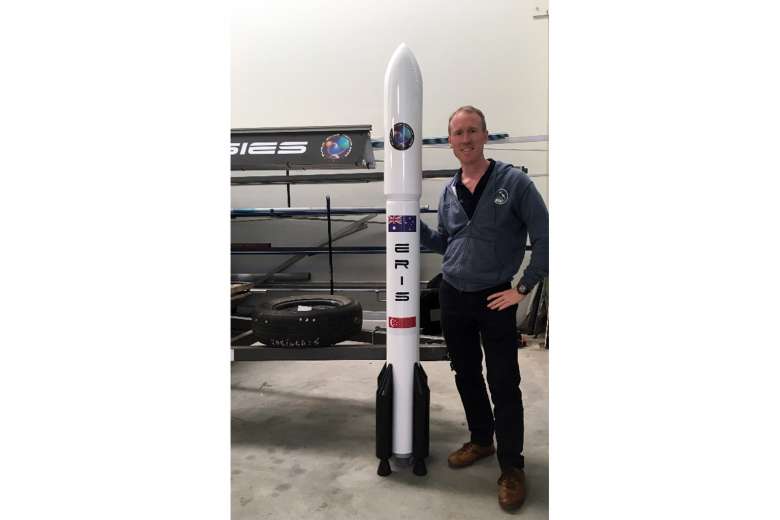
http://3dprintingindustry.com/news/3dp-rocket-fuel-is-here-t…
"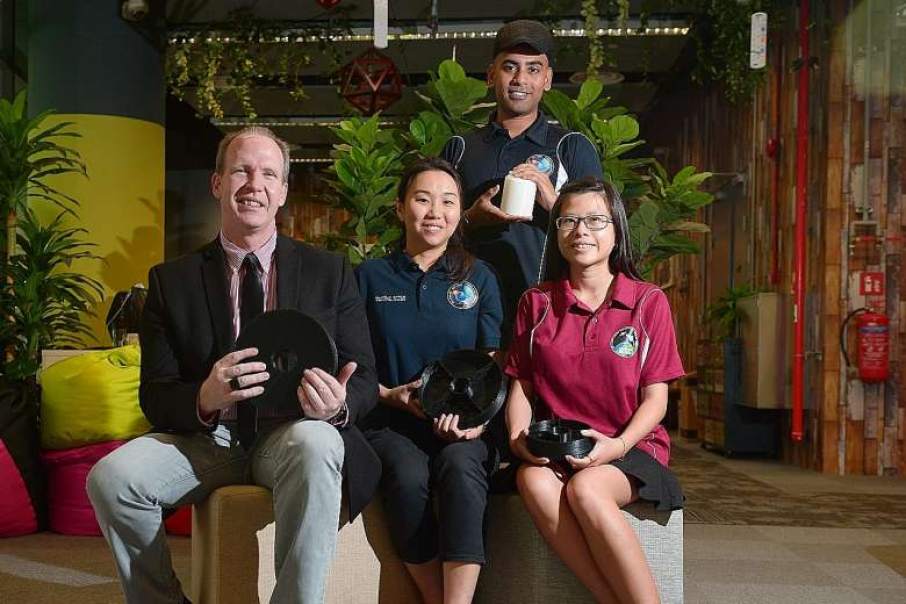
The aerospace industry is one of many that has welcomed 3D printing with open arms. From prototyping to parts replacement and creation, additive manufacturing is used in a variety of different ways. Tools are being printed on the ISS, and basically every part of a rocket is being 3D printed, including fuel thanks to Gilmour Space Technologies.
3D printed fuel
Singaporean start-up Gilmour Space Technologies launched a self-made rocket in Australia 2 weeks ago that was powered by 3D printed fuel. It is the first time fuel has been 3D printed, and is reportedly made from the combination of two different materials (they are keeping the recipe top secret though). They recently tested their fuel in a rocket launch. The 3.6m long rocket was sent up towards orbit from the ground in Queensland, Australia, and went up approximately 5km. It proved a success, with their 3D printed fuel demonstrating it was functionally sound.
Along with their launch site in Australia, Gilmour Space Technologies is working with NASA to develop more launch sites in the United States.
The team responsible for this feat consists of seven researchers, engineers and ex-bankers in the campus of the Singapore University of Technology and Design (SUTD), where Gilmour Space Technologies’ office resides. They have designed a 3D printer, currently a prototype and patent-pending, specifically to print fuel.
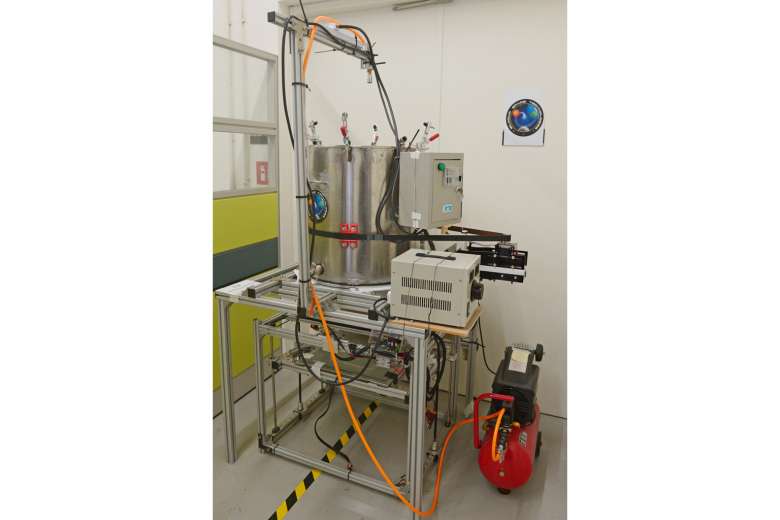
“Dual material 3D printers are in use today, but they are small with limited choices in terms of materials,” said Mrs Michelle Gilmour, who co-founded the start-up with her husband Adam, an Australian, four years ago.
“Our proprietary rocket fuel cannot be printed with existing 3D printers,” said the 42-year-old.
The start-up is a beneficiary of the National Additive Manufacturing Innovation Cluster – formed last September by Spring Singapore and the National Research Foundation to help companies develop capabilities in 3D printing – having received a “six-figure” sum in funding through SUTD.
The aim of Gilmour Space Technologies is to provide rockets to carry small loads like satellites for sub-orbital experiments within the next 18 months. They are also currently building a larger commercial version of the 3D printer. The company plans to set the price for each launch at US$750,000 as opposed to the US$1 million or more it costs at the moment.
Plans for larger rockets are also in the works, but they need more funding for this to happen. They estimate that they can cut large scale rocket launch costs down to $5 million (from US $15 million currently)
 .
.
“We think the space industry is going through a renaissance. There are more and more uses being developed for space satellites in areas such as earth observation, global communication systems and asteroid mining,” said Mrs Gilmour.
“SUTD is key to this success. They are involved in many aspects of our business,” said Mrs Gilmour, adding that the researchers and engineers in her company are SUTD graduates.
She recognised that Singapore is not a usual place for starting a space business, but noted: “The government is recognising space as a new and emerging business area, which is very encouraging.” "


 thanks, to Gilmour Space Technologies.
thanks, to Gilmour Space Technologies.
http://3dprintingindustry.com/news/3dp-rocket-fuel-is-here-t…
"

The aerospace industry is one of many that has welcomed 3D printing with open arms. From prototyping to parts replacement and creation, additive manufacturing is used in a variety of different ways. Tools are being printed on the ISS, and basically every part of a rocket is being 3D printed, including fuel thanks to Gilmour Space Technologies.
3D printed fuel
Singaporean start-up Gilmour Space Technologies launched a self-made rocket in Australia 2 weeks ago that was powered by 3D printed fuel. It is the first time fuel has been 3D printed, and is reportedly made from the combination of two different materials (they are keeping the recipe top secret though). They recently tested their fuel in a rocket launch. The 3.6m long rocket was sent up towards orbit from the ground in Queensland, Australia, and went up approximately 5km. It proved a success, with their 3D printed fuel demonstrating it was functionally sound.
Along with their launch site in Australia, Gilmour Space Technologies is working with NASA to develop more launch sites in the United States.
The team responsible for this feat consists of seven researchers, engineers and ex-bankers in the campus of the Singapore University of Technology and Design (SUTD), where Gilmour Space Technologies’ office resides. They have designed a 3D printer, currently a prototype and patent-pending, specifically to print fuel.

“Dual material 3D printers are in use today, but they are small with limited choices in terms of materials,” said Mrs Michelle Gilmour, who co-founded the start-up with her husband Adam, an Australian, four years ago.
“Our proprietary rocket fuel cannot be printed with existing 3D printers,” said the 42-year-old.
The start-up is a beneficiary of the National Additive Manufacturing Innovation Cluster – formed last September by Spring Singapore and the National Research Foundation to help companies develop capabilities in 3D printing – having received a “six-figure” sum in funding through SUTD.
The aim of Gilmour Space Technologies is to provide rockets to carry small loads like satellites for sub-orbital experiments within the next 18 months. They are also currently building a larger commercial version of the 3D printer. The company plans to set the price for each launch at US$750,000 as opposed to the US$1 million or more it costs at the moment.
Plans for larger rockets are also in the works, but they need more funding for this to happen. They estimate that they can cut large scale rocket launch costs down to $5 million (from US $15 million currently)

 .
.“We think the space industry is going through a renaissance. There are more and more uses being developed for space satellites in areas such as earth observation, global communication systems and asteroid mining,” said Mrs Gilmour.
“SUTD is key to this success. They are involved in many aspects of our business,” said Mrs Gilmour, adding that the researchers and engineers in her company are SUTD graduates.
She recognised that Singapore is not a usual place for starting a space business, but noted: “The government is recognising space as a new and emerging business area, which is very encouraging.” "
Antwort auf Beitrag Nr.: 53.007.595 von Popeye82 am 07.08.16 13:25:37
www.gspacetech.com
- Video montage of the history making RASTA 2 launch at Westmar central west Queensland; Australia's first privately developed hybrid sounding rocket.. -
- Phone video from one of the launch team from our mission control position. -
www.gspacetech.com
- Video montage of the history making RASTA 2 launch at Westmar central west Queensland; Australia's first privately developed hybrid sounding rocket.. -
- Phone video from one of the launch team from our mission control position. -
Antwort auf Beitrag Nr.: 53.006.161 von blumstar am 06.08.16 22:33:05Nee das stimmt doch nicht, von wegen Tochter der HP. Komisch und ich mein doch das ich das mal so gelesen habe. Stratasy ist ne ziemliche Chance m.M.n.
Noch ein Doppelschreiben
3D Printer Starts Work in Formula 1

http://3dprintingindustry.com/news/3d-printer-starts-work-fo…
"We’ve already heard about a 3D printed Formula 1 car, but what about 3D printing having a more permanent place in Formula 1?
A SLM 500 printer has taken its place within this niche part of the automotive industry, and is expected to help to increase the amount of parts produced for Formula 1 cars. The printer itself prints in metal and cost £800,000, though in comparison the cars it’ll be producing parts for, it’s certainly worth the cost. The SLM 500 printer was manufactured in Germany and purchased by CA models, and has the ability to print customised 3D designs in aluminium, using a build space of up to 500 x 280 x 365 mm³. It is said that this service is the first of its kind to be working in F1 in the UK.
The investment was funded with support from Clydeside Bank, will allow for the business to begin their growth strategy.
Not only does CA Models produce for Formula 1 teams, they also produce for a wide range of other industries, including:
Aerospace
Automotive
Defence
Oil
Gas
Medical
Product Design
“Over the next 18 months the target is to implement ISO 9001 accreditation which will elevate our existing status as a supplier to the aerospace and defence industries, and attract new customers requiring ISO 9001 approved components,” explains Clark Campbell, the owner and managing director of CA Models.
Campbell had dreams as child of becoming a professional footballer, and left school at the age of 15 to achieve this. He even played at West Bromwich Album and St Johnstone, though he unfortunately sustained an injury which meant he could no longer play professionally.
He then went on to start an engineering apprenticeship for making patterns, and eventually founded CA Models at the age of 25 in 1983.
AAEAAQAAAAAAAAZ1AAAAJDZiY2YxMzc3LWVkYTEtNDZiZi05ZmU5LTdlMjMwM2I1MmMxZA
Campbell also mentions, “Formula 1 is a sector we expect to see growth in too. We’re already getting orders in for components for next year’s cars which are even more technically advanced than this year’s.”
This investment opens many opportunities for the company, which Campbell explains further: “The new metal 3D printer helps us to create components in a quicker, more cost effective and precise way than traditional machining. This sets us apart from our competitors and provides a solid platform to build future growth.”
“Previously companies looking for prototypes or parts would send designs to machining firms who could take weeks to return the finished article, but with our new equipment, we can generate a physical model from its design within a day or two.”
“The precision offered by the SLM 500 printer means we can make products that simply could not have been made by other means. For example we can incorporate hidden holes in a model which can drastically reduce weight without compromising strength.”
Simon Kerr is the head of Clydesdale Bank’s Customer Banking Centre in Stirling supports the decision. He adds: “CA Models is an excellent example of a business targeting growth through innovation.”
He also mentions, “Having only the second machine of its type and the only one available for commercial use makes the firm’s offering unique and stands them in good stead for future growth.”
3D printing is making Formula 1 yet another permanent home for development and manufacture, and it certainly has many professionals in the industry looking to the future. "
3D Printer Starts Work in Formula 1

http://3dprintingindustry.com/news/3d-printer-starts-work-fo…
"We’ve already heard about a 3D printed Formula 1 car, but what about 3D printing having a more permanent place in Formula 1?
A SLM 500 printer has taken its place within this niche part of the automotive industry, and is expected to help to increase the amount of parts produced for Formula 1 cars. The printer itself prints in metal and cost £800,000, though in comparison the cars it’ll be producing parts for, it’s certainly worth the cost. The SLM 500 printer was manufactured in Germany and purchased by CA models, and has the ability to print customised 3D designs in aluminium, using a build space of up to 500 x 280 x 365 mm³. It is said that this service is the first of its kind to be working in F1 in the UK.
The investment was funded with support from Clydeside Bank, will allow for the business to begin their growth strategy.
Not only does CA Models produce for Formula 1 teams, they also produce for a wide range of other industries, including:
Aerospace
Automotive
Defence
Oil
Gas
Medical
Product Design
“Over the next 18 months the target is to implement ISO 9001 accreditation which will elevate our existing status as a supplier to the aerospace and defence industries, and attract new customers requiring ISO 9001 approved components,” explains Clark Campbell, the owner and managing director of CA Models.
Campbell had dreams as child of becoming a professional footballer, and left school at the age of 15 to achieve this. He even played at West Bromwich Album and St Johnstone, though he unfortunately sustained an injury which meant he could no longer play professionally.
He then went on to start an engineering apprenticeship for making patterns, and eventually founded CA Models at the age of 25 in 1983.
AAEAAQAAAAAAAAZ1AAAAJDZiY2YxMzc3LWVkYTEtNDZiZi05ZmU5LTdlMjMwM2I1MmMxZA
Campbell also mentions, “Formula 1 is a sector we expect to see growth in too. We’re already getting orders in for components for next year’s cars which are even more technically advanced than this year’s.”
This investment opens many opportunities for the company, which Campbell explains further: “The new metal 3D printer helps us to create components in a quicker, more cost effective and precise way than traditional machining. This sets us apart from our competitors and provides a solid platform to build future growth.”
“Previously companies looking for prototypes or parts would send designs to machining firms who could take weeks to return the finished article, but with our new equipment, we can generate a physical model from its design within a day or two.”
“The precision offered by the SLM 500 printer means we can make products that simply could not have been made by other means. For example we can incorporate hidden holes in a model which can drastically reduce weight without compromising strength.”
Simon Kerr is the head of Clydesdale Bank’s Customer Banking Centre in Stirling supports the decision. He adds: “CA Models is an excellent example of a business targeting growth through innovation.”
He also mentions, “Having only the second machine of its type and the only one available for commercial use makes the firm’s offering unique and stands them in good stead for future growth.”
3D printing is making Formula 1 yet another permanent home for development and manufacture, and it certainly has many professionals in the industry looking to the future. "
Nanotech pioneer brings 3D printable metal to Makers; The scientist who helped developed nanotechnology for the next generation of flexible +wearable electronic devices is now bringing affordable 3D printed electronics to anyone with access to a basic 3D printer
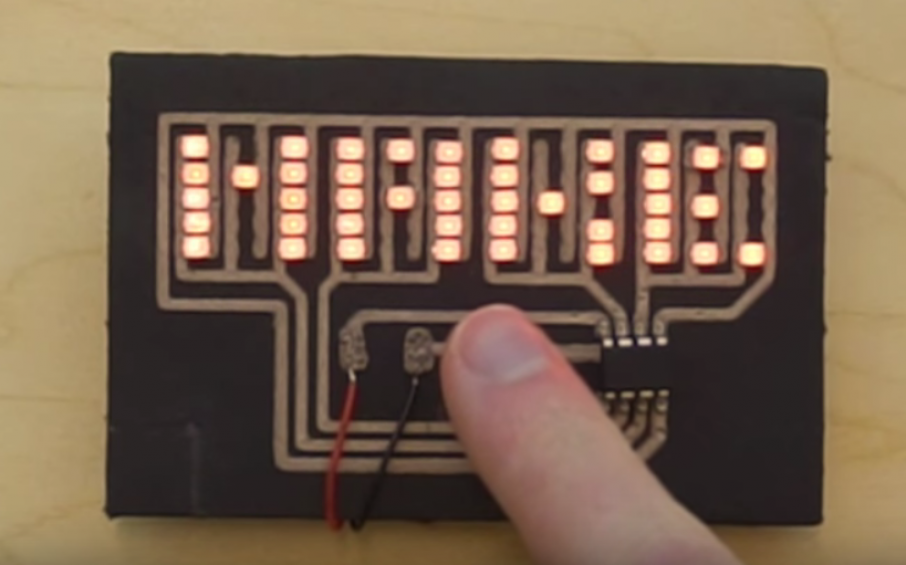
http://3dprintingindustry.com/news/nanotech-pioneer-brings-3…
"The scientist who helped developed nanotechnology for the next generation of flexible and wearable electronic devices is now bringing affordable 3D printed electronics to anyone with access to a basic 3D printer.
3D printed electronics are already in use for smartphone manufacture and 2017 will see the next generation of printers powered by quantum mechanics to produce multilayer Printed Circuit Boards (PCBs). But what about 3D printing electronics with the tools available at home, or at the local Makerspace or FabLab?
A chemistry professor from Duke University might have the answer. “For the price one of those [industrial] machines you could buy a thousand of the printers we’re using, which are $200 3D printers,” says Ben Wiley.
“Our expertise is in copper, particularly copper nanowires,” says the professor of Chemistry at Duke University. With this knowledge of materials science Wiley and a postdoctoral researcher set about developing a conductive 3D printing filament they call Electrifi.

- 3D printing electronics no longer requires, “massive wealth” (or small hands) -
Copper: conductive, +cheap
Copper is widely used in the manufacture of electronics because of two appealing characteristics, price and performance. Compared with silver, “Copper is 100 times cheaper,” says Wiley. Like silver, copper is highly conductive but unlike the precious metal it is more frequently used in devices such as smartphones.
In common with many other materials, copper only performs at this level when prepared in an optimal way. For example, graphene, a carbon-based material, is theoretically highly conductive and incredibly strong. However, these properties are reduced or even lost altogether during some common manufacturing techniques.
Graphene’s strength comes from harnessing the same force that allows a gecko to walk up walls. In a flawless 2D graphene sheet bonds between atoms make it one the strongest materials in the world. In this form graphene is also a zero-gap conductor. But, producing flawless single sheets of graphene for commercial use is a challenge science has yet to overcome.
There are similar barriers to the use of copper in 3D printing and this is a challenge scientists at NASA and other institutions are still working on. One of the issues with copper says Wiley, “Is when you have copper nanowires and you coat them down, its not conductive because they have this oxide layer.”
Wiley does not go into specific details of the conductive filament’s, ‘secret sauce’ but talking about his work with copper nanowires he says, “We were able to figure out how to make those [copper] films conductive.”

- Mounting NeoPixels -
“Having worked for 6 years with copper nanowires, we’ve learned a lot about different ways to prevent copper oxidation,” says Wiley. The work has paid off and the volume resistivity of Electrifi filament is reported as 0.006 Ω cm.
Ohms per centimeter is a measurement of a material’s electrical resistance over a particular area, the lower that number then the easier it is for electric current to flow. As Wiley points out that resistivity is, “The largest scale.”
That scale ranges from insulating materials like rubber or Teflon, 1.00×1015 and 1.00×1027 ohms-cm respectively, to graphene at 1.00×10−6. In contrast a carbon based conductive filament using graphene has a volume resistivity of 0.8 Ω cm, about 100 times less conductive than Electrifi’s published figure.
A material for Makers (, +more)
“We found we could print really quickly,” says Wiley. This means 3D printing, “Circuits in a few minutes on surfaces like foam board which are super-cheap and anyone can pick them up at the local target or Wal-mart.” A video shows 3D printing a circuit takes less than 5 minutes.
Continuing he says, “In terms of adding components like LEDs or micro-controllers, or buttons we found that you could just use a cheap heat gun and melt the filament slightly and then push your component into the filament to make an electrical connection.” This means, “No soldering required, no fumes or anything like that.”
Wiley designed the material with Makers in mind. “I’m most excited about making things for the FDM printers because they are so cheap,” he says.
As we recently reported, 3D printers are now available for under $50. “At that level it becomes like a Raspberry Pi or an Arduino, it becomes so financially accessible a huge community can develop around it. I was most excited about making a material for that type of large community rather than the few people that could afford a $100k printer.”
“Up until now there hasn’t been much that connects the world of Arduino with 3D printing.” Through outreach work with Duke University, Wiley is in contact with educators who see the filament as a way to combine electronics and 3D printing. Students, “Can 3D print something like a temperature sensor that works with a cheap Arduino.”
Even saying all this, applications beyond the target audience may be feasible. At D.C’s Maker Faire Wiley received encouraging feedback from people in the Aerospace industry who said, “The filament would be great for making integrated antennas and electronics, like a satellite.”
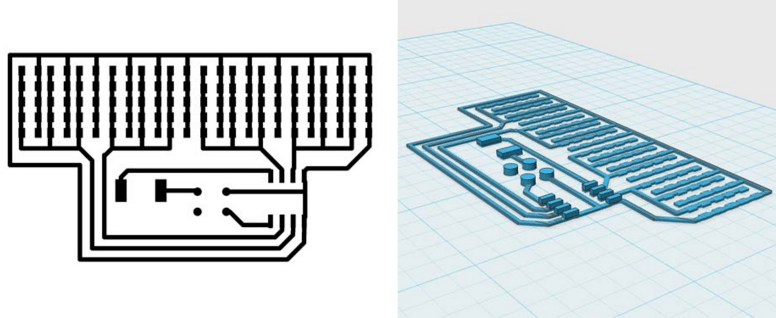
- 2D to 3D circuit design with Multi3D -
At $119, Electrifi’s price tag is above that of regular filaments. But the material compares favorably in cost, and timesaving, to other options available to Makers. “We’re super excited about what this can do for someone’s time. With electronics where people often stop is, ‘Am I going to design my own PCBs now?’ or, ‘I’m tired of sticking all these wires in these breadboards.’ This fills a gap between working with a breadboard and actually sending away for PCBs,” explains Wiley. “Maybe what you can print yourself is not quite as high quality as a PCB, but you can do it right there in 10 minutes for $5.”
This, he says, compares favorably to “Waiting days or weeks and paying $50 – $100,” for a PCB in the mail. Wiley is optimistic these factors will encourage users as, “More people are willing to commit to that expenditure and time.”
Electrifi conductive filament is available on the Multi3D website. The company also sell components such as the WS2812, aka NeoPixel.
Applications include creating wearable electronics, possibly for conferences or cosplay, pixel art and LED Matrix displays. “If you want a [traditionally manufactured] custom LED sign its like $200-$300,” says Wiley, “I’ve been trying to come up with a way to make that more like $40-$50. I’m really excited for the Duke Students to take these to basket ball games.”
As 3D printing at the industrial level continues to spread from mechanical to electrical engineering it’s great to see the Maker community are keeping pace. And if you’re working with Electrifi, or any other aspect of 3D printed electronics, please feel free to share your project here or let us know your thoughts in the comments section. "

http://3dprintingindustry.com/news/nanotech-pioneer-brings-3…
"The scientist who helped developed nanotechnology for the next generation of flexible and wearable electronic devices is now bringing affordable 3D printed electronics to anyone with access to a basic 3D printer.
3D printed electronics are already in use for smartphone manufacture and 2017 will see the next generation of printers powered by quantum mechanics to produce multilayer Printed Circuit Boards (PCBs). But what about 3D printing electronics with the tools available at home, or at the local Makerspace or FabLab?
A chemistry professor from Duke University might have the answer. “For the price one of those [industrial] machines you could buy a thousand of the printers we’re using, which are $200 3D printers,” says Ben Wiley.
“Our expertise is in copper, particularly copper nanowires,” says the professor of Chemistry at Duke University. With this knowledge of materials science Wiley and a postdoctoral researcher set about developing a conductive 3D printing filament they call Electrifi.

- 3D printing electronics no longer requires, “massive wealth” (or small hands) -
Copper: conductive, +cheap
Copper is widely used in the manufacture of electronics because of two appealing characteristics, price and performance. Compared with silver, “Copper is 100 times cheaper,” says Wiley. Like silver, copper is highly conductive but unlike the precious metal it is more frequently used in devices such as smartphones.
In common with many other materials, copper only performs at this level when prepared in an optimal way. For example, graphene, a carbon-based material, is theoretically highly conductive and incredibly strong. However, these properties are reduced or even lost altogether during some common manufacturing techniques.
Graphene’s strength comes from harnessing the same force that allows a gecko to walk up walls. In a flawless 2D graphene sheet bonds between atoms make it one the strongest materials in the world. In this form graphene is also a zero-gap conductor. But, producing flawless single sheets of graphene for commercial use is a challenge science has yet to overcome.
There are similar barriers to the use of copper in 3D printing and this is a challenge scientists at NASA and other institutions are still working on. One of the issues with copper says Wiley, “Is when you have copper nanowires and you coat them down, its not conductive because they have this oxide layer.”
Wiley does not go into specific details of the conductive filament’s, ‘secret sauce’ but talking about his work with copper nanowires he says, “We were able to figure out how to make those [copper] films conductive.”
- Mounting NeoPixels -
“Having worked for 6 years with copper nanowires, we’ve learned a lot about different ways to prevent copper oxidation,” says Wiley. The work has paid off and the volume resistivity of Electrifi filament is reported as 0.006 Ω cm.
Ohms per centimeter is a measurement of a material’s electrical resistance over a particular area, the lower that number then the easier it is for electric current to flow. As Wiley points out that resistivity is, “The largest scale.”
That scale ranges from insulating materials like rubber or Teflon, 1.00×1015 and 1.00×1027 ohms-cm respectively, to graphene at 1.00×10−6. In contrast a carbon based conductive filament using graphene has a volume resistivity of 0.8 Ω cm, about 100 times less conductive than Electrifi’s published figure.
A material for Makers (, +more)
“We found we could print really quickly,” says Wiley. This means 3D printing, “Circuits in a few minutes on surfaces like foam board which are super-cheap and anyone can pick them up at the local target or Wal-mart.” A video shows 3D printing a circuit takes less than 5 minutes.
Continuing he says, “In terms of adding components like LEDs or micro-controllers, or buttons we found that you could just use a cheap heat gun and melt the filament slightly and then push your component into the filament to make an electrical connection.” This means, “No soldering required, no fumes or anything like that.”
Wiley designed the material with Makers in mind. “I’m most excited about making things for the FDM printers because they are so cheap,” he says.
As we recently reported, 3D printers are now available for under $50. “At that level it becomes like a Raspberry Pi or an Arduino, it becomes so financially accessible a huge community can develop around it. I was most excited about making a material for that type of large community rather than the few people that could afford a $100k printer.”
“Up until now there hasn’t been much that connects the world of Arduino with 3D printing.” Through outreach work with Duke University, Wiley is in contact with educators who see the filament as a way to combine electronics and 3D printing. Students, “Can 3D print something like a temperature sensor that works with a cheap Arduino.”
Even saying all this, applications beyond the target audience may be feasible. At D.C’s Maker Faire Wiley received encouraging feedback from people in the Aerospace industry who said, “The filament would be great for making integrated antennas and electronics, like a satellite.”

- 2D to 3D circuit design with Multi3D -
At $119, Electrifi’s price tag is above that of regular filaments. But the material compares favorably in cost, and timesaving, to other options available to Makers. “We’re super excited about what this can do for someone’s time. With electronics where people often stop is, ‘Am I going to design my own PCBs now?’ or, ‘I’m tired of sticking all these wires in these breadboards.’ This fills a gap between working with a breadboard and actually sending away for PCBs,” explains Wiley. “Maybe what you can print yourself is not quite as high quality as a PCB, but you can do it right there in 10 minutes for $5.”
This, he says, compares favorably to “Waiting days or weeks and paying $50 – $100,” for a PCB in the mail. Wiley is optimistic these factors will encourage users as, “More people are willing to commit to that expenditure and time.”
Electrifi conductive filament is available on the Multi3D website. The company also sell components such as the WS2812, aka NeoPixel.
Applications include creating wearable electronics, possibly for conferences or cosplay, pixel art and LED Matrix displays. “If you want a [traditionally manufactured] custom LED sign its like $200-$300,” says Wiley, “I’ve been trying to come up with a way to make that more like $40-$50. I’m really excited for the Duke Students to take these to basket ball games.”
As 3D printing at the industrial level continues to spread from mechanical to electrical engineering it’s great to see the Maker community are keeping pace. And if you’re working with Electrifi, or any other aspect of 3D printed electronics, please feel free to share your project here or let us know your thoughts in the comments section. "


Electroloom closes down, Electroloom, which made what it claimed was the world’s first 3D fabric printer, has closed its doors. The company founders have tried in vain to raise more funds, +have finally raised the white flag. The company launched on Kickstarter, +aimed to bring us seamless, 3D printed clothes. The process apparently came to co-founder Aaron Rowley, after he saw organic tissue printing, +wanted to find a new way to apply the technology
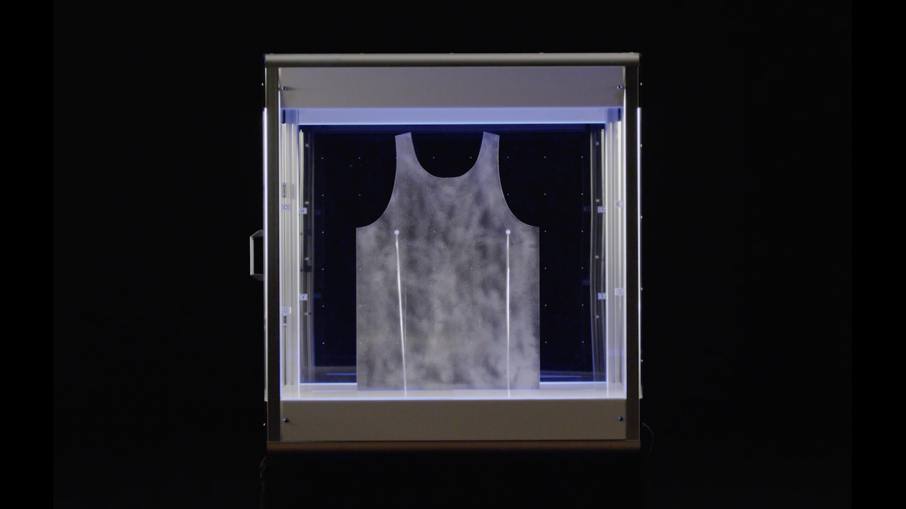
https://3dprintingindustry.com/news/electroloom-closes-down-…

https://3dprintingindustry.com/news/electroloom-closes-down-…
Antwort auf Beitrag Nr.: 53.058.079 von Popeye82 am 14.08.16 20:39:49
Glas
https://www.technologyreview.com/s/540926/3-d-printing-break…(speziell danach gesucht ob Glas funktioniert, weil´s mich interessiert hat)
eine spiegeglatte fensterscheibe dürfte aber nicht gehen nehme ich an (kann ich mir jedenfalls nicht vorstellen, auch wenn man die animationen anschaut auf der seite oben)
3D printed plastic satellites, in space, seriously…; The QB50 project is about to launch 3D printed plastic satellites into the thermosphere. It's part of the most comprehensive study ever produced of the solar flares +storms

https://3dprintingindustry.com/news/3d-printed-plastic-satel…
"The QB50 project is about to launch 3D printed plastic satellites into the thermosphere. It’s part of the most comprehensive study ever produced of the solar flares and storms that take place when the Northern Lights dance across the sky.
To date, 48 universities and institutions have pitched in and will take part in the study that should give us a much deeper understanding of the thermosphere with the help of 50 separate CubeSat satellites.
“The region is poorly understood and hard to measure,” said Andrew Dempster, director of the Australian Center for Space Engineering Research at the University of New South Wales.
“It’s the interface between our planet and space. It’s where the ultraviolet and X-ray radiation from the Sun collides with Earth. That’s what generates auroras and potential hazard that can affect power grids, communications and GPS receivers.”

Northern Lights hides a, terrible
 , secret
, secret
The Northern Lights are a wonderful show for those on Earth, but each light is the result of a violent episode in the thermosphere that can have far-reaching consequences.
Blackouts and even a loss of communication with planes can occur when the storms strike. They can even affect our weather. Knowing how they work and when they are coming can help us deal with them.
“You’ve got vacuum, you’ve got wild temperature swings, but you also have a lot of radiation, cosmic rays, solar radiation,” said Dr. Elias Aboutanios. “These can upset electronics. So this will allow us to recover from these errors.”
Not all of the satellites will be 3D printed and they each have specific jobs and parameters to test. Some will test the thermosphere’s atomic composition, others will measure the density and temperature of particles that can affect radio waves below.
[...]
A plastic satellite…
RAMSES (Rapid Manufacture of Space Exposed Structures) has been printed from thermoplastic, which seems brave. The whole purpose of the satellite is to see how it survives the rigours of space and the particularly unwelcome environment that waits for it in the thermosphere.
IIIF it survives, then it will be a big step forward and it will give scientists the confidence to use ABS plastics in the future. Satellites have to be over-engineered at the moment because the cost of transporting them to the ISS and then launching them into the thermosphere is immense.
Potential savings, with thermoplastic
If a space agency or commercial enterprise took a risk on thermoplastic and it simply burned up then it could be a serious blow, but if it works then it could slash the cost of future satellite production. That means we can potentially produce more satellites and have a number of them in the atmosphere on each and every study where just one bears the load right now.
So testing it now, as part of a wider experiment, is a real bonus for the scientific community.
The 2kg satellites will orbit and collect date for up to 12 months, if they last that long. The first leg of their journey starts with a launch on Wallops Island, Virginia, on December 30th. When they arrive at the ISS, they will be sent into orbit by the NanoRacks CubeSat launcher.
We wish them well, especially the plucky, plastic, 3D printed chassis. "

https://3dprintingindustry.com/news/3d-printed-plastic-satel…
"The QB50 project is about to launch 3D printed plastic satellites into the thermosphere. It’s part of the most comprehensive study ever produced of the solar flares and storms that take place when the Northern Lights dance across the sky.
To date, 48 universities and institutions have pitched in and will take part in the study that should give us a much deeper understanding of the thermosphere with the help of 50 separate CubeSat satellites.
“The region is poorly understood and hard to measure,” said Andrew Dempster, director of the Australian Center for Space Engineering Research at the University of New South Wales.
“It’s the interface between our planet and space. It’s where the ultraviolet and X-ray radiation from the Sun collides with Earth. That’s what generates auroras and potential hazard that can affect power grids, communications and GPS receivers.”

Northern Lights hides a, terrible

 , secret
, secretThe Northern Lights are a wonderful show for those on Earth, but each light is the result of a violent episode in the thermosphere that can have far-reaching consequences.
Blackouts and even a loss of communication with planes can occur when the storms strike. They can even affect our weather. Knowing how they work and when they are coming can help us deal with them.
“You’ve got vacuum, you’ve got wild temperature swings, but you also have a lot of radiation, cosmic rays, solar radiation,” said Dr. Elias Aboutanios. “These can upset electronics. So this will allow us to recover from these errors.”
Not all of the satellites will be 3D printed and they each have specific jobs and parameters to test. Some will test the thermosphere’s atomic composition, others will measure the density and temperature of particles that can affect radio waves below.
[...]
A plastic satellite…
RAMSES (Rapid Manufacture of Space Exposed Structures) has been printed from thermoplastic, which seems brave. The whole purpose of the satellite is to see how it survives the rigours of space and the particularly unwelcome environment that waits for it in the thermosphere.
IIIF it survives, then it will be a big step forward and it will give scientists the confidence to use ABS plastics in the future. Satellites have to be over-engineered at the moment because the cost of transporting them to the ISS and then launching them into the thermosphere is immense.
Potential savings, with thermoplastic
If a space agency or commercial enterprise took a risk on thermoplastic and it simply burned up then it could be a serious blow, but if it works then it could slash the cost of future satellite production. That means we can potentially produce more satellites and have a number of them in the atmosphere on each and every study where just one bears the load right now.
So testing it now, as part of a wider experiment, is a real bonus for the scientific community.
The 2kg satellites will orbit and collect date for up to 12 months, if they last that long. The first leg of their journey starts with a launch on Wallops Island, Virginia, on December 30th. When they arrive at the ISS, they will be sent into orbit by the NanoRacks CubeSat launcher.
We wish them well, especially the plucky, plastic, 3D printed chassis. "
Antwort auf Beitrag Nr.: 53.058.139 von Popeye82 am 14.08.16 20:57:33
- An animation of the UNSW-Ec0 satellite being deployed from the International Space Station to explore the thermosphere, as part of the QB-50 international project. -
- An animation of the UNSW-Ec0 satellite being deployed from the International Space Station to explore the thermosphere, as part of the QB-50 international project. -
Very Metal: KPMG provide insights into 3D printing metal market
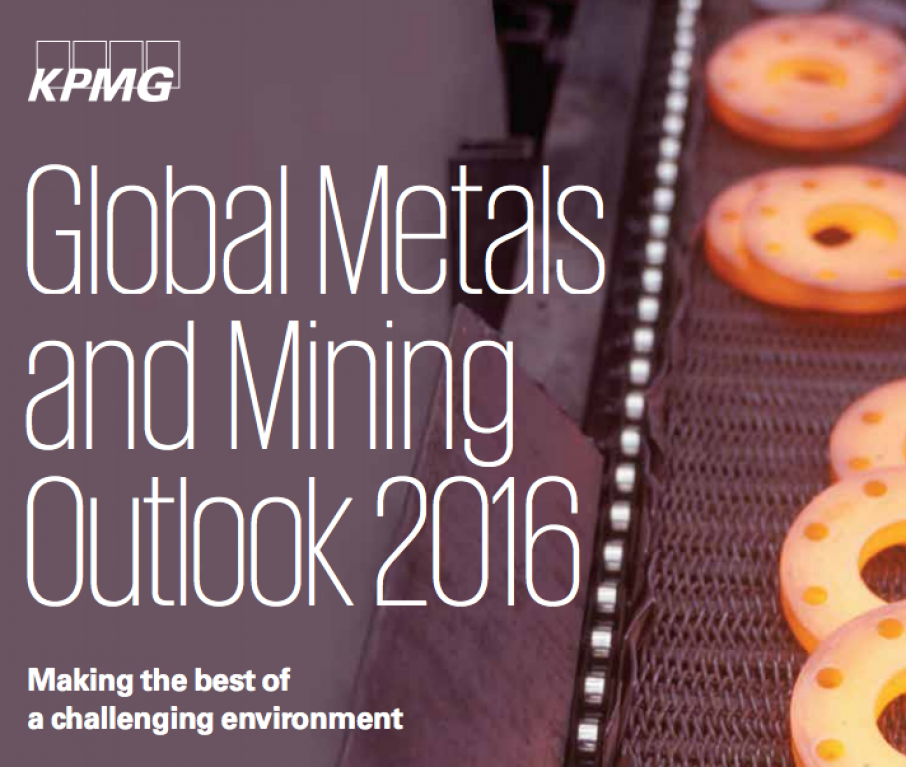
https://3dprintingindustry.com/news/metal-kpmg-provide-insig…

https://3dprintingindustry.com/news/metal-kpmg-provide-insig…
Podcast
3D Printing can revolutionise emergency healthcare

www.scidev.net/global/design/multimedia/3d-printing-emergenc…
3D Printing can revolutionise emergency healthcare
www.scidev.net/global/design/multimedia/3d-printing-emergenc…
Antwort auf Beitrag Nr.: 53.058.097 von Boersiback am 14.08.16 20:47:00
Hier haben Wir noch was Ähnliches.
Sogarfrom good New germany.
Ich mutmasse nur geringfügige Probleme das Ding auf dem Schreibtisch unterzukriegen
Solar-powered 3D printer uses sand
uses sand 
 , to make glass
, to make glass 



- A solar-powered 3D printer that uses desert sand to produce glass has been invented
- It uses the power of the sun, to melt layers of sand, that are then built up into the desired shape
- Experts are beginning to recognise the technology, as a potential future industry ...
www.scidev.net/global/energy/news/solar-powered-3d-printer-u…
" A three-dimensional (3D) printer powered by sunlight has been developed with the aim of turning desert sand into glass. Now, experts are recognising the device as a promising first step towards a future large-scale industry.
The machine, developed by German designer Markus Kayser, is called the Solar Sinter. It takes its name from both its energy source and the technique it harnesses — sintering — which converts a powdery substance into a solid form by heating.
3D printers use laser technology to create precise solid shapes from a variety of powdered metals, plastics and resins. Its most common use is in creating prototypes for engineering projects.
Kayser's device replaces the laser with the sun's rays and the powdered material with common desert sand. He believes it could be used to exploit the largely untapped natural resources of deserts in the Middle East and North Africa.
The Solar Sinter uses a large Fresnel lens, which is designed to capture the same amount of light as conventional lenses but is lighter and thinner. The lens rotates towards the sun throughout the day to capture light, which melts together layers of sand contained within the device to produce glass objects.
Digital designs can be downloaded from a computer onto a simple memory card and transferred to the machine. The Solar Sinter then follows the models' 'instructions' and prints out 3D reproductions of the designs.
Kayser, who developed the Solar Sinter in 2010 during his studies at the Royal College of Arts in the United Kingdom, says that in the future the process could become the most cost-effective way of producing glass, because solar energy and sand are abundant and free, and large-scale factories could be built in the desert.
The lens costs about US$600, making it cheaper than most of the parabolic devices used to capture light in the desert, says Kayser. Eventually the process could produce a variety of artefacts ranging from glass vessels to the surfaces for photovoltaic panels.
"I would really love to see companies using or developing this process into a business," he says. "Many ideas remain stuck in university, but it would be nice if the Solar Sinter concept became a commercially viable process as, in the end, it's free and clean energy."
A ceramics company interested in the Solar Sinter's applications sponsored one of Kayser's latest research trips to the Moroccan desert, which he believes is a positive sign.
Robert Jeffreys, a 3D printing consultant at the UK-based company Inition, says: "There is potential in the idea of machinery that can use what is already on location, to produce things."
"I think [the Solar Sinter] would be useful in places where the raw material is in great supply but is inadequate for most conventional manufacturing."
In the future, says Jeffreys, 3D printing could become advanced enough to produce high-quality objects, and the Solar Sinter could be the first step towards this long-term goal. "3D printing is now raising an exceptional interest from the media," he adds. "Popularity could attract funders and speed up the research."
Jeffreys says that one of the major problems in the 3D printing industry worldwide is the high cost of materials: "Research centres and universities in developing countries often have a 3D printer but they rarely use it because they can't afford the specific plastics. Having free materials would probably make the difference." "
Hier haben Wir noch was Ähnliches.
Sogarfrom good New germany.
Ich mutmasse nur geringfügige Probleme das Ding auf dem Schreibtisch unterzukriegen
Solar-powered 3D printer
 uses sand
uses sand 
 , to make glass
, to make glass 



- A solar-powered 3D printer that uses desert sand to produce glass has been invented
- It uses the power of the sun, to melt layers of sand, that are then built up into the desired shape
- Experts are beginning to recognise the technology, as a potential future industry ...
www.scidev.net/global/energy/news/solar-powered-3d-printer-u…
" A three-dimensional (3D) printer powered by sunlight has been developed with the aim of turning desert sand into glass. Now, experts are recognising the device as a promising first step towards a future large-scale industry.
The machine, developed by German designer Markus Kayser, is called the Solar Sinter. It takes its name from both its energy source and the technique it harnesses — sintering — which converts a powdery substance into a solid form by heating.
3D printers use laser technology to create precise solid shapes from a variety of powdered metals, plastics and resins. Its most common use is in creating prototypes for engineering projects.
Kayser's device replaces the laser with the sun's rays and the powdered material with common desert sand. He believes it could be used to exploit the largely untapped natural resources of deserts in the Middle East and North Africa.
The Solar Sinter uses a large Fresnel lens, which is designed to capture the same amount of light as conventional lenses but is lighter and thinner. The lens rotates towards the sun throughout the day to capture light, which melts together layers of sand contained within the device to produce glass objects.
Digital designs can be downloaded from a computer onto a simple memory card and transferred to the machine. The Solar Sinter then follows the models' 'instructions' and prints out 3D reproductions of the designs.
Kayser, who developed the Solar Sinter in 2010 during his studies at the Royal College of Arts in the United Kingdom, says that in the future the process could become the most cost-effective way of producing glass, because solar energy and sand are abundant and free, and large-scale factories could be built in the desert.
The lens costs about US$600, making it cheaper than most of the parabolic devices used to capture light in the desert, says Kayser. Eventually the process could produce a variety of artefacts ranging from glass vessels to the surfaces for photovoltaic panels.
"I would really love to see companies using or developing this process into a business," he says. "Many ideas remain stuck in university, but it would be nice if the Solar Sinter concept became a commercially viable process as, in the end, it's free and clean energy."
A ceramics company interested in the Solar Sinter's applications sponsored one of Kayser's latest research trips to the Moroccan desert, which he believes is a positive sign.
Robert Jeffreys, a 3D printing consultant at the UK-based company Inition, says: "There is potential in the idea of machinery that can use what is already on location, to produce things."
"I think [the Solar Sinter] would be useful in places where the raw material is in great supply but is inadequate for most conventional manufacturing."
In the future, says Jeffreys, 3D printing could become advanced enough to produce high-quality objects, and the Solar Sinter could be the first step towards this long-term goal. "3D printing is now raising an exceptional interest from the media," he adds. "Popularity could attract funders and speed up the research."
Jeffreys says that one of the major problems in the 3D printing industry worldwide is the high cost of materials: "Research centres and universities in developing countries often have a 3D printer but they rarely use it because they can't afford the specific plastics. Having free materials would probably make the difference." "
3D printed lab-grown meat could be in stores, in the next five years; The many issues surrounding modern meat eating —from the sickening treatment of farm animals, to unsustainable farming practices, to fatal BSE epidemics— can make that juicy double bacon cheeseburger you just ordered more than a little hard to digest. Yet all the same, there is a growing demand for meat products, that traditional farming practices are finding hard to meet. In order to appease our appetites +our consciences, Dutch scientists are working on bringing the 1st completely lab-grown meat products to the market, by the year 2020

www.3ders.org/articles/20151020-3d-printed-lab-grown-meat-co…

www.3ders.org/articles/20151020-3d-printed-lab-grown-meat-co…
Delivering one of the 1st customised 3D printed bikes; Our team of 3D titanium printing experts are helping Australian bike company, Flying Machine, create the bike of the future, A new cycle in bike manufacturing

www.csiro.au/en/Research/MF/Areas/Metals/Lab22/FlyingMachine

www.csiro.au/en/Research/MF/Areas/Metals/Lab22/FlyingMachine
A 3D Printing Metals IPO, from Aurora Labs
www.nanalyze.com/2016/09/3d-printing-metals-ipo-aurora-labs/
www.nanalyze.com/2016/09/3d-printing-metals-ipo-aurora-labs/
Antwort auf Beitrag Nr.: 52.794.130 von Popeye82 am 08.07.16 15:22:09
www.nano-di.com/investor-news/nano-dimension-to-open-new-ink…
www.nano-di.com/investor-news/nano-dimension-to-open-new-ink…
Antwort auf Beitrag Nr.: 51.440.280 von Boersiback am 07.01.16 23:49:41
Na Boersi,
haste SLM Solutions gekauft?
Na Boersi,
haste SLM Solutions gekauft?
This new 3D-printing pen draws with wood, copper, +bronze
.jpg)
www.manufacturingtomorrow.com/story/2016/09/this-new-3d-prin…
.jpg)
www.manufacturingtomorrow.com/story/2016/09/this-new-3d-prin…
Fahrerloser Bus aus dem 3D-Drucker, Olli
www.ingenieur.de/Themen/3D-Druck/Fahrerloser-Bus-3D-Drucker-…
Dieses Bild ist nicht SSL-verschlüsselt: [url]http://www.ingenieur.de/var/storage/images/media/ingenieur.de/bildergalerien/der-autonom-fahrende-kleinbus-olli-local-motors/kleinbus-olli/4413398-2-ger-DE/Kleinbus-Olli_image_width_560_crop_560_315.jpg
[/url]www.ingenieur.de/Themen/3D-Druck/Fahrerloser-Bus-3D-Drucker-…
Antwort auf Beitrag Nr.: 53.225.154 von Popeye82 am 07.09.16 12:11:16
Wie muss ich Einen Stuttgarter fragen -hooooo(a)s(ch)t gekauft?
Wie muss ich Einen Stuttgarter fragen -hooooo(a)s(ch)t gekauft?
Antwort auf Beitrag Nr.: 53.004.208 von Popeye82 am 06.08.16 13:48:04
so kann man sich irren.
Hat sich jetzt teilerledigt
Die haben zuletzt ja auch TASEs dazugenommen.
Werde ich mir reinziehen
Nano Dimension -Initiation of coverage; Nano Dimension has combined techniques, from 3D printing +nanotechnology inks, to develop an innovative system that revolutionises PCB prototyping, enabling designers to bring the process in-house. This reduces time to market, +ensures that IP security is not compromised. The company also has earlier stage developments for structural electronics, batch manufacture of PCBs +printing human tissue
www.edisoninvestmentresearch.com/research/report/nano-dimens…
Zitat von Popeye82: Nano Dimension täte mich noch interessieren mal einen Recherchebericht in die Finger zu bekommen,
was aber vermutlich auf absehbare Zeit nicht drin sein dürfte
so kann man sich irren.
Hat sich jetzt teilerledigt
Die haben zuletzt ja auch TASEs dazugenommen.
Werde ich mir reinziehen
Nano Dimension -Initiation of coverage; Nano Dimension has combined techniques, from 3D printing +nanotechnology inks, to develop an innovative system that revolutionises PCB prototyping, enabling designers to bring the process in-house. This reduces time to market, +ensures that IP security is not compromised. The company also has earlier stage developments for structural electronics, batch manufacture of PCBs +printing human tissue
www.edisoninvestmentresearch.com/research/report/nano-dimens…

www.equities.com/news/3d-printers-now-a-novelty-soon-to-tran…
-An evolution in preoperative surgical planning is reality at Henry Ford Hospital. Heart valve replacement is safer and more accurate for everyone in need of a new valve by using Computer Aided Design and 3D Printing technology at the Henry Ford Innovation Institute. Physicians are working with Industrial Designers to virtually test fit the prosthetic valves in the best case scenario based on each patients unique anatomy. -
Antwort auf Beitrag Nr.: 53.271.156 von Popeye82 am 14.09.16 00:38:47
Sollte man sich mal ansehen, zu 3D
------> www.printocent.net
Sollte man sich mal ansehen, zu 3D
------> www.printocent.net
Antwort auf Beitrag Nr.: 53.271.168 von Popeye82 am 14.09.16 00:42:49
www.printocent.net/presentation.html
www.printocent.net/presentation.html
Bei NNCRM(/Rusnano)bin ich im Verteiler
www.printocent.net/news-flexbright.html
"Vibrant new Finnish start-up company Flexbright Ltd – which aims to revolutionise the world of lighting thanks to its ultra-thin LED light foils – has received an important investment from the Nanotechnologies and Nanomaterials Centre of the Republic of Mordovia (NNCRM), which is part of the Russian-wide Fund for Infrastructure and Educational Programs (FIEP Rusnano).
Founded only in 2013, Flexbright has already developed one of the most innovative products in lighting: LEDFOIL, in collaboration with the Technical Research Centre of Finland. The exciting new technology is based on R2R mass production capacity, massive lighting power, IoT capabilities, low energy consumption and most importantly of all, an ultra-thin flexible construction that is less than one millimetre thick.
The applications for this brand new lighting system are almost infinite: from industrial to commercial to domestic. As a result, this genuinely ground-breaking product has attracted significant Russian investment designed to take it to the next level.
Pekka Makkonen, managing director of Flexbright said: “We are delighted to receive investment from FIEP Rusnano. This investment truly demonstrates the commercial potential of not only our innovative product, but also the entire LED market. Our product LEDFOIL, can be used in a number of different industries from aerospace right through to interior design. With the lighting market being worth over €60 billion, we are very much looking forward to working with FIEP Rusnano to further develop our products in future.”
Ruslan Titov, managing director of FIEP Rusnano added: “This deal shows our commitment to both Flexbright and the new technology that the company is developing in the field of printed electronics. We believe that our investment is the most efficient way to transfer technologies through the development of a range of applications for the Russian market.”
Dmitry Krakhin, general director of NNCRM commented: “Mordovia has traditionally been the centre of the lighting industry in Russia and we have been closely following the technology from Flexbright for some time now. Together with Flexbright we are looking to develop a joint Research and Development Centre for flexible lighting technologies which will also focus on the development of supporting technologies and application designs for the commercial market.”
Atte Varsta, commercial director of Flexbright, concluded. “Our LEDFOIL technology is truly unique and we believe that working with the Technical Research Centre of Finland and NNCRM is going to help our development and bring growth to the Oulu region of Northern Finland. We hope to inspire more Finnish start-up companies and other technological entrepreneurs, by setting an example of what can be achieved.”
For more information, please contact:
Flexbright Ltd
Managing Director Pekka Makkonen
pekka.makkonen@flexbright.fi
+358 50 523 9481
Flexbright Ltd
Commercial Director Atte Varsta
atte.varsta@flexbright.fi
+358 50 5319536
NNCRM / FIEP Rusnano
NNCRM General Director Dmitry Krakhin
krakhin@cnnrm.ru
+79093288555
Flexbright Ltd is a Finnish start-up company specialised in developing and producing LED lighting foils with intelligent capabilities. The company aims to develop fast-growing international R2R printed technology and smart lighting markets. More information can be found on: www.flexbright.fi
The Fund for Infrastructure and Educational Programmes was founded during the reorganisation of the Russian Corporation of Nanotechnologies in 2010. The Fund for Infrastructure and Educational Programs primarily focuses its activity in nanotechnology infrastructure development, including implementation of educational and infrastructure programmes launched by ROSNANO. The highest governing body of the Fund is its Supervisory Council chaired by Deputy Minister of Education and Science of the Russian Federation Dmitry Livanov. In accordance with the charter of the Fund, the council determines priorities for the Fund’s activities, establishes its strategies, and sets its budget. The Management Committee is the Fund’s collegial executive body. It is chaired by the Chairman of the Executive Board of RUSNANO MC LLC Anatoly Chubais. Andrey Svinarenko is CEO of the Fund for Infrastructure and Educational Programs.
The Nanotechnology and Nanomaterials Centre of the Republic of Mordovia (NNCRM) is the 12th Nano centre established by FIEP Rusnano. The mission of the Nano centre is to commercialise innovative technologies, create startups and develop them into successful high-tech business ventures. NNCRM’s portfolio includes more than 30 startups within the centre’s focus areas including: power electronics, modern lighting engineering, instrumentation technology, construction, and nanomaterials.
At the VTT press event:
Kimmo Keränen (VTT), Atte Varsta (Flexbright Ltd), Dmitry Krakhin (NNCRM) and Pekka Makkonen (FlexbrightLtd)......................."
Dieses Bild ist nicht SSL-verschlüsselt: [url]http://www.printocent.net/images/fb_nncrm%20launch570x309.jpg?crc=4006033296
[/url]www.printocent.net/news-flexbright.html
"Vibrant new Finnish start-up company Flexbright Ltd – which aims to revolutionise the world of lighting thanks to its ultra-thin LED light foils – has received an important investment from the Nanotechnologies and Nanomaterials Centre of the Republic of Mordovia (NNCRM), which is part of the Russian-wide Fund for Infrastructure and Educational Programs (FIEP Rusnano).
Founded only in 2013, Flexbright has already developed one of the most innovative products in lighting: LEDFOIL, in collaboration with the Technical Research Centre of Finland. The exciting new technology is based on R2R mass production capacity, massive lighting power, IoT capabilities, low energy consumption and most importantly of all, an ultra-thin flexible construction that is less than one millimetre thick.
The applications for this brand new lighting system are almost infinite: from industrial to commercial to domestic. As a result, this genuinely ground-breaking product has attracted significant Russian investment designed to take it to the next level.
Pekka Makkonen, managing director of Flexbright said: “We are delighted to receive investment from FIEP Rusnano. This investment truly demonstrates the commercial potential of not only our innovative product, but also the entire LED market. Our product LEDFOIL, can be used in a number of different industries from aerospace right through to interior design. With the lighting market being worth over €60 billion, we are very much looking forward to working with FIEP Rusnano to further develop our products in future.”
Ruslan Titov, managing director of FIEP Rusnano added: “This deal shows our commitment to both Flexbright and the new technology that the company is developing in the field of printed electronics. We believe that our investment is the most efficient way to transfer technologies through the development of a range of applications for the Russian market.”
Dmitry Krakhin, general director of NNCRM commented: “Mordovia has traditionally been the centre of the lighting industry in Russia and we have been closely following the technology from Flexbright for some time now. Together with Flexbright we are looking to develop a joint Research and Development Centre for flexible lighting technologies which will also focus on the development of supporting technologies and application designs for the commercial market.”
Atte Varsta, commercial director of Flexbright, concluded. “Our LEDFOIL technology is truly unique and we believe that working with the Technical Research Centre of Finland and NNCRM is going to help our development and bring growth to the Oulu region of Northern Finland. We hope to inspire more Finnish start-up companies and other technological entrepreneurs, by setting an example of what can be achieved.”
For more information, please contact:
Flexbright Ltd
Managing Director Pekka Makkonen
pekka.makkonen@flexbright.fi
+358 50 523 9481
Flexbright Ltd
Commercial Director Atte Varsta
atte.varsta@flexbright.fi
+358 50 5319536
NNCRM / FIEP Rusnano
NNCRM General Director Dmitry Krakhin
krakhin@cnnrm.ru
+79093288555
Flexbright Ltd is a Finnish start-up company specialised in developing and producing LED lighting foils with intelligent capabilities. The company aims to develop fast-growing international R2R printed technology and smart lighting markets. More information can be found on: www.flexbright.fi
The Fund for Infrastructure and Educational Programmes was founded during the reorganisation of the Russian Corporation of Nanotechnologies in 2010. The Fund for Infrastructure and Educational Programs primarily focuses its activity in nanotechnology infrastructure development, including implementation of educational and infrastructure programmes launched by ROSNANO. The highest governing body of the Fund is its Supervisory Council chaired by Deputy Minister of Education and Science of the Russian Federation Dmitry Livanov. In accordance with the charter of the Fund, the council determines priorities for the Fund’s activities, establishes its strategies, and sets its budget. The Management Committee is the Fund’s collegial executive body. It is chaired by the Chairman of the Executive Board of RUSNANO MC LLC Anatoly Chubais. Andrey Svinarenko is CEO of the Fund for Infrastructure and Educational Programs.
The Nanotechnology and Nanomaterials Centre of the Republic of Mordovia (NNCRM) is the 12th Nano centre established by FIEP Rusnano. The mission of the Nano centre is to commercialise innovative technologies, create startups and develop them into successful high-tech business ventures. NNCRM’s portfolio includes more than 30 startups within the centre’s focus areas including: power electronics, modern lighting engineering, instrumentation technology, construction, and nanomaterials.
At the VTT press event:
Kimmo Keränen (VTT), Atte Varsta (Flexbright Ltd), Dmitry Krakhin (NNCRM) and Pekka Makkonen (FlexbrightLtd)......................."
Antwort auf Beitrag Nr.: 53.271.183 von Popeye82 am 14.09.16 00:51:20
http://flexbright.fi/
Dieses Bild ist nicht SSL-verschlüsselt: [url]http://www.printocent.net/images/flexbright-logo.jpg?crc=4095808493
[/url]http://flexbright.fi/
Invention Science Fund Partnering with NAMIC, to Create New 3D Printing Technologies; there’s hardly an industry 3D printing doesn’t promise to revolutionize. From rocket engine injectors to life-like prosthetics, it’s undeniable that 3D printing, or additive manufacturing, is a huge field of technological opportunity

www.intellectualventures.com/insights/archives/invention-sci…

www.intellectualventures.com/insights/archives/invention-sci…
Antwort auf Beitrag Nr.: 53.262.882 von Popeye82 am 13.09.16 05:06:35
www.nano-di.com/investor-news/first-delivery-of-dragonfly-20…
www.nano-di.com/investor-news/first-delivery-of-dragonfly-20…
The Virtual Foundry’s Filamet: one of a kind filament
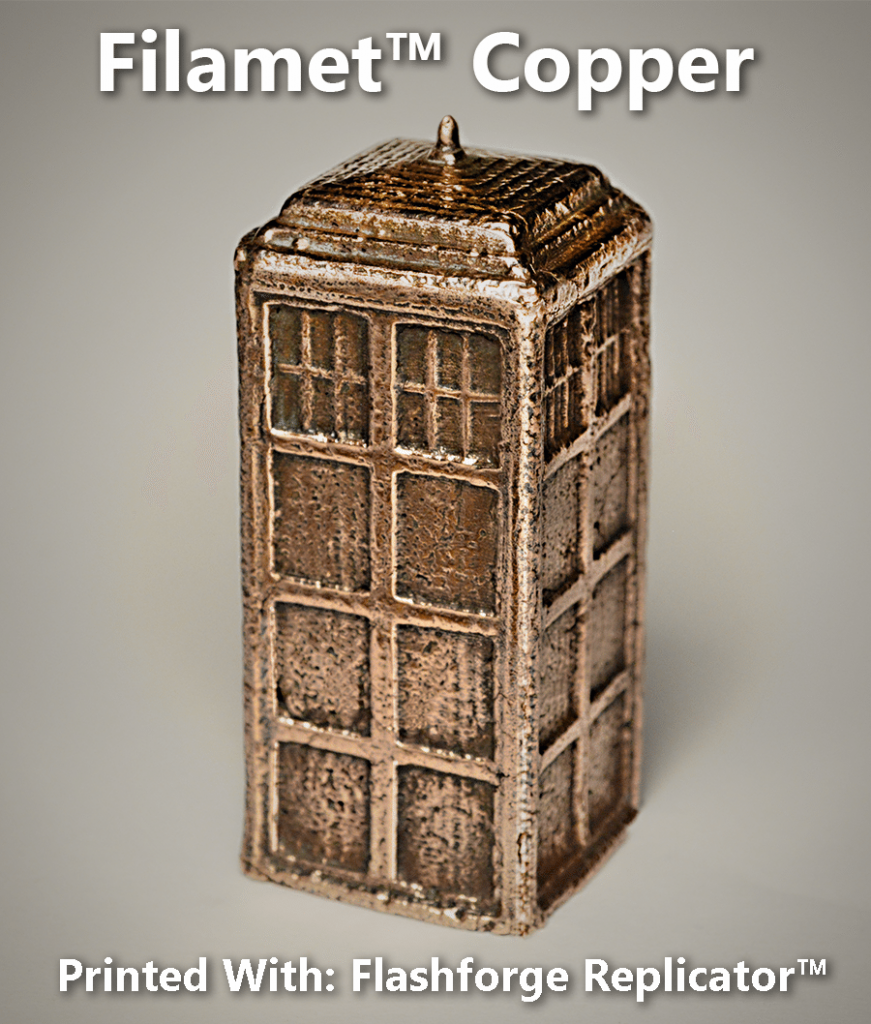
https://3dprintingindustry.com/news/virtual-foundrys-filamet…

https://3dprintingindustry.com/news/virtual-foundrys-filamet…
THIS is very important
New Method for Printing Dentures, from Arfona
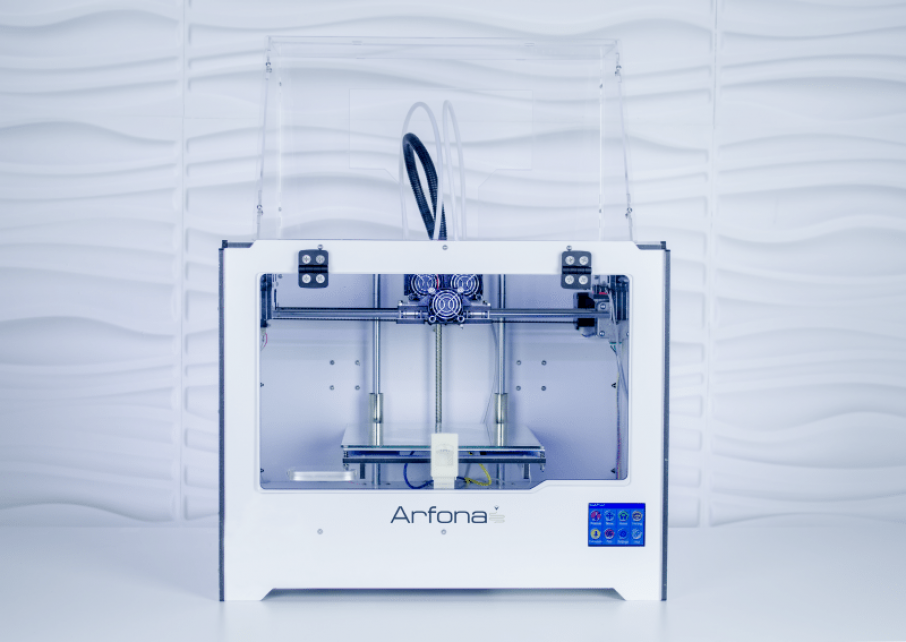
https://3dprintingindustry.com/news/new-method-for-printing-…

https://3dprintingindustry.com/news/new-method-for-printing-…
Antwort auf Beitrag Nr.: 53.342.685 von Popeye82 am 25.09.16 00:40:01
Doch nicht
Doch nicht
Antwort auf Beitrag Nr.: 53.275.968 von Popeye82 am 14.09.16 17:21:21
www.prnewswire.com/news-releases/nano-dimension-will-transit…
www.prnewswire.com/news-releases/nano-dimension-will-transit…
3D-Druck, mittels fokussiertem Ultraschall
www.technologieallianz.de/angebote.php?sort=sag&id=4725&lang…
------> www.technologieallianz.de/webtemp/B75001de5896ace5.pdf[-/url…
www.technologieallianz.de/angebote.php?sort=sag&id=4725&lang…
------> www.technologieallianz.de/webtemp/B75001de5896ace5.pdf[-/url…
Survey: Companies are Eager to Conduct PCB Prototyping In-House

www.nano-di.com/investor-news/survey-companies-eager-to-cond…

www.nano-di.com/investor-news/survey-companies-eager-to-cond…
3D-printed magnets; today, manufacturing strong magnets is no problem, from a technical perspective. It is, however, difficult to produce a permanent magnet with a magnetic field of a specific pre-determined shape. That is, until now, thanks to the new solution devised @TU Wien: for the first time ever, permanent magnets can be produced using a 3D printer(Applied Physics Letters, "3D print of polymer bonded rare-earth magnets, +3D magnetic field scanning, with an end-user 3D printer"), This allows magnets to be produced in complex forms +precisely customised magnetic fields, required, for example, in magnetic sensor
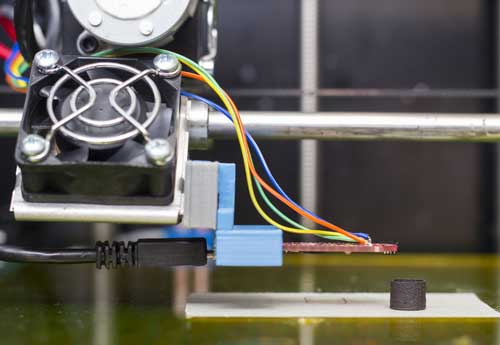
www.nanowerk.com/news2/gadget/newsid=44907.php

www.nanowerk.com/news2/gadget/newsid=44907.php
NASA investigates 3-D printing for building densely populated electronic assemblies; as detector assemblies get smaller +denser -- packed with electronic components that all must be electrically connected to sense and read out signals -- it's becoming increasingly more challenging to design +manufacture these all-important instrument devices. A team of NASA technologists, @the Goddard Space Flight Center, in Greenbelt, Maryland, however, has begun investigating the use of a technique called aerosol jet printing, or direct-write manufacturing, to produce new detector assemblies, that are NOT possible with traditional assembly processes
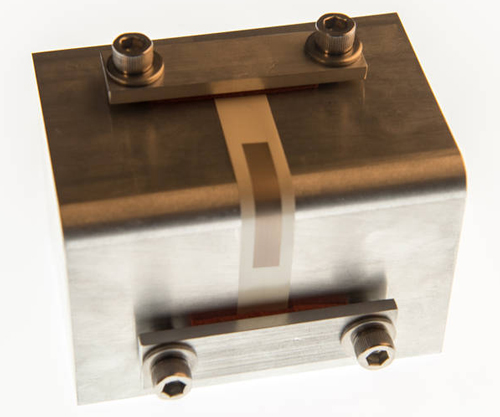
- This image shows a flat liquid crystal polymer(LCP) strip containing gold traces, or wires, that were printed with a technique called aerosol jet printing. The traces are 60 microns wide, <a human hair.(Image: NASA/W. Hrybyk) -
www.nanowerk.com/news2/gadget/newsid=43177.php

- This image shows a flat liquid crystal polymer(LCP) strip containing gold traces, or wires, that were printed with a technique called aerosol jet printing. The traces are 60 microns wide, <a human hair.(Image: NASA/W. Hrybyk) -
www.nanowerk.com/news2/gadget/newsid=43177.php
Unlocking potential of 3D printed rocket parts, with neutrons
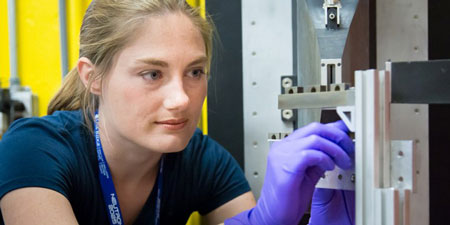
- Stacey Bagg, research engineer from NASA’s Marshall Space Flight Center, is using HFIR beam line HB-2B, to study residual stress in additive manufactured rocket engine components to qualify them for space flight. -
www.nanowerk.com/news2/gadget/newsid=44572.php

- Stacey Bagg, research engineer from NASA’s Marshall Space Flight Center, is using HFIR beam line HB-2B, to study residual stress in additive manufactured rocket engine components to qualify them for space flight. -
www.nanowerk.com/news2/gadget/newsid=44572.php
Researchers 3D print metamaterial 
 , that shrinks when heated
, that shrinks when heated  ; Members of Lawrence Livermore National Lab’s Additive Manufacturing Initiative are among a group of researchers who have developed 3D printed materials, with a unique property -- instead of expanding when heated, they shrink; In a study, published on Oct. 21, by the journal Physical Review Letters("Lightweight Mechanical Metamaterials with Tunable Negative Thermal Expansion"), LLNL engineers, along with scientists from the University of Southern California, MIT +UCLA, describe the 3D printing of lightweight metamaterials with negative thermal expansion that can be “tuned”, to shrink over a large range of temperatures
; Members of Lawrence Livermore National Lab’s Additive Manufacturing Initiative are among a group of researchers who have developed 3D printed materials, with a unique property -- instead of expanding when heated, they shrink; In a study, published on Oct. 21, by the journal Physical Review Letters("Lightweight Mechanical Metamaterials with Tunable Negative Thermal Expansion"), LLNL engineers, along with scientists from the University of Southern California, MIT +UCLA, describe the 3D printing of lightweight metamaterials with negative thermal expansion that can be “tuned”, to shrink over a large range of temperatures
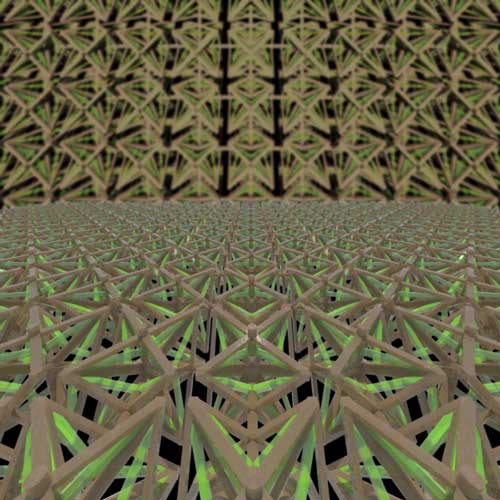
- LLNL researchers were part of a team that demonstrated a bi-material microlattice structure, 3D printed from polymer +a polymer/copper composite material, that can flex inward, causing the structure to contract when exposed to heat over a range of tens to hundreds of degrees.(Image: LLNL) -
------> www.nanowerk.com/news2/gadget/newsid=44897.php

 , that shrinks when heated
, that shrinks when heated  ; Members of Lawrence Livermore National Lab’s Additive Manufacturing Initiative are among a group of researchers who have developed 3D printed materials, with a unique property -- instead of expanding when heated, they shrink; In a study, published on Oct. 21, by the journal Physical Review Letters("Lightweight Mechanical Metamaterials with Tunable Negative Thermal Expansion"), LLNL engineers, along with scientists from the University of Southern California, MIT +UCLA, describe the 3D printing of lightweight metamaterials with negative thermal expansion that can be “tuned”, to shrink over a large range of temperatures
; Members of Lawrence Livermore National Lab’s Additive Manufacturing Initiative are among a group of researchers who have developed 3D printed materials, with a unique property -- instead of expanding when heated, they shrink; In a study, published on Oct. 21, by the journal Physical Review Letters("Lightweight Mechanical Metamaterials with Tunable Negative Thermal Expansion"), LLNL engineers, along with scientists from the University of Southern California, MIT +UCLA, describe the 3D printing of lightweight metamaterials with negative thermal expansion that can be “tuned”, to shrink over a large range of temperatures
- LLNL researchers were part of a team that demonstrated a bi-material microlattice structure, 3D printed from polymer +a polymer/copper composite material, that can flex inward, causing the structure to contract when exposed to heat over a range of tens to hundreds of degrees.(Image: LLNL) -
------> www.nanowerk.com/news2/gadget/newsid=44897.php
A.Schulman & Prodways partner, to make new SLS materials

https://3dprintingindustry.com/news/schulman-prodways-partne…

https://3dprintingindustry.com/news/schulman-prodways-partne…
hier haben wir was für lonely people, Fernbeziehungen und so 

3D print your girlfriend


3D print your girlfriend
was "man so drucken kann",
erstaunlich sinnvolle Sachen dabei,
die mit den Tieren finde ich toll
- From beautiful and unbelievable instruments that actually work to even things like an incredible 3D printed pizza made by NASA!
Subscribe to Talltanic http://goo.gl/wgfvrr
# 10 3D-Printed Ear
You’ve seen 3D printing make fashion garments and body prosthetics, so it’s not too much of a leap to imagine a 3D printed organ. Scientists at Princeton University designed this bionic ear that can actually hear even better than human ears. The 3D printed cells and nanoparticles with a small coil antenna create the cyber ear that can be installed onto a real human and hear radio frequencies a million times higher than our own ears.
# 9 3D-Printed Cast
Jake Evill was a recent graduate of Victoria University when he broke his hand and was stuck with an arm cast that he found “archaic.” So he designed a cast for the millennial: a 3D printed, lightweight, washable, and breathable. It lets in air and prevents that age-old feeling of gross itchiness and suffocation the usual plaster casts come with. Plus, they just look super cool.
# 8 3D Printed Pizza
Try explaining to someone from 10 years ago that NASA funded a 3D printing project to print pizza. Well, that’s the reality we are living in. The company known as BeeHex was commissioned by NASA to develop palatable food for astronauts’ deep space journeys to Mars. The printer can create specific flavors and toppings and even shapes based on scanned .JPEG files to keep those bored astronauts appeased on their years-long journey. Humans aren’t scheduled to make any trips to our sister planet until the early 2030s, so we’ll probably be seeing these printed pizzas at theme parks and novelty restaurants until then.
# 7 Shakuhachi Flute
The Shakuhachi flute is a beautiful Japanese flute from the ancient Edo period that is classically made from a bamboo shoot. In 2016, you can now 3D print one out of stainless steel with matte or gold finishes and an intricate dragon design. You can own this ancient instrument for as little as 240 dollars.
# 6 3D Fetus
3D scans of your unborn fetus can be a little confusing to look at or understand. Now, you can get a 3D print of your fetus to hold and touch and see. For as little as 1275 US dollars a Japanese company will create a small sculpture with a software called Biotexture.
# 5 3DVarius Violin
If you’re into instruments at all you’re probably aware of the Stradivarius Violins and string instruments renowned for their well-made instruments. The 3Dvarius violins brings that model to the modern age with a slick 3D printed polymer design and funky synthetic sound. While it is based on the Stradivarius violins, it’s goal was to be it’s own unique shape and have it’s own unique sound.
#4 Tampon Magazine
Here’s something I’m sure none of us thought would exist: a Tampon Magazine. It’s meant to make you have fun and feel cute storing your tampons in a hyper-femme bullet style box, letting you shoot ‘em out whenever you need. It isn't really space efficient or practical but it is a way to bring something fun into what is arguably the worst time of any lunar cycle.
#3 3D Printed Medical Models
Surgeons and medical practitioners often have to practice procedures on dummy models or cadavers, but as you can imagine those options are either slightly inaccurate or expensive and a limited resource. Now, with 3D printed models practice dummies are easier to come by AND more accurate which is great for patients and surgeons alike.
# 2 3D Printed Buildings
When you think about 3D printing, you usually imagine printing little gadgets, lifehacks, and little things that make your life easier. If you take that to its logical conclusion, you might wonder if we'll ever have 3D printed buildings and housing. Well, we do, and they were printed and constructed by WinSun in China. These two buildings were constructed from parts entirely made with specially made 3D printing technology including the plumbing, wiring, and entire foundations.
# 1 3D Printed Camera Lens
This camera - including the lens - was made completely with a 3D printer, and it actually works! Camera lenses are made from either acyrlic or sandblasted resin, and it has all the moving parts that allow you to change aperture, load and unload film. The photos that come from this 3D printed camera aren’t exactly crisp or super pristine, but they have a dreamy quality about them that you would expect to come out of a handcrafted camera. -
erstaunlich sinnvolle Sachen dabei,
die mit den Tieren finde ich toll
- From beautiful and unbelievable instruments that actually work to even things like an incredible 3D printed pizza made by NASA!
Subscribe to Talltanic http://goo.gl/wgfvrr
# 10 3D-Printed Ear
You’ve seen 3D printing make fashion garments and body prosthetics, so it’s not too much of a leap to imagine a 3D printed organ. Scientists at Princeton University designed this bionic ear that can actually hear even better than human ears. The 3D printed cells and nanoparticles with a small coil antenna create the cyber ear that can be installed onto a real human and hear radio frequencies a million times higher than our own ears.
# 9 3D-Printed Cast
Jake Evill was a recent graduate of Victoria University when he broke his hand and was stuck with an arm cast that he found “archaic.” So he designed a cast for the millennial: a 3D printed, lightweight, washable, and breathable. It lets in air and prevents that age-old feeling of gross itchiness and suffocation the usual plaster casts come with. Plus, they just look super cool.
# 8 3D Printed Pizza
Try explaining to someone from 10 years ago that NASA funded a 3D printing project to print pizza. Well, that’s the reality we are living in. The company known as BeeHex was commissioned by NASA to develop palatable food for astronauts’ deep space journeys to Mars. The printer can create specific flavors and toppings and even shapes based on scanned .JPEG files to keep those bored astronauts appeased on their years-long journey. Humans aren’t scheduled to make any trips to our sister planet until the early 2030s, so we’ll probably be seeing these printed pizzas at theme parks and novelty restaurants until then.
# 7 Shakuhachi Flute
The Shakuhachi flute is a beautiful Japanese flute from the ancient Edo period that is classically made from a bamboo shoot. In 2016, you can now 3D print one out of stainless steel with matte or gold finishes and an intricate dragon design. You can own this ancient instrument for as little as 240 dollars.
# 6 3D Fetus
3D scans of your unborn fetus can be a little confusing to look at or understand. Now, you can get a 3D print of your fetus to hold and touch and see. For as little as 1275 US dollars a Japanese company will create a small sculpture with a software called Biotexture.
# 5 3DVarius Violin
If you’re into instruments at all you’re probably aware of the Stradivarius Violins and string instruments renowned for their well-made instruments. The 3Dvarius violins brings that model to the modern age with a slick 3D printed polymer design and funky synthetic sound. While it is based on the Stradivarius violins, it’s goal was to be it’s own unique shape and have it’s own unique sound.
#4 Tampon Magazine
Here’s something I’m sure none of us thought would exist: a Tampon Magazine. It’s meant to make you have fun and feel cute storing your tampons in a hyper-femme bullet style box, letting you shoot ‘em out whenever you need. It isn't really space efficient or practical but it is a way to bring something fun into what is arguably the worst time of any lunar cycle.
#3 3D Printed Medical Models
Surgeons and medical practitioners often have to practice procedures on dummy models or cadavers, but as you can imagine those options are either slightly inaccurate or expensive and a limited resource. Now, with 3D printed models practice dummies are easier to come by AND more accurate which is great for patients and surgeons alike.
# 2 3D Printed Buildings
When you think about 3D printing, you usually imagine printing little gadgets, lifehacks, and little things that make your life easier. If you take that to its logical conclusion, you might wonder if we'll ever have 3D printed buildings and housing. Well, we do, and they were printed and constructed by WinSun in China. These two buildings were constructed from parts entirely made with specially made 3D printing technology including the plumbing, wiring, and entire foundations.
# 1 3D Printed Camera Lens
This camera - including the lens - was made completely with a 3D printer, and it actually works! Camera lenses are made from either acyrlic or sandblasted resin, and it has all the moving parts that allow you to change aperture, load and unload film. The photos that come from this 3D printed camera aren’t exactly crisp or super pristine, but they have a dreamy quality about them that you would expect to come out of a handcrafted camera. -
Wer nichts verträgt,
nicht ansehen
3D printing gives man a new face, and a new life
- A British man lost the left side of his face after a surgery to remove a tumour. After the surgery he was unable to eat and drink properly due to a hole in his face. After a doctor used 3D printing technology to create a prosthetic face and rebuild the left side, he was finally able to get his life back and live like a normal person again............................. -
nicht ansehen
3D printing gives man a new face, and a new life
- A British man lost the left side of his face after a surgery to remove a tumour. After the surgery he was unable to eat and drink properly due to a hole in his face. After a doctor used 3D printing technology to create a prosthetic face and rebuild the left side, he was finally able to get his life back and live like a normal person again............................. -
- Visit our FB page for more interesting updates on Robotics:-https://www.facebook.com/robotsthenex...
3D bioprinting is the process of generating spatially-controlled cell patterns using 3D printing technologies, where cell function and viability are preserved within the printed construct.
Using 3D bioprinting for fabricating biological constructs typically involves dispensing cells onto a biocompatible scaffold using a successive layer-by-layer approach to generate tissue-like three-dimensional structures. Given that every tissue in the body is naturally compartmentalized of different cell types, many technologies for printing these cells vary in their ability to ensure stability and viability of the cells during the manufacturing process. Some of the methods that are used for 3D bioprinting of cells are photolithography, magnetic bioprinting, stereolithography, and direct cell extrusion. When a bioprinted pre-tissue is transferred to an incubator this cell-based pre-tissue matures into a tissue.
he printer is optimized to be able to print skin tissue, heart tissue, and blood vessels among other basic tissues that could be suitable for surgical therapy and transplantation. A research team at Swansea University in the UK is using Bioprinting technology to produce soft tissues and artificial bones for eventual use in reconstructive surgery
Credits-National Geographic Channel -
- In an age where new medical technologies are in such high demand, wouldn't a 3D bioprinter be useful? In this talk, Dr. Sam Wadsworth explains he sees a future full of bioprinted human airways and organs.
Sam is a scientist, inventor, and entrepreneur. He completed his Ph.D. in respiratory cell biology in the UK before relocating to Vancouver in 2007 to work as an academic researcher at St. Paul’s Hospital. In 2013, Sam co-founded a biotechnology company that uses a unique bioprinting technology that has the potential to revolutionise how we treat disease and the ageing process. He sees a future where human tissues can be provided on demand, where donor organs are built, not harvested, and where drugs are tested on bioprinted artificial tissues, not animals.
This talk was given at a TEDx event using the TED conference format but independently organized by a local community. Learn more at http://ted.com/tedx -
landen auf der Beobachtungs- /"vielleicht-noch-mehr-zu-anschauen"/-Liste
bin aber schon ein "bisschen ähnlich" vertreten
The MedTech Company That’s Fighting Obesity, with 3D Printing


www.equities.com/news/the-medtech-company-that-s-fighting-ob…
"We live in fascinating times. Our modern way of life has brought incredible technological advances that makes our lives simpler and more efficient than people even a few decades ago could scarcely imagine. However, a variety of complex factors in our society have also led to major problems for our environment, and at least as importantly, our own health. Obesity has steadily risen for many years in the US, to the point that more than 68.8% of adults in the US today are considered overweight or obese.
While there are certainly societal factors at play in the growing obesity epidemic, one of the hallmarks of modern society - advancements in technology - is being used by the team at BioSculpture Technology, Inc. to fight it. Dr. Robert L. Cucin, a practicing plastic surgeon who’s affiliated with The New York Downtown Hospital and is also the President and CEO of BioSculpture Technology, Inc. In a recent interview with Equities.com Broadcast Contributor Silvia Davi, Cucin explained how his company is utilizing technology to make bariatric surgery safer, less invasive, and more cost-effective than ever before.
“Bariatric surgery, as it’s done right now, is basically bypass or restrictive,” Cucin explains. “So, there are a bunch of competitors, but the number of procedures has plateaued at about 220,000 a year because people are not that happy with the current alternatives. They have serious complications.”
BioSculpture Technology Inc. uses a device that allows their doctors to “take out the visceral, or belly fat inside the abdomen that causes all the problems of obesity,” according to Cucin. “So, we can do that in a way that wasn’t possible before our technology made it reasonable.”
“Lipo used to be a lot of work, a lot of effort,so we made a device to take the drudgery away,” Cucin explains. “Now, it just so happens that that particular device gives us the capability of putting it in a small incision and removing the fat inside the stomach, underneath the muscle, in the mesentery in a way that was never done before.” To put simply, “we’re taking out fat safely, in a way that it could only be cut out before.”
Rapid Tech Advances Pushing Big Changes, in Bariatric Surgery
So what exactly has allowed BioSculpture Technology Inc. to reduce the invasiveness of bariatric surgery? According to Cucin, it largely comes down to the incredible recent technological advancements and their ability to take advantage of them. Cucin says that the company’s “collaborative and engineering programs allow you to make functional models, and use those exact same models in your marketing materials, and then put them out to a 3D printer...which is just, totally revolutionary.”
- BioSculpture Technology Inc. CEO Dr. Robert L. Cucin on how they use 3D printing to make bariatric surgery safer and more affordable. -
Just how revolutionary is this 3D printing? Think sci-fi. “It’s like the Star Trek replicator



 , basically,” says Cucin. “This way, you can really speed up and accelerate the design process, by having cheap versions which you can use. So, you can feel, you can see how they work, and you can see how they feel in your hand, ergonomically.”
, basically,” says Cucin. “This way, you can really speed up and accelerate the design process, by having cheap versions which you can use. So, you can feel, you can see how they work, and you can see how they feel in your hand, ergonomically.”
BioSculpture Technology, Inc.’s Next Step Forward? IPO
The rapid progress in medical technology is no doubt intriguing for the millions of people suffering from obesity and related diseases. However, investors in the medical technology space have reason for excitement as well, as BioSculpture Technology, Inc. is taking advantage of new JOBS Act rules to take steps toward going public.
“The SEC qualified a Tier II Regulation A process on September 1st,” Cucin reveals. And it appears the move toward the market is only accelerating the work BioScuplture Technology, Inc. is doing. “It will facilitate a fast roll-out,” Cucin explains. “We basically have a model that we will have a working prototype, and do some clinical testing within a year. Once we’re on to those efficacy studies, and then onto insurance reimbursement, that facilitates a rapid scale-up, and putting up branded centers that can cross-sell liposuction devices, bariatric treatment devices, and offer these procedures to patients. We have both method and device patents, so it allows us to have those cross-selling branded centers.”
______________________________________________________________________________
In the interest of full disclosure, we call the reader's attention to the fact that Equities.com, Inc. is compensated by the companies profiled in the Spotlight Companies section. The purpose of these profiles is to provide awareness of these companies to investors in the micro, small-cap and growth equity community and should not in any way be considered as a recommendation to buy, sell or hold these securities. Equities.com is not a registered broker dealer, investment advisor, financial analyst, investment banker or other investment professional. We are a publisher of original and third party news and information. All profiles are based on information that is available to the public. The information contained herein should not be considered to be complete and is not guaranteed by Equities.com to be free from misstatement or errors. The views expressed are our own and not intended to be the basis for any investment decision. Readers are reminded to do their own due diligence when researching any companies mentioned on this website. Always bear in mind that investing in early-stage companies is risky and you are encouraged to only invest an amount that you can afford to lose completely without any change in your lifestyle. Equities has been compensated with a combination of cash, common shares and/or warrants for market awareness services provided.
DISCLOSURE: The views and opinions expressed in this article are those of the authors, and do not represent the views of equities.com. Readers should not consider statements made by the author as formal recommendations and should consult their financial advisor before making any investment decisions. To read our full disclosure, please go to: http://www.equities.com/disclaimer "
bin aber schon ein "bisschen ähnlich" vertreten
The MedTech Company That’s Fighting Obesity, with 3D Printing


www.equities.com/news/the-medtech-company-that-s-fighting-ob…
"We live in fascinating times. Our modern way of life has brought incredible technological advances that makes our lives simpler and more efficient than people even a few decades ago could scarcely imagine. However, a variety of complex factors in our society have also led to major problems for our environment, and at least as importantly, our own health. Obesity has steadily risen for many years in the US, to the point that more than 68.8% of adults in the US today are considered overweight or obese.
While there are certainly societal factors at play in the growing obesity epidemic, one of the hallmarks of modern society - advancements in technology - is being used by the team at BioSculpture Technology, Inc. to fight it. Dr. Robert L. Cucin, a practicing plastic surgeon who’s affiliated with The New York Downtown Hospital and is also the President and CEO of BioSculpture Technology, Inc. In a recent interview with Equities.com Broadcast Contributor Silvia Davi, Cucin explained how his company is utilizing technology to make bariatric surgery safer, less invasive, and more cost-effective than ever before.
“Bariatric surgery, as it’s done right now, is basically bypass or restrictive,” Cucin explains. “So, there are a bunch of competitors, but the number of procedures has plateaued at about 220,000 a year because people are not that happy with the current alternatives. They have serious complications.”
BioSculpture Technology Inc. uses a device that allows their doctors to “take out the visceral, or belly fat inside the abdomen that causes all the problems of obesity,” according to Cucin. “So, we can do that in a way that wasn’t possible before our technology made it reasonable.”
“Lipo used to be a lot of work, a lot of effort,so we made a device to take the drudgery away,” Cucin explains. “Now, it just so happens that that particular device gives us the capability of putting it in a small incision and removing the fat inside the stomach, underneath the muscle, in the mesentery in a way that was never done before.” To put simply, “we’re taking out fat safely, in a way that it could only be cut out before.”
Rapid Tech Advances Pushing Big Changes, in Bariatric Surgery
So what exactly has allowed BioSculpture Technology Inc. to reduce the invasiveness of bariatric surgery? According to Cucin, it largely comes down to the incredible recent technological advancements and their ability to take advantage of them. Cucin says that the company’s “collaborative and engineering programs allow you to make functional models, and use those exact same models in your marketing materials, and then put them out to a 3D printer...which is just, totally revolutionary.”
- BioSculpture Technology Inc. CEO Dr. Robert L. Cucin on how they use 3D printing to make bariatric surgery safer and more affordable. -
Just how revolutionary is this 3D printing? Think sci-fi. “It’s like the Star Trek replicator




 , basically,” says Cucin. “This way, you can really speed up and accelerate the design process, by having cheap versions which you can use. So, you can feel, you can see how they work, and you can see how they feel in your hand, ergonomically.”
, basically,” says Cucin. “This way, you can really speed up and accelerate the design process, by having cheap versions which you can use. So, you can feel, you can see how they work, and you can see how they feel in your hand, ergonomically.”BioSculpture Technology, Inc.’s Next Step Forward? IPO
The rapid progress in medical technology is no doubt intriguing for the millions of people suffering from obesity and related diseases. However, investors in the medical technology space have reason for excitement as well, as BioSculpture Technology, Inc. is taking advantage of new JOBS Act rules to take steps toward going public.
“The SEC qualified a Tier II Regulation A process on September 1st,” Cucin reveals. And it appears the move toward the market is only accelerating the work BioScuplture Technology, Inc. is doing. “It will facilitate a fast roll-out,” Cucin explains. “We basically have a model that we will have a working prototype, and do some clinical testing within a year. Once we’re on to those efficacy studies, and then onto insurance reimbursement, that facilitates a rapid scale-up, and putting up branded centers that can cross-sell liposuction devices, bariatric treatment devices, and offer these procedures to patients. We have both method and device patents, so it allows us to have those cross-selling branded centers.”
______________________________________________________________________________
In the interest of full disclosure, we call the reader's attention to the fact that Equities.com, Inc. is compensated by the companies profiled in the Spotlight Companies section. The purpose of these profiles is to provide awareness of these companies to investors in the micro, small-cap and growth equity community and should not in any way be considered as a recommendation to buy, sell or hold these securities. Equities.com is not a registered broker dealer, investment advisor, financial analyst, investment banker or other investment professional. We are a publisher of original and third party news and information. All profiles are based on information that is available to the public. The information contained herein should not be considered to be complete and is not guaranteed by Equities.com to be free from misstatement or errors. The views expressed are our own and not intended to be the basis for any investment decision. Readers are reminded to do their own due diligence when researching any companies mentioned on this website. Always bear in mind that investing in early-stage companies is risky and you are encouraged to only invest an amount that you can afford to lose completely without any change in your lifestyle. Equities has been compensated with a combination of cash, common shares and/or warrants for market awareness services provided.
DISCLOSURE: The views and opinions expressed in this article are those of the authors, and do not represent the views of equities.com. Readers should not consider statements made by the author as formal recommendations and should consult their financial advisor before making any investment decisions. To read our full disclosure, please go to: http://www.equities.com/disclaimer "
3D printed filters bring more drinking water, to Mexico

https://3dprintingindustry.com/wp-content/uploads/2016/11/Fr…

https://3dprintingindustry.com/wp-content/uploads/2016/11/Fr…
Dieses Bild ist nicht SSL-verschlüsselt: [url]http://auroralabs3d.com/wp-content/uploads/2016/03/slider_img_1.png
[/url]http://auroralabs3d.com/wp-content/uploads/2016/11/Receipt-o…
http://auroralabs3d.com/wp-content/uploads/2016/11/Negotiati…
heiiiiilige K*************(*)cke,
link2 sind so Sachen Die unsere Welt denke ich gewaltig, gewaltig verändern werden:

https://3dprintingindustry.com/news/closer-look-making-metal…
https://3dprintingindustry.com/news/ornl-3d-prints-nanoscopi…
(*) = UMlaut
link2 sind so Sachen Die unsere Welt denke ich gewaltig, gewaltig verändern werden:

https://3dprintingindustry.com/news/closer-look-making-metal…
https://3dprintingindustry.com/news/ornl-3d-prints-nanoscopi…
(*) = UMlaut
Adidas reveals plans for 3D printing ‘SPEEDfactory’; G. Man: "The set-up of the 1st SPEEDFACTORY has kicked off in Ansbach, Germany, to propel a global network of automated production which brings cutting-edge technology to cities around the world. These 1st 500 pairs will help us set the scene for large-scale commercial production, so each consumer can locally get, what they want, when they want it, faster than EVER"
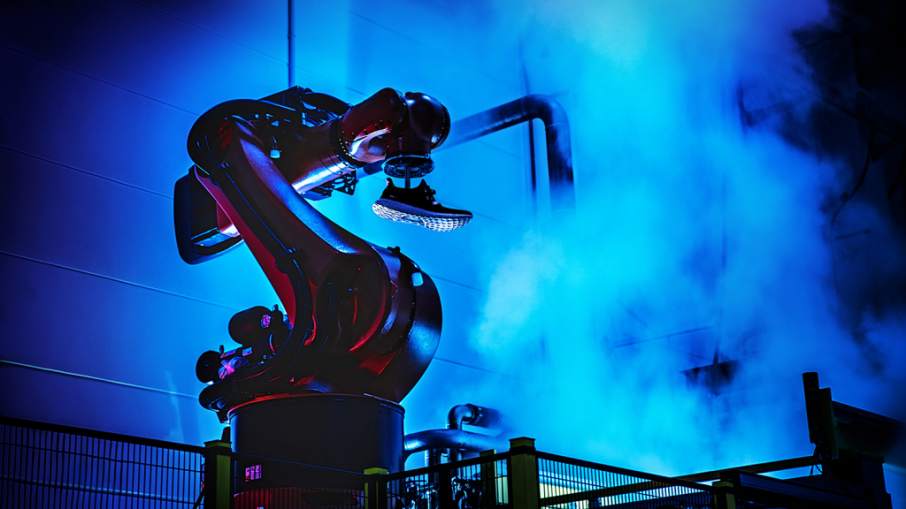
https://3dprintingindustry.com/news/adidas-reveals-plans-3d-…

https://3dprintingindustry.com/news/adidas-reveals-plans-3d-…
Membrane technology COULD be transformed, by 3D printing

www.bath.ac.uk/research/news/2017/01/12/3d-printing-could-tr…

www.bath.ac.uk/research/news/2017/01/12/3d-printing-could-tr…
Antwort auf Beitrag Nr.: 53.822.592 von Popeye82 am 03.12.16 16:37:26

http://auroralabs3d.com/wp-content/uploads/2017/01/Non-Bindi…
http://auroralabs3d.com/wp-content/uploads/2017/01/Non-Bindi…
Antwort auf Beitrag Nr.: 54.106.055 von Popeye82 am 18.01.17 01:32:16

www.asx.com.au/asxpdf/20170201/pdf/43fq46mmfd7071.pdf
www.asx.com.au/asxpdf/20170201/pdf/43fq46mmfd7071.pdf
Dieses Bild ist nicht SSL-verschlüsselt: [url]http://americanhealthcareleader.com/wp-content/uploads/2015/11/Organovo_Banner2.jpg
[/url]http://americanhealthcareleader.com/2016/biotechs-3-d-breakt…
Novel 3-D manufacturing builds complex, bio-like materials
- PULLMAN, Wash. - Washington State University researchers have developed a unique, 3-D manufacturing method that for the first time rapidly creates and precisely controls a material’s architecture from the nanoscale to centimeters - with results that closely mimic the intricate architecture of natural materials like wood and bone. Learn more about this research at https://news.wsu.edu/2017/03/03/novel... -
- PULLMAN, Wash. - Washington State University researchers have developed a unique, 3-D manufacturing method that for the first time rapidly creates and precisely controls a material’s architecture from the nanoscale to centimeters - with results that closely mimic the intricate architecture of natural materials like wood and bone. Learn more about this research at https://news.wsu.edu/2017/03/03/novel... -
Hallo zusammen,
wer kann helfen?
Ich bin auf der Suche nach vielversprechenden Unternehmen, die im 3D-Druck bereits profitabel arbeiten. Aktuell bin ich auf ein deutsches Unternehmen gestossen : Maschinenfabrik Berthold Hermle. Was sind die großen Player in USA?
wer kann helfen?
Ich bin auf der Suche nach vielversprechenden Unternehmen, die im 3D-Druck bereits profitabel arbeiten. Aktuell bin ich auf ein deutsches Unternehmen gestossen : Maschinenfabrik Berthold Hermle. Was sind die großen Player in USA?
Antwort auf Beitrag Nr.: 54.112.316 von Popeye82 am 18.01.17 18:53:23Hallo Popeye, ich hatte vor Jahren mal eine Methode wahrscheinlich einer Universität/ eines Startups irgendow in den Threads vorgestellt, wo es um 3D Print im Zusammenhang und der Manipulation von Atomen ging, quasi der heilige Gral der Materialherstellung - manipulierte Atome, die völlig eigene Materialien Moleküle hervorbringen, evt sogar Elemente? Mich erinnerte das irgendwie an Zyvex aus dem Nanotechhype um 2002. Muss mal selber nachschauen unter meiner alten ID. Hast Du da einen Schimmer, wer das gleich nochmal war?
Hallo,
welcher 3D-Drucker Spezialist macht eigentlich bereits Gewinn?
Sieht für mich noch sehr in der Entwicklung aus?
Wo sind die großen Player, die auch "Großinvestoren" vorweisen können?
Grüße, Hannes
welcher 3D-Drucker Spezialist macht eigentlich bereits Gewinn?
Sieht für mich noch sehr in der Entwicklung aus?
Wo sind die großen Player, die auch "Großinvestoren" vorweisen können?
Grüße, Hannes
Hi,
Ich versuche Euch Beiden noch zu antworten,
wird aber Etwas dauern
Gruß
Ich versuche Euch Beiden noch zu antworten,
wird aber Etwas dauern
Gruß
Antwort auf Beitrag Nr.: 54.675.197 von Popeye82 am 04.04.17 18:14:42
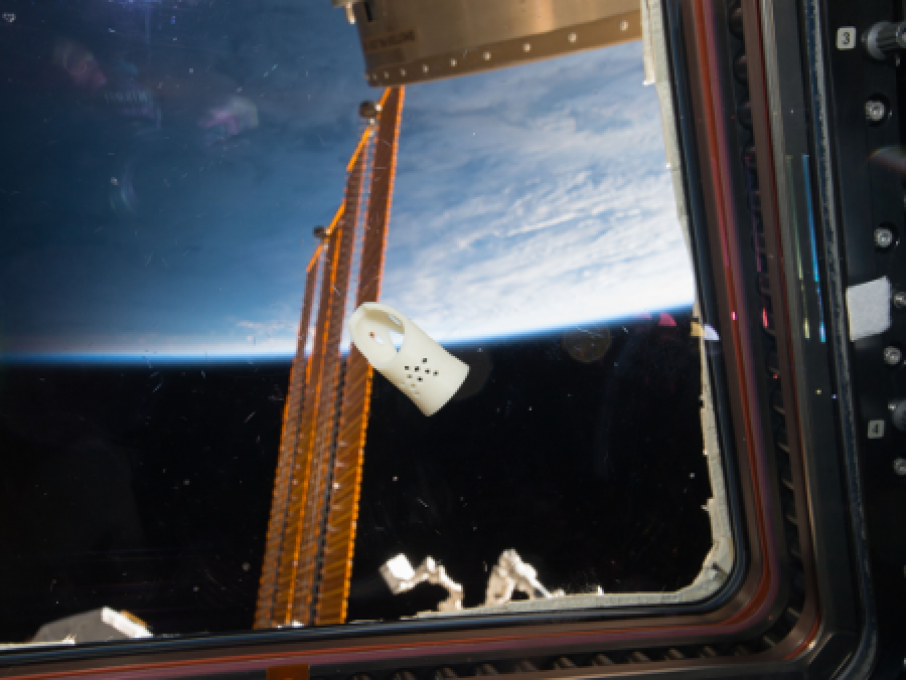
https://3dprintingindustry.com/news/made-space-explain-3d-pr…
https://3dprintingindustry.com/news/nasa-reveals-space-manuf…

https://3dprintingindustry.com/news/made-space-explain-3d-pr…
https://3dprintingindustry.com/news/nasa-reveals-space-manuf…
Antwort auf Beitrag Nr.: 54.112.397 von Popeye82 am 18.01.17 19:02:04
Adidas PLANT , Serienfertigung von Sportschuhen
, Serienfertigung von Sportschuhen 

 , aus dem 3D-Drucker
, aus dem 3D-Drucker
www.wallstreet-online.de/nachricht/9473888-adidas-plant-seri…
Adidas PLANT
 , Serienfertigung von Sportschuhen
, Serienfertigung von Sportschuhen 

 , aus dem 3D-Drucker
, aus dem 3D-Drucker www.wallstreet-online.de/nachricht/9473888-adidas-plant-seri…
Antwort auf Beitrag Nr.: 54.593.919 von H2OAllergiker am 23.03.17 03:14:30
"Do it yourself molecules" ist ziemlich geil

ich klaue mir Diesen Link mal Wenn Das in Ordnung ist.
geile Themen, Was da durchgefiedelt wird
"Do it yourself molecules" ist ziemlich geil


ich klaue mir Diesen Link mal Wenn Das in Ordnung ist.
geile Themen, Was da durchgefiedelt wird
Mach nur, brille mal nach dem Typen, da gibts auch ne Uniseite.
Antwort auf Beitrag Nr.: 54.699.653 von H2OAllergiker am 07.04.17 19:51:41
Wie ist denn aktuell grad Deine Bewertung von NNDM?
1) Denkst Du zu den (Blue Chip)Customer Trials werden noch
a) Viele
b) Wenige
c) Keiner
mehr dazukommen?
2) Denkst Du von den Customer (in)Trials werden
a) Viele
b) Wenige
c) Keiner
konvertieren(adaptieren)?
Bonusfrage: Wann würdest Du am ehesten auf einen Break-Even setzen:
a) 2017
b) 2018
c) 2019
d) 2020
e) GAR nicht/Nie
?!?!?
Wie ist denn aktuell grad Deine Bewertung von NNDM?
1) Denkst Du zu den (Blue Chip)Customer Trials werden noch
a) Viele
b) Wenige
c) Keiner
mehr dazukommen?
2) Denkst Du von den Customer (in)Trials werden
a) Viele
b) Wenige
c) Keiner
konvertieren(adaptieren)?
Bonusfrage: Wann würdest Du am ehesten auf einen Break-Even setzen:
a) 2017
b) 2018
c) 2019
d) 2020
e) GAR nicht/Nie
?!?!?
Könntest Du die Fragen auf Deutsch wiederholen? Bonusantwort: Durchbruch 2018, je nach Konkurrenz, aber wie ich die Israelis kenne, setzen die sich "meistens" durch. Doch die Endzeit endet bald, da kann alles passieren...
Bonusantwort: Durchbruch 2018, je nach Konkurrenz, aber wie ich die Israelis kenne, setzen die sich "meistens" durch. Doch die Endzeit endet bald, da kann alles passieren...
 Bonusantwort: Durchbruch 2018, je nach Konkurrenz, aber wie ich die Israelis kenne, setzen die sich "meistens" durch. Doch die Endzeit endet bald, da kann alles passieren...
Bonusantwort: Durchbruch 2018, je nach Konkurrenz, aber wie ich die Israelis kenne, setzen die sich "meistens" durch. Doch die Endzeit endet bald, da kann alles passieren...
Antwort auf Beitrag Nr.: 54.706.428 von H2OAllergiker am 09.04.17 21:32:59
Bonusantwort: Durchbruch 2018, je nach Konkurrenz...............
____________________________________________
Ich weiss nicht Was Du unter "Durchbruch" verstehst,
ich sprach von Break-Even
Doch die Endzeit endet bald, da kann alles passieren...
_____________________________________
Aha,
na so wirds aber schwierig mit dem stock market
Könntest Du die Fragen auf Deutsch wiederholen?
___________________________________
Was ist daran genau unverständlich?
Ich finde die bockscharf geschossen
Ihr Jungs habt echt Zuviel Phantasie,
manchmal solltet Ihr Euch einfach an Diese "Realität" halten
Bonusantwort: Durchbruch 2018, je nach Konkurrenz...............
____________________________________________
Ich weiss nicht Was Du unter "Durchbruch" verstehst,
ich sprach von Break-Even
Doch die Endzeit endet bald, da kann alles passieren...
_____________________________________
Aha,
na so wirds aber schwierig mit dem stock market
Könntest Du die Fragen auf Deutsch wiederholen?
___________________________________
Was ist daran genau unverständlich?
Ich finde die bockscharf geschossen
Ihr Jungs habt echt Zuviel Phantasie,
manchmal solltet Ihr Euch einfach an Diese "Realität" halten
Betrachtung zu GE
https://www.bloomberg.com/news/articles/2017-04-20/ge-keeps-…
Antwort auf Beitrag Nr.: 54.770.572 von linkshaender am 20.04.17 21:44:14
Das bestätigt denke ich etwas -("nur")weiterer Tropfen auf den Stein-
was ich schon lange gedacht, und gesagt(auch mit Dieser "Eingangsumfrage" adressiert), habe:
dass Das "printing" denke ich in sehr, sehr weite Teile unseres Lebens Einzug halten wird,
und auch erheblich verändern.
ABER,
mindestens "2",
und Das ist sehr, sehr wichtig dabei:
a) "nur weil"/WENN Dies passiert,
bedeutet Das -noch LAAAANGE-nicht dass Die meisten Firmen(AGs) "grosse Gewinner" sein werden.
Das hat erstmal damit NICHTS zu tun,
und ist Was GANZ Anderes.
Worauf ich mich mit dieser Sicht bezog/-ziehe ist in Erster Linie -erstmal-das GESAMTmarktvolumen.
Das wird denke ich sehr, sehr, sehr zunehmen,
über die Zeit, und "später rückwirkend" betrachtet
b) Mein Tipp war -und ist es weiterhin-dass Das Printing zwar, auch, im "Consumer"bereich Einiges Einzug halten wird,
aber wahrscheinlich weit, weit umfangreicher im industriellen Bereich
c) Das ist einfach eine persönliche -teils Daraus-Ableitung:
mich interessieren, wenn, weit, weit mehr(eigentlich "nur"??)
die exotische(re)n Spezialisten als die "Standardzulieferer"
Gruss
Das bestätigt denke ich etwas -("nur")weiterer Tropfen auf den Stein-
was ich schon lange gedacht, und gesagt(auch mit Dieser "Eingangsumfrage" adressiert), habe:
dass Das "printing" denke ich in sehr, sehr weite Teile unseres Lebens Einzug halten wird,
und auch erheblich verändern.
ABER,
mindestens "2",
und Das ist sehr, sehr wichtig dabei:
a) "nur weil"/WENN Dies passiert,
bedeutet Das -noch LAAAANGE-nicht dass Die meisten Firmen(AGs) "grosse Gewinner" sein werden.
Das hat erstmal damit NICHTS zu tun,
und ist Was GANZ Anderes.
Worauf ich mich mit dieser Sicht bezog/-ziehe ist in Erster Linie -erstmal-das GESAMTmarktvolumen.
Das wird denke ich sehr, sehr, sehr zunehmen,
über die Zeit, und "später rückwirkend" betrachtet
b) Mein Tipp war -und ist es weiterhin-dass Das Printing zwar, auch, im "Consumer"bereich Einiges Einzug halten wird,
aber wahrscheinlich weit, weit umfangreicher im industriellen Bereich
c) Das ist einfach eine persönliche -teils Daraus-Ableitung:
mich interessieren, wenn, weit, weit mehr(eigentlich "nur"??)
die exotische(re)n Spezialisten als die "Standardzulieferer"
Gruss
Antwort auf Beitrag Nr.: 54.706.428 von H2OAllergiker am 09.04.17 21:32:59
Könntest Du die Fragen auf Deutsch wiederholen?
___________________________________
O.K.,
wenn ich es Dir "übersetze" -diese Fragen-
KOMMT DANN EINE ANTWORT???
Könntest Du die Fragen auf Deutsch wiederholen?
___________________________________
O.K.,
wenn ich es Dir "übersetze" -diese Fragen-
KOMMT DANN EINE ANTWORT???
Antwort auf Beitrag Nr.: 54.806.806 von pickuru am 26.04.17 09:37:00
hm,
die(Zukunfts)aussagen von Vielen verschiedenen Seiten gehen ja in eine Ähnliche Richtung.
für den Arbeitsmarkt wird das eher nicht so schön.
und wenn diese Dinger irgendwann "atromic scale" können, na dann HALLELUJA
hm,
die(Zukunfts)aussagen von Vielen verschiedenen Seiten gehen ja in eine Ähnliche Richtung.
für den Arbeitsmarkt wird das eher nicht so schön.
und wenn diese Dinger irgendwann "atromic scale" können, na dann HALLELUJA
Linde Details How Helium Improves Additive Manufacturing
www.stockhouse.com/news/press-releases/2017/05/03/linde-deta…
www.stockhouse.com/news/press-releases/2017/05/03/linde-deta…
Hallo, kann jemand dieses Energieunternehmen verifizieren? Marktkap um die 100Mio USD und aus der Nähe "Rüstungsbranche", Aktienpreis ca 3USD. O-Ton: vor mir liegt ein Dokument aus den USA, das schockierende Details darüber enthält, was wahrscheinlich die wichtigste Energie-Innovation der letzten 100 Jahre wird.
Diese revolutionäre Erfindung, die größtenteils von der US-Regierung finanziert wird, steckt in den letzten Entwicklungsschritten vor der Marktreife. Entwickelt wird es von einem kleinen Rüstungszulieferer aus den USA.
Sobald diese Technologie auf den Markt kommt, wird es fast jeden Aspekt der 6 Billionen US-Dollar großen globalen Energiebranche auf den Kopf stellen.http://video.fid-verlag.de/?vlpkit_instance_id=180&wkz=ZUZ51… Dachte erst mal an die mir bekannten, Ocean Power, Capstone Turbine, Eestor, AMSC, Nexans etc. ...passt aber irgendwie nicht.
Diese revolutionäre Erfindung, die größtenteils von der US-Regierung finanziert wird, steckt in den letzten Entwicklungsschritten vor der Marktreife. Entwickelt wird es von einem kleinen Rüstungszulieferer aus den USA.
Sobald diese Technologie auf den Markt kommt, wird es fast jeden Aspekt der 6 Billionen US-Dollar großen globalen Energiebranche auf den Kopf stellen.http://video.fid-verlag.de/?vlpkit_instance_id=180&wkz=ZUZ51… Dachte erst mal an die mir bekannten, Ocean Power, Capstone Turbine, Eestor, AMSC, Nexans etc. ...passt aber irgendwie nicht.
Von wem redet er?
Ich mag es mir nicht zu Ende anschauen.
Ich mag es mir nicht zu Ende anschauen.
Video stoppen, Browserpfeil nach links klicken(für vorletzte Seite), und bei Nachfrage, ob Du auf der Seite bleiben willst, Bejahen. Dann wird das Video ersetzt durch den gleichen Text in geschriebener Textform. 

Antwort auf Beitrag Nr.: 54.858.799 von H2OAllergiker am 03.05.17 21:11:00
du lässt Dich von den falschen Sachen leiten
du lässt Dich von den falschen Sachen leiten
Antwort auf Beitrag Nr.: 54.858.832 von Terry_Teflon am 03.05.17 21:16:42http://www.arotech.com Schau mal hier, war etwas schwieriger zu finden als sonst - Militär ist immer komplex. Kurs stimmt, Marktkap. ebenso! 4 Augen sehen mehr als zwei Aber mit freier Energie hat das niiiichts zu tun
Aber mit freier Energie hat das niiiichts zu tun
 Aber mit freier Energie hat das niiiichts zu tun
Aber mit freier Energie hat das niiiichts zu tun
Antwort auf Beitrag Nr.: 54.706.428 von H2OAllergiker am 09.04.17 21:32:59
Du hast kein Konzept,
es wäre sosoviel mehr möglich
(mit einer targeted Strategie).
ich setz Dich wieder auf Ignore,
von Dir kommt Nix Brauchbares
Du hast kein Konzept,
es wäre sosoviel mehr möglich
(mit einer targeted Strategie).
ich setz Dich wieder auf Ignore,
von Dir kommt Nix Brauchbares
Antwort auf Beitrag Nr.: 55.044.472 von Popeye82 am 30.05.17 19:42:57Du hast soo Recht, ich bin für den Aktienmarkt und für "diese" Welt nicht zu gebrauchen. Das ist mein Schicksal und ich kann es einfach nicht ändern, vieles kann man ändern, aber das erfordert zuviel Energie, die ich für wichtigere Dinge investiere, auch wenn ich momentan einen privaten Totpunkt habe. Das einzige was bei mir geht, ist buy and hold von Dingen, von denen vor 17 Jahren niemand etwas wissen wollte, und ich halte daran fest, weil es einen etwas größeren Aufwand bedeutet, es wieder zu verkaufen, als einfach am Desk einen Button zu drücken und weg ist es. Das ist mein Target, und ich habe es immer gewusst, denn ich glaube heute immer noch so stark daran, wie vor 17 Jahren. Was das ist werden ich hier jetzt aus Trotz nicht mehr verraten.
Antwort auf Beitrag Nr.: 55.045.795 von H2OAllergiker am 30.05.17 22:53:39
ignore bleibt,
aber ich will Dir -davor-noch ein paar Dinge sagen
ignore bleibt,
aber ich will Dir -davor-noch ein paar Dinge sagen
Antwort auf Beitrag Nr.: 55.045.795 von H2OAllergiker am 30.05.17 22:53:39
als STARTER:
Was denkst Du denn Warum ich Dir die NDMD Fragen gestellt habe?
einfach so?
grundlos??
nur Zufall???
als STARTER:
Was denkst Du denn Warum ich Dir die NDMD Fragen gestellt habe?
einfach so?
grundlos??
nur Zufall???
Weil ich von NDMD vielleicht weniger Ahnung habe als Du und trotzdem einen Thread aufgemacht habe? Ich verzettel mich halt immer wieder. Keine Konzentration auf wenige Dinge im Universum. Funktioniert in dieser Welt halt nicht, mein Problem.
Antwort auf Beitrag Nr.: 55.073.359 von H2OAllergiker am 03.06.17 13:18:12
das war m.Ermessen jetzt jedenfalls schon eine ziemlich ehrliche Antwort
(WELL done!!),
part2 FOLGT
das war m.Ermessen jetzt jedenfalls schon eine ziemlich ehrliche Antwort
(WELL done!!),
part2 FOLGT
world’s smallest, +most accurate, 3D printed biopsy robot; the Stormram 4, as the robot is named, is made from 3D-printed plastic, +is driven by air pressure; the advantage of plastic is that the robot can be used in an MRI scanner. Carrying out a biopsy(removing a piece of tissue) during a breast cancer scan in an MRI significantly increases accuracy. The robot won a, prestigious, award during the Surgical Robotic Challenge, @the, international, Hamlyn Symposium in London: one of the, world’s, most, important events in the field of, robotic, surgery

------> www.utwente.nl/en/news/!/2017/6/29081/ut-enters-battle-again…

------> www.utwente.nl/en/news/!/2017/6/29081/ut-enters-battle-again…
Antwort auf Beitrag Nr.: 55.285.498 von Popeye82 am 08.07.17 14:20:36
WhatEVER ails you, a robot COULD soon be there to fix it; Robots in your office, robots in hospitals, robots @home. Is there aaaaaaaaaaaaaaaaaaaanywhere robots won't be in the future????????????????????????????? Froooooooooom what CNET saw, @the culmination of UK Robotics Week, it looooooooooooooooks like the answer is: NOOO. They'll be EVERYwhere

www.cnet.com/news/got-a-medical-ailment-there-could-soon-be-…
WhatEVER ails you, a robot COULD soon be there to fix it; Robots in your office, robots in hospitals, robots @home. Is there aaaaaaaaaaaaaaaaaaaanywhere robots won't be in the future????????????????????????????? Froooooooooom what CNET saw, @the culmination of UK Robotics Week, it looooooooooooooooks like the answer is: NOOO. They'll be EVERYwhere

www.cnet.com/news/got-a-medical-ailment-there-could-soon-be-…
Antwort auf Beitrag Nr.: 55.285.498 von Popeye82 am 08.07.17 14:20:36
Antwort auf Beitrag Nr.: 55.349.861 von H2OAllergiker am 18.07.17 20:15:22
interessant
interessant
A new type of 3D printer developed in Darwin that is faster and cheaper than any existing metal 3D printing technology could revolutionise manufacturing in Australia, the NT Government says.
A $400,000 Government grant has allowed Charles Darwin University to acquire the LightSpEE3D printer where new applications for the technology will be researched.
"So you're talking about a massive change forward now in how you actually manufacture: you can do it very local and very specific and the Territory can lead the way," NT Chief Minister Michael Gunner said.
Coinventor of the device, Steven Camilleri from the Spee3d, said the printer which has reduced the cost and increased the speed of production, is the first of its kind in the world.
"We've got a part that we did for an automotive supplier and we were able to bring the 3D print time down from about 100 to 200 hours to about 20 minutes," Mr Camilleri said.
"And we were able to bring the cost down from sort of $US3,000 to $US5,000 to about $US30."
http://www.abc.net.au/news/2017-07-17/nt-on-map-with-new-3d-…
A $400,000 Government grant has allowed Charles Darwin University to acquire the LightSpEE3D printer where new applications for the technology will be researched.
"So you're talking about a massive change forward now in how you actually manufacture: you can do it very local and very specific and the Territory can lead the way," NT Chief Minister Michael Gunner said.
Coinventor of the device, Steven Camilleri from the Spee3d, said the printer which has reduced the cost and increased the speed of production, is the first of its kind in the world.
"We've got a part that we did for an automotive supplier and we were able to bring the 3D print time down from about 100 to 200 hours to about 20 minutes," Mr Camilleri said.
"And we were able to bring the cost down from sort of $US3,000 to $US5,000 to about $US30."
http://www.abc.net.au/news/2017-07-17/nt-on-map-with-new-3d-…
Dieses Bild ist nicht SSL-verschlüsselt: [url]http://www.abc.net.au/news/image/8717014-3x2-340x227.jpg
[/url]
Antwort auf Beitrag Nr.: 55.357.820 von H2OAllergiker am 19.07.17 20:55:21
"We've got a part that we did for an automotive supplier and we were able to bring the 3D print time down from about 100 to 200 hours to about 20 minutes," Mr Camilleri said. "And we were able to bring the cost down from sort of $US3,000 to $US5,000 to about $US30."
__________________________________________________________________________
da kannst Du Dir mal überlegen Was Das für fabrikation, und "jobs", bedeutet.
wird.
"We've got a part that we did for an automotive supplier and we were able to bring the 3D print time down from about 100 to 200 hours to about 20 minutes," Mr Camilleri said. "And we were able to bring the cost down from sort of $US3,000 to $US5,000 to about $US30."
__________________________________________________________________________
da kannst Du Dir mal überlegen Was Das für fabrikation, und "jobs", bedeutet.
wird.
Es kann nur Gutes bedeuten. Wenn Jobs wegfallen entstehen neue. Wer arbeitslos wird, und mit seiner Zeit umzugehen weiss, wird ein glückliches Leben führen. Mir selbst ist die beste Zeit meines Lebens passiert, als ich arbeitslos wurde. Ich hatte Zeit, ne Menge Dinge zu recherchieren und mir eine neue Meinung zu bilden. Neulich habe ich "zufällig" jemanden kennengelernt, dem es genauso ergangen ist, und der sein Weltbild komplett auf den Kopf gestellt hat, ein konservativer und solider Mensch!
Hat man Zeit und weiss wohin damit, kann einem nichts besseres passieren, oder was meint Ihr warum die Politik auf Teufel komm raus die Leute in Vollbeschäftigung halten will - am besten mit drei Jobs und 800Euro Netto?? Am Ende geht es doch nur darum, den Menschen ihre Lebenszeit zu stehlen, den Lebenskampf zu fördern und das Denken zu unterbinden.
Die meiste Zeit stiehlt die Arbeit, die man nicht gerne macht. Und sagte nicht Rockefeller das alte Schlitzohr sinngemäß in etwa,, es sei lohnender, einen Tag über sein Geld nachzudenken, als einen Monat dafür zu arbeiten? "
Hat man Zeit und weiss wohin damit, kann einem nichts besseres passieren, oder was meint Ihr warum die Politik auf Teufel komm raus die Leute in Vollbeschäftigung halten will - am besten mit drei Jobs und 800Euro Netto?? Am Ende geht es doch nur darum, den Menschen ihre Lebenszeit zu stehlen, den Lebenskampf zu fördern und das Denken zu unterbinden.
Die meiste Zeit stiehlt die Arbeit, die man nicht gerne macht. Und sagte nicht Rockefeller das alte Schlitzohr sinngemäß in etwa,, es sei lohnender, einen Tag über sein Geld nachzudenken, als einen Monat dafür zu arbeiten? "
Nanu, ist in Australien ein neuer Geschwindigkeitskrieg ausgebrochen?
30x Titomic - wirklich 3D Printing?
100x LightSpee3D
100-1000x Aurora Labs
(alle Australien)
...Schneller versprochene Druckgeschwindigkeiten als die derzeit schnellsten Printer.
http://www.titomic.com/aboutus.html
Titomic is an Australian additive manufacturing specialist established to help companies leverage advanced materials and a new proprietary Kinetic Fusion process to produce stronger and faster products at scale.
Co-developed with CSIRO, the Titomic process overcomes the limitations of previous additive manufacturing (3D printing) for metals to manufacture complex parts without shape and size constraints. Based on the well-known ‘Cold Spray technologies’ the US Military use on Blackhawk helicopters’ maintenance and repair, benefits include:
• World’s fastest build rates, 30 times faster than the largest commercial 3D printers available
• Leverage superior materials with the fusion of dissimilar metals and blended alloys
• Production volumes without tooling
• Stronger structures without welding, folding or bending
• Reduced time to market; faster manufacturing time + localised production
• Lower production costs
We provide surface engineering and end to end production support; equipment, software, training, prototyping, product testing, manufacturing modelling, technical support and maintenance.
30x Titomic - wirklich 3D Printing?
100x LightSpee3D
100-1000x Aurora Labs
(alle Australien)
...Schneller versprochene Druckgeschwindigkeiten als die derzeit schnellsten Printer.
http://www.titomic.com/aboutus.html
Titomic is an Australian additive manufacturing specialist established to help companies leverage advanced materials and a new proprietary Kinetic Fusion process to produce stronger and faster products at scale.
Co-developed with CSIRO, the Titomic process overcomes the limitations of previous additive manufacturing (3D printing) for metals to manufacture complex parts without shape and size constraints. Based on the well-known ‘Cold Spray technologies’ the US Military use on Blackhawk helicopters’ maintenance and repair, benefits include:
• World’s fastest build rates, 30 times faster than the largest commercial 3D printers available
• Leverage superior materials with the fusion of dissimilar metals and blended alloys
• Production volumes without tooling
• Stronger structures without welding, folding or bending
• Reduced time to market; faster manufacturing time + localised production
• Lower production costs
We provide surface engineering and end to end production support; equipment, software, training, prototyping, product testing, manufacturing modelling, technical support and maintenance.
Antwort auf Beitrag Nr.: 55.387.209 von H2OAllergiker am 24.07.17 20:20:23
na daaann,
alle Aktien kaufen, und schiess dich ins Glück

Titomic sagte mir schon Was, weil ich bei CSIRO "drin" -Informationsverteilung-bin.
die machen interessante ScheXXXXXsse
na daaann,
alle Aktien kaufen, und schiess dich ins Glück


Titomic sagte mir schon Was, weil ich bei CSIRO "drin" -Informationsverteilung-bin.
die machen interessante ScheXXXXXsse
Antwort auf Beitrag Nr.: 55.387.209 von H2OAllergiker am 24.07.17 20:20:23
Wenn Du an "innovation news" interessiert bist
kannst Du Dich auch in ------> MIT <------ eintragen.
( ------> www.google.com (bleibt unter UNS , psssssssssssssssst!!))
, psssssssssssssssst!!))
Das ist im Prinzip eine Der heissesten innovation Schmieden,
auf the
Wenn Du an "innovation news" interessiert bist
kannst Du Dich auch in ------> MIT <------ eintragen.
( ------> www.google.com (bleibt unter UNS
 , psssssssssssssssst!!))
, psssssssssssssssst!!))Das ist im Prinzip eine Der heissesten innovation Schmieden,
auf the
Nun ist DDD zumindest kurzfr ein Kauf, mglw auch Übernahmekandidat für GE? Im 3D-Sektor tat sich vor wenigen Monaten ein a-zyklisches Signal auf. Zwei Internetseiten, die sich mit 3D-Druck beschäftigten, machten dicht. Die eine aus den USA - 3dprintingstocks.com, sowie 3d-drucken.de(gesponsort von S.Betschinger, einem der Toptrader Deutschlands und Inhaber diverser Tradingdienstanbieter)
Lang erwartete News zu Aurora bzgl Parson :https://hotcopper.com.au/threads/ann-aurora-signs-binding-te…
:https://hotcopper.com.au/threads/ann-aurora-signs-binding-te…
 :https://hotcopper.com.au/threads/ann-aurora-signs-binding-te…
:https://hotcopper.com.au/threads/ann-aurora-signs-binding-te…
Antwort auf Beitrag Nr.: 56.106.629 von H2OAllergiker am 06.11.17 00:47:54gratulation
(keine Ahnung davon)
ihr könnt Hier,
und in Die Anderen Thementhreads,
gern Sachen reinstellen.
-sollte halt "irgendwie relevant/interessant/passend" sein-
nur ich verbürg mich dann nicht -anlageseitig-für den sh******************t


(keine Ahnung davon)
ihr könnt Hier,
und in Die Anderen Thementhreads,
gern Sachen reinstellen.
-sollte halt "irgendwie relevant/interessant/passend" sein-
nur ich verbürg mich dann nicht -anlageseitig-für den sh******************t



there will soon be NOTHING that canNOT be produced, with 3D printing

http://www.innovationtoronto.com/2017/12/3d-printing-mini-bi…
http://www.ethz.ch/en/news-and-events/eth-news/news/2017/12/…
http://www.innovationtoronto.com/2017/12/3d-printing-mini-bi…
http://www.ethz.ch/en/news-and-events/eth-news/news/2017/12/…
Antwort auf Beitrag Nr.: 56.351.693 von Popeye82 am 03.12.17 18:36:01http://www.wiwo.de/futureboard/industrie-wie-der-3-d-druck-e…
Wenn KI, Metadaten und 3D Druck sich zusammentun, ohweia...dauert noch ca. 5 Jahre
Das wird kommen, es ist unumkehrbar. Keine Verschwörungstheorie mehr.
Die Singularität wird für 2040 rum erwartet. Helfen können da nur moralische Regeln oder ein EMP/Sonnensturm.
Das wird kommen, es ist unumkehrbar. Keine Verschwörungstheorie mehr.
Die Singularität wird für 2040 rum erwartet. Helfen können da nur moralische Regeln oder ein EMP/Sonnensturm.
Antwort auf Beitrag Nr.: 56.370.355 von H2OAllergiker am 06.12.17 03:37:03Re: Sie haben KEINE Verschwörungstheorie mehr
Wenn KI, Metadaten und 3D Druck sich zusammentun, ohweiaaaaaaaaaaaaaaaaaaaaaa
_________________________________________________________________
jo, solche Überlegungen hatte ich auch schon,
mehrfach.
und wollte dazu auch nochmal Was(nämlich die m.E. mutmasslich 3 wichtigsten, Entscheidensten Punkte des 3D Drucks, oder(mindestens) "mit"Entscheidensten. und dann würd gern mal wissen ob Das Zustimmung findet) schreiben.
Wenn KI, Metadaten und 3D Druck sich zusammentun, ohweiaaaaaaaaaaaaaaaaaaaaaa
_________________________________________________________________
jo, solche Überlegungen hatte ich auch schon,
mehrfach.
und wollte dazu auch nochmal Was(nämlich die m.E. mutmasslich 3 wichtigsten, Entscheidensten Punkte des 3D Drucks, oder(mindestens) "mit"Entscheidensten. und dann würd gern mal wissen ob Das Zustimmung findet) schreiben.
world's FIRST; reliable components that were physically IMPOSSIBLE or commercially infeasible to produce beFORE
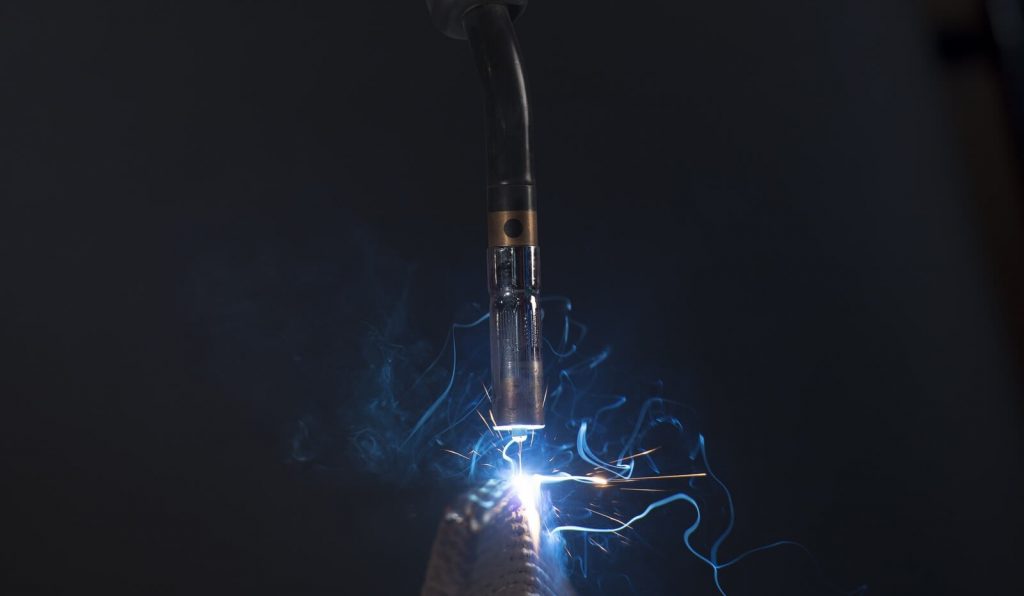
http://www.huismanequipment.com/en/media_centre/press_releas…
https://3dprintingindustry.com/news/huismans-3d-printed-waam…

http://www.huismanequipment.com/en/media_centre/press_releas…
https://3dprintingindustry.com/news/huismans-3d-printed-waam…
Antwort auf Beitrag Nr.: 56.370.355 von H2OAllergiker am 06.12.17 03:37:03SIR Waterhater
Ich finde Es gut Was Sie da Jetzt scheinbar zuletzt machen.
Jedenfalls Das bei "Favoriten 2018".
Ohne Ihre Einreichungen bewerten zu wollen, noch zu können;
aber weil ich da Das Gefühl habe dass Sie Es da (eeeeendlich!!) mal richtig ernsthaft angehen.
DESwegen:
Wollen Sie 2,3; absolut Konkrete, absolut Ernste; Aktien"tipps" haben?
Ich spreche nicht von Irgendwelchen Wolkenkuckucksheimgeschichten, nicht davon "einfach Das Zeug zu kaufen",
sondern sich Diese Dinge ansehen, damit zu beschäftigen, ggf. intensiver, vielleicht in Die Diskusssionen einsteigen;
und dann Selber entscheiden ob aktiv werden.
Ich kann Ihnen nur so sagen(Sensation!): Die Wenigsten Dinge gibt es geschenkt,
und Erfolgreiche Wege sind Selten die Kürzesten und Einfachsten.
Wenn Sie da dranbleiben: Es Ernst zu nehmen, bisschen die Verschwörungs/"Crazy"tabletten absetzen, und sich AUFwand zu machen können Sies m.E. vielleicht noch "hin"kriegen.
Dieses Börsending.
Reissen Sie sich zusammen, dann möglich.
Ich finde Es gut Was Sie da Jetzt scheinbar zuletzt machen.
Jedenfalls Das bei "Favoriten 2018".
Ohne Ihre Einreichungen bewerten zu wollen, noch zu können;
aber weil ich da Das Gefühl habe dass Sie Es da (eeeeendlich!!) mal richtig ernsthaft angehen.
DESwegen:
Wollen Sie 2,3; absolut Konkrete, absolut Ernste; Aktien"tipps" haben?
Ich spreche nicht von Irgendwelchen Wolkenkuckucksheimgeschichten, nicht davon "einfach Das Zeug zu kaufen",
sondern sich Diese Dinge ansehen, damit zu beschäftigen, ggf. intensiver, vielleicht in Die Diskusssionen einsteigen;
und dann Selber entscheiden ob aktiv werden.
Ich kann Ihnen nur so sagen(Sensation!): Die Wenigsten Dinge gibt es geschenkt,
und Erfolgreiche Wege sind Selten die Kürzesten und Einfachsten.
Wenn Sie da dranbleiben: Es Ernst zu nehmen, bisschen die Verschwörungs/"Crazy"tabletten absetzen, und sich AUFwand zu machen können Sies m.E. vielleicht noch "hin"kriegen.
Dieses Börsending.
Reissen Sie sich zusammen, dann möglich.
Danke popeye für das Angebot.
Ich bin bereit dafür, das Ding noch zu drehen.
Gerne per BM, ich schau dann mal, ob deine Konkretos wirklich zu mir passen.
Das muss es bei einem kleinen Depot.
2018 sehe ich für Techs jedenfalls keine Saure Gurken Zeit.
...mühsam ernährte sich das Eichhörnchen...
Ich bin bereit dafür, das Ding noch zu drehen.
Gerne per BM, ich schau dann mal, ob deine Konkretos wirklich zu mir passen.
Das muss es bei einem kleinen Depot.
2018 sehe ich für Techs jedenfalls keine Saure Gurken Zeit.
...mühsam ernährte sich das Eichhörnchen...
Antwort auf Beitrag Nr.: 56.807.290 von H2OAllergiker am 23.01.18 23:42:33waren Sie auch an "A.I." interessiert?
wenn Ja, habe da 1,2 Dinge für Sie.
zum STUDIEREN.
echt nette Teile finde ich.
rest, ggf., über BM.
wenn Ja, habe da 1,2 Dinge für Sie.
zum STUDIEREN.
echt nette Teile finde ich.
rest, ggf., über BM.
vor allem AI, ist mom mein Hauptaugenmerk, siehe BRN.
Falls Thread der entspr. unbekannt;
https://www.wallstreet-online.de/diskussion/1265618-1-10/tcw…
Gibt dort ein Interview mit Alan Kohler, welches bei HC wegen copyright gelöscht wurde.
Heute Nacht ohne News guter move drüben.
Falls Thread der entspr. unbekannt;
https://www.wallstreet-online.de/diskussion/1265618-1-10/tcw…
Gibt dort ein Interview mit Alan Kohler, welches bei HC wegen copyright gelöscht wurde.
Heute Nacht ohne News guter move drüben.
Antwort auf Beitrag Nr.: 56.807.290 von H2OAllergiker am 23.01.18 23:42:33In Diesem Areal(Sektor) können Sie evt auch mal BUCHSTABEN auf Dieser Seite DECHIFFRIEREN.
Ob da EVT eine FetischmatchABILITY gegeben ist:
http://www.titomic.com/
https://hotcopper.com.au/asx/ttt/
p.S.
NNDM halte ich Nach WIE Vor für vollkommen interessant,
würde Sie aber nicht (JETZT) kaufen.

Ob da EVT eine FetischmatchABILITY gegeben ist:
http://www.titomic.com/
https://hotcopper.com.au/asx/ttt/
p.S.
NNDM halte ich Nach WIE Vor für vollkommen interessant,
würde Sie aber nicht (JETZT) kaufen.


Titomic ist klar, hab sie auf dem Radar aber nicht wo ich sagen muss, muss ich haben.
Momentan wegen schlechtem Internet kaum Recherche möglich.
NNDM, der Chart grauenvoll
wenn die mal richtig abkacken, könnt ichs mir vorstellen.
Aber haben die beiden etwas mit A.I. am Hut?
Wäre mir neu...
Momentan wegen schlechtem Internet kaum Recherche möglich.
NNDM, der Chart grauenvoll
wenn die mal richtig abkacken, könnt ichs mir vorstellen.
Aber haben die beiden etwas mit A.I. am Hut?
Wäre mir neu...
Titomic ist klar, hab sie auf dem Radar aber nicht wo ich sagen muss, muss ich haben.
Momentan wegen schlechtem Internet kaum Recherche möglich.
NNDM, der Chart grauenvoll
wenn die mal richtig abkacken, könnt ichs mir vorstellen.
Aber haben die beiden etwas mit A.I. am Hut?
Wäre mir neu...
Blue Prism kennst Du?
Momentan wegen schlechtem Internet kaum Recherche möglich.
NNDM, der Chart grauenvoll
wenn die mal richtig abkacken, könnt ichs mir vorstellen.
Aber haben die beiden etwas mit A.I. am Hut?
Wäre mir neu...
Blue Prism kennst Du?
https://3dprintingindustry.com/news/forecast-says-asia-pacif…
"The market for additive manufacturing is growing. As we saw earlier this month, the International Data Corporation (IDC) has updated its Worldwide Semiannual 3D Printing Spending Guide, predicting that the market-wide spending for 3D printing this year will rise to $12 billion around the world.
To give further insight, the IDC has now released a breakdown of spending in the Asia Pacific region. Over the next three years, from 2017 – 2021, IDC forecasts that the region (excluding Japan – APEJ) will spend $3.6 billion on 3D printing with a five-year compound annual growth rate (CAGR) of 22.4%.
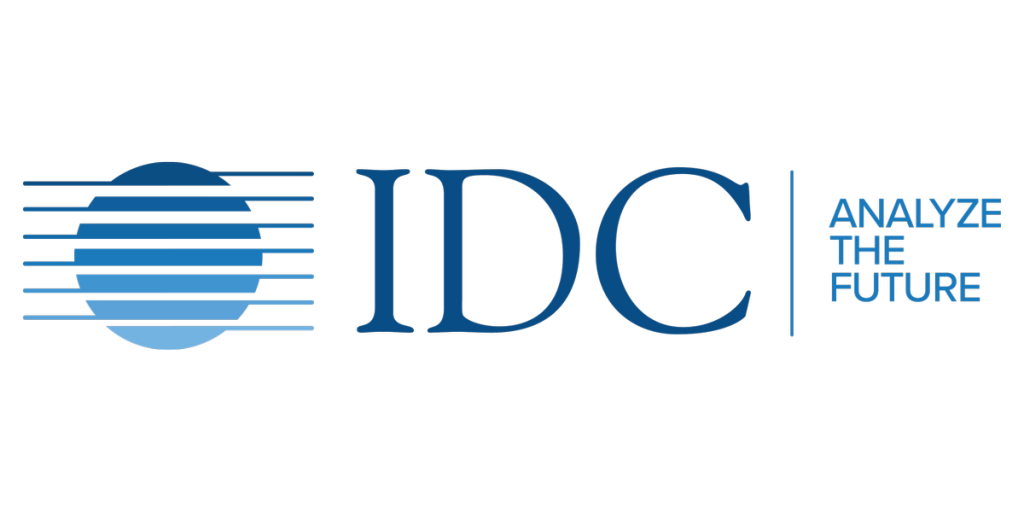
3D printing for aerospace, automotive, education and healthcare
Together with the United States and Western Europe, APEJ contributes up to 18% of the total spending in 3D printing worldwide. The primary area of business, as with the international forecast, is discrete manufacturing, i.e. making distinct items such as cars, planes and toys. By the end of 2018, spending in discrete manufacturing is forecast at $1.1 billion, which will rise to $1.7 billion by 2021.
Again, following the international trend, education and healthcare is the second sector after discrete manufacturing, and in APEJ will account for 37% of the overall spending in 2021.
Towards industry 4.0
Internationally, 3D printing for healthcare is tipped to be the fastest growing market but, interestingly, APEJ is expected to experience the fastest growth in telecommunications (50.2% CAGR) and resource industries (44.0% CAGR), i.e. material mining/development.
Mun Chun Lim, Market Analyst of IDC Asia/Pacific’s Imaging, Printing and Document Solutions Research, comments, “As we are gearing towards industry 4.0 era, 3D printing is poised to transform the manufacturing process and how things are made.”
“The advent of 3D printing opens up endless possibilities and unleashing disruptive power in global supply chain. With on-going development, we will see penetration of 3D printing in other industries, with more innovative use cases developed.”
China leads growth
According to Lim, “China is the force behind APEJ growth.” For the same five year period, 2017-2021, the state has launched an Action Plan to raise the value of 3D printing to $3 billion. As Lim continues, “The Chinese Government is in support of the industry and multiple 3D printing action plan and fiscal supports are seen in place,”
“As results, it boosted the 3D printing uses and spending in the country with continuous interest and rising maturity.”
However, it is still too early to tell what impact 3D printing will have on the country’s mass production stronghold, as proved in a recent study by researchers at University of Nottingham Ningbo China, the University of Exeter in the UK, and De La Salle University in the Philippines.
3D printing in the United Arab Emirates
Known for its ambitious tech-driven development, the United Arab Emirates (UAE) has also recently released a report about the state of manufacturing in the country. Titled “Making the Future” the document examines the trends and prospects of UAE manufacturing, including the promise of a recent partnership with GE, and the inauguration of the International Centre for 3D Printing at Dubai Industrial Park which is, “in keeping with Dubai’s vision to become a 3D printing technology hub.”

Site of the International Centre for 3D Printing at Dubai Industrial Park. Photo via UAE
For IT decision makers
The IDC Worldwide Semiannual 3D Printing Spending Guide is “designed to help IT decision makers” understand the scope and direction of 3D printing expenditures over the next five years.
Though software (CAGR 26.9%) is trailing behind the services and materials aspect of additive manufacturing (CAGR 45%) the lion’s share of spending is necessarily supported by “industry 4.0 ready” solutions, like cloud computing. It will be interesting to watch how the market grows over the next few years."
POTENTIAL paradigm shift, in biotechnology
NEXT Frontier, in Biofabrication: 3
 D Printing
D Printing



 , of Bacteria; bacterial species are now being mixed with various bioinks, to produce functional complex materials using 3D printing; these systems show (enormous) potential, in applications such as bioremediation, sensors that can detect toxic chemicals, oil spill filters, aaaaand…............................; 3D-printed minibiofactories represent a potential paradigm shift, in biotechnology
, of Bacteria; bacterial species are now being mixed with various bioinks, to produce functional complex materials using 3D printing; these systems show (enormous) potential, in applications such as bioremediation, sensors that can detect toxic chemicals, oil spill filters, aaaaand…............................; 3D-printed minibiofactories represent a potential paradigm shift, in biotechnology

http://www.cell.com/trends/biotechnology/fulltext/S0167-7799…
NEXT Frontier, in Biofabrication: 3

 D Printing
D Printing



 , of Bacteria; bacterial species are now being mixed with various bioinks, to produce functional complex materials using 3D printing; these systems show (enormous) potential, in applications such as bioremediation, sensors that can detect toxic chemicals, oil spill filters, aaaaand…............................; 3D-printed minibiofactories represent a potential paradigm shift, in biotechnology
, of Bacteria; bacterial species are now being mixed with various bioinks, to produce functional complex materials using 3D printing; these systems show (enormous) potential, in applications such as bioremediation, sensors that can detect toxic chemicals, oil spill filters, aaaaand…............................; 3D-printed minibiofactories represent a potential paradigm shift, in biotechnologyhttp://www.cell.com/trends/biotechnology/fulltext/S0167-7799…
lead times cut by up to  , with Metal X 3D printer
, with Metal X 3D printer
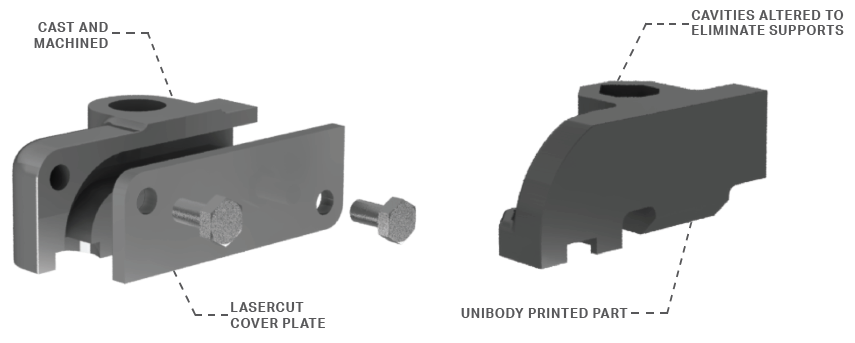
https://3dprintingindustry.com/news/stanley-black-decker-cut…
https://3dprintingindustry.com/news/stanley-black-decker-lau…
http://www.stanleyblackanddecker.com

https://3dprintingindustry.com/news/stanley-black-decker-cut…
https://3dprintingindustry.com/news/stanley-black-decker-lau…
http://www.stanleyblackanddecker.com
Antwort auf Beitrag Nr.: 49.997.403 von Popeye82 am 18.06.15 07:33:32
-Bosch als Vorzeigekunden:https://ultimaker.com/press/48-bosch-announces-global-invest…
Ultimaker hat
-Wachstumskapital in größerem Stil eingesammelt: https://ultimaker.com/press/43-ultimaker-announces-major-fun…-Bosch als Vorzeigekunden:https://ultimaker.com/press/48-bosch-announces-global-invest…
Antwort auf Beitrag Nr.: 57.189.364 von R-BgO am 05.03.18 14:56:31
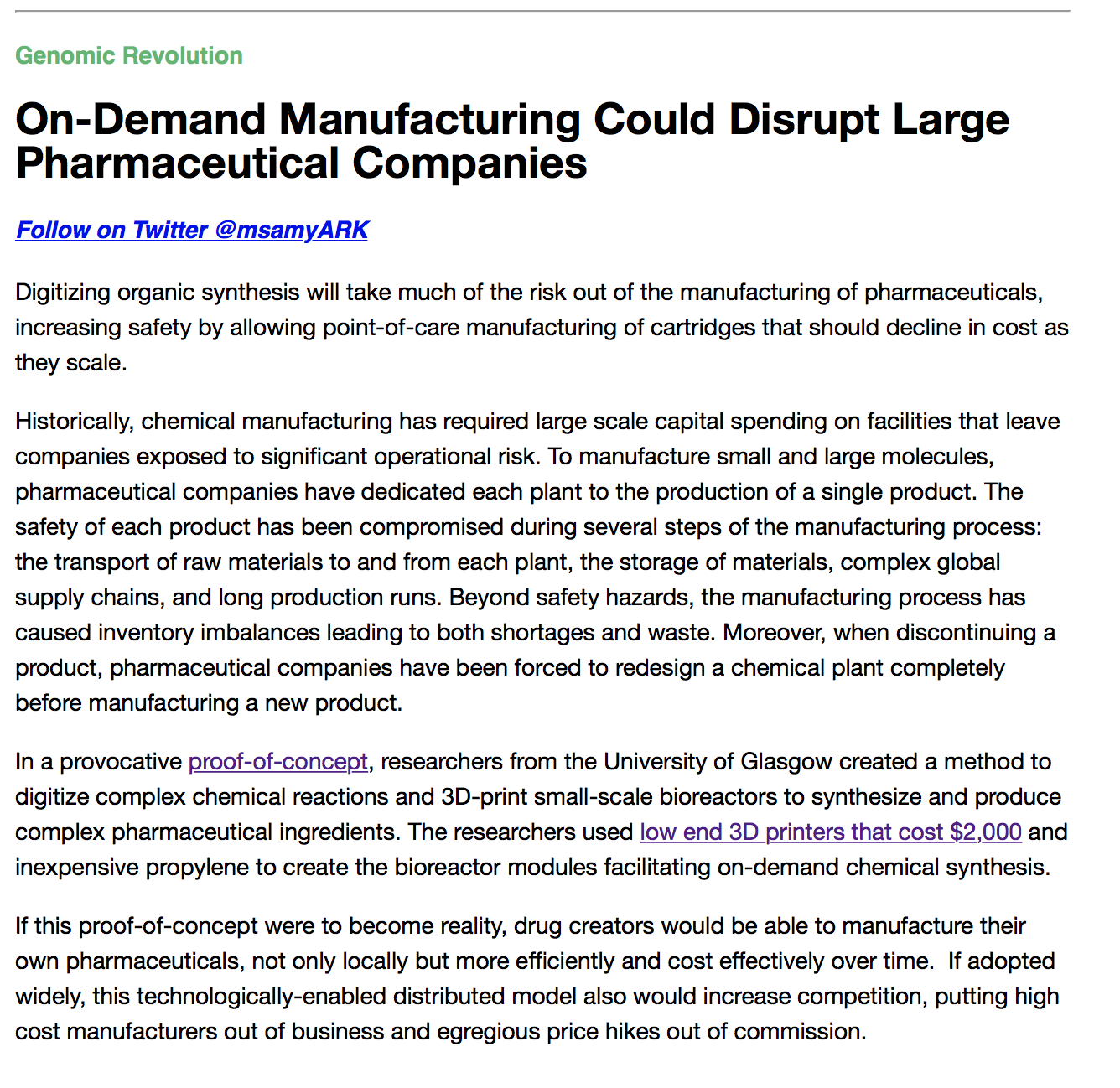
hierüber zufällig drauf gestossen:
sie verbergen sich hinter dem $2000 Link
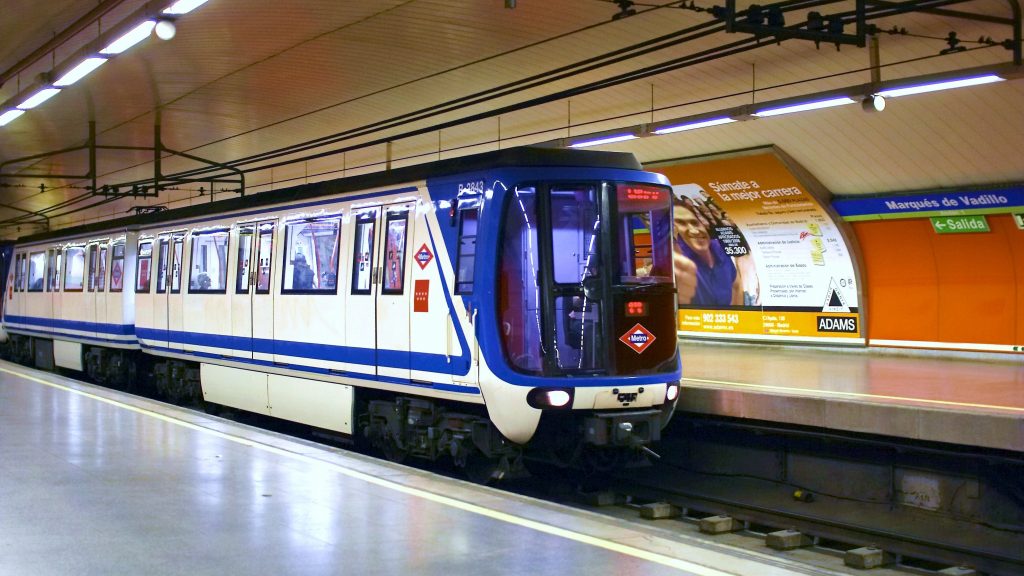
https://3dprintingindustry.com/news/european-railways-plan-m…
http://www.euronews.com/2018/03/02/young-europeans-to-get-fr…
https://research.hud.ac.uk/
https://research.hud.ac.uk/institutes-centres/irr/
http://www.run2rail.eu/
https://shift2rail.org/
http://www.railway-technology.com/features/run2rail-bringing…
https://3dprintingindustry.com/news/deutsche-bahn-extends-us…
https://3dprintingindustry.com/news/siemens-bring-3d-printed…
ist natürlich clever und simpel ,eine dünne Wand zu drucken und den Rest innen zu befüllen - ob das auch irgendwann im Metalldruck funktionieren könnte?
a, clinically validated, 3D-printed stethoscope costs $3 to produce, +can be a lifesaver in areas of the world, where other medical technology is scarce

http://news.westernu.ca/2018/03/innovative-3d-printed-stetho…

http://news.westernu.ca/2018/03/innovative-3d-printed-stetho…
Antwort auf Beitrag Nr.: 57.189.391 von R-BgO am 05.03.18 14:58:20ich schätze dass "on" Demand manufacturing auch noch größeres Potenzial hat.
ist vmtl ein "bisschen " Equivalent zu "Leih"arbeit.
also der funstuff.
ist vmtl ein "bisschen " Equivalent zu "Leih"arbeit.
also der funstuff.
KEY step (to create a BETTER future)
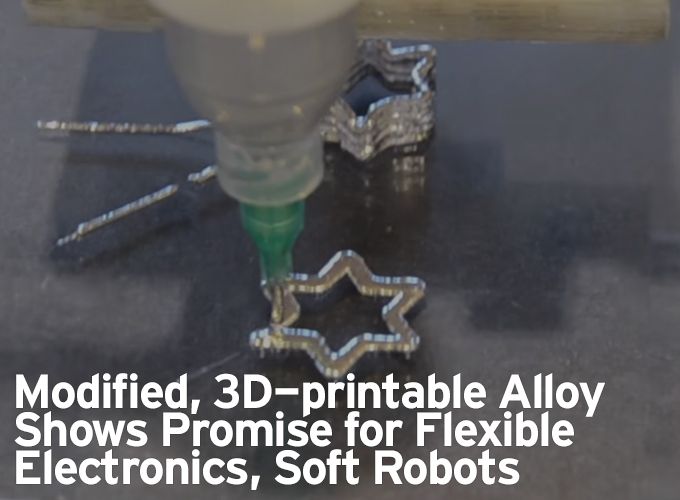
http://www.manufacturingtomorrow.com/article/2018/03/modifie…
http://today.oregonstate.edu/news/modified-3d-printable-allo…
http://robotics.oregonstate.edu/
- Rheological Modification of Liquid Metal for Additive Manufacturing of Stretchable Electronics Hello youtube! We are VERY excited to share our research news with you! We have achieved 3D printing of liquid metal material called galinstan. Modified, 3D-printable alloy shows promise for flexible electronics, soft robots Check out our intro video: https://youtu.be/ylLhkQG7w4U Third video is on the way.... If you have any questions please comment down below. On the news: 1) http://today.oregonstate.edu/news/mod... 2) http://www.ktvz.com/news/osu-research... 3) https://www.eurekalert.org/pub_releas... 4) https://3dprint.com/205872/osu-3d-liq... 5)https://all3dp.com/3d-printable-galli... 6)https://www.sciencedaily.com/releases... If you like to follow me on social media here are the links: Instagram: https://www.instagram.com/osdoyi/ Twitter: https://twitter.com/osdoyi Link to our journal paper: http://onlinelibrary.wiley.com/doi/10... Visit our research lab's website: http://www.mlabrobotics.com Here are the links to equipments used: Anet A8: https://www.gearbest.com/3d-printers-... Ultimus v5: http://www.nordson.com/en/divisions/e... Here is our abstract: One of the challenges to rapidly manufacturing flexible electronics is the complexity involved in printing circuitry from stretchable conductors. Eutectic gallium alloys are typically used as the conductive material because they have unique high conductivity, self-healing, and stretchable properties. However, limited 3D printing has been demonstrated by leveraging the structural stabilization provided by the thin gallium oxide film. Vertical structures are difficult to print with a liquid metal (LM) due to the low viscosity and high surface tension of the gallium alloy, which easily leads to coalescence. A method is presented to alter the physical structure of the liquid metal through the incorporation of a conductive nano- or micronickel fillers. The resulting rheological modification of the liquid metal to a paste drastically increases the fluidic elastic modulus and yield stress, rendering it 3D printable. Further, the modification retains the high electrical conductivity (3.9 × 10^6 ± 9.5 × 10^5 S m−1) and stretchability (over 350% strain) of pure liquid metal. The ability to print 3D standing structures using this highly conductive metal paste opens up new opportunities to manufacture more complex stretchable electronics. -

http://www.manufacturingtomorrow.com/article/2018/03/modifie…
http://today.oregonstate.edu/news/modified-3d-printable-allo…
http://robotics.oregonstate.edu/
- Rheological Modification of Liquid Metal for Additive Manufacturing of Stretchable Electronics Hello youtube! We are VERY excited to share our research news with you! We have achieved 3D printing of liquid metal material called galinstan. Modified, 3D-printable alloy shows promise for flexible electronics, soft robots Check out our intro video: https://youtu.be/ylLhkQG7w4U Third video is on the way.... If you have any questions please comment down below. On the news: 1) http://today.oregonstate.edu/news/mod... 2) http://www.ktvz.com/news/osu-research... 3) https://www.eurekalert.org/pub_releas... 4) https://3dprint.com/205872/osu-3d-liq... 5)https://all3dp.com/3d-printable-galli... 6)https://www.sciencedaily.com/releases... If you like to follow me on social media here are the links: Instagram: https://www.instagram.com/osdoyi/ Twitter: https://twitter.com/osdoyi Link to our journal paper: http://onlinelibrary.wiley.com/doi/10... Visit our research lab's website: http://www.mlabrobotics.com Here are the links to equipments used: Anet A8: https://www.gearbest.com/3d-printers-... Ultimus v5: http://www.nordson.com/en/divisions/e... Here is our abstract: One of the challenges to rapidly manufacturing flexible electronics is the complexity involved in printing circuitry from stretchable conductors. Eutectic gallium alloys are typically used as the conductive material because they have unique high conductivity, self-healing, and stretchable properties. However, limited 3D printing has been demonstrated by leveraging the structural stabilization provided by the thin gallium oxide film. Vertical structures are difficult to print with a liquid metal (LM) due to the low viscosity and high surface tension of the gallium alloy, which easily leads to coalescence. A method is presented to alter the physical structure of the liquid metal through the incorporation of a conductive nano- or micronickel fillers. The resulting rheological modification of the liquid metal to a paste drastically increases the fluidic elastic modulus and yield stress, rendering it 3D printable. Further, the modification retains the high electrical conductivity (3.9 × 10^6 ± 9.5 × 10^5 S m−1) and stretchability (over 350% strain) of pure liquid metal. The ability to print 3D standing structures using this highly conductive metal paste opens up new opportunities to manufacture more complex stretchable electronics. -

https://3dprintingindustry.com/news/stratasys-fortus-450mc-3…
"Stratasys’ Fortus 450mc 3D printer achieves 95% cost reduction for UPSA
Eric Lai March 27th 2018 - 6:34pm 0 0
0Shares
0
0
0
0
103shares
87
16
0
By using 3D printing, French pharmaceutical company UPSA has made cost reductions of up to 95 percent. The savings come from integrating additive manufacturing into specific processes using a Stratasys Fortus 450mc Production 3D printer. Although the 3D printer was purchased less than a year ago, the savings have already covered the cost of the 450mc.
The Stratasys Fortus 450mc 3D printer. Image via Stratasys.
The Stratasys Fortus 450mc 3D printer. Image via Stratasys.
3D printed parts deliver efficiency savings and weight reductions
Specifically, UPSA has realised substantial efficiency savings using the 450mc for part replacement. 3D printing has decreased part weight by 70 percent, “reducing machine wear-and-tear, and [having] a big impact on productivity and machine longevity,” according to Mathieu Dumora, Project Manager at UPSA’s Technical and Infrastructure Department.
Dumora explained that heavy cast steel arms, used to open cartons on the production line, are susceptible to distortion and sometimes break under their own weight, requiring lengthy and costly repairs.
The Stratasys’ ABS-M30i biocompatible 3D printing material used can recover from distortions and also be replaced at “minimal cost and [with] a short printing time.” During a year of replacing 55 steel arm parts with ABS-M30i plastic, UPSA has achieved a 95 percent cost reduction per part.
UPSA achieved a 95 percent cost reduction by replacing cast steel arms with 3D printed arms using Stratasys' ABS-M30i 3D printing material. Photo via Business Wire.
UPSA achieved a 95 percent cost reduction by replacing cast steel arms with 3D printed arms using Stratasys’ ABS-M30i 3D printing material. Photo via Business Wire.
Reducing the labor required to ensure the safety of closure caps
Another application of 3D printing at UPSA is the removal of labor intensive visual inspections of the closure caps on bottles of Efferalgan, its brand of paracetamol. Visual inspections were used to detect particles that pose a risk of contamination to the paracetamol.
A 3D printed device made with the 450mc “sucks and blows air to remove any particles. We test the air suctioned and even sometimes place particles in caps to test efficacy. Thanks to additive manufacturing, we are able to make this solution ourselves and evolve it through development iterations quickly and cost-effectively.”
Simplifying part assembly
UPSA’s design engineers are using the 450mc to reduce the number of parts needed for the camera mounts used to automate the checking of packaging labels. Previously the camera mount used “an assembly of 27 parts, the new design has just two parts, which has seen us enjoy a significant reduction in production time and cost.”
Immediate positive impact of 3D printing
Dumora says that “for those of us who use it, the Fortus 450mc is an absolute work-horse, but it’s immediate and positive impact is ultimately underscored by the fact that in the first year of integrating the machine, we more than made a return on our investment”
Stratasys’ President of Europe, the Middle East and Africa, Andy Middleton said “The speed at which UPSA has successfully integrated our 3D printer within production and realized such a huge quantifiable ROI, is testament to the way this technology can quickly and cost-effectively overcome production-line challenges for manufacturers in most industry sectors.”
Latécoère, a French aerospace manufacturer, has also achieved efficiency savings with 3D printing and the 450mc. Lead times for the production of prototypes have been cut by 95 percent from six weeks to two days. Volvo CE are now 3D printing replacement parts for their entire range of industrial machinery.
Be the first to hear about the latest medical uses for 3D printing. Subscribe to the 3D Printing Industry newsletter, follow us on Twitter, and like us on Facebook.
Vote for the Medical, Dental or Healthcare application of the year in the 2018 3D Printing Industry Awards.
Post a job or advance your career in 3D printing, check out the 3D printing jobs board.
Enter the 3D Printing Industry Awards design competition, for the chance to win a Wanhao Duplicator 9 3D printer, sponsored by Protolabs.
Featured image shows Matthieu Dumora, and Frédéric Tremoulet, Head Manager, Technical and Infrastructure Department at UPSA, holding a 3D printed camera mount. Photo via Stratasys."
1/2 million 3D printers sold in 2017 –on track for 100M sold in 2030

https://3dprintingindustry.com/news/half-million-3d-printers…
https://3dprintingindustry.com/news/half-million-3d-printers…
3D Printed -Active- Materials COULD Yield Flexible Robots

http://www.rdmag.com/article/2018/04/3d-printed-active-mater…
http://www.rdmag.com/article/2018/04/3d-printed-active-mater…
3D Printing Reduces Costs by  X, for a Crash Test Dummy Manufacturer
X, for a Crash Test Dummy Manufacturer
http://3d.markforged.com/webinar-humanetics-improves-crash-t…
http://3d.markforged.com/webinar-humanetics-improves-crash-t…
- Aspect Biosystems
Am 11.10.2017 veröffentlicht
We have a real opportunity to fundamentally change the way that we practice medicine using 3D bioprinting technology. From the very beginning our goal was to ultimately make a meaningful impact. So that’s what drove us at the beginning, what drives us now, and what will continue to drive us moving forward. -
https://3dprintingindustry.com/news/aspect-biosystems-receiv…
Antwort auf Beitrag Nr.: 57.739.180 von Popeye82 am 11.05.18 10:45:26
http://www.insidemarket.net/so/1MDTH1jI?cid=421c6152-30a0-4c…
http://www.insidemarket.net/so/1MDTH1jI?cid=421c6152-30a0-4c…
Antwort auf Beitrag Nr.: 57.755.782 von Popeye82 am 14.05.18 17:02:08
Electron Tomography Technique Leads to 3D Reconstructions, @the Nanoscale

http://www.rdmag.com/news/2018/05/electron-tomography-techni…

http://www.rdmag.com/news/2018/05/electron-tomography-techni…

- Researchers from MIT’s Computer Science and Artificial Intelligence Laboratory (CSAIL) and the Senseable City Lab have designed a fleet of autonomous boats that offer high maneuverability and precise control. The boats can also be rapidly 3-D printed using a low-cost printer, making mass manufacturing more feasible. The boats could be used to taxi people around and to deliver goods, easing street traffic, or even perform city services overnight, instead of during busy daylight hours. Credits Courtesy of the researchers -
http://www.rdmag.com/article/2018/05/scientists-develop-3d-p…
whaaat went wrong with them?????????????????????????????
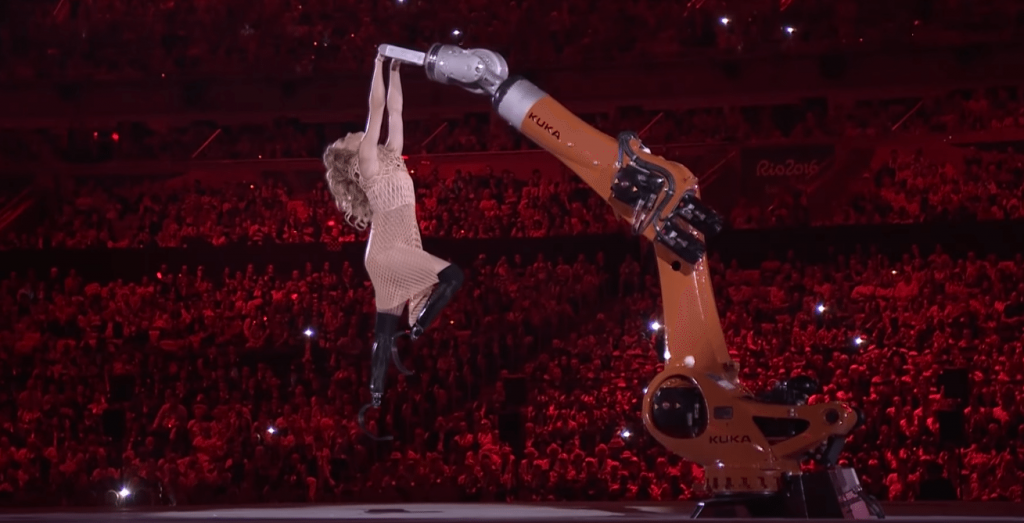

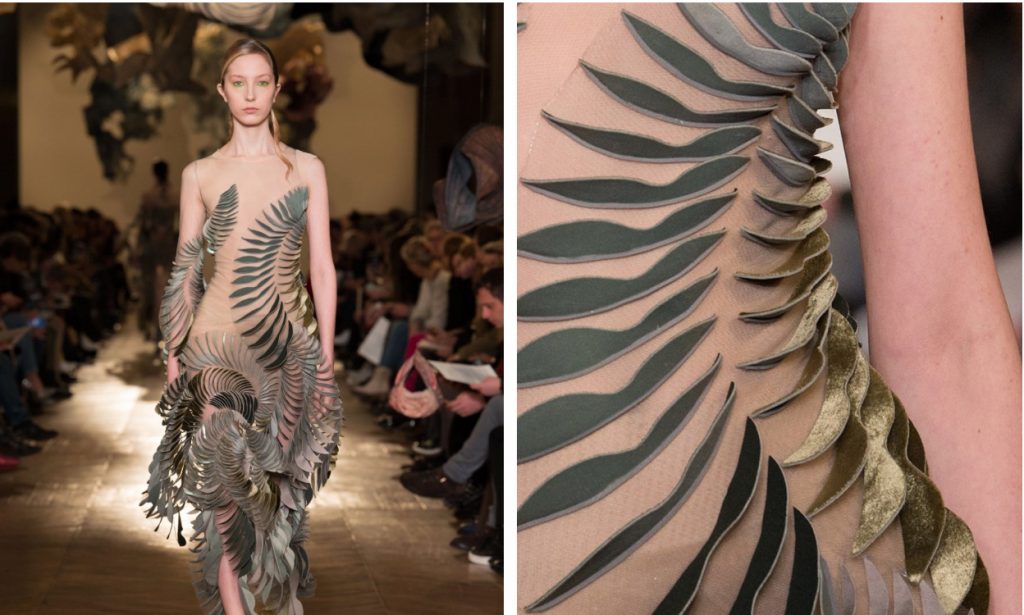
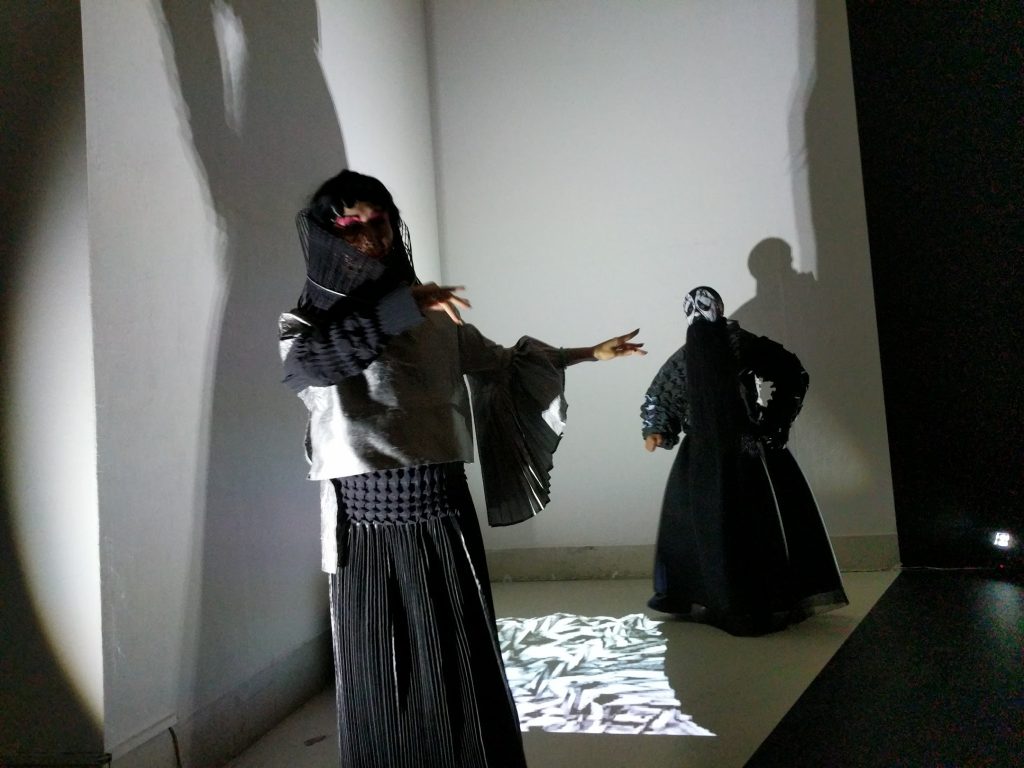
https://3dprintingindustry.com/news/3d-printing-fashion-desi…




https://3dprintingindustry.com/news/3d-printing-fashion-desi…
- BCN3D Technologies
Am 17.05.2018 veröffentlicht
ETSEIB Motorsport, one of the most experienced teams in the Formula Student competition, uses 3D printing to revolutionize their day-to-day operations. Thanks to the BCN3D Sigmax 3D printer, the team has been able to speed up the design phase and to fabricate end-use pieces that are directly mounted on the car itself. This has allowed them to greatly reduce the car costs and shrink the lead times. They are now capable to iterate faster and get refined designs in a very straightforward workflow.
Read the full story: https://www.bcn3dtechnologies.com/3d-... -
https://3dprintingindustry.com/news/3d-printing-increases-ef…
Liquid 3D Printed Pneumatics, for self-assembling car interiors


, the first 3D printed inflatables that can, to quote the demo video “expand and morph into nearly any shape or function”

- Dezeen
Am 25.05.2018 veröffentlicht
Car interiors could morph into different configurations at the flick of a switch, using 3D-printed inflatable structures developed by researchers at the MIT.
The Self-Assembly Lab at Massachusetts Institute of Technology (MIT) worked with BMW on the project, called Liquid Printed Pneumatics.
The German auto brand wanted to see how the lab's experimental engineering techniques could help it realise some of the shapeshifting features imagined in its futuristic concept cars.
The result is a stretchy, inflatable silicone prototype that can take on a number of different shapes depending on the level of air pressure inside.
Self-Assembly Lab Team: Bjorn Sparrman, Shokofeh Darbari, Rami Rustom, Maggie Hughes, Schendy Kernizan, Jared Laucks, Skylar Tibbits
BMW Team: Sophie Richter, Akos Stegmar
Commissioned by the Victoria & Albert Museum, London
Music by Lullatone
Read more on Dezeen: https://www.dezeen.com/?p=1215609-
https://3dprintingindustry.com/news/bmw-mit-3d-printing-self…
https://3dprintingindustry.com/news/bmw-mit-3d-printing-self…
https://selfassemblylab.mit.edu/liquid-printed-pneumatics/
http://www.bmw.com/en/index.html
http://www.vam.ac.uk/



, the first 3D printed inflatables that can, to quote the demo video “expand and morph into nearly any shape or function”


- Dezeen
Am 25.05.2018 veröffentlicht
Car interiors could morph into different configurations at the flick of a switch, using 3D-printed inflatable structures developed by researchers at the MIT.
The Self-Assembly Lab at Massachusetts Institute of Technology (MIT) worked with BMW on the project, called Liquid Printed Pneumatics.
The German auto brand wanted to see how the lab's experimental engineering techniques could help it realise some of the shapeshifting features imagined in its futuristic concept cars.
The result is a stretchy, inflatable silicone prototype that can take on a number of different shapes depending on the level of air pressure inside.
Self-Assembly Lab Team: Bjorn Sparrman, Shokofeh Darbari, Rami Rustom, Maggie Hughes, Schendy Kernizan, Jared Laucks, Skylar Tibbits
BMW Team: Sophie Richter, Akos Stegmar
Commissioned by the Victoria & Albert Museum, London
Music by Lullatone
Read more on Dezeen: https://www.dezeen.com/?p=1215609-
https://3dprintingindustry.com/news/bmw-mit-3d-printing-self…
https://3dprintingindustry.com/news/bmw-mit-3d-printing-self…
https://selfassemblylab.mit.edu/liquid-printed-pneumatics/
http://www.bmw.com/en/index.html
http://www.vam.ac.uk/
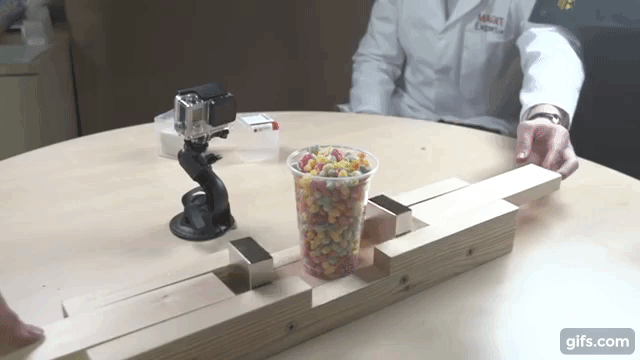
https://3dprintingindustry.com/news/u-s-doe-applies-lens-add…
https://cmi.ameslab.gov/
https://3dprintingindustry.com/news/optomec-3d-printing-smar…
http://www.ameslab.gov/
http://www.nrc-cnrc.gc.ca/eng/index.html
https://3dprintingindustry.com/news/oak-ridges-3d-printed-ma…
https://link.springer.com/article/10.1007%2Fs11837-018-2862-…
REVOLUTIONIZING 3D printing, in mining
https://3dprintingindustry.com/news/australian-alliance-revo…
http://www.mineralstech.com/
http://www.downergroup.com/
http://www.uts.edu.au/
http://imcrc.org/
http://www.swinburne.edu.au/
https://rapido.uts.edu.au/
"Mineral Technologies (NYSE:MTX), the New York headquartered mining subsidiary of Australian integrated services company Downer Group, has entered a 3D printing R&D collaboration with the University of Technology Sydney (UTS) and Innovative Manufacturing CRC (IMCRC).
Gravity spirals, used to separate valuable minerals from mined material, will be the focus of the research, and together the teams hope to enhance the equipment with composite materials and IoT ready smart sensors.
“This project will define an accelerated deposition and curing technique for AM which will hasten the way in which composite polymers are deposited to manufacture our mineral separation equipment,” explains Alex de Andrade, Mineral Technologies Global Manager – Sales and UTS associate professor.
“We expect to see positive environmental impacts, such as decreasing the need for chemicals and reducing air contamination, which will significantly improve the operational environment for our manufacturing workforce.”
Revolutionizing mining equipment
Gravity spirals are typically several meters tall, and used across mining, farming and recycling operations to obtain valuable products. In relation to this project, David Chuter, IMCRC CEO and Managing Director explains, “Mineral separation equipment is often operated in a remote and hostile environment,”
“Deploying gravity spirals fitted with IoT sensors will offer Mineral Technologies a clear picture of the product performance.”
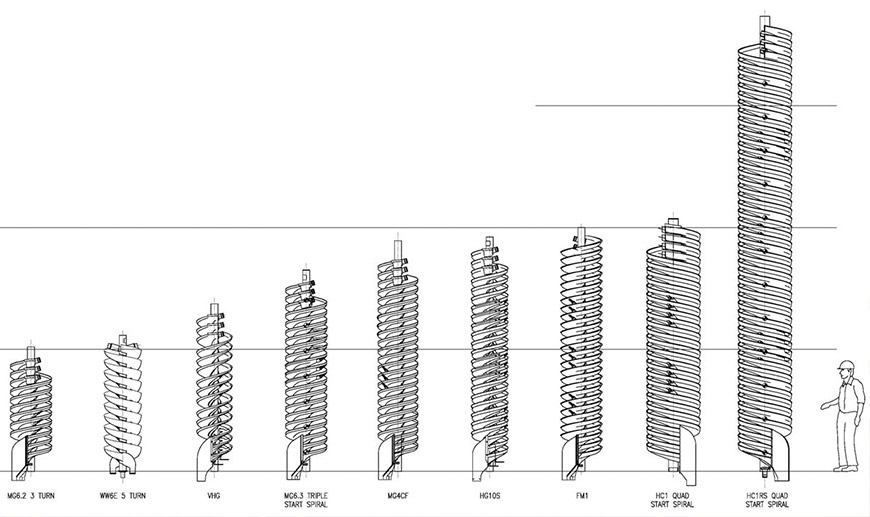
Gravity spirals, the subject of Mineral Technologies’ additive R&D. Image via Mineral Technologies
Recently, the IMCRC also invested $994 thousand USD in the development of an automated 3D printed car repair service at Swinburne University of Technology.
Bespoke technology development
Mineral Technologies’ R&D project work will be conducted at UTS in the Rapido rapid prototyping unit. Established in 2016, UTS Rapido gives industry, government and community partners the opportunity to turn their ideas into viable products and solutions.
The facility is complete with a range of 3D printers, from desktop to industrial machines including, as of May 2018, a LightSPEE3D cold spray metal 3D printer from fellow Australians at SPEE3D.
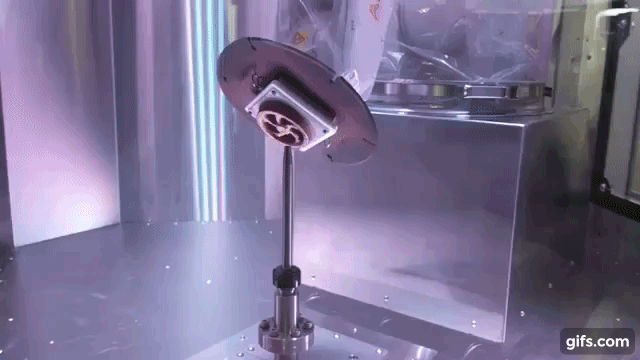
The SPEE3D metal cold spray additive process. Clip via Michael Petch
Herve Harvard, Director of UTS Rapido, stresses the importance of such partnerships in engaging students and staff.
“Partnering with Rapido harnesses a unique capability in terms of the breadth and depth of expertise, and advanced facilities we have at UTS.”
In particular, “This project demonstrates how UTS is becoming a leading university in additive manufacturing and, in this particular context, leading in the capability to develop bespoke 3D printing technologies suitable for manufacturing functional parts.”
The project is scheduled for completion in 2021.
For future updates and more current AM news subscribe to the free 3D Printing Industry newsletter, follow us on Twitter, and like us on Facebook.
Featured image shows UTS Building 11, exterior by night from Central Park. Photo by Andrew Worssam"
https://3dprintingindustry.com/news/australian-alliance-revo…
http://www.mineralstech.com/
http://www.downergroup.com/
http://www.uts.edu.au/
http://imcrc.org/
http://www.swinburne.edu.au/
https://rapido.uts.edu.au/
"Mineral Technologies (NYSE:MTX), the New York headquartered mining subsidiary of Australian integrated services company Downer Group, has entered a 3D printing R&D collaboration with the University of Technology Sydney (UTS) and Innovative Manufacturing CRC (IMCRC).
Gravity spirals, used to separate valuable minerals from mined material, will be the focus of the research, and together the teams hope to enhance the equipment with composite materials and IoT ready smart sensors.
“This project will define an accelerated deposition and curing technique for AM which will hasten the way in which composite polymers are deposited to manufacture our mineral separation equipment,” explains Alex de Andrade, Mineral Technologies Global Manager – Sales and UTS associate professor.
“We expect to see positive environmental impacts, such as decreasing the need for chemicals and reducing air contamination, which will significantly improve the operational environment for our manufacturing workforce.”
Revolutionizing mining equipment
Gravity spirals are typically several meters tall, and used across mining, farming and recycling operations to obtain valuable products. In relation to this project, David Chuter, IMCRC CEO and Managing Director explains, “Mineral separation equipment is often operated in a remote and hostile environment,”
“Deploying gravity spirals fitted with IoT sensors will offer Mineral Technologies a clear picture of the product performance.”

Gravity spirals, the subject of Mineral Technologies’ additive R&D. Image via Mineral Technologies
Recently, the IMCRC also invested $994 thousand USD in the development of an automated 3D printed car repair service at Swinburne University of Technology.
Bespoke technology development
Mineral Technologies’ R&D project work will be conducted at UTS in the Rapido rapid prototyping unit. Established in 2016, UTS Rapido gives industry, government and community partners the opportunity to turn their ideas into viable products and solutions.
The facility is complete with a range of 3D printers, from desktop to industrial machines including, as of May 2018, a LightSPEE3D cold spray metal 3D printer from fellow Australians at SPEE3D.

The SPEE3D metal cold spray additive process. Clip via Michael Petch
Herve Harvard, Director of UTS Rapido, stresses the importance of such partnerships in engaging students and staff.
“Partnering with Rapido harnesses a unique capability in terms of the breadth and depth of expertise, and advanced facilities we have at UTS.”
In particular, “This project demonstrates how UTS is becoming a leading university in additive manufacturing and, in this particular context, leading in the capability to develop bespoke 3D printing technologies suitable for manufacturing functional parts.”
The project is scheduled for completion in 2021.
For future updates and more current AM news subscribe to the free 3D Printing Industry newsletter, follow us on Twitter, and like us on Facebook.
Featured image shows UTS Building 11, exterior by night from Central Park. Photo by Andrew Worssam"
https://3dprintingindustry.com/news/streamlining-aerospace-i…
http://www.ati.org.uk/
http://www.the-mtc.org/
http://ncam.the-mtc.org/drama/overview
http://www.birmingham.ac.uk/
http://www.lboro.ac.uk/
http://www.nottingham.ac.uk/
http://www.twi-global.com/
http://www.esa.int/ESA
https://3dprintingindustry.com/news/uks-mtc-provide-additive…
reducing the costs of manufacturing, houses, by up to  (in addition to time and labor costs(Additionally, Ramírez believes production time could now be accelerated to produce a bungalow in just 8 hours))
(in addition to time and labor costs(Additionally, Ramírez believes production time could now be accelerated to produce a bungalow in just 8 hours))
https://3dprintingindustry.com/news/3d-cemex-3d-print-bungal…
https://3dprintingindustry.com/news/behind-3d-printed-bridge…
http://www.acciona.com/
http://www.cemex.com/
http://www.upv.es/index-en.html
http://bemore3d.com/
https://3dprintingindustry.com/news/3d-cemex-3d-print-bungal…
https://3dprintingindustry.com/news/behind-3d-printed-bridge…
http://www.acciona.com/
http://www.cemex.com/
http://www.upv.es/index-en.html
http://bemore3d.com/
Antwort auf Beitrag Nr.: 57.962.778 von Popeye82 am 12.06.18 03:37:44
http://www.golem.de/news/project-milestone-eindhoven-laesst-…

http://www.golem.de/news/project-milestone-eindhoven-laesst-…
3D printed water sensor system streamlines fish-farming in Singapore; with the adoption of additive manufacturing technologies, Sensocore was able to achieve time and cost savings of an estimated 86% for its improved Aquafarm Water Sensor System

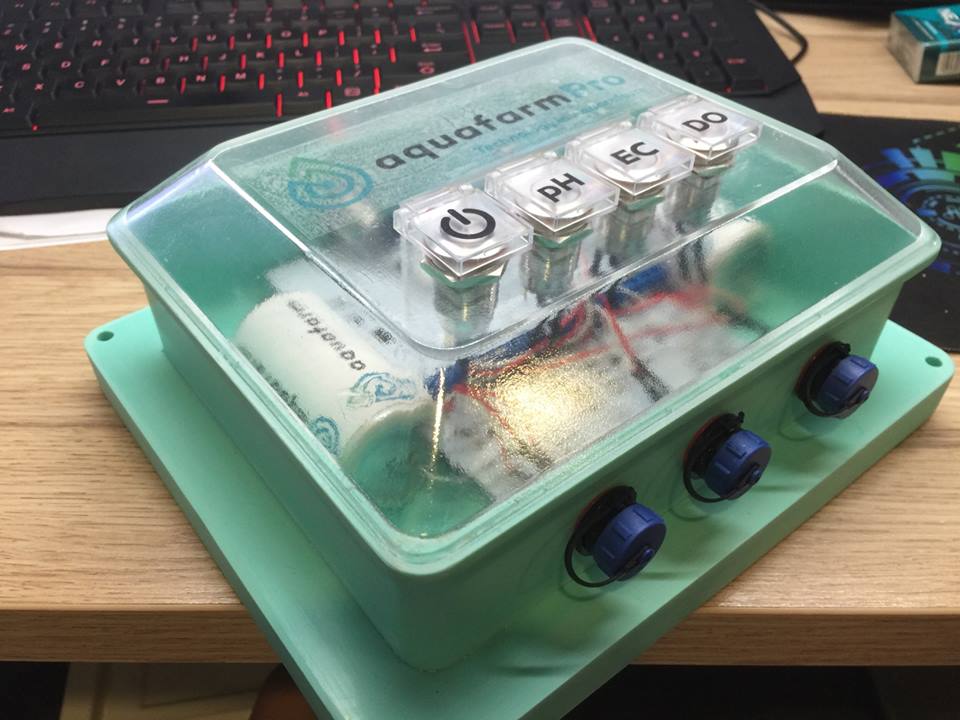
https://3dprintingindustry.com/news/3d-printed-water-sensor-…
https://3dprintingindustry.com/news/ubc-researchers-3d-print…
https://3dprintingindustry.com/news/research-proposes-3d-pri…
http://www.aquafarm.sg/
https://camtechdiagnostics.com/
https://creatz3d.com.sg/
http://www.kaust.edu.sa/en
https://sensocore.tech/


https://3dprintingindustry.com/news/3d-printed-water-sensor-…
https://3dprintingindustry.com/news/ubc-researchers-3d-print…
https://3dprintingindustry.com/news/research-proposes-3d-pri…
http://www.aquafarm.sg/
https://camtechdiagnostics.com/
https://creatz3d.com.sg/
http://www.kaust.edu.sa/en
https://sensocore.tech/
Antwort auf Beitrag Nr.: 57.954.519 von Popeye82 am 11.06.18 02:08:00General Motors saves $300,000, by switching to 3D printed tooling; with 3D printing, tooling, jigs +fixtures can be produced for a fraction of the cost. An example tool, used to align engine+transmission vehicle identification numbers, 3D printed @General Motors cost <$3 to make using 3D printing. If outsourced, the part would have cost the plant $3,000





https://3dprintingindustry.com/news/general-motors-saves-300…
http://www.autodesk.co.uk/
http://www.gm.com/





https://3dprintingindustry.com/news/general-motors-saves-300…
http://www.autodesk.co.uk/
http://www.gm.com/
Antwort auf Beitrag Nr.: 58.047.721 von Popeye82 am 22.06.18 20:17:17RECORD speed


https://3dprintingindustry.com/news/prellis-biologics-aims-t…
https://3dprintingindustry.com/news/small-steps-big-impact-3…
https://3dprintingindustry.com/news/interview-inside-uclas-f…
http://www.prellisbiologics.co/prellis-literature
http://www.prellisbiologics.co/

https://3dprintingindustry.com/news/prellis-biologics-aims-t…
https://3dprintingindustry.com/news/small-steps-big-impact-3…
https://3dprintingindustry.com/news/interview-inside-uclas-f…
http://www.prellisbiologics.co/prellis-literature
http://www.prellisbiologics.co/
Antwort auf Beitrag Nr.: 55.349.861 von H2OAllergiker am 18.07.17 20:15:22
"production system"
soll nächstes Jahr kommen: https://www.desktopmetal.com/products/production/
printing lungs; One entrepreneur aims to end transplant shortages, by printing lungs

United Therapeutics, a company that sells drugs to treat lung ailments, plans to use a 3-D printer to manufacture human lungs in “unlimited quantities.”
Some background: Bioprinting isn’t a new idea: 3-D printers can make human skin, even retinas. Yet the method has been limited to tissues that are very small or very thin and lack blood vessels.
What’s different this time? United is developing a printer that it believes, within a few years, will be able to manufacture a detailed outline of a lung made of collagen. But that’s a long way from a working organ, so United also is developing ways to impregnate the matrix with human cells so they’ll attach and bring it to life.
The timeline: As our own Antonio Regalado writes, don’t expect fully manufactured lungs soon—United predicts it won’t happen for another 12 years. But the company’s effort, which may be industry’s largest, has the potential to save lives if successful.
http://www.technologyreview.com/s/611236/inside-the-effort-t…
http://www.technologyreview.com/s/603511/3-d-printed-skin-le…
http://www.technologyreview.com/s/523301/printed-eye-cells-c…
https://www.technologyreview.com/s/611236/inside-the-effort-…

United Therapeutics, a company that sells drugs to treat lung ailments, plans to use a 3-D printer to manufacture human lungs in “unlimited quantities.”
Some background: Bioprinting isn’t a new idea: 3-D printers can make human skin, even retinas. Yet the method has been limited to tissues that are very small or very thin and lack blood vessels.
What’s different this time? United is developing a printer that it believes, within a few years, will be able to manufacture a detailed outline of a lung made of collagen. But that’s a long way from a working organ, so United also is developing ways to impregnate the matrix with human cells so they’ll attach and bring it to life.
The timeline: As our own Antonio Regalado writes, don’t expect fully manufactured lungs soon—United predicts it won’t happen for another 12 years. But the company’s effort, which may be industry’s largest, has the potential to save lives if successful.
http://www.technologyreview.com/s/611236/inside-the-effort-t…
http://www.technologyreview.com/s/603511/3-d-printed-skin-le…
http://www.technologyreview.com/s/523301/printed-eye-cells-c…
https://www.technologyreview.com/s/611236/inside-the-effort-…

https://3dprintingindustry.com/news/british-heart-foundation…
http://www.bhf.org.uk/
http://www.gosh.nhs.uk/
https://3dprintingindustry.com/news/3d-printing-helps-queen-…
https://3dprintingindustry.com/news/georgia-research-lab-pat…
http://www.uhb.nhs.uk/merger
http://www.pedsresearch.org/research/centers/hero/overview/
Antwort auf Beitrag Nr.: 58.093.756 von Popeye82 am 29.06.18 02:46:42
- British Heart Foundation
Am 26.06.2018 veröffentlicht
Discover how 3D printed hearts are improving surgeries and helping families with heart problems. Find out more about the new technology we’re funding at https://www.bhf.org.uk/newtools -
- British Heart Foundation
Am 26.06.2018 veröffentlicht
Discover how 3D printed hearts are improving surgeries and helping families with heart problems. Find out more about the new technology we’re funding at https://www.bhf.org.uk/newtools -
Antwort auf Beitrag Nr.: 58.047.874 von Popeye82 am 22.06.18 20:29:32“With 3D printing and agile project management, we’re in a position to overcome the traditional obstacles of long-established processes, +market an innovative product  faster”
faster”
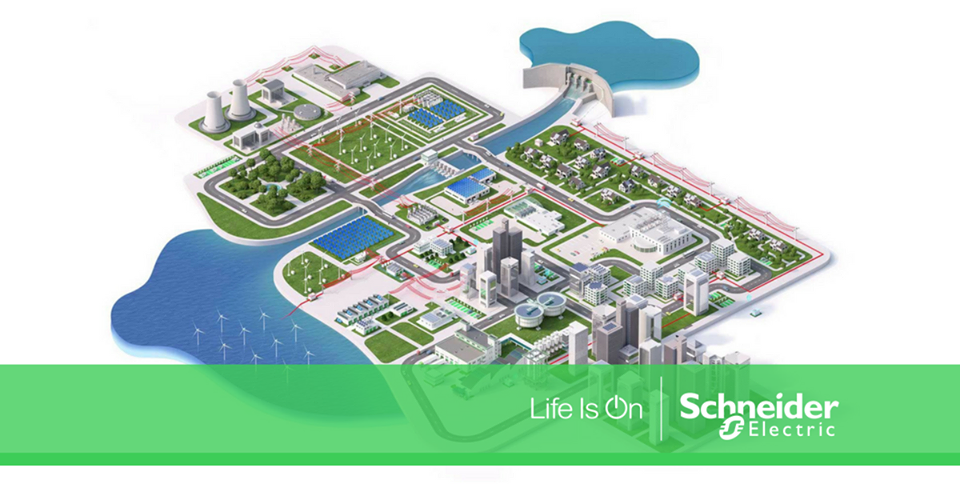
https://3dprintingindustry.com/news/prodways-3d-printing-sel…

https://3dprintingindustry.com/news/prodways-3d-printing-sel…

https://newatlas.com/3d-printing-live-bacteria-cells-wearabl…
https://onlinelibrary.wiley.com/doi/abs/10.1002/adma.2017048…
- Advanced Science News
Am 05.12.2017 veröffentlicht
A new paradigm in 3D printing is reported by using genetically programed cells as active components to print living materials and devices. The design principle and general method are provided to fabricate large-scale, high-resolution living materials, which are capable of integrating engineered cells into hydrogel constructs that maintain high viability of cells and respond to signaling chemicals in programed manners. This is reported by Xuanhe Zhao and co-workers in the article https://doi.org/10.1002/adma.201704821. To know more, please go to the Advanced Materials homepage. -
Antwort auf Beitrag Nr.: 58.106.272 von Popeye82 am 30.06.18 16:40:41Normally, a rocket engine takes over a year to produce, one, +we’re actually developing technology to bring that time down to manufacture to WEEKS, if not DAYS
http://www.scienceupdate.com/2017/11/rocket/
http://www.independent.co.uk/news/science/a-3d-printed-rocke…
http://spaceref.com/nasa-hack-space/advances-3-d-printed-roc…
http://www.popularmechanics.com/space/rockets/a20638292/nasa…
http://www.triddynamics.com/
http://www.scienceupdate.com/2017/11/rocket/
http://www.independent.co.uk/news/science/a-3d-printed-rocke…
http://spaceref.com/nasa-hack-space/advances-3-d-printed-roc…
http://www.popularmechanics.com/space/rockets/a20638292/nasa…
http://www.triddynamics.com/
Antwort auf Beitrag Nr.: 58.121.228 von Popeye82 am 03.07.18 04:49:56 improvement
improvement
- Oak Ridge National Laboratory
Am 28.06.2018 veröffentlicht
A scalable processing technique developed by Oak Ridge National Laboratory uses plant-based materials for 3D printing and offers a promising additional revenue stream for biorefineries. Scientists created a new material with excellent printability and performance by tapping into lignin—a key component of plant cell walls that provides sturdiness. Lignin is a current byproduct of the biofuels process that could become a valuable coproduct with this new use. The method combines lignin, rubber, carbon fiber and acrylonitrile butadiene styrene, or ABS—commonly used in plastic toys—to 3D print structures with 100 percent improved weld strength between the layers over ABS alone. “To achieve this, we are building on our experience with lignin during the last five years,” said ORNL’s Amit Naskar. “We will continue fine tuning the material’s composition to make it even stronger.” The research team published details about the patent-pending process in Applied Materials Today.
Video courtesy of Ngoc Nguyen, Oak Ridge National Laboratory. -
https://3dprintingindustry.com/news/oak-ridge-scientists-dev…
http://www.ornl.gov/
- Oak Ridge National Laboratory
Am 28.06.2018 veröffentlicht
A scalable processing technique developed by Oak Ridge National Laboratory uses plant-based materials for 3D printing and offers a promising additional revenue stream for biorefineries. Scientists created a new material with excellent printability and performance by tapping into lignin—a key component of plant cell walls that provides sturdiness. Lignin is a current byproduct of the biofuels process that could become a valuable coproduct with this new use. The method combines lignin, rubber, carbon fiber and acrylonitrile butadiene styrene, or ABS—commonly used in plastic toys—to 3D print structures with 100 percent improved weld strength between the layers over ABS alone. “To achieve this, we are building on our experience with lignin during the last five years,” said ORNL’s Amit Naskar. “We will continue fine tuning the material’s composition to make it even stronger.” The research team published details about the patent-pending process in Applied Materials Today.
Video courtesy of Ngoc Nguyen, Oak Ridge National Laboratory. -
https://3dprintingindustry.com/news/oak-ridge-scientists-dev…
http://www.ornl.gov/
Antwort auf Beitrag Nr.: 58.125.251 von Popeye82 am 03.07.18 13:32:52
https://3dprintingindustry.com/news/u-s-air-force-base-could…
http://www.travis.af.mil/
https://3dprintingindustry.com/news/u-s-air-force-base-could…
http://www.travis.af.mil/
Admedus just put a 3D heart valve device into a live sheep, for the first time

https://stockhead.com.au/health/admedus-has-installed-a-3d-h…
http://www.admedus.com/wp-content/uploads/2018/01/Well-Posit…
http://www.admedus.com/

https://stockhead.com.au/health/admedus-has-installed-a-3d-h…
http://www.admedus.com/wp-content/uploads/2018/01/Well-Posit…
http://www.admedus.com/
Antwort auf Beitrag Nr.: 58.164.929 von Popeye82 am 08.07.18 20:40:22world's FIRST family

 , to live in a 3D-printed home
, to live in a 3D-printed home

- French 'builderbot' 3D printed a family home for five in just 54 hours
- A team of experts in France constructed the first 3D printed house to serve as a residence for a family of five
- They built the 1,022-square-foot house using a novel BatiPrint 3D printing process which can construct walls
- In all, it only took two days and six hours to build the home, but they believe it can be done in just 33 hours
- The process is environmentally friendly and at $207,000 (£176,000), costs 20% less than traditional methods

- Scientists built the house using a novel BatiPrint 3D printing process, in which a robot constructs the house's elaborate, curved walls. The robot is first programmed with designs -
http://www.dailymail.co.uk/sciencetech/article-5940169/3D-pr…
http://www.bbc.com/news/technology-44709534
http://batiprint3d.fr/en/


 , to live in a 3D-printed home
, to live in a 3D-printed home- French 'builderbot' 3D printed a family home for five in just 54 hours
- A team of experts in France constructed the first 3D printed house to serve as a residence for a family of five
- They built the 1,022-square-foot house using a novel BatiPrint 3D printing process which can construct walls
- In all, it only took two days and six hours to build the home, but they believe it can be done in just 33 hours
- The process is environmentally friendly and at $207,000 (£176,000), costs 20% less than traditional methods

- Scientists built the house using a novel BatiPrint 3D printing process, in which a robot constructs the house's elaborate, curved walls. The robot is first programmed with designs -
http://www.dailymail.co.uk/sciencetech/article-5940169/3D-pr…
http://www.bbc.com/news/technology-44709534
http://batiprint3d.fr/en/
Antwort auf Beitrag Nr.: 58.202.489 von Popeye82 am 13.07.18 02:14:53
- For the fourth Nantes Digital Week, Nantes Métropole welcomes the CityLabs of France, who will have the opportunity to witness the construction of a 95m2 house in a matter of days. This event is a world first.
> Innovation for the benefit of social housing
> An advanced technology
> A testing ground for the city of the future
> Full-scale trialling
For more information : Download the press kit -
http://batiprint3d.fr/wp-content/uploads/2017/10/NM_YHNOVA_D…
- For the fourth Nantes Digital Week, Nantes Métropole welcomes the CityLabs of France, who will have the opportunity to witness the construction of a 95m2 house in a matter of days. This event is a world first.
> Innovation for the benefit of social housing
> An advanced technology
> A testing ground for the city of the future
> Full-scale trialling
For more information : Download the press kit -
http://batiprint3d.fr/wp-content/uploads/2017/10/NM_YHNOVA_D…
AREVO präsentiert weltweit ERSTES Kohlefaser-eBike, aus dem 3D-Drucker

https://www.wallstreet-online.de/nachricht/10719854-arevo-pr…
http://www.arevoinc.com/
https://www.wallstreet-online.de/nachricht/10719854-arevo-pr…
http://www.arevoinc.com/
Antwort auf Beitrag Nr.: 58.202.489 von Popeye82 am 13.07.18 02:14:53
https://3dprintingindustry.com/news/10000-air-force-toilet-s…
https://3dprintingindustry.com/news/10000-air-force-toilet-s…
fast-charging battery with '3D' internal structure COULD revolutionise electronics
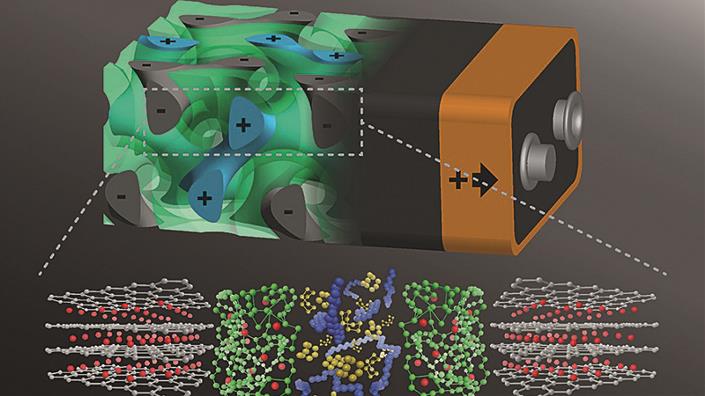
http://www.imeche.org/news/news-article/fast-charging-batter…

http://www.imeche.org/news/news-article/fast-charging-batter…
Printing, future, electronic components, like newspapers



http://www.innovationtoronto.com/2018/07/printing-future-ele…
http://www.purdue.edu/newsroom/releases/2018/Q3/future-elect…
https://www.purdue.edu/




http://www.innovationtoronto.com/2018/07/printing-future-ele…
http://www.purdue.edu/newsroom/releases/2018/Q3/future-elect…
https://www.purdue.edu/
ONE of the lightest Satellites, in the World
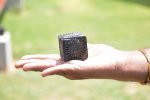
https://3dprintingindustry.com/news/student-3d-printed-satel…
www.hindustanuniv.ac.in

https://3dprintingindustry.com/news/student-3d-printed-satel…
www.hindustanuniv.ac.in

https://techxplore.com/news/2018-07-d-batteries.html
"3-D printing the next generation of batteries
Additive manufacturing, otherwise known as 3-D printing, can be used to manufacture porous electrodes for lithium-ion batteries—but because of the nature of the manufacturing process, the design of these 3-D printed electrodes is limited to just a few possible architectures. Until now, the internal geometry that produced the best porous electrodes through additive manufacturing was what's known as an interdigitated geometry—metal prongs interlocked like the fingers of two clasped hands, with the lithium shuttling between the two sides.
Lithium-ion battery capacity can be vastly improved if, on the microscale, their electrodes have pores and channels. An interdigitated geometry, though it does allow lithium to transport through the battery efficiently during charging and discharging, is not optimal.
Rahul Panat, an associate professor of mechanical engineering at Carnegie Mellon University, and a team of researchers from Carnegie Mellon in collaboration with Missouri University of Science and Technology have developed a revolutionary new method of 3-D printing battery electrodes that creates a 3-D microlattice structure with controlled porosity. 3-D printing this microlattice structure, the researchers show in a paper published in the journal Additive Manufacturing, vastly improves the capacity and charge-discharge rates for lithium-ion batteries.
"In the case of lithium-ion batteries, the electrodes with porous architectures can lead to higher charge capacities," says Panat. "This is because such architectures allow the lithium to penetrate through the electrode volume leading to very high electrode utilization, and thereby higher energy storage capacity. In normal batteries, 30-50% of the total electrode volume is unutilized. Our method overcomes this issue by using 3-D printing where we create a microlattice electrode architecture that allows the efficient transport of lithium through the entire electrode, which also increases the battery charging rates."

Microlattice. Credit: Rahul Panat, Carnegie Mellon University College of Engineering
The additive manufacturing method presented in Panat's paper represents a major advance in printing complex geometries for 3-D battery architectures, as well as an important step toward geometrically optimizing 3-D configurations for electrochemical energy storage. The researchers estimate that this technology will be ready to translate to industrial applications in about 2-3 years.
The microlattice structure (Ag) used as lithium-ion batteries' electrodes was shown to improve battery performance in several ways such as a fourfold increase in specific capacity and a twofold increase in areal capacity when compared to a solid block (Ag) electrode. Furthermore, the electrodes retained their complex 3-D lattice structures after forty electrochemical cycles demonstrating their mechanical robustness. The batteries can thus have high capacity for the same weight or alternately, for the same capacity, a vastly reduced weight—which is an important attribute for transportation applications.
The Carnegie Mellon researchers developed their own 3-D printing method to create the porous microlattice architectures while leveraging the existing capabilities of an Aerosol Jet 3-D printing system. The Aerosol Jet system also allows the researchers to print planar sensors and other electronics on a micro-scale, which was deployed at Carnegie Mellon University's College of Engineering earlier this year.

SEM images of 3D printed electrodes for Li-ion batteries used for electrochemical cycling in the researchers’ study. Image taken from top of microlattice electrodes with height of about 250mm. Credit: Rahul Panat and Mohammad Sadeq Saleh
Until now, 3-D printed battery efforts were limited to extrusion-based printing, where a wire of material is extruded from a nozzle, creating continuous structures. Interdigitated structures were possible using this method. With the method developed in Panat's lab, the researchers are able to 3-D print the battery electrodes by rapidly assembling individual droplets one-by-one into three-dimensional structures. The resulting structures have complex geometries impossible to fabricate using typical extrusion methods.
"Because these droplets are separated from each other, we can create these new complex geometries," says Panat. "If this was a single stream of material, as is in the case of extrusion printing, we wouldn't be able to make them. This is a new thing. I don't believe anybody until now has used 3-D printing to create these kinds of complex structures."
This revolutionary method will be very important for consumer electronics, medical devices industry, as well as aerospace applications. This research will integrate well with the biomedical electronic devices, where miniaturized batteries are required. Non-biological electronic micro-devices will also benefit from this work. And on a bigger scale, electronic devices, small drones, and aerospace applications themselves can use this technology as well, due to the low weight and high capacity of the batteries printed using this method.
The team, which also includes mechanical engineering Ph.D. student Mohammad Sadeq Saleh and postdoctoral researcher Jie Li (Missouri University of Science and Technology), is also working on creating more complex three-dimensional structures, which can simultaneously be used as structural materials and as functional materials. For example, a part of a drone can act as a wing, a structural material, while simultaneously acting as a functional material such as a battery.
Explore further: New maturation process for lithium-ion batteries increases performance 10-fold
More information: Mohammad Sadeq Saleh et al, 3D printed hierarchically-porous microlattice electrode materials for exceptionally high specific capacity and areal capacity lithium ion batteries, Additive Manufacturing (2018). DOI: 10.1016/j.addma.2018.07.006
Provided by Carnegie Mellon University"
Antwort auf Beitrag Nr.: 57.961.746 von H2OAllergiker am 11.06.18 21:57:05NICHT sicher ob man NOCH erleben WILL
H2O
Lesen Sie mal.
Hatten Wir Hier mal("atomar/nanoscale") thematisiert(Re: "REPLIkatoren"
 ).
).
REVOLUTION in 3D printing





https://3dprintingindustry.com/news/mits-direct-write-colloi…
https://web.mit.edu/
"MIT’s direct-write colloid 3D printing unlocks new possibilities, in electronics and energy
Beau Jackson August 30th 2018 - 4:37pm 15 0
15Shares
0
0
0
0
25shares
25
0
0
Working on the nanoscale, MIT researchers have 3D printed centimeter-long structures that could change the face of electronics and optical sensors. The method relies on the self-assembly principles of colloids – particles between 1 nm and 1 μm wide.
In the method, billions of polystyrene colloids fuse together to build structures programmed by the research team. Alvin Tan, a graduate student in MIT’s Department of Materials Science and Engineering, explains how using different particles such as metal alloys, and quantum dots could unlock a range of possibilities for the method. He says,
“Combining [colloids] into different crystal structures and forming them into different geometries for novel device architectures, I think that would be very effective in fields including sensing, energy storage, and photonics.”
A revolution for 3D printing
Colloids are typically found suspended in a liquid or gas. Milk is one common example of a colloid, as it is made of microscopic butterfat globules suspended in a water-based solution.
Colloidal self-assembly is the process that happens when particles in this liquid or gas come into contact with on another, and fuse together to form a new, larger solid.
“If you blew up each particle to the size of a soccer ball,” says Tan, a “it would be like stacking a whole lot of soccer balls to make something as tall as a skyscraper,”
“That’s what we’re doing at the NANOscale.”

Overall, the process presents scientists with the opportunity to PROGRAM A MATERIAL'S STRUCTURE FROM THE GROUND UP. This means that researchers could make ENTIRELY new materials with properties that aren’t possible with traditional chemistry.
Colloidal self assembly has been likened to 3D printing as, essentially, new solid structures are built by layering multiple colloids. In a previous study on the method conducted at New York University Stefano Saccana, assistant professor of chemistry, said, “Colloidal self-assembly has the potential to revolutionize 3D printing.”
3D printing crystals
At MIT, direct-write 3D printing is used to dictate the shape of colloids.
The team uses a custom-made apparatus for the process, arranging a needle above two aluminum plates which form the print bed.
In total, three different water-based colloid inks were tested in the study: one containing polystyrene particles, one with silica and one with gold. These inks were extruded through the needle on to the aluminum plates.
As the plates are heated, the water content of the ink dissipates, leaving only colloids that fuse together. To make a demonstrative helical structure from the ink, the build plate is moved underneath the needle.
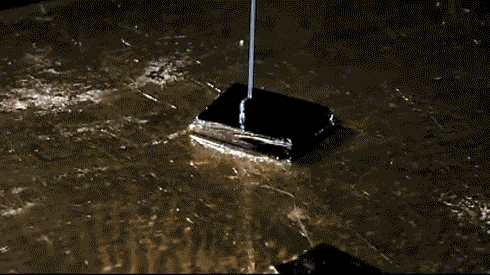
By changing the size of the particles, the team also succeeded in creating structures that reflect different colors. MIT graduate student Justin Beroz explians, “By changing the size of these particles, you drastically change the color of the structure. It’s due to the way the particles are assembled, in this periodic, ordered way, and the interference of light as it interacts with particles at this scale,”
“We’re essentially 3D-printing crystals.”
The results of the team’s most recent work, “Direct‐Write Freeform Colloidal Assembly” is published in Advanced Materials journal. It is co-authored by Alvin T. L. Tan, Justin Beroz, Mathias Kolle and A. John Hart.
___________________________________________________________________________
For more of the latest cutting edge research subscribe to the 3D Printing Industry newsletter, find us on Facebook and like us on Twitter. Looking for jobs in academia? Search open opportunities and apply with 3D Printing Jobs. You can also make a profile to advertise your latest vacancies.
Featured image shows crystals 3D printed from colloids at MIT. Photo by Felice Frankel/MIT."
H2O
Lesen Sie mal.
Hatten Wir Hier mal("atomar/nanoscale") thematisiert(Re: "REPLIkatoren"

 ).
).REVOLUTION in 3D printing
https://3dprintingindustry.com/news/mits-direct-write-colloi…
https://web.mit.edu/
"MIT’s direct-write colloid 3D printing unlocks new possibilities, in electronics and energy
Beau Jackson August 30th 2018 - 4:37pm 15 0
15Shares
0
0
0
0
25shares
25
0
0
Working on the nanoscale, MIT researchers have 3D printed centimeter-long structures that could change the face of electronics and optical sensors. The method relies on the self-assembly principles of colloids – particles between 1 nm and 1 μm wide.
In the method, billions of polystyrene colloids fuse together to build structures programmed by the research team. Alvin Tan, a graduate student in MIT’s Department of Materials Science and Engineering, explains how using different particles such as metal alloys, and quantum dots could unlock a range of possibilities for the method. He says,
“Combining [colloids] into different crystal structures and forming them into different geometries for novel device architectures, I think that would be very effective in fields including sensing, energy storage, and photonics.”
A revolution for 3D printing
Colloids are typically found suspended in a liquid or gas. Milk is one common example of a colloid, as it is made of microscopic butterfat globules suspended in a water-based solution.
Colloidal self-assembly is the process that happens when particles in this liquid or gas come into contact with on another, and fuse together to form a new, larger solid.
“If you blew up each particle to the size of a soccer ball,” says Tan, a “it would be like stacking a whole lot of soccer balls to make something as tall as a skyscraper,”
“That’s what we’re doing at the NANOscale.”

Overall, the process presents scientists with the opportunity to PROGRAM A MATERIAL'S STRUCTURE FROM THE GROUND UP. This means that researchers could make ENTIRELY new materials with properties that aren’t possible with traditional chemistry.
Colloidal self assembly has been likened to 3D printing as, essentially, new solid structures are built by layering multiple colloids. In a previous study on the method conducted at New York University Stefano Saccana, assistant professor of chemistry, said, “Colloidal self-assembly has the potential to revolutionize 3D printing.”
3D printing crystals
At MIT, direct-write 3D printing is used to dictate the shape of colloids.
The team uses a custom-made apparatus for the process, arranging a needle above two aluminum plates which form the print bed.
In total, three different water-based colloid inks were tested in the study: one containing polystyrene particles, one with silica and one with gold. These inks were extruded through the needle on to the aluminum plates.
As the plates are heated, the water content of the ink dissipates, leaving only colloids that fuse together. To make a demonstrative helical structure from the ink, the build plate is moved underneath the needle.

By changing the size of the particles, the team also succeeded in creating structures that reflect different colors. MIT graduate student Justin Beroz explians, “By changing the size of these particles, you drastically change the color of the structure. It’s due to the way the particles are assembled, in this periodic, ordered way, and the interference of light as it interacts with particles at this scale,”
“We’re essentially 3D-printing crystals.”
The results of the team’s most recent work, “Direct‐Write Freeform Colloidal Assembly” is published in Advanced Materials journal. It is co-authored by Alvin T. L. Tan, Justin Beroz, Mathias Kolle and A. John Hart.
___________________________________________________________________________
For more of the latest cutting edge research subscribe to the 3D Printing Industry newsletter, find us on Facebook and like us on Twitter. Looking for jobs in academia? Search open opportunities and apply with 3D Printing Jobs. You can also make a profile to advertise your latest vacancies.
Featured image shows crystals 3D printed from colloids at MIT. Photo by Felice Frankel/MIT."
PROGRAMMABLE plastics





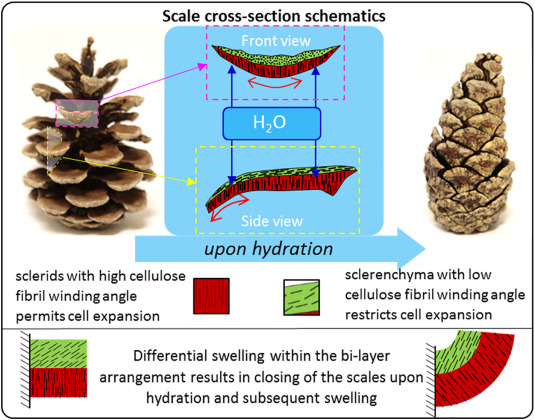

https://3dprintingindustry.com/news/uk-research-collaborativ…
https://3dprintingindustry.com/news/tu-delfts-self-folding-t…
https://3dprintingindustry.com/news/mcgill-university-scales…
www.sciencedirect.com/science/article/pii/S0264127518307032
http://www.bristol.ac.uk/
http://www.bath.ac.uk/






https://3dprintingindustry.com/news/uk-research-collaborativ…
https://3dprintingindustry.com/news/tu-delfts-self-folding-t…
https://3dprintingindustry.com/news/mcgill-university-scales…
www.sciencedirect.com/science/article/pii/S0264127518307032
http://www.bristol.ac.uk/
http://www.bath.ac.uk/
Antwort auf Beitrag Nr.: 58.692.873 von Popeye82 am 13.09.18 17:15:35Genau das kam mir gerade JETZT auch wieder in den Sinn, in der selben Minute. Danke für den telepathischen Kurzschluss.
Gibt es da inzwischen eine Möglichkeit zu investieren und ist das die gleiche Erfinder-Quelle, über die wir damals schon diskutierten??
Gibt es da inzwischen eine Möglichkeit zu investieren und ist das die gleiche Erfinder-Quelle, über die wir damals schon diskutierten??
Antwort auf Beitrag Nr.: 58.601.253 von chiesta am 03.09.18 13:34:42wieviel haben bis Jetzt gebucht?
Antwort auf Beitrag Nr.: 58.693.014 von H2OAllergiker am 13.09.18 17:35:01Gibt es da inzwischen eine Möglichkeit zu investieren und ist das die gleiche Erfinder-Quelle, über die wir damals schon diskutierten??
___________________________________________________________________________
Also "atomic/nano"scale ich kann nicht sagen.
Keine Ahnung.
Aber vermuuuuute mal:
Das dürfte wahrscheinlich(noch), Die paar Sachen Die es da vmtl. erst gibt, noch bei ein paar Hochspezialisierten Gruppen sein. Die; nehme ich ganz stark an; wohl (noch?) nicht Börsengelisted sein dürften.
Also Direkte Partizipationsmöglichkeiten schätze ich eher nicht, aber vielleiiiiicht hat Das Irgendeine Grossfirma im Programm? Wäre dann aber schääätze ich eher in Der Art wie ein "breit Aufgestellter Rohstoff Produzent, bei Dem dann (vielleicht) Zink nur X-10% ausmacht".
Oder Iiiiirgendwie in Dieser Art.
Ist nur Eine Vermutung, würde Mich aber wundern wenn Die unzutreffend ist.
Zu Diesem "atomic/nano"scale:
Halten Sie Mich für doof, aber ich würde sagen WENN Das (Iiiiirgendwann) mal (Grossmasstabtauglich) kommen sollte, ich würde Jetzt ganz rotzfrech mal behaupten Das dürfte Eine der Einschneidensten/FOLGENREICHSTEN technischen Entwicklungen sein, Die WIR, Die "Menschheit", BIS JETZT ERLEBT HABEN.
Um Das ganz klar zu machen. Kontext: human history.
Die Folgen, wenn ich Jetzt nicht total auf dem Falschen Boot bin, dürften m.E. GIGANTISCH sein.
Einspruch??
___________________________________________________________________________
Also "atomic/nano"scale ich kann nicht sagen.
Keine Ahnung.
Aber vermuuuuute mal:
Das dürfte wahrscheinlich(noch), Die paar Sachen Die es da vmtl. erst gibt, noch bei ein paar Hochspezialisierten Gruppen sein. Die; nehme ich ganz stark an; wohl (noch?) nicht Börsengelisted sein dürften.
Also Direkte Partizipationsmöglichkeiten schätze ich eher nicht, aber vielleiiiiicht hat Das Irgendeine Grossfirma im Programm? Wäre dann aber schääätze ich eher in Der Art wie ein "breit Aufgestellter Rohstoff Produzent, bei Dem dann (vielleicht) Zink nur X-10% ausmacht".
Oder Iiiiirgendwie in Dieser Art.
Ist nur Eine Vermutung, würde Mich aber wundern wenn Die unzutreffend ist.
Zu Diesem "atomic/nano"scale:
Halten Sie Mich für doof, aber ich würde sagen WENN Das (Iiiiirgendwann) mal (Grossmasstabtauglich) kommen sollte, ich würde Jetzt ganz rotzfrech mal behaupten Das dürfte Eine der Einschneidensten/FOLGENREICHSTEN technischen Entwicklungen sein, Die WIR, Die "Menschheit", BIS JETZT ERLEBT HABEN.
Um Das ganz klar zu machen. Kontext: human history.
Die Folgen, wenn ich Jetzt nicht total auf dem Falschen Boot bin, dürften m.E. GIGANTISCH sein.
Einspruch??
Ja gigantisch
KI gepaart mit nanoscale 3, 4, 5 D Druck beendet das homo sapiens Experiment.
Bin aber sicher, dass es dazu nicht kommen wird aus spiritueller Gläubigen Sicht.
KI gepaart mit nanoscale 3, 4, 5 D Druck beendet das homo sapiens Experiment.
Bin aber sicher, dass es dazu nicht kommen wird aus spiritueller Gläubigen Sicht.
Antwort auf Beitrag Nr.: 58.694.814 von H2OAllergiker am 13.09.18 20:47:29 KI gepaart mit nanoscale 3, 4, 5 D Druck beendet das homo sapiens Experiment.
_____________________________________________________________
Sie haben es Jetzt am romantischsten ausgedrückt.
Aber; mal unabhängig davon ob/wie theoretisch Wir jetzt reden, oder nicht; zeigt Mir erstmal dass Wir über die Gleiche BedeutungsDIMENSION sprechen.
Ich wollte die PAARUNG erstmal noch aussparen.
_____________________________________________________________
Sie haben es Jetzt am romantischsten ausgedrückt.
Aber; mal unabhängig davon ob/wie theoretisch Wir jetzt reden, oder nicht; zeigt Mir erstmal dass Wir über die Gleiche BedeutungsDIMENSION sprechen.
Ich wollte die PAARUNG erstmal noch aussparen.

p.S.
Sie werden Mir langsam immer mehr sympathischer.
Jetzt nicht nur wegen BUNTEN Theorien/Ansichten.
(Was nicht "schwer" ist)
Sondern weil m.E. da schon auch eine Steigende Ernsthaftigkeit drin ist.
Hatte überlegt Das zu machen, oder nicht.
Aber deswegen werde ich Ihnen wahrscheinlich zu Ihren Kraig Biocraft Schreiben noch Was schreiben.
Sie werden Mir langsam immer mehr sympathischer.
Jetzt nicht nur wegen BUNTEN Theorien/Ansichten.
(Was nicht "schwer" ist)
Sondern weil m.E. da schon auch eine Steigende Ernsthaftigkeit drin ist.
Hatte überlegt Das zu machen, oder nicht.
Aber deswegen werde ich Ihnen wahrscheinlich zu Ihren Kraig Biocraft Schreiben noch Was schreiben.
Antwort auf Beitrag Nr.: 58.693.014 von H2OAllergiker am 13.09.18 17:35:01ich schliesse Sie doch GERN kurz.
ONE of the most revolutionary technologies (ever) brought to IMTS
https://3dprintingindustry.com/news/additive-experts-give-ve…
https://3dprintingindustry.com/news/additive-experts-give-ve…
Using

 biology, to turn waste into value
biology, to turn waste into value

https://3dprintingindustry.com/news/utsc-startup-turns-food-…
https://genecis.co/


 biology, to turn waste into value
biology, to turn waste into valuehttps://3dprintingindustry.com/news/utsc-startup-turns-food-…
https://genecis.co/
https://www.urbanalps.com/wp-content/uploads/2018/04/Baublat…
ich komme aus der Branche, sehr hohes Potential
ich komme aus der Branche, sehr hohes Potential
Antwort auf Beitrag Nr.: 58.911.423 von H2OAllergiker am 10.10.18 00:27:10Sie arbeiten im 3D Druck??
Nein Ich baue auch Schlösser ein
Antwort auf Beitrag Nr.: 59.086.322 von Popeye82 am 29.10.18 18:09:43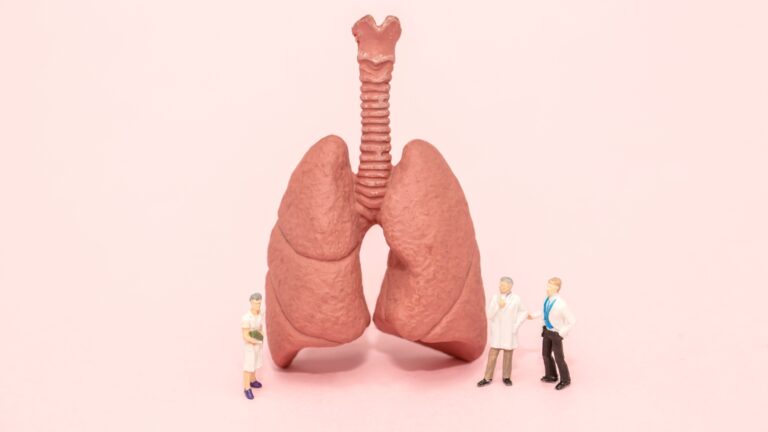
www.israel21c.org/3d-bioprinted-lungs-to-be-available-for-gl…

www.israel21c.org/3d-bioprinted-lungs-to-be-available-for-gl…
Antwort auf Beitrag Nr.: 59.183.982 von Popeye82 am 10.11.18 00:59:29REVOLUTIONARY, breakTHROUGH, world's FIRST transplant 3D printed bio-eye, in animals

http://www.biofuelsdigest.com/bdigest/2018/11/14/3d-printed-…
http://www.precise-bio.com/
www. .com
.com
http://www.biofuelsdigest.com/bdigest/2018/11/14/3d-printed-…
http://www.precise-bio.com/
www.
Professor Shlomo Magdassi, quote: "3D Printing has only One Future: DIE"

http://nocamels.com/2018/11/future-medicine-israel-3d-print-…
http://new.huji.ac.il/en
https://nano.tau.ac.il/
www. .com
.com
http://nocamels.com/2018/11/future-medicine-israel-3d-print-…
http://new.huji.ac.il/en
https://nano.tau.ac.il/
www.
TwoCure vom Fraunhofer Institut für Lasertechnik ILS
Diese Revolution im Polymerbereich habe ich übersehen!
Ist so etwas wie Carbon 3D vor 3-5 Jahren, die haben noch nicht mal eine Firma dafür gegründet, wollen aber damit startuppen

https://www.fabbaloo.com/blog/2018/11/17/the-future-of-3d-pr…
Diese Revolution im Polymerbereich habe ich übersehen!

Ist so etwas wie Carbon 3D vor 3-5 Jahren, die haben noch nicht mal eine Firma dafür gegründet, wollen aber damit startuppen


https://www.fabbaloo.com/blog/2018/11/17/the-future-of-3d-pr…
Antwort auf Beitrag Nr.: 59.241.730 von H2OAllergiker am 18.11.18 01:39:15Sind Sie an Denen auf der Messe aus "Versehen vorbeigegangen"?
Ich habe Firmen bevorzugt, keine Institutionen, weil investierbarer.
Weil ich ja vor Ein oaar Tagen geschirben hatte;
bei "3D-en", da werden denke ich noch ne Menge, Menge Produkte kommen:

http://nocamels.com/2018/11/startup-jet-eat-replace-meat-veg…
http://www.jet-eat.com/
http://www.futuremeat.org/
bei "3D-en", da werden denke ich noch ne Menge, Menge Produkte kommen:
http://nocamels.com/2018/11/startup-jet-eat-replace-meat-veg…
http://www.jet-eat.com/
http://www.futuremeat.org/
!
Dieser Beitrag wurde von MODelfin moderiert. Grund: Spam, Werbung
Antwort auf Beitrag Nr.: 59.284.438 von Popeye82 am 23.11.18 12:24:04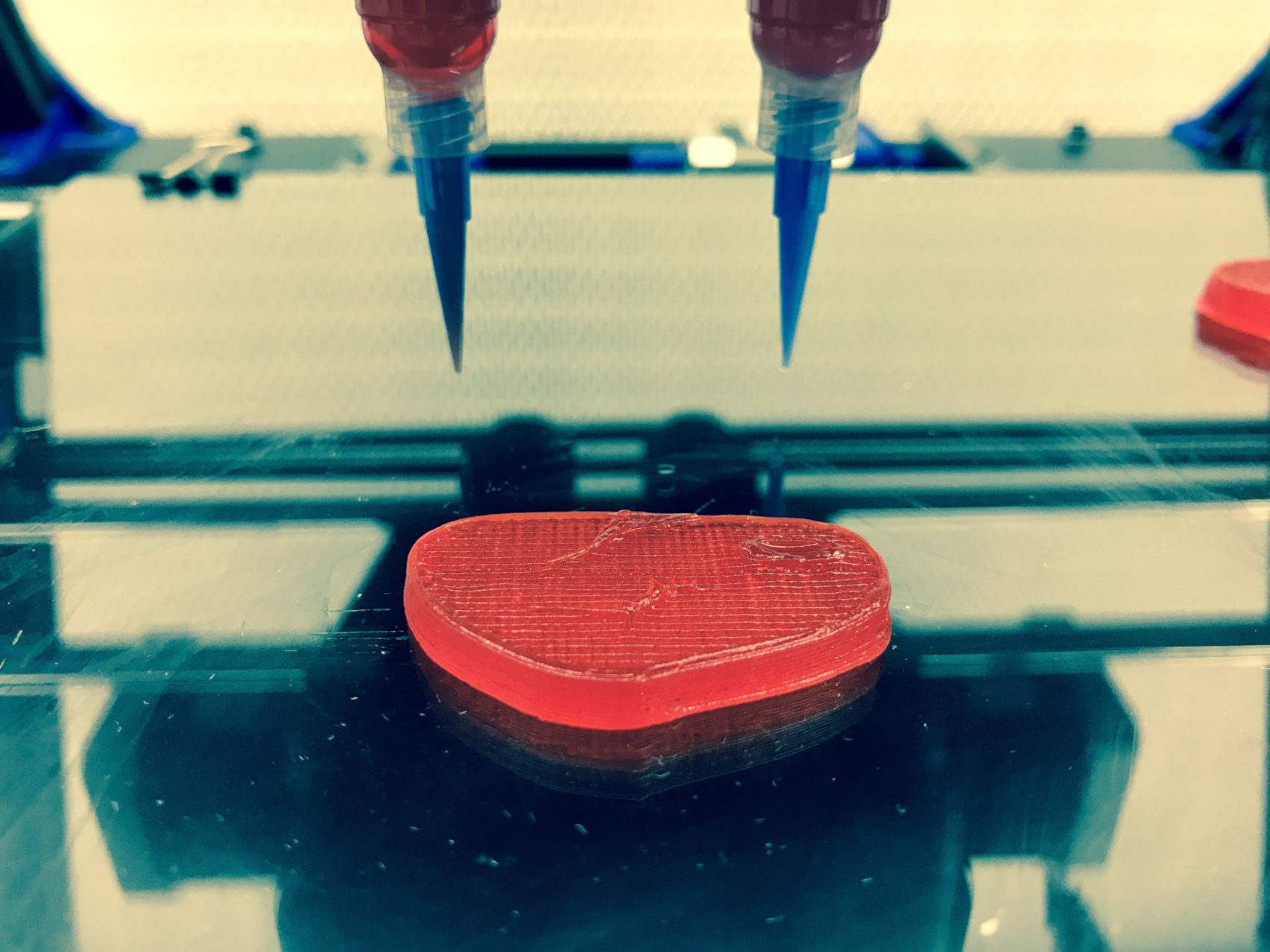

- The 3D printed meat-free chicken breast cooked like ordinary meat. Photo via Giuseppe Scionti. -
https://3dprintingindustry.com/news/novameat-3d-prints-veget…
https://patents.justia.com/inventor/giuseppe-scionti
http://www.novameat.com/


- The 3D printed meat-free chicken breast cooked like ordinary meat. Photo via Giuseppe Scionti. -
https://3dprintingindustry.com/news/novameat-3d-prints-veget…
https://patents.justia.com/inventor/giuseppe-scionti
http://www.novameat.com/


https://3dprintingindustry.com/news/3d-printed-yeast-future-…
www.economist.com/science-and-technology/2017/07/06/a-better…
www.3ders.org/articles/20160920-print-a-drink-uses-industria…
https://cen.acs.org/materials/3-d-printing/3-D-printed-yeast…
www.geekwire.com/2017/new-breed-microbrew-uw-chemists-use-3-…
http://www.washington.edu/
BIGGEST opportunity for remote areas since continental drift

www.theguardian.com/sustainable-business/2016/oct/06/3d-prin…
www.theguardian.com/sustainable-business/2016/oct/06/3d-prin…
- Polymaker
Am 15.11.2018 veröffentlicht
Owned by the Shanghai Construction Group this new 3D printer has the largest build volume of any plastic extrusion system, currently at 144 cubic meters.
The first project for the printer is a 15m pedestrian footbridge printed 100% in plastic (ASA) developed by Polymaker Industrial.
The 15m bridge will take one month to print and will be installed in one piece into a park in downtown Shanghai.
We will follow the process from print to installation... stay tuned! -
https://3dprintingindustry.com/news/shanghai-mechanized-cons…
http://www.chinasmcc.com/
https://polymaker.com/
Antwort auf Beitrag Nr.: 59.321.903 von H2OAllergiker am 28.11.18 23:15:08im Med (3) printing kann man ---->Hier<---- auch mal Etwas blättern.
https://lifesci.bluematrix.com/sellside/EmailDocViewer?encry…
ist aber Keinerlei "Empfehlung".
aber Stats+Facts und ein bissi Knowiknowledge gibbets.
https://lifesci.bluematrix.com/sellside/EmailDocViewer?encry…
ist aber Keinerlei "Empfehlung".
aber Stats+Facts und ein bissi Knowiknowledge gibbets.
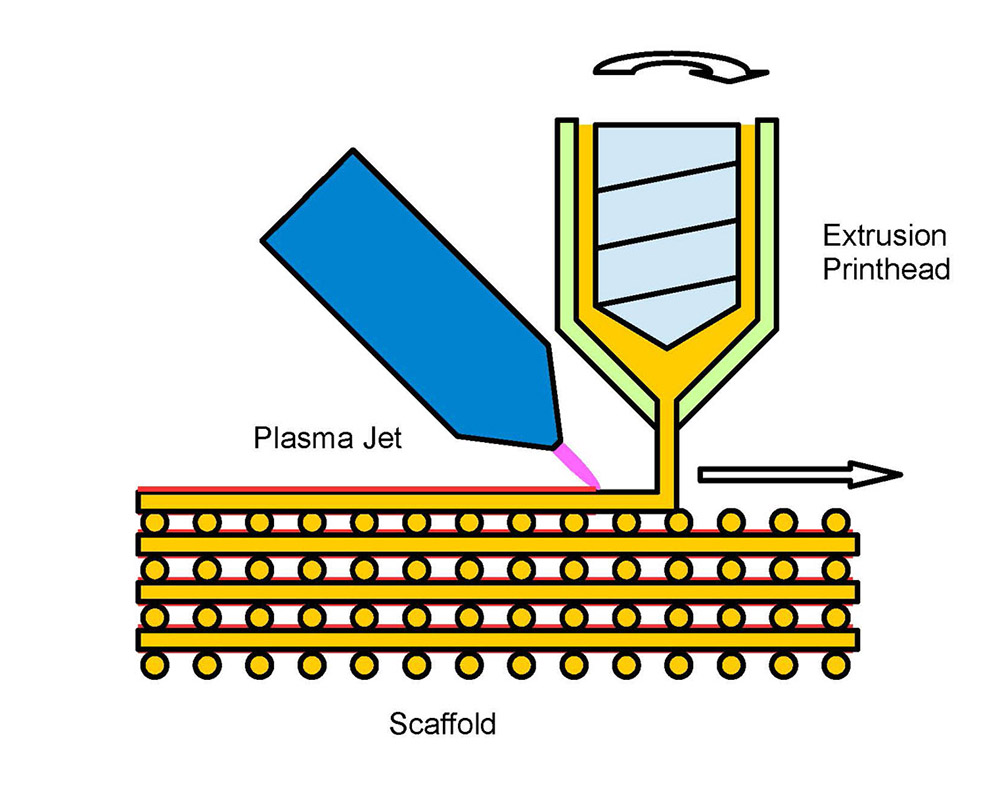
https://3dprintingindustry.com/news/fraunhofer-ist-researche…
http://www.ist.fraunhofer.de/en.html
http://www.abalonyx.no/
http://www.tecnalia.com/en/
https://gesim-bioinstruments-microfluidics.com/
http://www.maastrichtuniversity.nl/
http://www.polyvation.com/
http://www.prolabintefarm.com/
http://www.unipd.it/en/
Antwort auf Beitrag Nr.: 59.336.810 von Popeye82 am 30.11.18 17:48:55
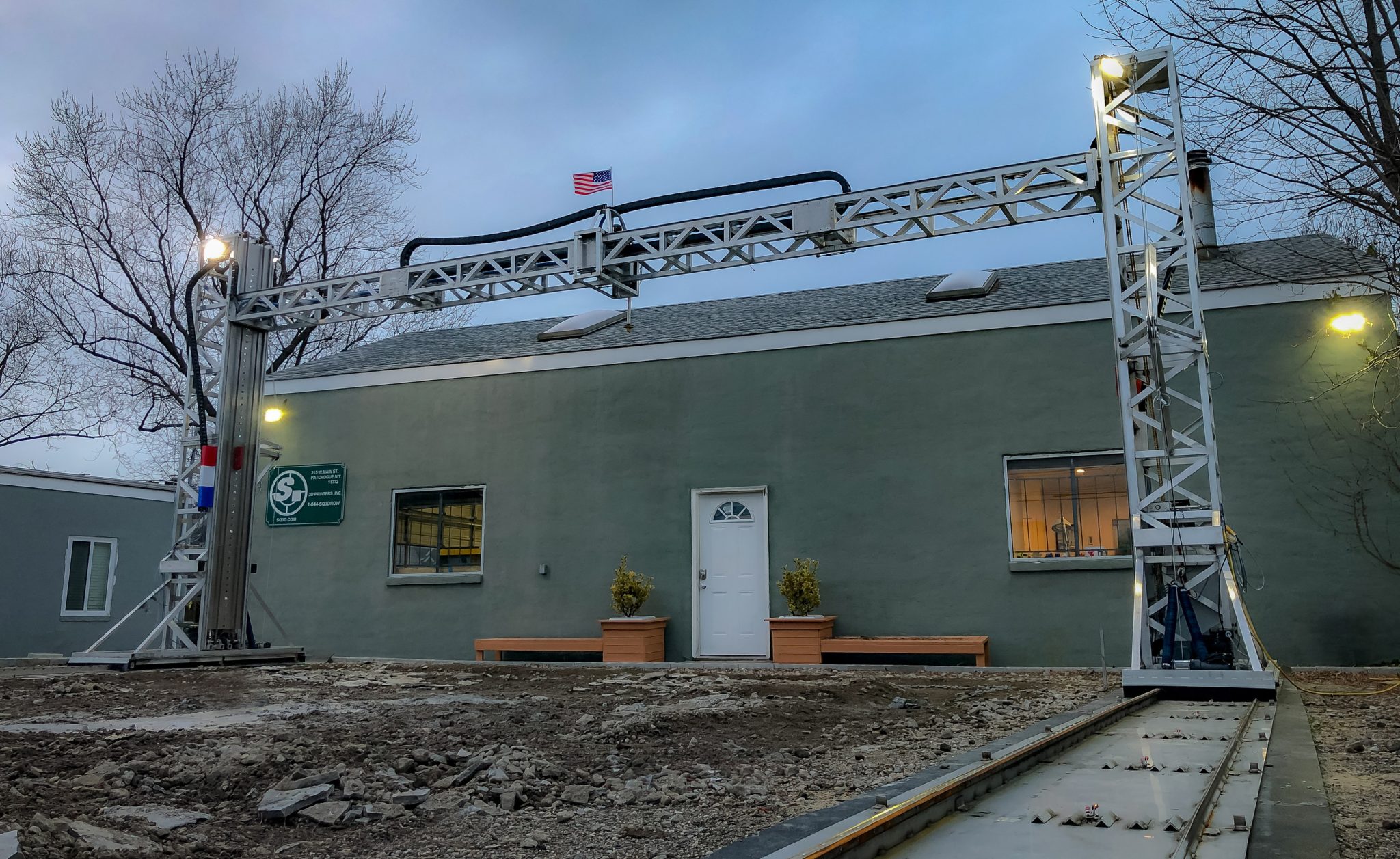
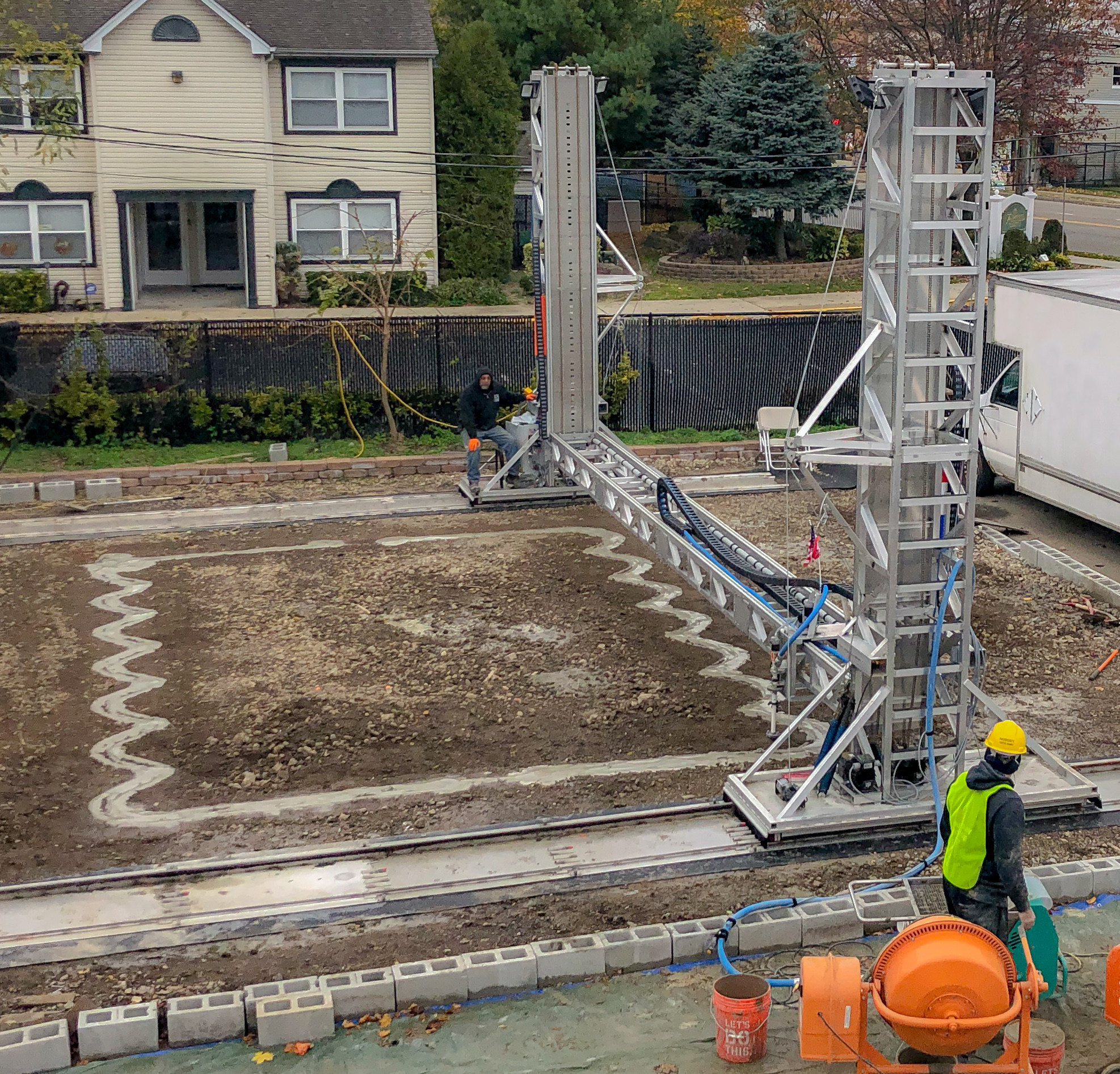
https://3dprintingindustry.com/news/s-squared-3d-printers-de…
https://sq3d.com/
"S-Squared 3D Printers debuts large Autonomous Robotic Construction System
Tia Vialva December 07th 2018 - 11:49am
0
0
0Shares
0
0
0
0
27shares
27
0
0
S-Squared 3D Printers (SQ3D), a 3D printer manufacturing and service company based in New York, has introduced its patent-pending Autonomous Robotic Construction System (ARCS).
Capable of constructing homes, roads, bridges, and commercial buildings, the specialized ARCS 3D printer is said to outperform traditional construction by reducing both time and cost up to 70%. The company states:
“Our mission is to revolutionize the construction industry forever. This kind of outside-the-box thinking and solutions will reduce environmental impact, cut overhead costs, save lives and prevent injuries.”
S-Squared 3D Printer's Autonomous Robotic Construction System (A.R.C.S.) Photo via S-Squared 3D Printer.
S-Squared 3D Printer’s Autonomous Robotic Construction System (A.R.C.S.) Photo via S-Squared 3D Printer.
The Autonomous Robotic Construction System
Additive manufacturing in construction has resulted in sustainable 3D printed housing in remote locations. With increased design freedom, architectural 3D printing systems enable the potential to a variety of structures in areas where materials and labor are scarce.
Leveraging the capabilities of this technology, engineers from SQ3D have developed a safe, effective, and eco-friendly way to build, solving the increasingly complex demand of current construction.
ARCS is capable of printing cement structures ranging from 500 square feet to over 1 million square feet. These 3D printed structures are mold and fire resistant and built to withstand severe weather. The system takes an estimated six hours to set up. Furthermore, the buildings created with ARCS are said to have a structural integrity that can last a century and require little maintenance.
According to SQ3D, OSHA instructors have praised this machine for its potential to reduce some of the most common injuries associated with construction. Moreover, the ARCS will be utilized in several construction projects to be announced in the near future.
S-Squared technicians and engineers during calibration testing. Photo via S-Squared 3D Printers.
S-Squared technicians and engineers during calibration testing. Photo via S-Squared 3D Printers.
The environmental impact of 3D printed houses
With the ability to use natural materials, 3D printed houses and structures have become a sustainable and cost-effective option within construction. The Italian manufacturer behind DeltaWASP 3D printers, WASP, have recently demonstrated the potential for 3D printed sustainable housing with the release of its new construction system used to accelerate the development of the eco-friendly village of Shamballa.
Keep up with the latest construction innovations in 3D printing by subscribing to our free newsletter. Also, follow us on Twitter and like us on Facebook.
To commence your career in additive manufacturing or post new opportunities, join 3D Printing Jobs.
Featured image shows S-Squared 3D Printer’s Autonomous Robotic Construction System (A.R.C.S.) Photo via S-Squared 3D Printer."


https://3dprintingindustry.com/news/s-squared-3d-printers-de…
https://sq3d.com/
"S-Squared 3D Printers debuts large Autonomous Robotic Construction System
Tia Vialva December 07th 2018 - 11:49am
0
0
0Shares
0
0
0
0
27shares
27
0
0
S-Squared 3D Printers (SQ3D), a 3D printer manufacturing and service company based in New York, has introduced its patent-pending Autonomous Robotic Construction System (ARCS).
Capable of constructing homes, roads, bridges, and commercial buildings, the specialized ARCS 3D printer is said to outperform traditional construction by reducing both time and cost up to 70%. The company states:
“Our mission is to revolutionize the construction industry forever. This kind of outside-the-box thinking and solutions will reduce environmental impact, cut overhead costs, save lives and prevent injuries.”
S-Squared 3D Printer's Autonomous Robotic Construction System (A.R.C.S.) Photo via S-Squared 3D Printer.
S-Squared 3D Printer’s Autonomous Robotic Construction System (A.R.C.S.) Photo via S-Squared 3D Printer.
The Autonomous Robotic Construction System
Additive manufacturing in construction has resulted in sustainable 3D printed housing in remote locations. With increased design freedom, architectural 3D printing systems enable the potential to a variety of structures in areas where materials and labor are scarce.
Leveraging the capabilities of this technology, engineers from SQ3D have developed a safe, effective, and eco-friendly way to build, solving the increasingly complex demand of current construction.
ARCS is capable of printing cement structures ranging from 500 square feet to over 1 million square feet. These 3D printed structures are mold and fire resistant and built to withstand severe weather. The system takes an estimated six hours to set up. Furthermore, the buildings created with ARCS are said to have a structural integrity that can last a century and require little maintenance.
According to SQ3D, OSHA instructors have praised this machine for its potential to reduce some of the most common injuries associated with construction. Moreover, the ARCS will be utilized in several construction projects to be announced in the near future.
S-Squared technicians and engineers during calibration testing. Photo via S-Squared 3D Printers.
S-Squared technicians and engineers during calibration testing. Photo via S-Squared 3D Printers.
The environmental impact of 3D printed houses
With the ability to use natural materials, 3D printed houses and structures have become a sustainable and cost-effective option within construction. The Italian manufacturer behind DeltaWASP 3D printers, WASP, have recently demonstrated the potential for 3D printed sustainable housing with the release of its new construction system used to accelerate the development of the eco-friendly village of Shamballa.
Keep up with the latest construction innovations in 3D printing by subscribing to our free newsletter. Also, follow us on Twitter and like us on Facebook.
To commence your career in additive manufacturing or post new opportunities, join 3D Printing Jobs.
Featured image shows S-Squared 3D Printer’s Autonomous Robotic Construction System (A.R.C.S.) Photo via S-Squared 3D Printer."
RASSISMUS
3D Systems CEO, quote: "NUR Menschen mit Glatze dürfen bei Uns arbeiten"





www.rdmag.com/article/2018/12/3d-printed-biosensors-offer-we…
https://wsu.edu/
3D Systems CEO, quote: "NUR Menschen mit Glatze dürfen bei Uns arbeiten"






www.rdmag.com/article/2018/12/3d-printed-biosensors-offer-we…
https://wsu.edu/
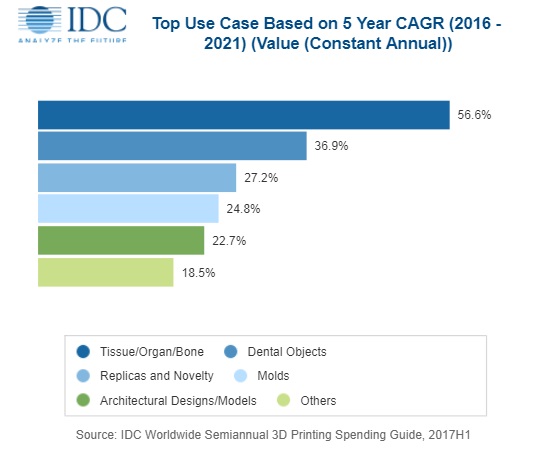
https://3dprintingindustry.com/news/idc-2019-predictions-att…
www.idc.com/getdoc.jsp?containerId=WC20181127&pageType=P
"IDC 2019 predictions attributes $2 billion in new spending related to 3D printed products
Tia Vialva December 07th 2018 - 6:11pm
0
0
0Shares
0
0
0
0
12shares
12
0
0
The International Data Corporation (IDC) has released ten predictions that will significantly impact the 3D printing market over the next three to five years.
As a result of its worldwide research, one of IDC forecasts attributes ongoing trade wars and manufacturing automation to a 40% drive in additive manufacturing implementation by discrete manufacturers worldwide by 2021.
Furthermore, the IDC analysts believe that by 2022, 75% of all new 3D printers will support new materials with properties like gel and rubber, thus driving $2 billion in new spending related to 3D printed products.
The race to innovation
Headquartered in Framingham, Massachusetts, IDC employs more than 1,100 analysts located in over 50 countries. With 49% of its analysts active in emerging markets, the company boasts global, regional and local expertise on technology and industry trends and conducts primary demand-side research with more than 350,000 end users surveyed annually.
Earlier this year, IDC updated its Worldwide Semiannual 3D Printing Spending Guide forecasting market-wide spending on additive manufacturing throughout 2018 to be approximately $12 billion.
The IDC FutureScape: Worldwide 3D Printing 2019 Predictions, headed by Keith Kmetz, the Program Vice President of IDC’s Imaging, Printing & Document Solutions programs, offers guidance for managing the forecasted future of additive manufacturing regarding IT investments and implementation strategies.
Chart showing top spends by application as forecasted by IDC. Image via IDC
Chart showing top spends by application as forecasted by IDC earlier this year. Image via IDC.
The future of additive manufacturing
The IDC 3D printing predictions have been categorized under different themes as seen from the graph below; the forecasts are also numbered for identification. The first (1) prediction states that by 2021, 40% of the top 2,000 manufacturers will utilize 3D printing combined with intelligent machine tools to optimize material usage, thus reducing waste by at least 25%.
The second (2) claims that despite rapid ongoing advances in 3D bioprinting, patient-specific durable medical devices will account for 80% of the commercial healthcare 3D printing market in 2023. As previously mentioned, analysts predict that (3) trade wars and automation will have driven more than 40% of discrete manufacturers towards 3D printing by 2021.
Furthermore, within the healthcare sector, (4) by 2022, 75% of all new 3D printers will support new materials with properties like gel and rubber, thus driving $2 billion in new spending related to 3D printed products.

IDC FutureScape: Worldwide 3D Printing Predictions. Image via IDC.
Moreover, it is estimated that (5) by 2021, 30% of electronics manufacturers worldwide will have incorporated 3D printed electronics and 4D printing to address the demand of stretchable and flexible electronics amid growing IoT adoption. Before 2023,(6) 50% of industrial and professional 3D prints will be influenced by generative design, topology optimization, and marketplace software.
Within advanced industries, (7) by 2020, 3D printing advances will have driven more than 50% of aerospace manufacturers worldwide to partner with industry-standards development groups to formalize the use of 3D printing. Also within software developments, (8) by 2024, 35% of 3D printer CAD files will be protected by blockchain as companies look for decentralized low-cost options to protect digital IP from theft and loss.
Looking at the consumer markets, it is believed that by 2021 (9), every major international footwear manufacturer will produce, market, and sell an athletics shoe line that is nearly 100% 3D printed. Finally, the tenth prediction (10) forecasts that by 2022, 20% of 3D printer equipment manufacturers will have adopted an “as a service” model as the primary avenue to reach customers and maximize their market potential.
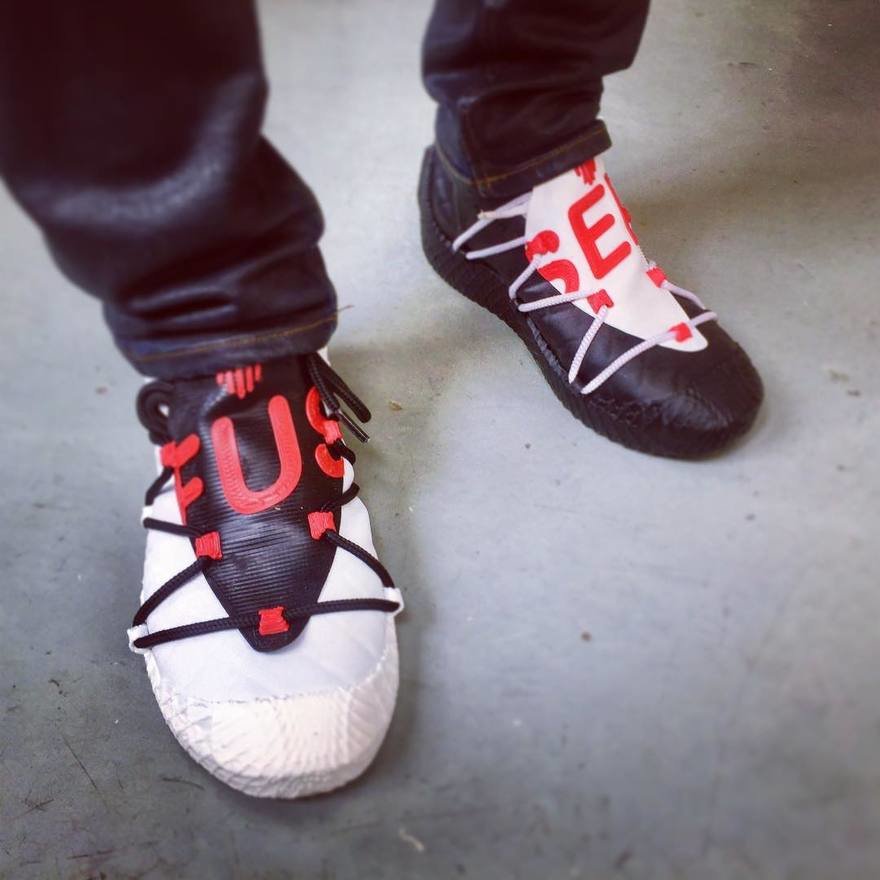
FUSED footwear, entirely 3D printed shoes. Photo via FUSED.
Make your nominations for the 2019 3D Printing Industry Awards here.
Also, for all the latest 3D printing news, subscribe to our free newsletter, follow us on Twitter and like us on Facebook.
To commence your career in additive manufacturing or post new opportunities, join 3D Printing Jobs.
Featured image shows a depiction of advanced and connected technologies. Image via IDC."
Antwort auf Beitrag Nr.: 59.419.503 von Popeye82 am 12.12.18 01:54:12
https://futurism.com/scientists-europe-3d-printing-fake-moon…
https://futurism.com/scientists-europe-3d-printing-fake-moon…
NEWs: the world is EAGERLY searching for innovative solutions

https://3dprintingindustry.com/news/3d-printing-news-sliced-…
https://3dprintingindustry.com/news/3d-printing-news-sliced-…
www.process-worldwide.com/why-additive-manufacturing-and-3d-…
"Why Additive Manufacturing and 3D-Printing May Also be the Key to Future Electronics Design
11/16/2018 | Author / Editor: Simon Fried * / Dr. Anna-Lena Gutberlet
Fig. 1: 3D printed 2-layer Arduino Board printed on the DragonFly 2020 3D Printer
Fig. 1: 3D printed 2-layer Arduino Board printed on the DragonFly 2020 3D Printer (Source: Nano Dimension)
PDF PDF
Recommend Recommend
Print Print
Electronics manufacturing is in the throes of a quiet transformation built around specialty 3D printers and advanced materials working together to create fully functional electronic parts.
Breakthroughs in additive manufacturing today include using specialty 3D printers to build functional electronics. It’s somewhat of a novelty, but its promise has wide-reaching implications for some of the world's largest industries. Advances already being made around these specialty 3D printers will lead us to new capabilities and radically altered design and production processes. Developments on the horizon include faster printing speeds, higher resolution printing, and increased printing sizes and capabilities for incorporating multiple types of materials – including the ability to use multiple materials while printing a single object.
Chemicals, Hot off the Printer: Additive Manufacturing in Chemicals and Pharma
3D-Printing and Additive Manufacturing
Chemicals, Hot off the Printer: Additive Manufacturing in Chemicals and Pharma
09/17/2018 - What has advent of additive manufacturing in store for the process industry? – The 3D-printer becomes a gamechanger: While some companies set themselves apart by using customized materials or dream of the pill out of the printer, others fear the impending marginalization of the chemical industry. Gold rush or hangover? An industry is looking for answers between polymer filaments, prototypes and printed pills.
read...
Innovation Within an Innovative Field
Already, 3D printers for printed electronics are being deployed for printed circuit board (PCB) prototyping and development. With the printers, manufacturers and designers can protect their intellectual property and enjoy faster times to market because they no longer need to use outside outsourcing facilities; product development costs are lowered because designs can be modified and reprinted on the fly; and design flexibility and quality are vastly improved.
Gallery
Fig. 1: 3D printed 2-layer Arduino Board printed on the DragonFly 2020 3D Printer Fig 3: 3D printed coil embedded in object Fig. 2: DragonFly 2020 Pro 3D Printer is able to simultaneous 3D-print silver nanoparticle conductive inks (metals) and insulating inks (polymers).
Select a picture to open the gallery (3 Pictures)
While 3D printing has been around for several decades, using specialty additive manufacturing printers to make fully functional electronics circuits is new. Just like other forms of 3D printing, this latest advancement brings new levels of efficiency and productivity to support increased innovation and generate new revenue streams.
The breakthrough in creating electronics with 3D printers comes from Nano Dimension, the Israel-based creators of the DragonFly 2020 3D Printer and the recently introduced DragonFly 2020 3D Pro Printer. Nano Dimension conceptualized building a high-resolution inkjet 3D printer that uses the company’s advanced nano materials and inks to build – layer-by-layer – completely functional electronic objects such as PCB prototypes, circuits and antennas.
With Nano Dimension’s DragonFly, designers and engineers can print and test designs, make changes as needed, and reprint. Some users might also employ the DragonFly for printing small-batch electronics or developing parts that can’t be made in any other way, because the printers allow for innovative designs that can fit virtually any design footprint. The DragonFly addresses the growing demand for electronic devices that require increasingly sophisticated features and rely on multilayer printed circuit boards.
Additional Information
How the DragonFly 2020 Pro 3D Printer Works
Now, the chemical industry also wants a piece of the action: 70 % of companies expect 3D printing will change their business profoundly, a recent Bitkom survey found out.
Discover the original survey
Demand for circuitry, including PCBs – which are at the heart of every electronic device – covers a diverse range of industries, including consumer electronics, medical devices, defense, aerospace, automotive, IoT and telecom. These sectors can all benefit from Nano Dimension’s 3D printed electronics solutions for rapid prototyping and short-run manufacturing.
Why 3D Printing still has Room for Improvement
Europe: Additive Manufacturing
Why 3D Printing still has Room for Improvement
01/09/2017 - According to a report on 3D printing European small and medium-sized enterprises face barriers to take up additive manufacturing technologies. While some European regions are world leaders in areas like selective laser melting, additive manufacturing is in most application areas still at an early stage.
read...
A Market That Needs Change
The DragonFly addresses the primary challenges in electronic design: transforming concepts into market-ready products quickly, and without breaking the bank – while meeting the need for smaller, faster, lighter, thinner and more functional products.
Today, the PCB development process is extremely time-consuming, particularly for companies that are developing high layer count boards or odd-sized boards that fit a unique device footprint. The more complex the PCB, the longer the design, prototyping and testing process takes. Prototyping – and often re-prototyping – offsite is also expensive. The process involves producing the PCB prototype through traditional subtractive manufacturing methods, often relying on overseas vendors who require several weeks of lead time. The original equipment provider contracts with the prototype manufacturer, and then waits for the board to be produced, shipped, and clear customs before it is delivered for testing.
Anyone who works in electronics knows that the demands for speedy development can result in a rushed, sub-par product. Because of time constraints, even after a PCB prototype has been produced and tested, problems might be discovered that require design updates. That means refabricating the PCB, increasing the lead time and cost for each product. Even a very minor mistake in design or circuitry can lead to product recalls and other quality problems that can seriously hurt a product’s sales and a vendor’s reputation.
How to Make Your Planning Ready for Industry 4.0
Integrated Planning Solution with ProDOK NG
How to Make Your Planning Ready for Industry 4.0
The white paper explains how an integrated planning solution can be used to collect and manage engineering data in a standardized, integrated and reliable process and how you can use this to increase your productivity.
more...
Advantages of Prototyping In-House
When companies print their own PCB prototypes in-house in just hours, design and test cycles can drop from months or weeks to days or even hours. By using an advanced printing platform such as Nano Dimension’s DragonFly, designers and engineers can design sections of the circuit in parallel – and they can test, fail fast and iterate on the fly to accelerate creativity and improve quality. These advances translate into lowered development time and costs, added innovation and far fewer development and IP risks and re-prototyping.
The DragonFly also can produce non-planar 3D objects that contain 3D-circuitry, moving 3D printing beyond traditional electronics formats of multilayer flat circuits to electrically functional structures for a wide range of development, custom and small-scale production projects. The application possibilities are endless including flexible, rigid PCBs and embedded components (fig. 3).
3D Printing Electronics: the Applications Are Endless
Clearly, a printer that can generate complex electronics through additive manufacturing is highly advanced. The DragonFly works with tested technology and advanced nano inks. The printer itself works on X, Y and Z axes – for width, depth and height. It uses an extremely precise deposition system with advanced inkjet print heads that have hundreds of small nozzles that allows for the simultaneous 3D-printing of silver nanoparticle conductive inks (metals) and insulating inks (polymers). Objects printed on the DragonFly need no post processing.
The printer runs with Nano Dimension’s proprietary software, called Switch, which converts complex 2D renderings and schematics such as Gerber files into layer-by-layer print instructions for 3D printing. The software allows for printing of a full range of PCBs, even those including interconnections, through-holes and complex geometries – with no etching, drilling, plating or waste. Using the DragonFly, it is possible to print polymers and metals together to meet functional goals such as meeting demands for compact and stronger electronics. Critical to the process is the use of advanced, conductive silver nanoparticle inks. Nano-particle sizes and distributions are requirements for printing highly conductive PCB traces. Non-conductive (or dielectric) inks complement the silver inks to create insulating barriers that support the optimal performance of the electronically conductive inks. Importantly, these dielectric inks are a key enabler of the printing of the entire PCB structure.
The DragonFly 2020 3D Printer deposits AgCite silver conductive ink and the FR-4 like dielectric material to build a complete circuit or multilayer PCB layer by layer. Starting from a sacrificial substrate, the materials are built up from the underside conductive traces to finish with the topside conductors or pads. This process builds vias, drop by drop, either as blind, open or complete vias, with conductive traces that are about 100 microns (3.94 mil) in width.
The additive process means that vias are easily printed as filled vias. The DragonFly makes several passes to create the width and thickness required for one line. It is an integrated process that cures and sinters the inks during the build to achieve the desired shape, conductivity and adhesion. Plated and non-plated through-holes are created by repeatedly leaving a space at a particular XY coordinate, thereby building surrounding materials up around a void. The dielectric ends up as a solid piece, within which the conductive traces are positioned at the precise XYZ coordinates specified. Upon completion, a multilayer PCB 3D printed on a DragonFly 2020 3D Printer can be soldered using low temperature solder.
The unique construction of the DragonFly means there are no limits to the layers count that can be printed on the DragonFly, beyond the mechanical height of the printer’s Z axis. The speed of the print depends on the number of layers, the complexity and conductivity of the circuits as well as the board size. For example, a large complex, 10-layer board can be 3D printed overnight.
Printing Fully Functional Objects in One Print Job?
In the near term, we expect the market will see additional high-quality materials that will enable the final 3D printed parts to have additional functionality. Advances will continue in combining materials such as metals and polymers or metals and ceramics in the same print job, so users can build electrical capabilities directly into mechanical objects.
For all of this, the holy grail is the day when 3D printers can generate – in one print job – fully functional objects that incorporate many modules, like embedded electronics and sensors. Thanks to Nano Dimension, that dream of disrupting the future of how electronics are made may not be all that far off.
This article was first published in Elektronik-Praxis
* Simon Fried is Chief Business Officer at Nano Dimension."
Antwort auf Beitrag Nr.: 59.389.451 von Popeye82 am 07.12.18 15:25:473-D printing of adaptive aids for arthritis can save upwards of  percent for simple household items; the Centers for Disease Control+Prevention(CDC) reports that almost a quarter of the U.S. population lives with some form of arthritis. Daily tasks —like opening drawers, turning door handles— can be difficult, soooooooooooooooooooooooooooooooooooooo people turn to adaptive aids. Many are small pieces of plastic. “It NEVER ceases to amaze me what a small piece of plastic sells for,” said Joshua Pearce, the Richard Witte Endowed Professor of Materials Science+Engineering, @Michigan Tech. “Anyone who needs an adaptive aid for arthritis should be 3-D printing it.” Soooooooooooooooooooooooooooooooooooooooooooooooooooooooooooooo, Pearce had his class take a shot. Now, Pearce is a co-author and corresponding researcher on a new study that analyzes how 20 of the 3-D printed adaptive aids his class printed see huge cost savings+either meet —oooooooooooooooooooooooor improve— standards for existing products. The study was published this week in Geriatrics (DOI: 10.3390/geriatrics3040089), +is co-authored by student research assistant Nicole Gallup, +orthopedic surgeon Jennifer Bow, who is also a visiting scholar, @Michigan Tech
percent for simple household items; the Centers for Disease Control+Prevention(CDC) reports that almost a quarter of the U.S. population lives with some form of arthritis. Daily tasks —like opening drawers, turning door handles— can be difficult, soooooooooooooooooooooooooooooooooooooo people turn to adaptive aids. Many are small pieces of plastic. “It NEVER ceases to amaze me what a small piece of plastic sells for,” said Joshua Pearce, the Richard Witte Endowed Professor of Materials Science+Engineering, @Michigan Tech. “Anyone who needs an adaptive aid for arthritis should be 3-D printing it.” Soooooooooooooooooooooooooooooooooooooooooooooooooooooooooooooo, Pearce had his class take a shot. Now, Pearce is a co-author and corresponding researcher on a new study that analyzes how 20 of the 3-D printed adaptive aids his class printed see huge cost savings+either meet —oooooooooooooooooooooooor improve— standards for existing products. The study was published this week in Geriatrics (DOI: 10.3390/geriatrics3040089), +is co-authored by student research assistant Nicole Gallup, +orthopedic surgeon Jennifer Bow, who is also a visiting scholar, @Michigan Tech


www.mtu.edu/news/stories/2018/december/3d-printing-offers-he…

www.mtu.edu/news/stories/2018/december/3d-printing-offers-he…
EVT sehr interessant.

- Innovate BC
Am 29.03.2018 veröffentlicht
BCIC Ignite provides funding to accelerate the commercialization of new technologies and innovations in the natural resources and applied sciences sectors in British Columbia. The program provides awards of up to $300,000 to consortia that are conducting research projects that address a significant demonstrated problem faced by industry and will commercialize a proposed innovation within a 3-year timeframe.
To learn more about the BCIC Ignite program, visit http://bcic.ca/ignite.
Kategorie
Wissenschaft & Technik -

https://3dprintingindustry.com/news/advanced-biocarbon-3d-de…
https://advancedbiocarbon3d.com/
https://hello-tomorrow.org/

- Innovate BC
Am 29.03.2018 veröffentlicht
BCIC Ignite provides funding to accelerate the commercialization of new technologies and innovations in the natural resources and applied sciences sectors in British Columbia. The program provides awards of up to $300,000 to consortia that are conducting research projects that address a significant demonstrated problem faced by industry and will commercialize a proposed innovation within a 3-year timeframe.
To learn more about the BCIC Ignite program, visit http://bcic.ca/ignite.
Kategorie
Wissenschaft & Technik -
https://3dprintingindustry.com/news/advanced-biocarbon-3d-de…
https://advancedbiocarbon3d.com/
https://hello-tomorrow.org/
REVOLUTIONIZING human transport





www.advancedsciencenews.com/3d-printed-flight-suit/?utm_sour…
https://gravity.co/
http://www.eos.info/en
www.advancedsciencenews.com/3d-printed-flight-suit/?utm_sour…
https://gravity.co/
http://www.eos.info/en
Antwort auf Beitrag Nr.: 59.336.810 von Popeye82 am 30.11.18 17:48:55
https://3dprintingindustry.com/news/apis-cor-and-sunconomy-t…
http://www.apis-cor.com/
http://sunconomy.com/
https://3dprintingindustry.com/news/apis-cor-and-sunconomy-t…
http://www.apis-cor.com/
http://sunconomy.com/
Antwort auf Beitrag Nr.: 59.586.542 von Popeye82 am 08.01.19 18:57:10
- Apis Cor
Am 15.03.2016 veröffentlicht
Less than an hour - and the building foundation is ready. Fantasy or real life? See for yourself: in this video an Apis Cor 3D printer is fully constructing a retained framework for a building foundation in just 45 minutes. Speed, quality, ideal geometry and no waste material - all that with a full automation of a process. And that's just the beginning - this is a first video of a series demonstrating 3D construction technology in detail. Subscribe to our channel or become the first to see the full building printing by visiting our booth at MosBuild expo.
Learn more: http://www.mosbuild.com/register-now?..." target="_blank" rel="nofollow ugc noopener">http://www.mosbuild.com/register-now?...
Our website: www.apis-cor.com
Меньше часа - и фундамент для здания готов. Реальность или выдумка? Судите сами: в этом ролике строительный 3D принтер Apis Cor полностью отпечатывает несъемную опалубку для фундамента всего за 45 минут. Скорость, качество, идеальная геометрия и полное отсутствие отходов - всё это при полной автоматизации процесса. И это только начало - это первый ролик из серии видео, подробно демонстрирующих технологию 3D печати. Подписывайтесь на наш канал, или станьте первыми, кто увидит печать здания от начала до конца, посетив наш стенд на выставке MosBuild.
Подробности: http://www.mosbuild.com/register-now
Наш сайт: www.apis-cor.com
Kategorie
Menschen & Blogs -

- Apis Cor
Am 15.03.2016 veröffentlicht
Less than an hour - and the building foundation is ready. Fantasy or real life? See for yourself: in this video an Apis Cor 3D printer is fully constructing a retained framework for a building foundation in just 45 minutes. Speed, quality, ideal geometry and no waste material - all that with a full automation of a process. And that's just the beginning - this is a first video of a series demonstrating 3D construction technology in detail. Subscribe to our channel or become the first to see the full building printing by visiting our booth at MosBuild expo.
Learn more: http://www.mosbuild.com/register-now?..." target="_blank" rel="nofollow ugc noopener">http://www.mosbuild.com/register-now?...
Our website: www.apis-cor.com
Меньше часа - и фундамент для здания готов. Реальность или выдумка? Судите сами: в этом ролике строительный 3D принтер Apis Cor полностью отпечатывает несъемную опалубку для фундамента всего за 45 минут. Скорость, качество, идеальная геометрия и полное отсутствие отходов - всё это при полной автоматизации процесса. И это только начало - это первый ролик из серии видео, подробно демонстрирующих технологию 3D печати. Подписывайтесь на наш канал, или станьте первыми, кто увидит печать здания от начала до конца, посетив наш стенд на выставке MosBuild.
Подробности: http://www.mosbuild.com/register-now
Наш сайт: www.apis-cor.com
Kategorie
Menschen & Blogs -
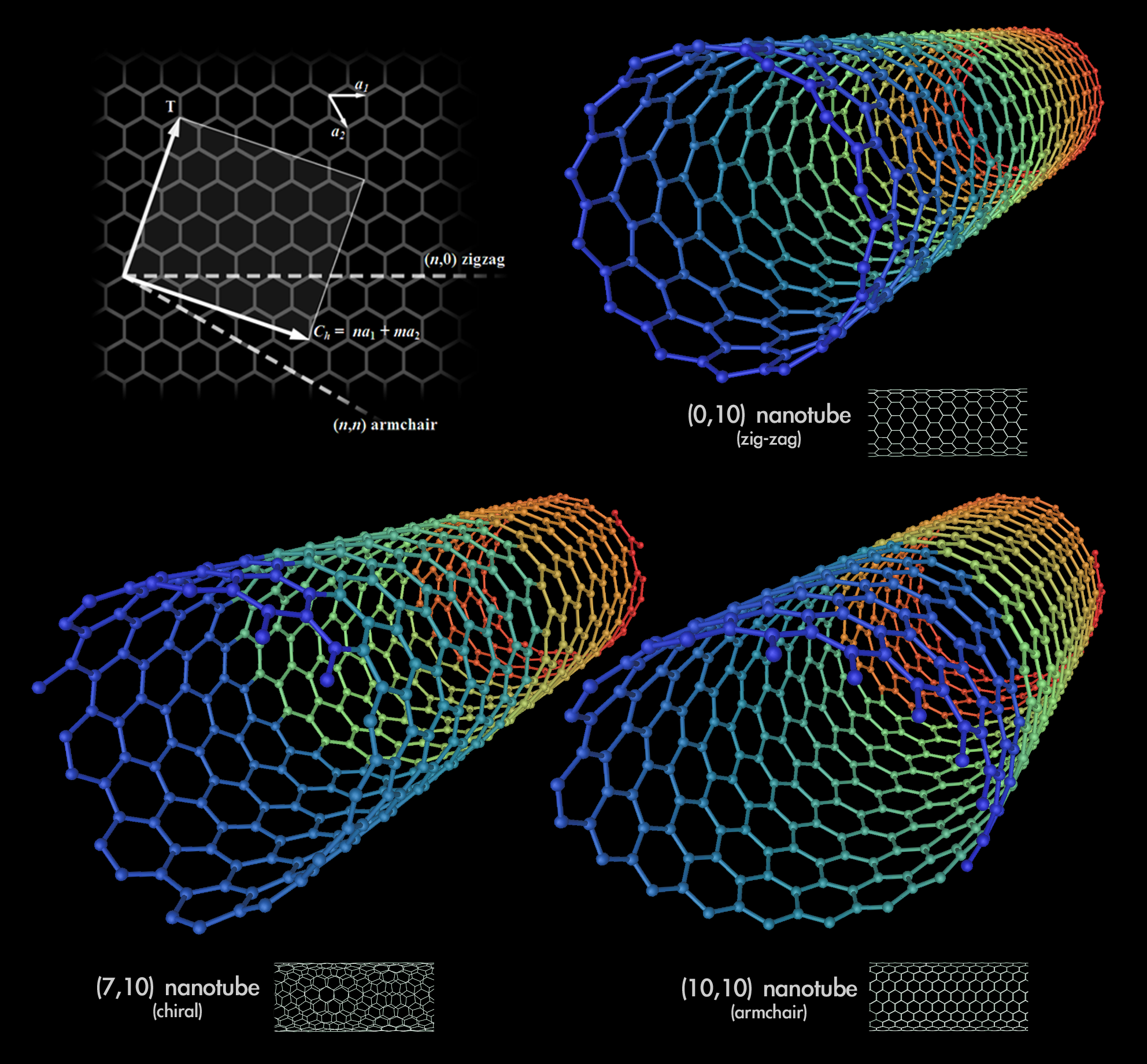
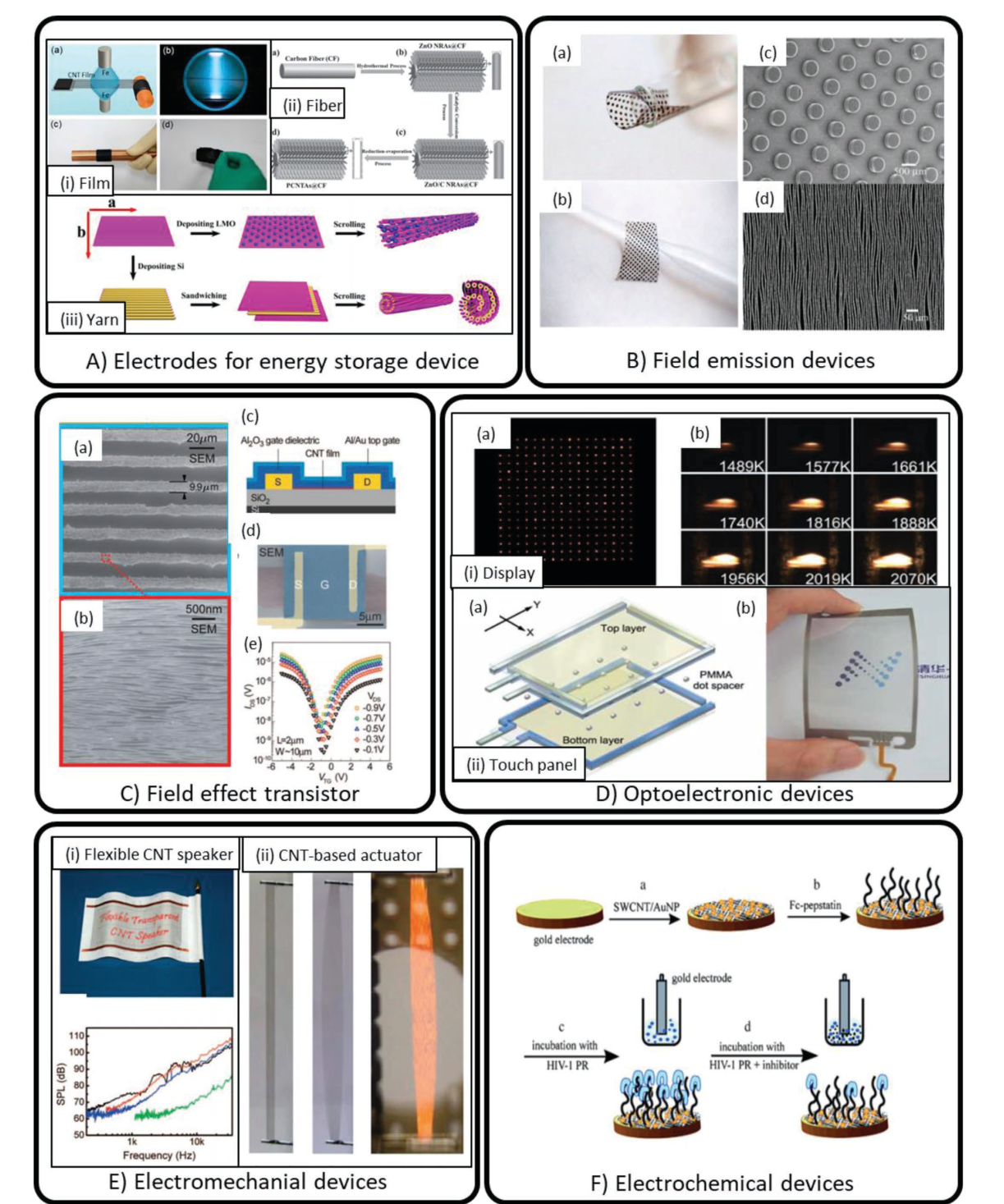
https://3dprintingindustry.com/news/nanyang-technological-un…
https://onlinelibrary.wiley.com/doi/abs/10.1002/admi.2018013…
www.sciencedirect.com/science/article/pii/S1878535210001747
https://3dprintingindustry.com/news/research-review-3d-print…
https://aip.scitation.org/doi/abs/10.1063/1.1861143
https://aip.scitation.org/doi/abs/10.1063/1.4917070
https://3dprintingindustry.com/news/catalonian-researchers-3…
https://3dprintingindustry.com/news/3d-bio-printing-advances…
https://3dprintingindustry.com/news/qa-cedarville-professor-…
http://www.ntu.edu.sg/Pages/home.aspx
world's FIRST 3-D printed plastic objects



 , that can connect to WiFi, without electronics
, that can connect to WiFi, without electronics


www.washington.edu/news/2017/12/05/in-first-3-d-printed-obje…
- Paul G. Allen School
Am 04.12.2017 veröffentlicht
University of Washington researchers have developed a way to 3D print plastic objects and sensors capable of communicating wirelessly with other smart devices, without the need for batteries or other electronics.
Kategorie
Bildung -

www.washington.edu




 , that can connect to WiFi, without electronics
, that can connect to WiFi, without electronics

www.washington.edu/news/2017/12/05/in-first-3-d-printed-obje…
- Paul G. Allen School
Am 04.12.2017 veröffentlicht
University of Washington researchers have developed a way to 3D print plastic objects and sensors capable of communicating wirelessly with other smart devices, without the need for batteries or other electronics.
Kategorie
Bildung -
www.washington.edu
POTENTIAL gameCHANGER, for 3D printing, AND the wider manufacturing industry


https://3dprintingindustry.com/news/nasa-jpl-expresses-inter…
http://www.jpl.nasa.gov/
http://www.amrc.co.uk/
http://www.boeing.com/
https://3dprintingindustry.com/news/nasa-jpl-expresses-inter…
http://www.jpl.nasa.gov/
http://www.amrc.co.uk/
http://www.boeing.com/
Making 3D printing  times faster
times faster


https://news.umich.edu/3d-printing-100-times-faster-with-lig…
www.engadget.com/2019/01/12/formlabs-ces-2019/
www.engadget.com/2019/01/12/formlabs-ces-2019/
- 3D printing 100 times faster with resin
3.703 Aufrufe
27
2
Teilen
Speichern
Michigan Engineering
Am 11.01.2019 veröffentlicht
A new way to 3D print, developed at the University of Michigan, uses two lights to control the solidification of resin, enabling complex shapes to be pulled from a vat at 100 times the print speed of conventional 3D printers: https://news.engin.umich.edu/2019/01/...
Watch more videos from Michigan Engineering: https://www.youtube.com/channel/michi...
The University of Michigan College of Engineering is one of the world’s top engineering schools. Michigan Engineering is home to 12 highly-ranked departments, and its research budget is among the largest of any public university.
This project was co-led by Timothy Scott, associate professor of chemical engineering and Mark Burns, T.C. Chang Professor of Engineering and professor of chemical engineering and biomedical engineering.
A paper describing this research published in Science Advances, titled, “Rapid, continuous additive manufacturing by volumetric polymerization inhibition patterning.”
http://advances.sciencemag.org/conten...
Scott Lab: http://cheresearch.engin.umich.edu/sc...
Burns Lab: http://cheresearch.engin.umich.edu/bu...
http://engin.umich.edu/ -
https://formlabs.com/
http://engin.umich.edu/

https://news.umich.edu/3d-printing-100-times-faster-with-lig…
www.engadget.com/2019/01/12/formlabs-ces-2019/
www.engadget.com/2019/01/12/formlabs-ces-2019/
- 3D printing 100 times faster with resin
3.703 Aufrufe
27
2
Teilen
Speichern
Michigan Engineering
Am 11.01.2019 veröffentlicht
A new way to 3D print, developed at the University of Michigan, uses two lights to control the solidification of resin, enabling complex shapes to be pulled from a vat at 100 times the print speed of conventional 3D printers: https://news.engin.umich.edu/2019/01/...
Watch more videos from Michigan Engineering: https://www.youtube.com/channel/michi...
The University of Michigan College of Engineering is one of the world’s top engineering schools. Michigan Engineering is home to 12 highly-ranked departments, and its research budget is among the largest of any public university.
This project was co-led by Timothy Scott, associate professor of chemical engineering and Mark Burns, T.C. Chang Professor of Engineering and professor of chemical engineering and biomedical engineering.
A paper describing this research published in Science Advances, titled, “Rapid, continuous additive manufacturing by volumetric polymerization inhibition patterning.”
http://advances.sciencemag.org/conten...
Scott Lab: http://cheresearch.engin.umich.edu/sc...
Burns Lab: http://cheresearch.engin.umich.edu/bu...
http://engin.umich.edu/ -
https://formlabs.com/
http://engin.umich.edu/
a World's FIRST, for architectural scale 3D printed glass



https://3dprintingindustry.com/news/mit-presents-the-g3dp2-p…
https://mediatedmattergroup.com/
https://web.mit.edu/
https://3dprintingindustry.com/news/mit-presents-the-g3dp2-p…
https://mediatedmattergroup.com/
https://web.mit.edu/

https://3dprintingindustry.com/news/the-best-way-of-collecti…
"The best way of collecting water in the desert: 3D printed beetles, cacti or grass?
Beau Jackson January 07th 2019 - 6:30pm
0
0
0Shares
0
0
0
0
12shares
12
0
0
Water, the most vital human need, is in scarce supply for more than 40% of the global population. In the desert, of course, we couldn’t survive without it. However, many other living creatures do.
Through bioinspired design researchers at Ohio State University have 3D printed objects capable of extracting water from air. By scaling-up these objects, the team have also discovered which shapes and textures provide the best conditions maximum water collections: It’s beetle versus cactus versus grass.

Water collecting devices of desert beetles, cacti and grass. Image via Philosophical Transactions of the Royal Society.
Gathering water, from air
Though incredibly dry and scorching hot in the daytime, at night through to the early morning, temperature in the desert plummets, sometimes bringing with it a dense fog. This fog is responsible for supplying most of the moisture desert plants and animals need to survive.
Though the process of extracting the moisture is much the same in each organism, each one has its own unique way of doing things.
In desert beetles, hydrophilic bumps on their shells guide water droplets down their back to the mouth. For cacti, water droplets form on small barbs at the tip of spines and, due to the conical shape of the spines, travel down to the base where they are absorbed. In grasses, water droplets are alternatively channeled into the roots by grooves on the long leaves.
At Ohio State, each of these water extraction systems were replicated in 3D printed arrays and placed in a humidifier to simulate desert fog on a small scale.
Delivering water, to those in need
In these experiments conical shapes, like the cactus spines, proved to gather substantially more water than cylinders. In addition, grooved surfaces collected twice as much water as smooth ones, and at a faster rate. Arrays of these 3D printed spines/tubes also proved more efficient than objects made with structures in isolation. The close space in between each spine allowed droplets to coalesce before dripping down for collection.

The different 3D printed arrays tried for water collection in the Ohio State study. Image via Philosophical Transactions of the Royal Society.
Eventually the Ohio State team hopes to be able to create large nets of such structures enabling large quantities of water to be collected from the air and delivered to those in need. Professor Bharat Bhushan, one of two authors on this study, concluded, “Water supply is a critically important issue, especially for people of the most arid parts of the world.”
“By using bio-inspired technologies, we can help address the challenge of providing clean water to people around the globe, in as efficient a way as possible.”
Designing bioinspired surfaces for water collection from fog is published in Philosophical Transactions of the Royal Society. It is co-authored by Dev Gurera and Bharat Bhushan.
To stay up to date with all the latest research subscribe to our newsletter, like us on Facebook and follow 3D Printing Industry on Twitter.
Get your voice heard in the 2019 3D Printing Industry Awards – nominations are open now.
For career opportunities, search 3D Printing Jobs.
Featured image shows the Namib desert beetle gathering water droplets from fog. Photo by Martin Harvey/Corbis via Smithsonian Magazine"
Beitrag zu dieser Diskussion schreiben
Zu dieser Diskussion können keine Beiträge mehr verfasst werden, da der letzte Beitrag vor mehr als zwei Jahren verfasst wurde und die Diskussion daraufhin archiviert wurde.
Bitte wenden Sie sich an feedback@wallstreet-online.de und erfragen Sie die Reaktivierung der Diskussion oder starten Sie eine neue Diskussion.
Meistdiskutiert
| Wertpapier | Beiträge | |
|---|---|---|
| 210 | ||
| 94 | ||
| 77 | ||
| 66 | ||
| 55 | ||
| 36 | ||
| 34 | ||
| 30 | ||
| 30 | ||
| 29 |
| Wertpapier | Beiträge | |
|---|---|---|
| 28 | ||
| 27 | ||
| 22 | ||
| 21 | ||
| 21 | ||
| 19 | ||
| 19 | ||
| 17 | ||
| 16 | ||
| 16 |













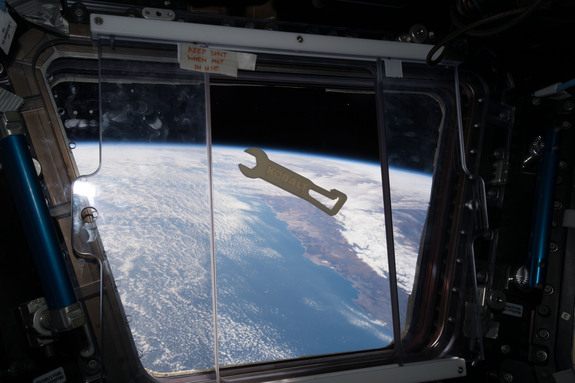
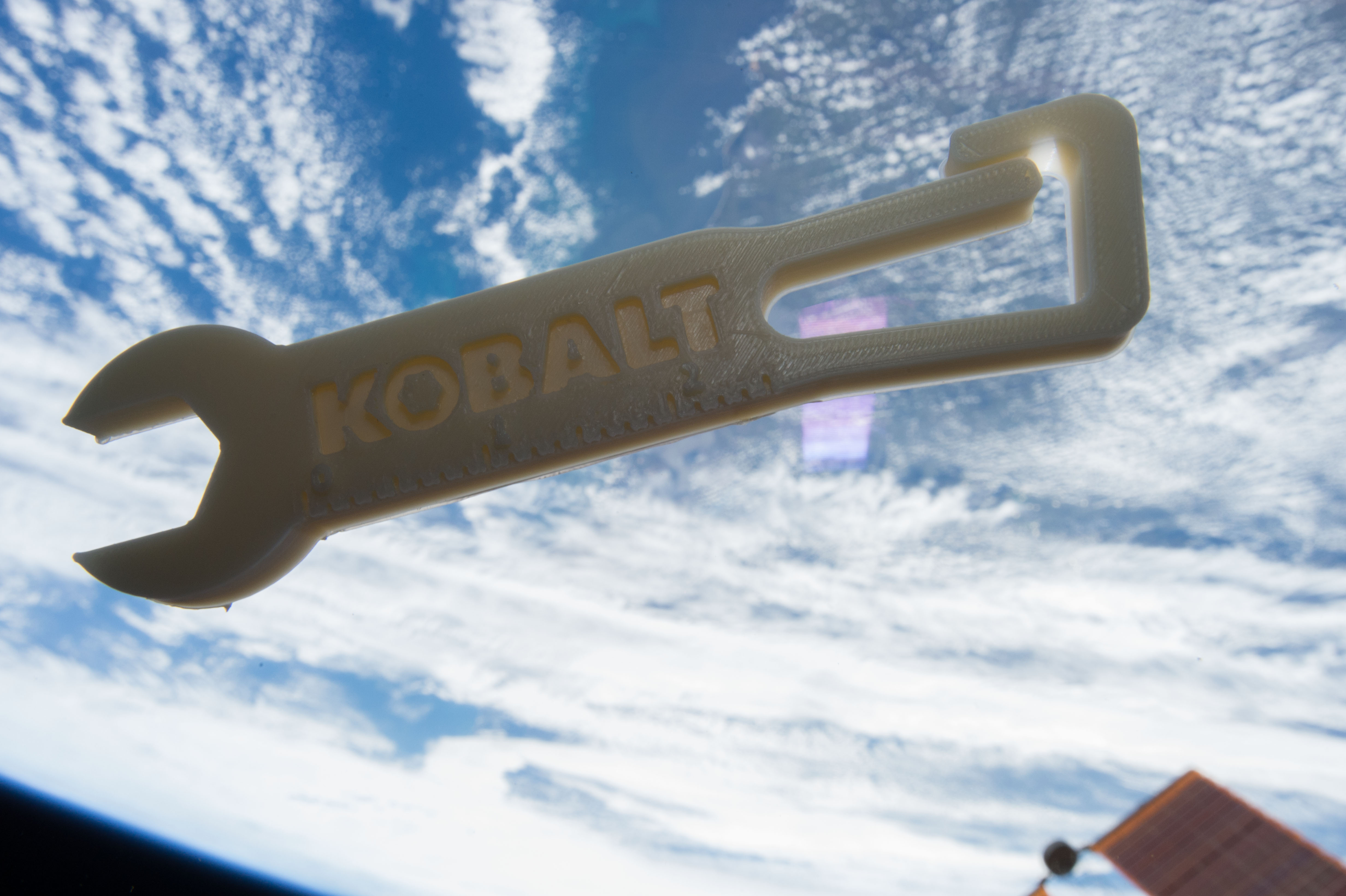

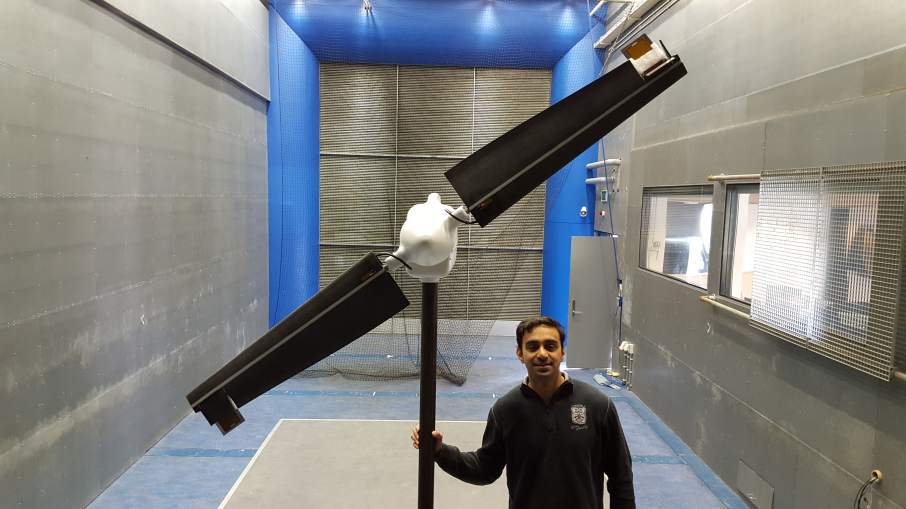
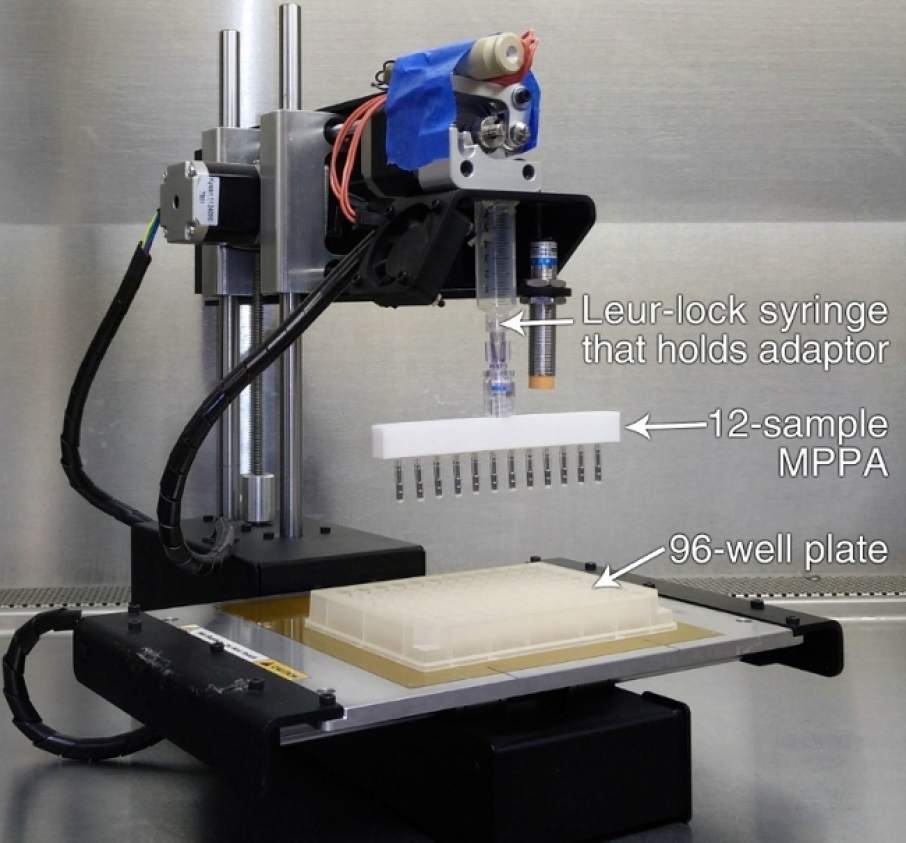

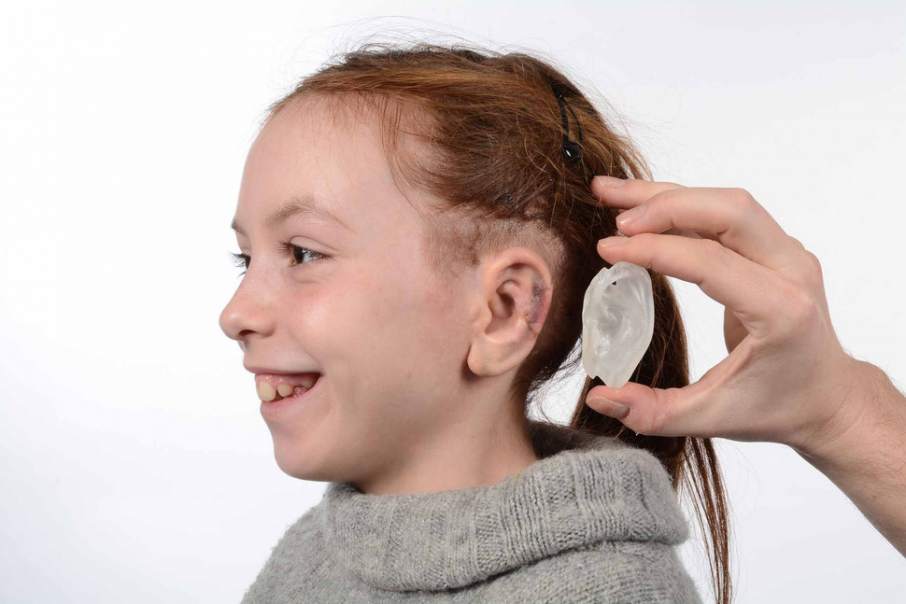


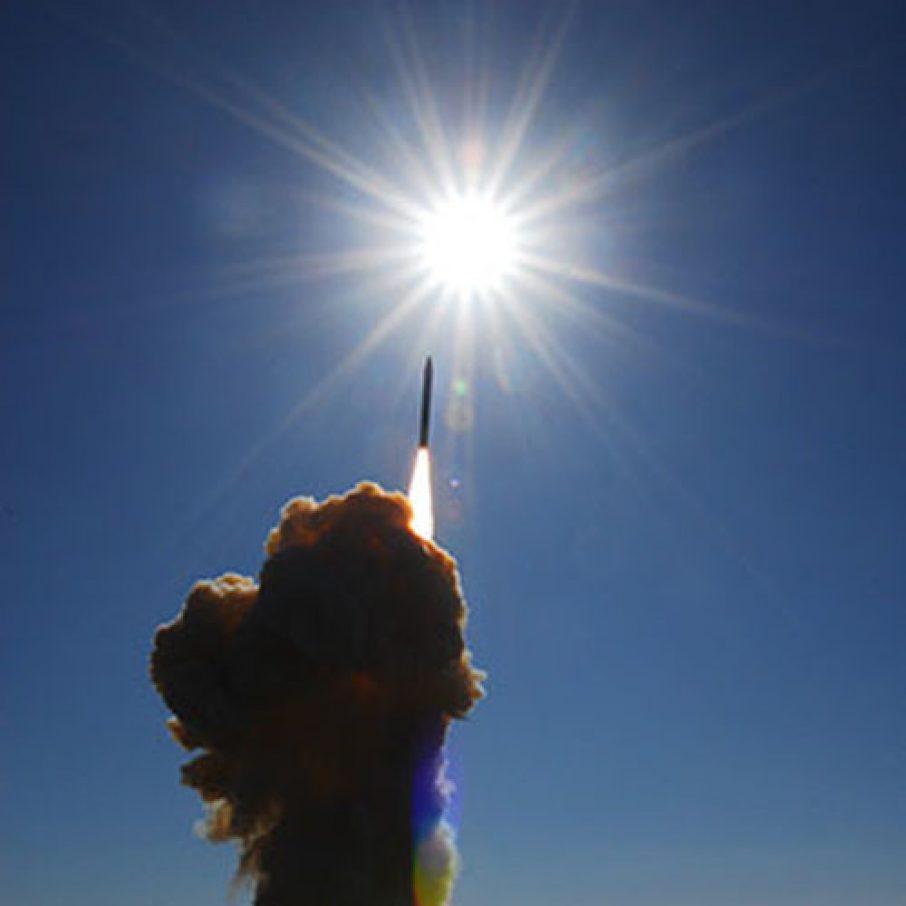



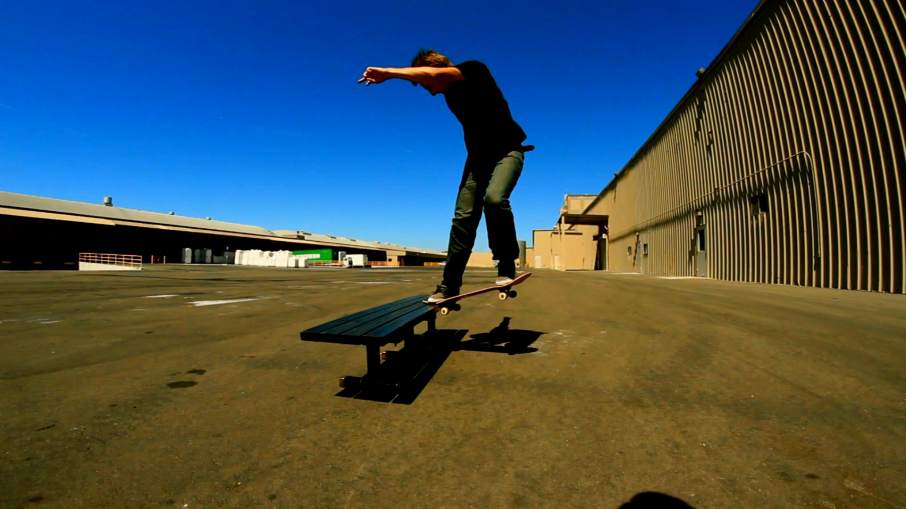


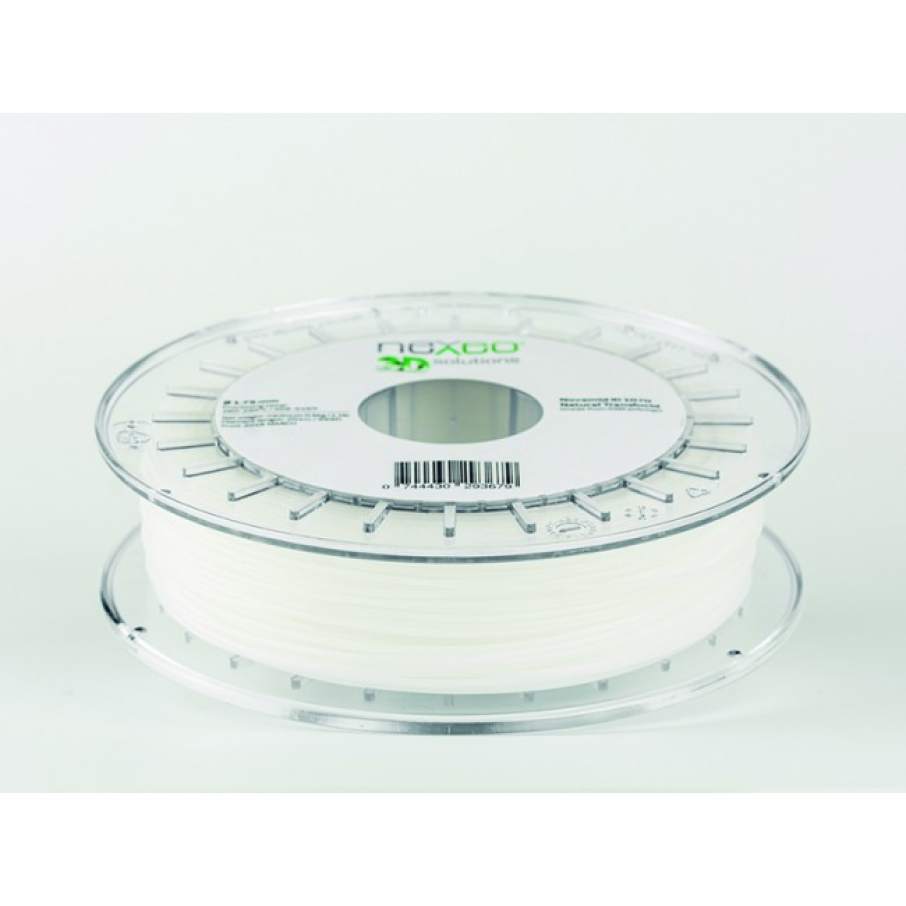
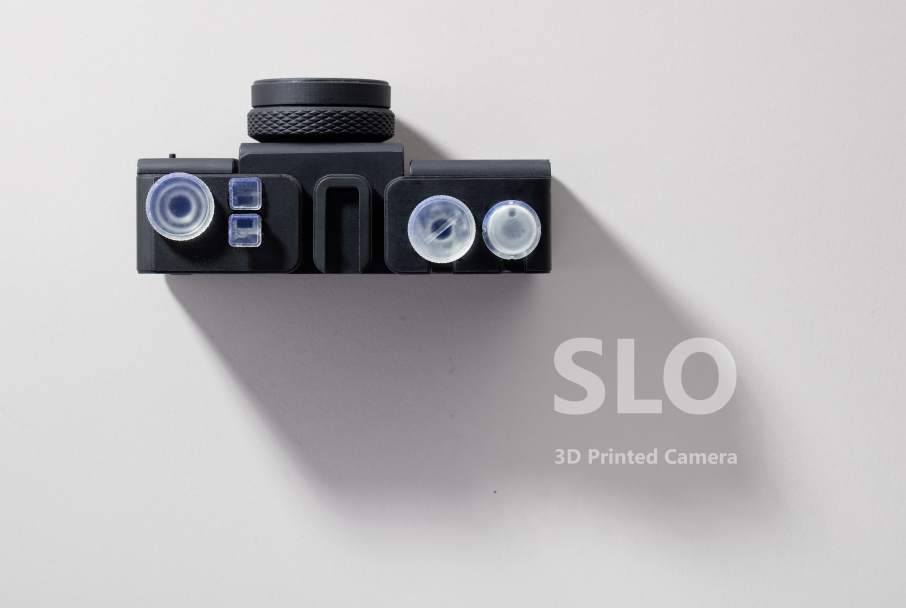

.png)
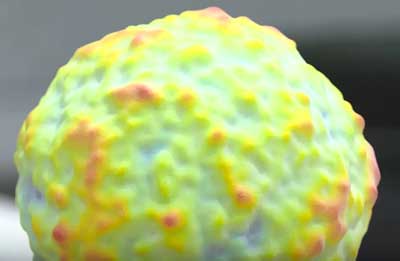
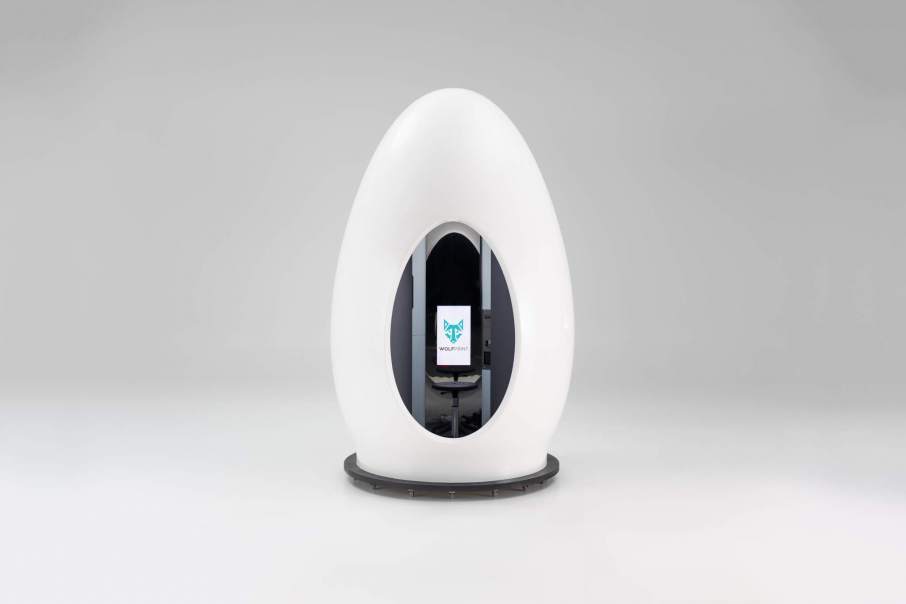
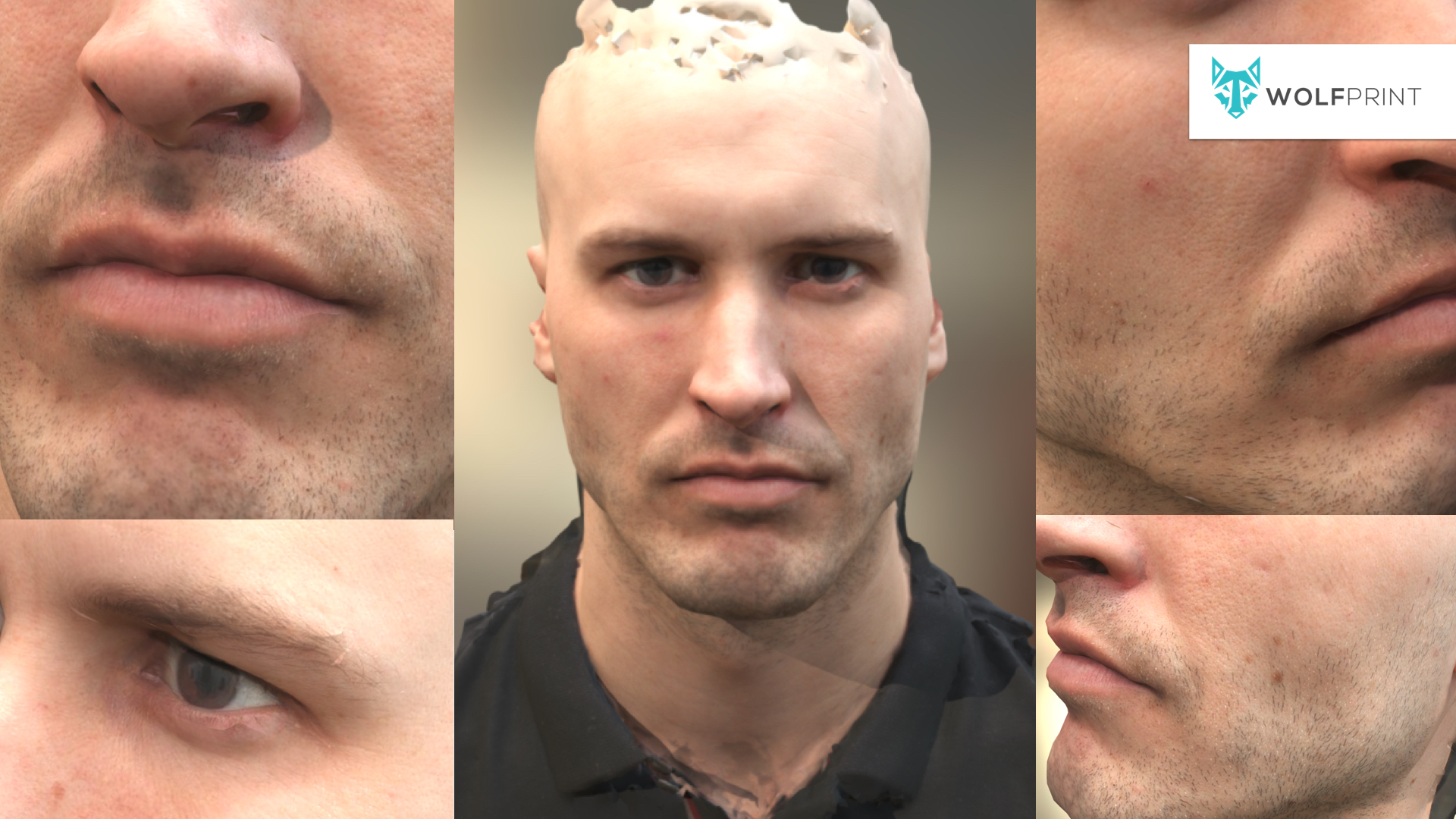
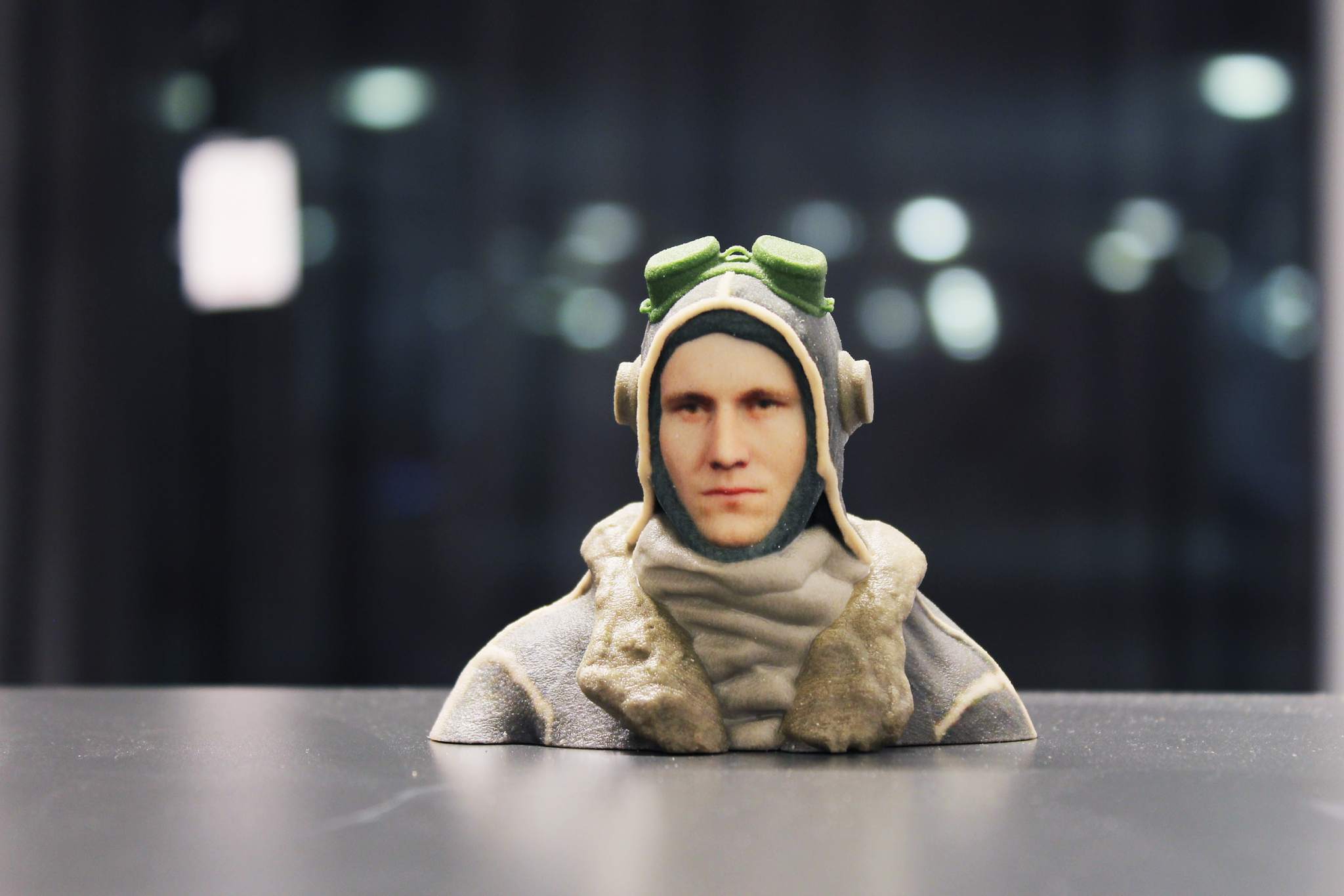
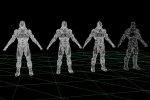

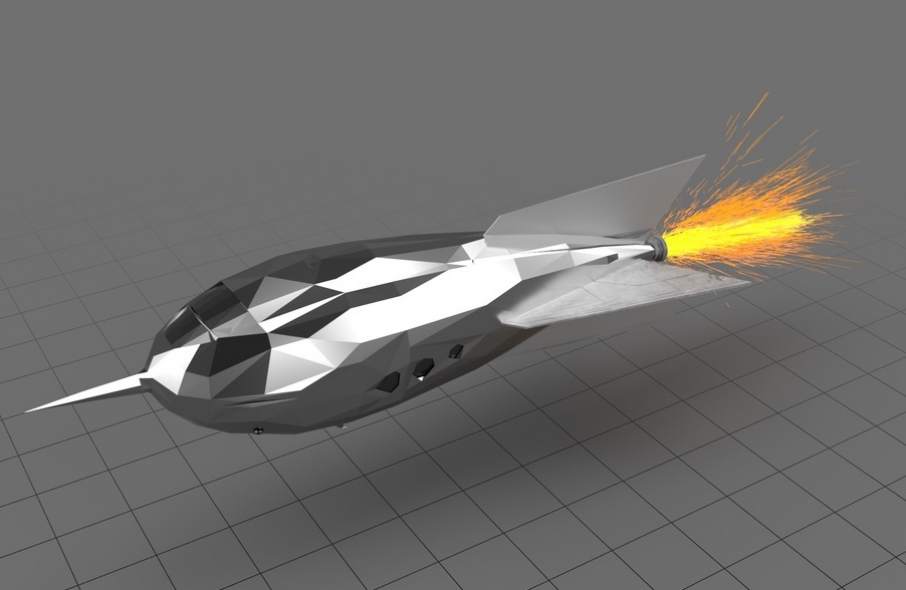
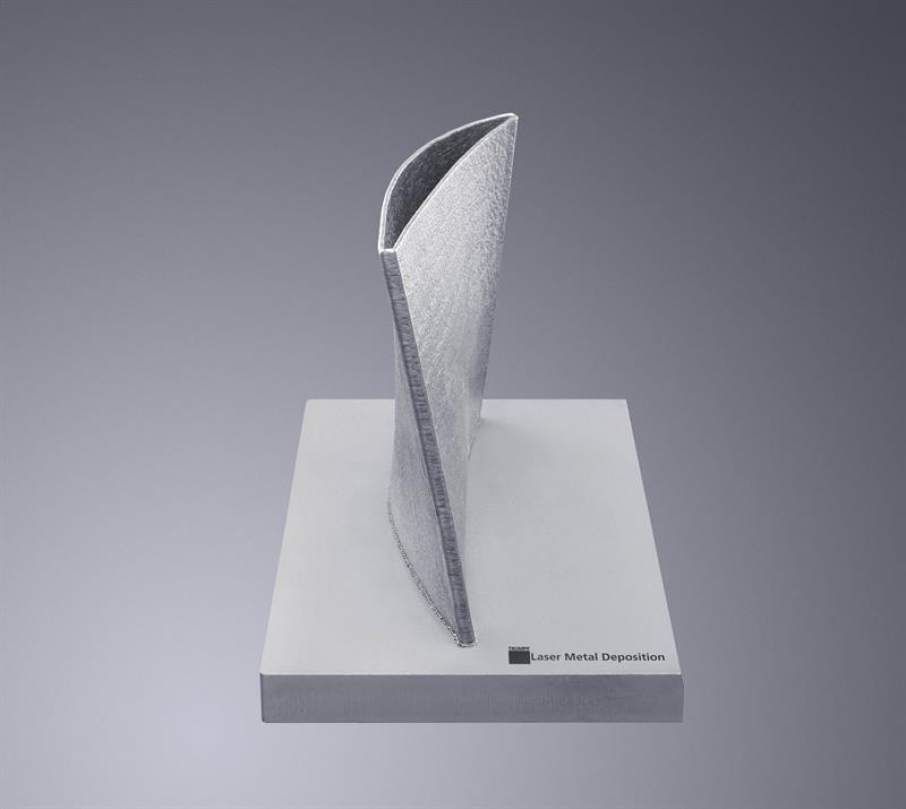

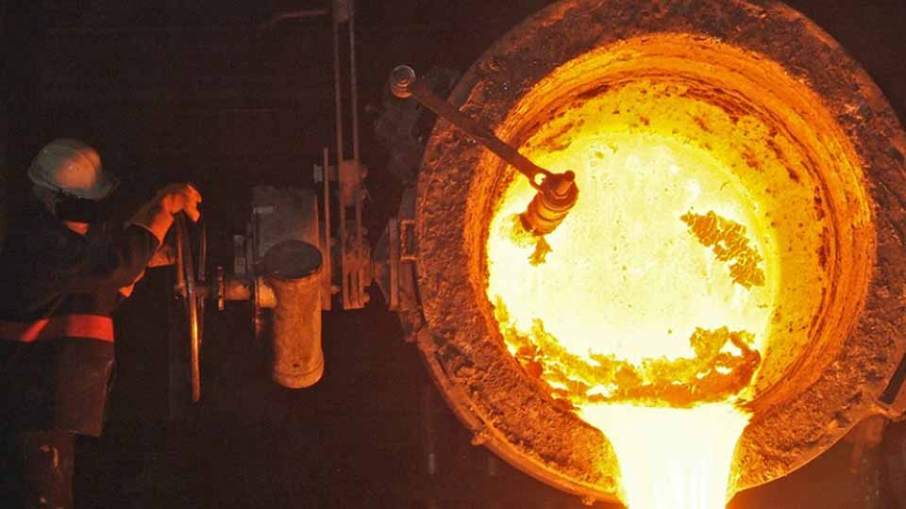
.jpg?cache=1490281625766)

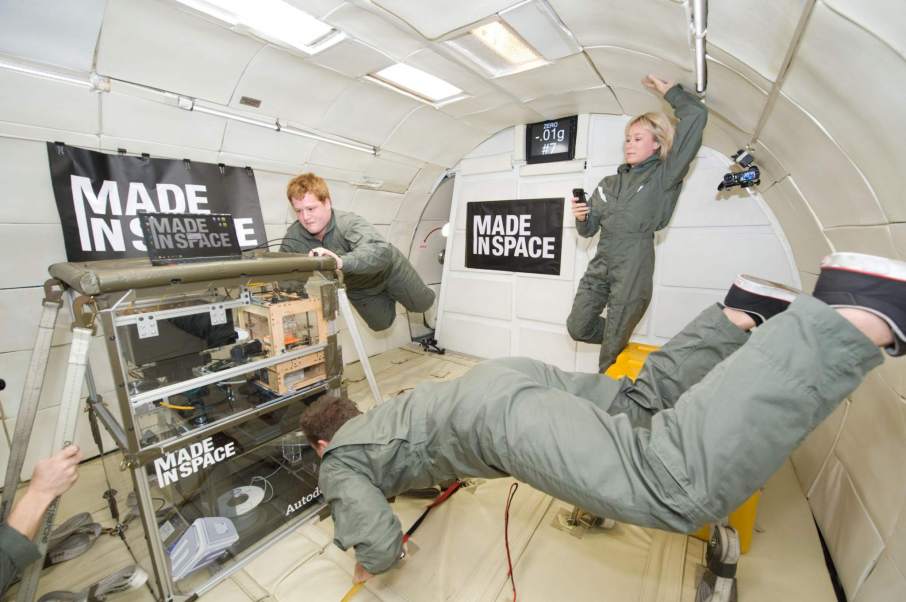

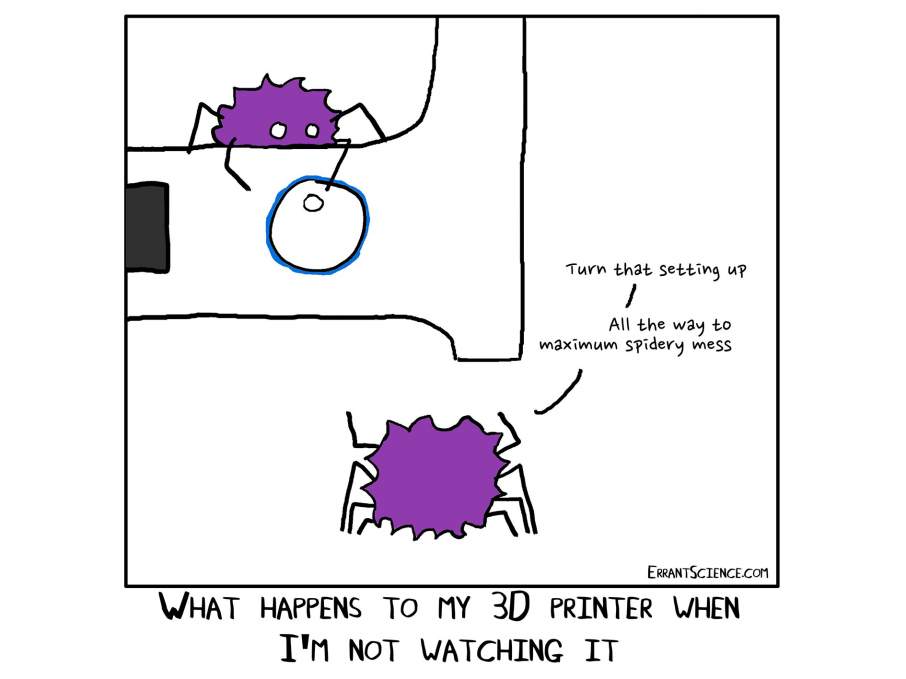
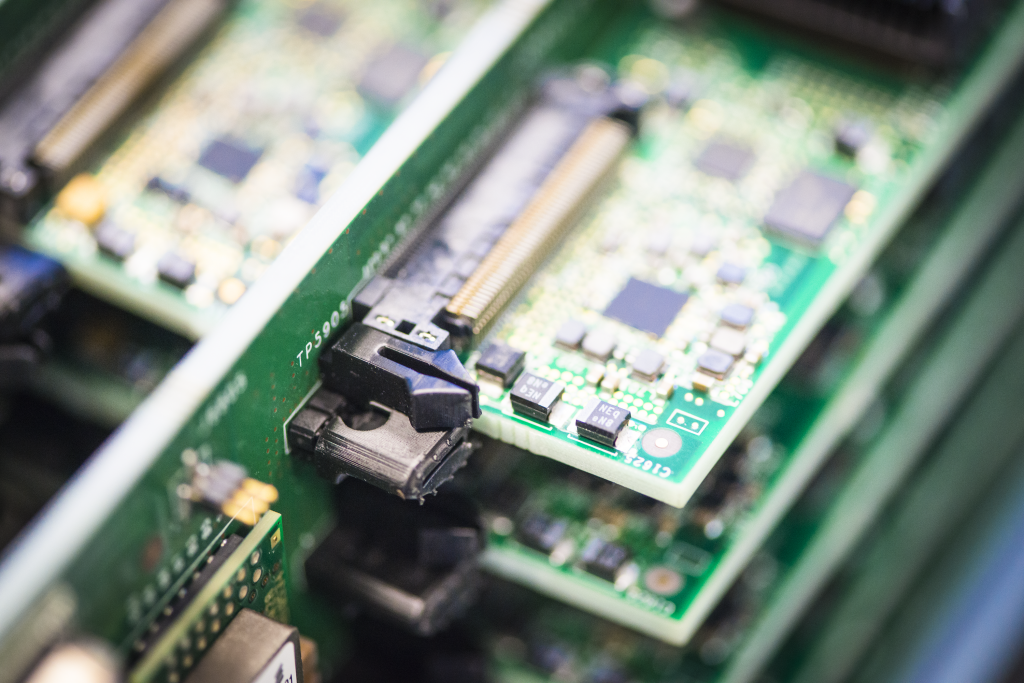
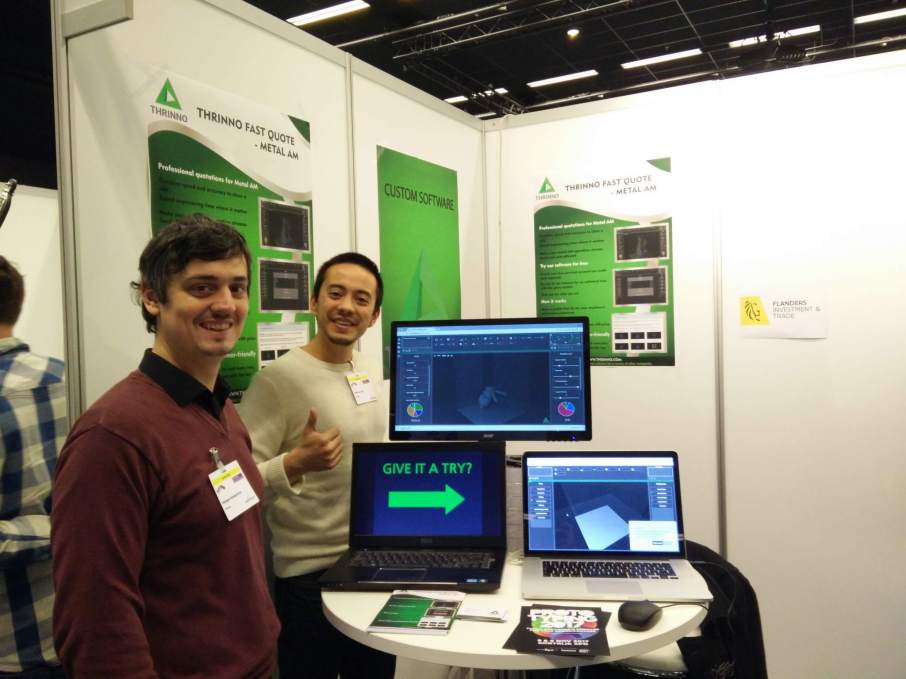

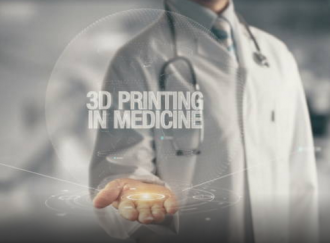


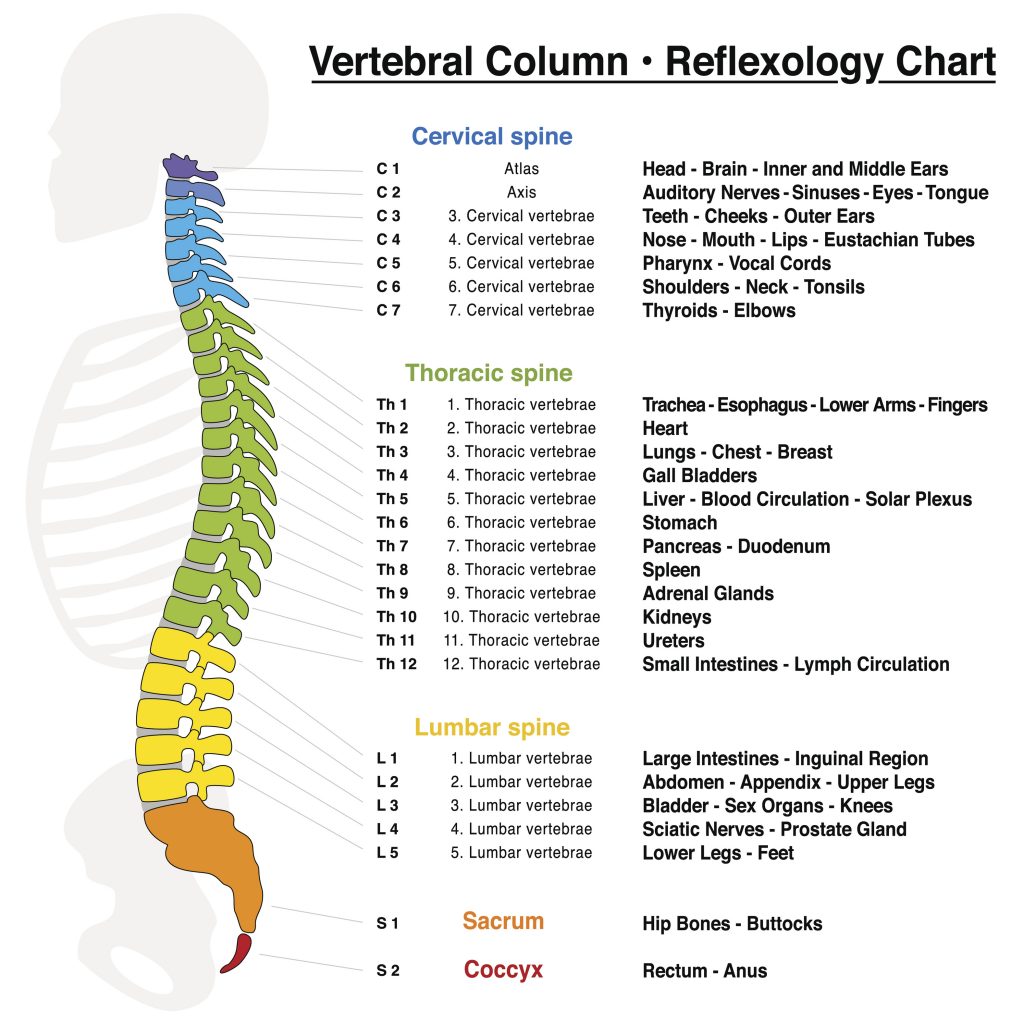
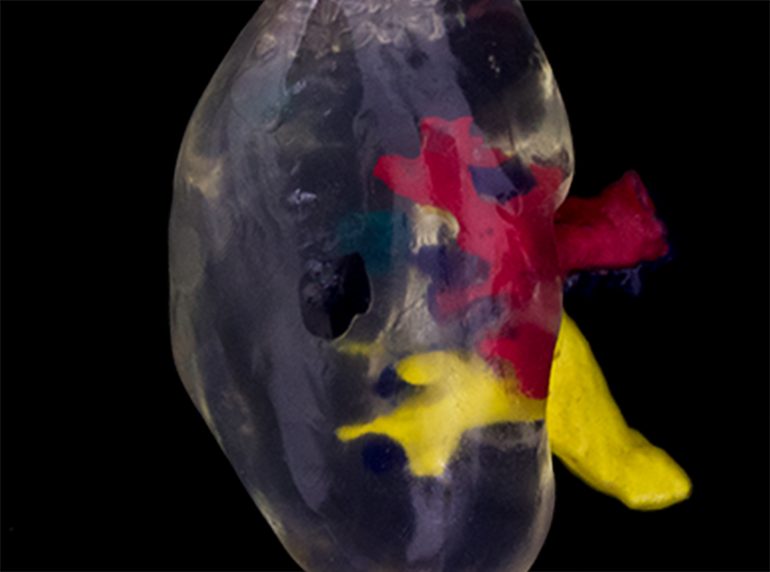

.png)
